

Ultimate SOUTHEAST ASIA Travel Guide
Southeast Asia is a fascinating part of the world that offers beautiful islands, beaches, lush jungles, unique wildlife, tasty food and intriguing culture. This Southeast Asia travel guide is designed to uncover some of our favorite places and things about this region and help you plan your own trip to this unique part of the world.
Defining Southeast Asia can be referred to as the region that resides between Asia and Oceania . It is made up of eleven countries including Brunei, Cambodia, East Timor, Indonesia, Laos, Malaysia, Myanmar, Philippines, Singapore, Thailand and Vietnam.
These countries are bordered by China to the North, Australia to the South, the Andaman Sea to the West and the Pacific Ocean to the East.
We’ve spent more time in Southeast Asia than we care to admit, thinking hard on it we’ve spent no less than 9 months traveling the region over multiple trips at the time of publishing this guide.
We’ve visited across all seasons and while we haven’t been everywhere or to every country (yet!), we’ve done enough leg work to offer you some useful insight on travel to Southeast Asia.
Destinations
Southeast asia travel: quick tips, don’t visit southeast asia without:.
UNIVERSAL TRAVEL ADAPTER

GET A GUIDEBOOK

REUSABLE WATER BOTTLE

SOUTHEAST ASIA BUCKET LIST
Philippines island hopping.
Hopping islands in Coron is one of the best things to do in the Philippines or even Southeast Asia for that matter. You’ll experience white-sand beaches and turquoise waters set against green island interiors. It’s idyllic and one of our favorite places in the world.
DISCOVER THE ANGKOR TEMPLES
One of the most impressive ruin sites we have ever seen is the Angkor Temple Complex in Cambodia. We’ve even been twice! Angkor Wat is the most impressive but we enjoy checking out the temples that have been reclaimed by the jungle too.
SEE WILD ORANGUTANS
Southeast Asia is the only place in the world where Orangutans still exist in the wild. It is possible to track orangutans in Sumatra , Indonesia and Sepilok Borneo . Both are off the beaten track but worth the effort. We’ve seen orangutans in both places!
MORE THINGS TO TRY IN SOUTHEAST ASIA
There is no shortage of great things to do in Southeast Asia during your visit and the biggest problem you’ll face is fitting them all into your itinerary.
Each country has its own offering and unique things to check out during a visit, so be sure to look at our country guides once you decide where you’re itinerary will take you.
SPEND SOME TIME IN BANGKOK: (Thailand) Bangkok is the first city in Southeast Asia that we ever set foot in and that was back in 2010 when we went on our honeymoon! We’ve been back to the city 7 times since then and always recommend it to people who want to visit the region. It’s a huge, sprawling megacity with as much modern convenience as you’d find in any major western city. Combine that with the amazing food, Thai culture and abundance of temples and you pretty much have the perfect city.
TOUR TEMPLES IN CHIANG MAI: (Thailand) Heading north is a popular part of most people’s Thailand itinerary and Chiang Mai is worth the effort. The heart of the city lies within a wall with a surrounding moat and touts a series of beautiful temples to explore.
GET A BAMBOO TATTOO: (Thailand) This isn’t for everyone, but if you’ve thought about getting a bamboo tattoo in Thailand , just do it! Both of us did and have nothing but positive things to say about the whole experience.
VISIT THE PHI PHI ISLANDS: (Thailand) One of the most beautiful chain of islands in the Andaman Sea, the Phi Phi Islands are worth a visit despite the harsh backpacker vibe they portray. Yes, backpackers flock here, but there are also plenty of nice resorts to stay at and other islands to tour during the day that are nearby.
TEMPLE HOP IN BAGAN: (Myanmar) (England) Alongside the Angkor Temples in Cambodia, Bagan is the most impressive temple complex in Southeast Asia. Covering 40 square miles, this complex offers up impressive temple structures from three distinct time periods. Our biggest piece of advice? Give yourself at least 3 days to see the best it has to offer.
UNWIND IN PENANG: (Malaysia) The island of Penang, which sits off the western coast of Malaysia, may just be our favorite island in Southeast Asia. It’s a place that blends tropical jungles with white sand beaches and old-world history with Asian culture. It has a little bit of everything and we that is why we love it. From the street art and amazing good in Georgetown to the Monkey beach trek in Penang National Park , we’d visit a hundred times over and never be bored.
TOUR KUALA LUMPUR: (Malaysia) We won’t lie, we have a love, hate relationship with Kuala Lumpur but that doesn’t stop us from going back. The city has a lot of offer travelers, including a delicious food scene, great architecture and the famed Batu Caves just outside the city.
LEVEL WITH HISTORY IN PHNOM PENH: (Cambodia) Travel is so much more than lying on beaches and touring sites, it’s a valuable window into the past too. If you find yourself in Phnom Penh it is worth your time to learn more about the Khmer Rouge genocide that happened in parallel with the Vietnam War. The museums and killing field sites are sobering but a necessary part of learning world history when you travel.
DO THE BUFFALO RUN IN VIETNAM: Starting in Hanoi, the Buffalo Run tour takes you off the beaten track and deeply explores the very best of Vietnam, north of the demarcation line. This is not a well-traveled path, so you’ll feel like you’re the only one there. You’ll stop off in places like Cuc Phong National Park, Trang An, Phong Nha, the DMZ, Vinh Moc Tunnels, Hue and Hoi An.
CRUISE AROUND HALONG BAY: (Vietnam) One of the best things to do in Vietnam is to cruise Halong Bay and for good reason, it’s gorgeous! Massive limestone karsts grow out of bright green seas paired with island accommodation and white sand beaches. It’s a great way to unwind, especially if you have jetlag from the flight to Southeast Asia.
WATCH WILDLIFE IN THE AMAZON OF THE EAST: (Borneo) We are total suckers for a thick rainforest and Borneo delivers. The island is literally known as the Amazon of the East and features some of the most incredible primary rainforests you can find on the planet. With that comes some incredible wildlife viewing, it’s a birders paradise with more than 688 resident and migratory species. You can also see the endemic Proboscis Monkey, orangutans and if you’re really lucky some pygmy elephants.
GO SCUBA DIVING AT SIPADAN ISLAND: (Borneo) If you’re a scuba diver then you likely already know about Sipadan Island . It is arguably the best place in the world for diving and we do not disagree. Pair it with the incredible muck diving and manta cleaning stations around nearby islands like Siamil and Mabul to make the ultimate dive trip in Southeast Asia.
TRACK KOMODO DRAGONS: (Indonesia) There is only one place in the entire world where the world’s largest reptile, the Komodo Dragon , still lives in the wild. This is the Komodo Islands in eastern Indonesia. Not only are these islands absolutely stunning, seeing the dragons is a once in a lifetime experience too. It’s not possible to stay on the islands, so be sure to book yourself a Sailing Komodo Island tour when you arrive in-country.
GET OFF THE GRID IN RAJA AMPAT: (Indonesia) Located off the coast of the remote island of Papua, Raja Ampat is part of Indonesia’s West Papua province. This place is a straight-up paradise. It offers insane jungle hiking through untouched forests, island views, rich culture and some of the most pristine coral reefs we have ever seen. It’s hard to get to and expensive but oh so worth the effort.
EXPLORE BALI: (Indonesia) If you’ve never been to Indonesia before, we’d happily recommend Bali be added to your itinerary. It is one of those Southeast Asia classics that shouldn’t be overlooked. From the beaches in Kuta, the islands of Nusa and the rice terraces that surround Ubud , there are plenty of things to do in Bali during a visit.
CATCH A SUNRISE AT BOROBUDUR TEMPLE: (Indonesia) Another temple, I know, but this one is spectacular and worth the visit. Catching a Borobudur sunrise is almost otherworldly and worth the 3am wakeup call to see buddha silhouettes against volcanos erupting against the sunrise. The temple is located on Java island, not far from Yogyakarta.
FOODIE BUCKET LIST
Southeast Asia is a foodie’s paradise, and the region is an incredible palace to eat your way around. In fact, a big part of Southeast Asia travel is the food, so don’t be afraid to try the local stuff!
Thai cuisine needs no introduction, and Malaysian food is possibly the most underrated in the world. There are lots of curries and noodle dishes, with a great mix of Malay, Chinese, and Indian cuisine to try.
Burmese food involves more curry and noodles, while Vietnam is famous for Bahn Mi and Pho . Indonesia has its fried rice and rendang. Singapore is home to some of the world’s only Michelin-starred street food stalls !
SOUTHEAST ASIA FESTIVALS
Southeast Asia is packed with events and festivals throughout the year, and every country has unique celebrations to offer visitors.
In Vietnam, the biggest celebration is Tet , the New Year in February. Chinatowns everywhere celebrate Chinese New Year around the same time.
In Thailand, you can visit the famed Songkran , a water festival that brings in the Thai New Year in April.
In Bali, you can find processions and parades throughout the year, while in March, the Day of Silence is a unique local occasion to be part of.
The Philippines has more local festivals than anywhere else, a throwback to their Spanish ancestry. The major ones are Sinulog in January and Holy Week before Easter.
Pack like a pro on your trip to SOUTHEAST ASIA!
Popular regions in southeast asia, mainland west.
Thailand is a Southeast Asia travel destination that needs little introduction. The Land of Smiles is home to beautiful islands in the south, rugged mountains in the north, and of course, the thrilling capital, Bangkok. There’s sun, there’s sand, there’s culture, and there’s great food. Myanmar is little visited compared to its Southeast Asian neighbors, but the county recently began to open up to tourism and saw a boom when it did. Myanmar is unlike anywhere else in the region. Explore ancient Buddhist pagodas, visit the cultural climes of Mandalay and see the fading colonial ruins in Yangon .
Malaysia and Singapore are home to the best food you could eat when you travel to Southeast Asia. Visit the foodie stalls and white sand beaches of Penang , and the modern sights of Kuala Lumpur before heading south to Singapore – one of the most modern and exciting cities in the world.
MAINLAND EAST
The eastern mainland is made up of Laos , Cambodia , and Vietnam . Aside from their shared French-colonial history, these countries couldn’t be more different. Vietnam is the rising star of the region, offering an epic adventure if you travel between Hanoi and Ho Chi Minh City. See the scars of the Vietnam War and explore the magnificent nature, scenery, history, and delectable food that this modern nation offers. In Cambodia , a trip is inseparable from the harrowing past ; you’ll learn about the Khmer Rouge as soon as you land in the capital. You can visit the ruins of Angkor Wat or head to the beaches of Sihanoukville. Laos is untouched, but who knows how long it will stay that way. One of the poorest and most rural countries you could visit when you travel to Southeast Asia, Laos is also the most unexpected.
Borneo is one of the world’s largest islands and this unique destination is home to some of the best rainforests on the planet. Borneo offers hiking, mountain climbing, beaches, and diving . The island is divided between three countries: there’s Malaysian Borneo in the north and tiny Brunei. The south is Kalimantan, an Indonesian province.
THE ISLANDS
If you’re looking for island hopping opportunities, snorkeling, diving, and diverse culture, then Indonesia or the Philippines are the best countries to include in your Southeast Asia travel itinerary. Indonesia has Bali , one of the region’s most popular islands, but there’s also the culture and history of Java, relaxation, and slowness on Lombok , the wild nature of Sumatra or Komodo , or the beautiful marine life of Raja Ampat . The Philippines is beautifully diverse, home to the highlands and rice terraces of the Cordilleras, but also the rugged islands of Palawan , including the stunning and popular Coron and El Nido . We will not lie, Indonesia and the Philippines are our two most beloved countries in Southeast Asia. We’ve been back to visit them both, multiple times, and it’s the first place we head each time we return to the area.
SOUTHEAST ASIA TRAVEL BUDGET
Setting a budget for travel to Southeast Asia is highly dependent on your travel style. It is possible to visit just about anywhere across the continent on any budget and still have a great trip. That said, you can make your trip as basic or as luxurious as you desire.
To help you set your budget, we’ve included some base range price estimations for Southeast Asia travel. Of course, keep in mind that prices can fluctuate based on seasons, availability and festivals.
If you’re looking to travel on a budget, be sure to check out the 12 Tips on How to Travel Cheap before you start planning.
ACCOMMODATION: Accommodation is good value when you travel to Southeast Asia. Guesthouses, hostels, and homestays will cost between USD 10 and USD 20 per night (less if you don’t care about the cleanliness). Private rooms can be between USD 20 and USD 50. Above this price range, you can find more luxurious accommodation . Popular resort destinations in Thailand or Bali will charge USD 100 or more per night for fancier hotels.
FOOD: Food is incredibly inexpensive in Southeast Asia; you can find local eats for as little as USD 1 per plate in most countries. Prices go up in touristy destinations (we’re looking at Thailand and Bali again) and western-style restaurants. You still won’t often pay more than USD 10 per meal , however.
TRANSPORT: Local transport is affordable across Southeast Asia, and international transport is equally cost-effective. Buses and trains vary in standards and prices. Local transport will be just a few dollars for day-long journeys, but you pay more for comfort. Mopeds can be hired for between USD 5 and USD 10 per day. Budget international flights can be as low as USD 30 if booked in advance for a two-hour flight.
ACTIVITIES: Activities vary in cost from country to country but expect to pay between USD 30 and USD 70 for a day of diving . You can enjoy a boat tour for around USD 30 a day, or hire trekking guides for a similar price. For the most part, activities are very cost-effective in comparison to western prices.
20 USD PER DAY
Living in hostels, lounging on beaches, and eating local food. If you’re looking to include many destinations in your Southeast Asia travel plans, or want to enjoy lots of day trips and activities, raise that budget to USD 50.
50-100 USD PER DAY
Midrange travelers will be able to enjoy the comforts of private rooms and guesthouses, taxi rides, and tourist buses. You can enjoy street food, restaurants, and plenty of activities. Your money will go far on this budget and you won’t miss much.
200 USD + PER DAY
Luxury travelers can get a lot for their money when they travel to Southeast Asia. Stay in premium resorts in Bali, Borneo, or the Thai Islands. Enjoy restaurant-quality food, private day tours and drivers, and plenty of spa treatments!
WHERE TO STAY IN SOUTHEAST ASIA
Below you will find some of the places we have stayed during our travels in Southeast Asia. These are individual properties that we enjoyed and would recommend to other travelers.
For more in-depth information, be sure to check out the following articles:
- Where to Stay in Bangkok: Best Districts & Hotels
- INAYA Putri Bali Nusa Dua: Resort Review
PLANNING TO BACKPACK SOUTHEAST ASIA?
Southeast Asia is an extremely popular destination for backpacking because you can do a lot throughout the region on a very small budget. We’ve experienced this region on both the high end and budget side, including spending 6 months backpacking during our 2 year RTW trip .
If you’re looking for some breakdowns on how we did this, check out the overviews below.
HOW TO GET AROUND IN SOUTHEAST ASIA
If you’re traveling around mainland Southeast Asia, you can cross most borders overland. You could travel all the way from Hanoi to Singapore overland using buses and trains. The transport varies from cheap, slow local buses to faster, luxury sleeper buses and trains.
The same applies to the Philippines and Indonesia, although you’ll need to combine buses with boats. In the Philippines and Indonesia, you’re often better off flying, as destinations are spread over large areas. If you have time, you can take inter-island ferries.
If you’re visiting Borneo, you’ll need to fly in. You can travel by bus between major cities and destinations in Malaysian Borneo and Brunei, but Kalimanatan is much less developed and more challenging to travel around.
Most land borders into Myanmar are off-limits, so you need to fly into Yangon. From there, you have bus and train connections across the country.
BUS: If time is on your side, there are many instances where taking the bus will be the best option for getting between places. There are usually two classes operating the popular routes, this includes tourist buses and local buses. Tourist buses are usually comfortable coaches with AC and WIFI. Local buses will be rough and not have AC. Both will get you where you need to go.
FLIGHTS: Thanks to budget airlines like Air Asia, Southeast Asia is incredibly well served by low-cost carriers offering regular flights and cheap fares. Major cities, and increasingly, many more regional airports, have connections between one another. In most cases – particularly over longer distances – flying is cheaper than taking the train or bus.
TOP SOUTHEAST ASIA TOURS
Iconic thailand.
15 Days from Bangkok, Thailand Visits: Chiang Mai, Ayutthaya, Kanchanaburi, Khao Sok, Ko Samui, Krabi & Bangkok
EXPLORE VIETNAM
13 Days Hanoi to Ho Chi Minh City Visits: Hanoi, Halong Bay, Mai Chau, Hue, Hoi An & Ho Chi Minh City
DISCOVER SOUTHEAST ASIA
18 Days Bangkok to Siem Reap Visits: Bangkok, Chiang Mai, Luang Prabang, Hanoi, Halong Bay, Ho Chi Minh City, Phnom Penh & Siem Reap
WHEN TO VISIT SOUTHEAST ASIA
Southeast Asia is a vast area that sprawls over both sides of the equator. For the most part, you can expect countries to be hot, humid, and tropical when you travel to Southeast Asia – but this isn’t always the case.
The north of Vietnam is much more temperate and has cold winters, while the same can be said of Myanmar’s northern mountains. However, most areas you will visit during your Southeast Asia travel itinerary will have distinct wet and dry seasons .
North of the equator, the dry season is usually November to April. Most of Indonesia, however, has its dry season from May through to October. The dry season is the best time to explore Southeast Asia; there’s little chance of rain and thunderstorms, and the visibility if you’re snorkeling or diving is perfect.
Even in Indonesia, peak season is from November through to January, and tourist numbers and prices increase dramatically over the Christmas holidays. Try to travel in the shoulder seasons instead;, you might get a little rain, but you’ll escape the worst of the crowds.
For more in-depth information, check out:
Best Time to Visit Bali: Month by Month Breakdown
Best time to visit the philippines: month by month breakdown, inspiration for your next southeast asia trip, safety in southeast asia.
Southeast Asia travel is generally safe, even for first-time travelers (which is why it’s a popular backpacking destination). In touristy destinations, however, you do need to be super-careful of scams and low-level thievery.
This is especially so in places like Bali and Bangkok. On buses, try to keep your belongings close and safe, and on the party islands in Thailand, be careful! Take our advice and be sure you’re prepared. Check out 25 Essential Safety Tips for Travel
Each county has its own laws and customs, so read up before you cross the border. What goes in Thailand might not be so welcome in Malaysia. Some countries are Muslim, others Buddhist, and some Christian – it’s a diverse region!
For personal experiences, check out:
- 5 Reasons Why Bali Is Not the Paradise You Think It Is
- Culture Shock: Our First 24 Hours in Bali
SOUTHEAST ASIA TRAVEL: BOOKING RESOURCES
Southeast asia travel guide: related articles.
Looking for more info? Check out all the articles we’ve written on travel to Southeast Asia and start planning your dream trip.
What To Do in Chiang Mai, Thailand (18 Amazing Attractions, Festivals & Food)
24 amazing malaysia attractions you cannot miss, essential el nido palawan guide: what you need to know, ultimate philippines itinerary for 10 days, 2 weeks or 3 weeks, 21 incredible things to do in the philippines, 15 essential things to do in boracay, 15 stunning things to do in palawan, philippines, ultimate puerto galera, philippines guide: diving & beaches, busuanga island palawan: ultimate guide to the last frontier, culion island palawan: is this the next philippines hot spot, kayangan lake in coron: the philippines most famous photo spot, 15 incredible islands in coron you must visit in the philippines, 20 beautiful places in the philippines for your bucket list, what to wear in bali: the ultimate packing list, 15 awesome things to do in manila (itinerary for first time visitors), 15 best things to do in yangon, myanmar, 35 amazing things to do in southeast asia (across 7 countries), 25 epic & best places to visit in southeast asia, 21 epic things to do in bali.

12 tips for your first trip to Southeast Asia

Editor's note: The team at The Points Guy loves to travel, but now is not the time for unnecessary trips. Health officials note that the fastest way to return to normalcy is to stop coming in contact with others. That includes ceasing travel. We are publishing travel deals and destination content because we should all use this time to think about and plan our next adventures. TPG doesn't advise booking trips for travel until summer or fall — and even then be mindful of cancellation policies. This story has been updated with new information.
Southeast Asia is one of the most magical regions on earth. Filled with stunning beaches , historic temples, verdant jungles and bustling cities, there's something for every traveler there. But staying healthy and safe is something to consider when visiting a region so different from your own, especially for the first time. Things like visa requirements , best times to visit, currency exchange and what to bring may be at the top of your mind, as well as the most obvious question -- which country should you visit?
After a number of long-term visits over the years to varying countries in Southeast Asia, I've learned a thing or two. Beginner travelers should check out these travel tips and follow this Southeast Asia travel advice when considering a visit to the region for the first time.
1. Pick your countries wisely
While it's tempting to visit many countries and cities on a single trip to Southeast Asia, it's worth taking it slow and digging into the culture of a single country and/or just a handful of places, rather than exhausting yourself with a travel itinerary that has you hopping all over what amounts to an enormous territory.
For example, Bali , Indonesia and Hanoi, Vietnam , are both set within Southeast Asia, but beware -- they're a seven-hour flight away from each other. Before you commit to flights and accommodation , pull out the map and choose countries/cities that are relatively close together or are easily accessible by nonstop flights or direct trains.

When deciding on the best country to visit in Southeast Asia, you should also take into account whether you want to explore cities, relax on beaches, see the outdoors or embrace culture, cuisine and history.
The best country to visit for beginner travelers could be Thailand. First-time visitors to the region may also enjoy Bali, Indonesia. Both of these spots are used to an influx of tourists and have plenty of amenities. They're both relatively easy to navigate and have friendly locals that speak English.
More experienced travelers or those wanting an adventure may prefer spots like Myanmar, Malaysia or Laos. While almost all Southeast Asia destinations welcome backpackers with open arms, Cambodia is very backpacker-friendly -- and is extremely affordable, especially outside of tourist destination Angkor Wat. Those wanting to lap a country from top to bottom should head to Vietnam. For unexplored beaches, visit more off-the-beaten-path islands in Indonesia (that aren't Bali) or the Philippines .
Related: 9 of the best sustainable backpacks for travelers
2. Check visa requirements
Several Southeast Asian countries require your passport to have at least six months' worth of validity left or a specific number of empty pages -- and visa requirements seem to be constantly changing. For example, a few years ago, e-visas weren't available online for several entrance points in Myanmar, but now they are. Meanwhile, Vietnam has changed its visa requirements in past years and now citizens from several European countries no longer need a visa to enter.
Check visa requirements ahead of time and apply online if possible. For example, U.K. nationals will find that applying for a visa to enter Laos online is relatively straightforward and can ease hassle upon arrival, especially when you're jet-lagged in a new and unfamiliar country.

If you do end up needing a visa upon arrival at your chosen destination(s), be prepared with the proper currency and passport-size photos of yourself. Many airport visa offices have ATMs/exchange services (albeit with terrible rates) and photo booths, but if you arrive with these items in hand, as well as any forms you might need printed and filled out ahead of time, the visa experience will be quicker and easier.
Also, be sure to grab a couple of extra entrance and exit forms each time you enter a country -- if you end up leaving and reentering that country by bus, boat or train, having the correct forms handy will enable you to save time you'd otherwise spend in a line.
3. Pack light and right
Deciding what to bring to Southeast Asia is a common conundrum. Try to pack as light as possible and do laundry wherever you go rather than trekking around with an overweight backpack or heavy trolley bag. In most Southeast Asian countries, you can get your clothes washed, dried and ironed in under 24 hours for the equivalent of a couple of dollars, and at street markets, you can shop inexpensively for any extra clothes and toiletries you may need.

These are the things you should make sure to pack:
- raincoat/umbrella (especially during rainy season)
- modest clothing covering knees/shoulders for temple visits
- first aid kit (including all kinds of stomach medicines)
- small flashlight
- earplugs/ sleepmask
- hand sanitizer
- travel packs of tissues (note that squat toilets usually aren't equipped with toilet paper)
- adaptor/multi-port plug that allows you to charge a few of your electronics at once
Related reading: 14 packing hacks for traveling with just a carry-on
4. Best times to visit Southeast Asia: rainy or dry season?
You can organize your trip in one of two ways: picking a destination(s) first and then selecting the best time to go, or picking your destination(s) based on what will have the best weather during the time you're able to visit. Most countries in Southeast Asia have two main seasons: wet and dry.
Even certain regions within countries can have separate rainy seasons . For example, if you want to have a beach holiday in Thailand over Christmas, it's better to choose islands in the Andaman Sea, which are sunny, like Koh Lanta or Koh Yao Yai and skip the Gulf of Thailand islands, such as Koh Samui or Koh Tao, where it's rainy season.

If you're visiting larger cities, rainy season may not be so bad. You'll experience a downpour or two for sure, but you may get cheaper hotel deals or better value on airfare. But, it may be best to avoid smaller towns or villages during the wet season where lack of infrastructure during floods may complicate your stay.
It's also important to consider additional seasonal situations -- like burning season, where many Southeast Asian regions burn brush and old crops to prepare for planting. Air quality is bad during this time and may affect tourists, especially those with respiratory problems.
5. Safeguard your health
Before you travel to individual countries, check their vaccine requirements and recommendations -- and then actually get those vaccinations. If you're worried about the expense, be aware that you can opt to get your vaccinations upon arrival in Bangkok , where they're often affordable at local health centers. When traveling to any Southeast Asian country, getting tetanus shots and typhoid vaccines are generally a good idea. In addition to any necessary vaccines, seek out strong mosquito repellent, as this can help protect you from dengue fever and malaria.

6. Get travel insurance
Plan to get travel insurance when visiting the region, because health risks in Southeast Asia don't entirely diminish even if you've had your vaccines. As Southeast Asia trips often include adventures like indulging in street food, zip-lining, scuba diving , jungle treks and motorcycle rentals, it's wise to have a policy in place.

During a previous trip to Thailand, I developed an ear infection from snorkeling . Thanks to my travel insurance, I was in and out of a doctor's office within an hour, complete with medicine and a special souvenir bag (see above) -- all covered by my policy. Years ago in Malaysia, my husband cut his foot on coral while diving and required antibiotics. Having travel insurance made the situation an easy (and free) fix. Insurance policies can also cover non-health-related problems such as lost luggage or issues with flights and hotels, so look into getting the best travel insurance policy for you.
7. Consider alternate travel methods
While we love a good points and miles deal, using trains, low-cost airlines and ferries is a great way to save money while moving from place to place. Buses are generally the cheapest method of transport in Southeast Asian countries, but be aware of travel scams and know that you might be in for dirt, dust, unpleasant (or simply strange) smells, crowds, bumpy roads and more.

Ferries can sometimes be crowded, but are a quick, cheap and a direct form of travel between islands, and though often slow, trains are a fun way to explore and see the lay of the land(s). Low-cost carriers such as AirAsia, Bangkok Airways , Nok Air, Tiger Air and more offer cheap flights to a variety of destinations -- and some even have frequent flyer programs . Though often a splurge in comparison to bare-bones taxi-boat journeys, river cruises are luxurious, scenic adventures and a great mode of transportation.
8. Rent a scooter at your own risk
If I had a dollar for every 20-something I saw with a bandaged knee, chin or foot in Thailand, I would easily be rich. Renting scooters can be a great way to get around, but in some Southeast Asian countries you'll need to drive on a different side of the road you're accustomed to and you may have to battle intense traffic, hills, curves, stray dogs, dirt or sand roads, crazy taxi drivers -- and worst of all, other foreigners driving scooters who are unfamiliar with these conditions. Even though many locals and tourists don't wear helmets, you still should.

Before you head off with a rental scooter, be sure that your rental agent sees you taking detailed photos and/or videos of the bike, and actively point out any scratches or concerns to them. Though scooter rentals are often just a few dollars per day upfront, scooter scams are common, where a rental agent will insist that you've scratched or otherwise damaged their motorbike, charging you hundreds (or even thousands) of dollars in damages before they'll return your passport to you.
9. Be smart about currency exchange
Airports and banks often charge excessive fees to exchange money, but you'll usually get a decent exchange rate if you wait to change money once you're in Southeast Asia. However, know that Southeast Asian hotels generally offer terrible exchange rates, so stick to banks or other spots that advertise "Money Exchange." Make sure to change plenty of cash, as street market vendors, taxi drivers and smaller restaurants may not take credit/debit cards.

Many hotels and larger restaurants will take credit/debit cards though, so make sure to use ones that hold no foreign transaction fees.
10. Avoid "temple burnout"
"Temple burnout" happens when you see so many ornate and beautiful temples that they all begin to look the same -- and you lose interest in seeing any more, ever. To avoid this malady, arrange some non-temple-oriented activities on your Southeast Asia travel itinerary, or simply take a day (or two) off to relax and rest your eyes. After a bit of visual reboot, you'll have a whole new appreciation for a region of the globe that has more amazing temples than you could possibly imagine.

11. Don't be afraid to bargain
You should absolutely bargain with local street vendors or at markets -- it's a cultural norm to do so. I've had some great times bargaining and laughing with street vendors and even made friends with a few locals along the way, coming home with memorable souvenirs for my efforts. Just make sure to barter reasonably and always with a smile on your face. The point of bargaining is to engage with locals and agree on a fair price, not to cheat them or get scammed yourself.

12. Be a responsible tourist
It's best to avoid orphanage tourism, hill tribe visits or any activity that exploits children, ethnic groups or animals. When participating in elephant tourism, make sure to carefully vet your organization and make sure they're protecting the animals in lieu of harming them.
While begging children may tug at your heartstrings, the more money they earn from tourists, the more their parents see them as a source of monetary gain and the less inclined they are to send them to school -- where they'd have a shot at a better future.

When diving/snorkeling or out in nature, make sure to adhere to the no trace policy , not littering or taking anything from delicate natural environments.
If you want to lend real support to locals in Southeast Asia, dine at Tree Alliance restaurants . Located in Myanmar, Cambodia and Laos, these eateries train disadvantaged young adults as chefs and waiters and also donate money to programs that assist low-income locals to get jobs. Offering traditional cuisine, these restaurants provide a delicious way to help.
Related: 5 tourism-supported charities that need your help now more than ever
Or, visit an organization like Big Brother Mouse in Luang Prabang, where tourists can read books, play games or chat with kids and teens eager to practice their English.
Related: How to be a better traveler
Bottom line
Armed with these useful travel tips for Southeast Asia, you'll have a safe, smooth and successful first trip to this beautiful region. Happy travels!

50 Essential travel tips for first time backpackers visiting Southeast Asia
- July 27, 2023
- curious goose
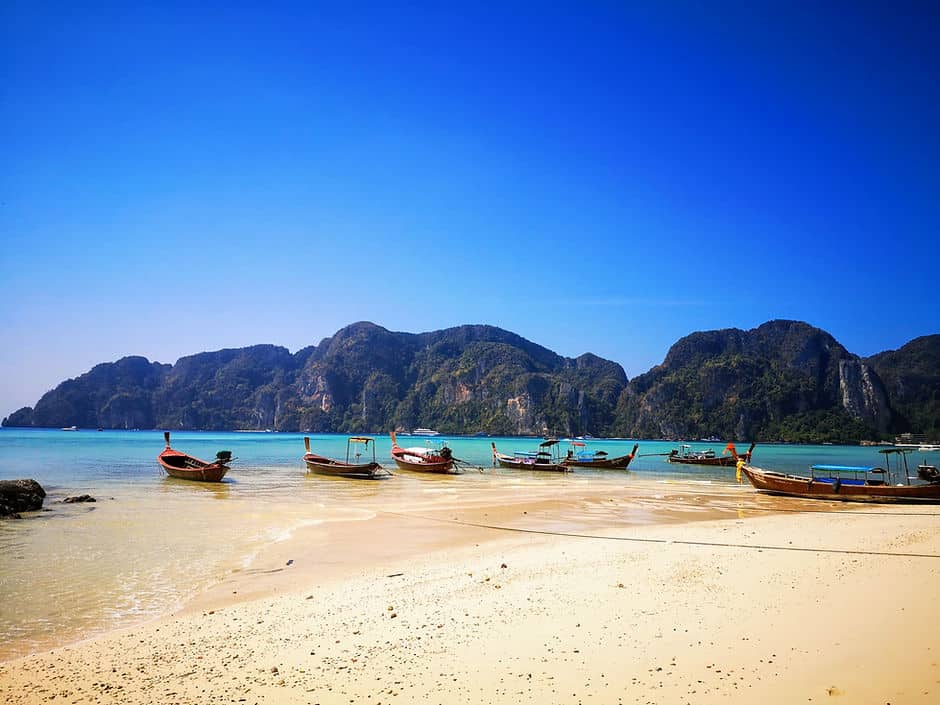
This post may contain affiliate links. I will receive a small commission if you use these links.
Make sure you read these essential tips for Southeast Asia to help plan your trip.
Southeast Asia is one of the most popular destinations for backpackers. It’s easy to see why – gorgeous sandy beaches, cultural temples, delicious food and bustling cities makes for an attractive mix. It’s also a safe and cheap place to travel, meaning that Southeast Asia is a great place for first time travellers getting to grips with backpacking and those on a budget.
Southeast Asia has been on my bucket list for years and in 2022, I spent 7 months travelling in Thailand , Vietnam , Cambodia, Malaysia and Indonesia. Based on my experience, I’ve put together 50 essential travel tips to help you plan your trip to Southeast Asia. These tips cover everything from what food and drink to avoid, to how to keep track of your budget while travelling and travel hacks to make life on the road easier.
These travel tips for Southeast Aisa will prepare you for a great trip and hopefully help to prevent you from getting into any tricky situations!
50 Essential travel tips for first-time backpackers visiting Southeast Asia
Practical information for travel in southeast asia, managing your budget and finances when travelling in southeast asia, top tips for getting around in southeast asia, food and drink in southeast asia, local cultures and traditions in southeast asia, travel health, packing tips.
- Lastly…things to remember when travelling
Travelling takes a lot of organisation and planning. Here’s a few hacks to help you have a smoother travel experience.
1. Get yourself a sim card as soon as you land
Often the best sim card deals can be found in the arrivals hall at the airport, with a ‘tourist sim’. I’d recommend getting a sim card as soon as you arrive in the country, especially if you are taking public transport from the airport / ferry / bus terminal to your accommodation. Most likely, you will be dropped off at a location in the centre of town (or at the side of the road as I experienced several times!) and having the internet to figure out where you are is very helpful.
2. Download an offline version of google maps before you arrive at a new place
Even if you have a sim card with data, you might not always have a signal to access the internet. Make sure that you download an offline version of google maps, covering the area you are travelling to. You might need to download several if the area you are travelling to is vast. Another handy tip is to ‘pin’ key locations onto your map, such as your accommodation, attractions, bus terminals and places to eat! That way, if you can’t access the internet you’ll still be able to find your way to key services and attractions.
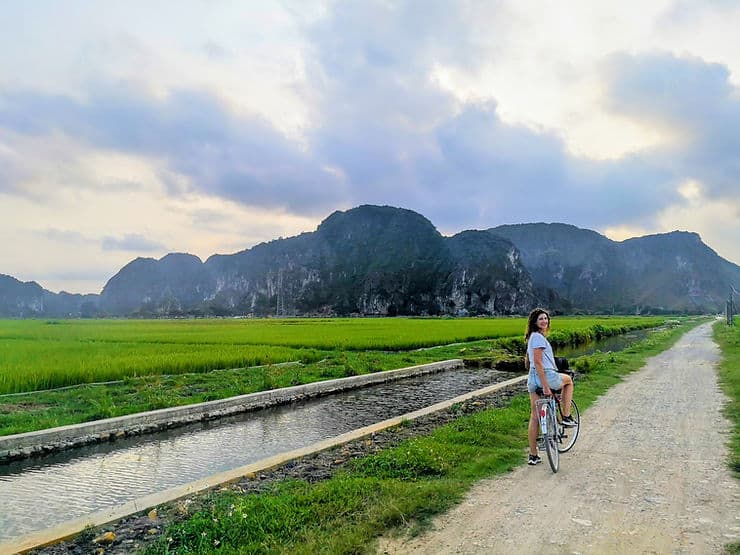
3. Screenshot or note down your accommodation booking confirmation and address
Don’t rely on being able to access the internet to retrieve the information of your accommodation. You’d be surprised how many travellers get off a bus in a new town and don’t know the address or even the name of the place they are staying at and can’t access their emails as they don’t have internet! Take a quick screenshot of your accommodation and travel bookings, or write the important information down in a notebook or in the notes folder on your phone.
4. Print any important documents you need to enter a country
For entering many of the countries in Southeast Asia, you’ll need a visa (and may need other supporting documents too). It always helps to have a printed copy of any important documents as well as the electronic version on your phone. This way, if your phone gets lost / stolen / runs out of battery, you’ll have a backup copy. If you are travelling between countries, your hostel or hotel might be able to print documents for you, or they can usually point you in the direction of a printing shop.
5. Be aware of scams
Travelling in Southeast Asia is an amazing experience and most of the local people you meet will be welcoming, friendly and helpful. However, you will also encounter locals who will try to take advantage of travellers. The most common scams usually involve taxi or tuk-tuk drivers, or money exchange kiosks. When travelling around in Southeast Asia, always negotiate the price and be clear on what the price covers. Only change money in authorised exchange kiosks – your accommodation should be able to help you with this.
How do you know if something is a scam? Usually you can tell if something doesn’t feel right. If you don’t feel comfortable and are unsure, just say no and move on. It also helps if you do your own research and plan beforehand. For example, if you research how much a specific A to B journey should cost in a tuk-tuk and the price you are being quoted is over double, you know they are trying it on.
6. Don’t put tissue paper down the toilet
As a general rule, putting tissue paper down the toilet is a no-no in Southeast Asia. There are some exceptions to this rule, for example in more modern, and usually more upscale resorts. However, in most places, the pipes cannot cope with the paper and they will block, which is not nice for anyone. Use the bin provided or embrace the water gun!
7. Read reviews
Whilst it’s not a good idea to get hung up on one negative review out of 10’s of positive ones, reading reviews is definitely worth doing. Whether this is for accommodation, attractions or transport. Filter the reviews to ‘Newest first’ and make sure you know what to expect before you part with your money.
8. Check the weather when planning your trip to Southeast Asia
Generally speaking, October – March is the best time to travel in Southeast Asia as this is the dry season and the weather is cooler and more manageable. However, research the individual countries you want to visit to plan which month would be best for you to travel.
9. Plan your route but allow for flexibility
Whether you are visiting one country or several countries in Southeast Asia, plan your itinerary beforehand. Having a rough plan of your route is a good idea so that you have an idea of what you would like to see within your time frame. However, don’t be rigid with your plans. Be flexible and embrace opportunities to visit places you hadn’t included in your original itinerary. Having unexpected experiences is one of the best things about travelling!
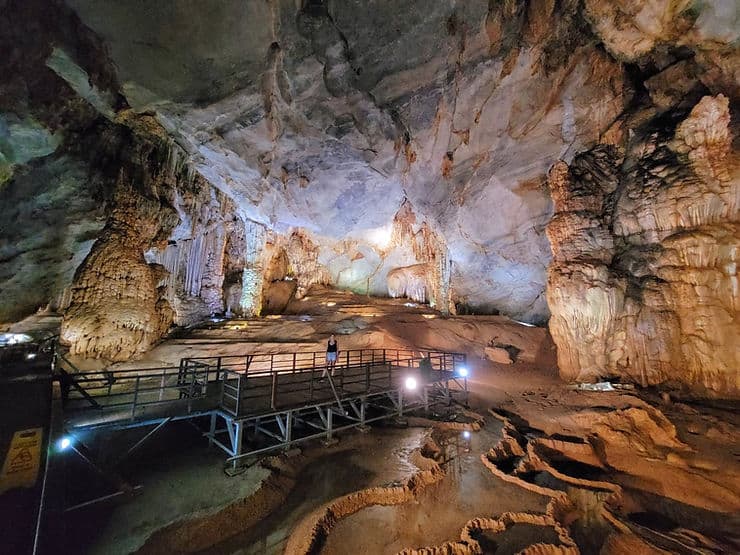
Budgeting for your trip is one of the most important things you can do, both before and during your travels. Make sure that you read these top tips to help you manage your budget and keep track of your spending when travelling.
Need help saving for your dream trip? Check out my 12 super simple tips for how to save for full time travel
10. Have a couple of good debit cards
One of the most important things you will need when travelling is a safe way to access your money. Instead of using your normal bank debit card, which may have expensive fees for use overseas, get yourself a new debit card, purely for travelling. I use a Starling Bank debit card, but I’ve also heard good things from travellers about Revolut and Monzo too. Instead of having all your money on your travelling debit card, simply ‘top it up’ when you need and keep just a small amount on the card. That way, if you lose the card, or it gets stolen, you don’t risk losing a lot of money. For this same reason, having two debit cards you can use in this way is also a great idea (just make sure you keep them in different places!).
11. Pay for large items on a credit card
When booking things like accommodation, travel (especially flights) and activities, always use a credit card. Credit cards offer a much higher protection on spending and if something goes wrong with the supplier (for example, if the service provider goes out of business), your credit card company can help you to claim your money back. I have a Halifax Clarity credit card which is great for travelling and using abroad. Shop around and find a credit card with low or zero exchange fees or charges for using it overseas.
12. Always carry some cash
When travelling in Southeast Asia, it’s a good idea to always have a bit of cash on you. If you are travelling to more remote areas, or buying something from a local shop or stall, you will need to pay for it in cash. Just be aware that many of the ATM’s in Southeast Asia charge for withdrawing money and they have a limit for how much you can withdraw, which is annoying!
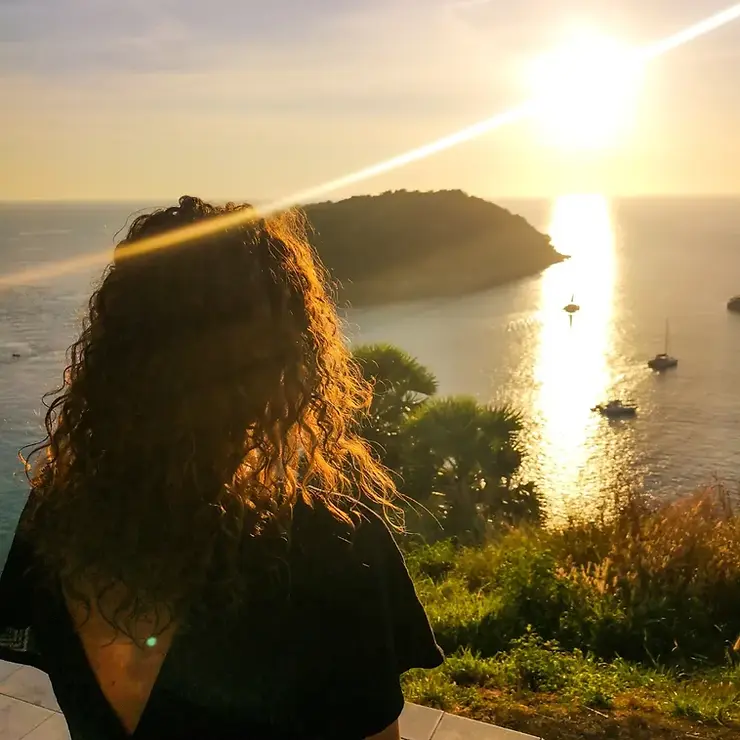
(Image: Windmill Viewpoint, Phuket, Thailand)
13. Make sure you can access your bank account if you lose your phone
Most of us manage our bank accounts via an app on our phones. However, what happens if your phone is lost or stolen? Make sure that you know how to access your bank account online or over the phone.
14. Set yourself a travel budget and track your daily spend
Possibly THE most important element of travelling is budget management! It doesn’t sound exciting (and it’s not!), but it’s vital if you don’t want your trip to end abruptly because you’ve run out of money.
When planning your trip, do your research and set a daily budget. This should be based on the prices of accommodation, food, transport and activities in your destination and also what kind of experience you want to have (on the scale of budget backpacker – luxury holiday). Read my step by step guide on How to budget for full time travel and create your own Travel Budget (you can also download my FREE Travel Budget Spreadsheet Template).
Make sure you record your daily spend to keep you on track. I use the free version of @travelspendapp . Managing your budget means that if you’re careful in some places, you can splurge on more expensive trips in others, such as an overnight luxury cruise to Halong Bay in Vietnam
15. Take advantage of travel rewards programs
There are plenty of rewards programs available to savvy travellers. One of my favourite reward programs is the Booking.com genius program. The more qualified bookings you make through your Booking.com account, the more genius points you can earn, which can get you discounts and upgrades on certain hotels, transport and experiences.
Another great rewards program, if you are from the UK, is Topcashback . Simply login to your Topcashback account and make your booking with one of the travel providers via the Topcashback site to earn cash back on your purchase.
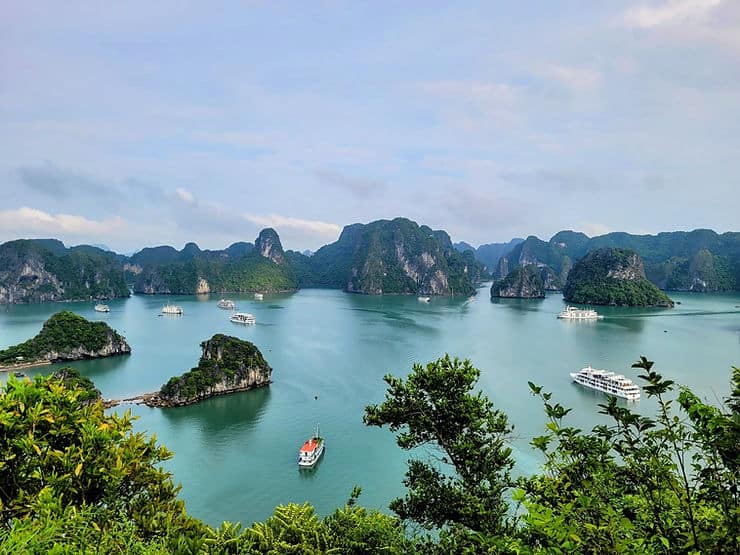
Southeast Asia is a large, diverse continent and even the individual countries within Southeast Asia are massive, so you’re going to want to travel around and explore as much of it as possible. Getting around in Southeast Asia is not always the most straightforward, so here’s some tips to help you navigate public transport.
16. Shop around for the best deal on public transport
During the 7 months I spent in Southeast Asia, I booked a lot of my bus and ferry journeys online. One of the best booking platforms for transport in Southeast Asia is 12go . Camboticket in Cambodia is also another good option. (For booking tours, Viator , Get your Guide and Klook are all great platforms). But don’t just rely on websites. Speak to your hotel or hostel and get their advice. Sometimes they can tell you about transport routes or tour companies that don’t appear on the larger comparison websites. Whatever you are booking, shop around and get a couple of prices for the best deal.
If you are travelling a longer distance, or between countries, don’t assume that travelling by plane will always be more expensive. Sometimes a flight can be cheaper, or a similar price to a long distance train, especially if you have carry-on only bags. It’s also worth taking into consideration the journey time. If a flight is only £30 more but takes 14 hours less than the bus, it may be a better option for you.
17. Travelling from A to B is not as easy as it sounds!
Travelling from A to B sounds easy (and it should be!), however travelling from A to B in Southeast Asia usually ends up being a lot more complicated than it needs to be! Don’t be surprised if you are asked to change buses several times throughout your journey as different drivers and companies take over each section of the trip. I took a journey in Thailand from Railay in Krabi to Koh Samui which took 12 hours and consisted of 1 boat, 5 buses, 1 ferry and a taxi (which was 4 more buses than expected!) Try to stay patient and go with it, it won’t make you feel any better getting stressed about it.
18. Give yourself plenty of time for transfers
As I’ve mentioned, travel in Southeast Asia is usually not a simple process. Often journeys depart later than scheduled and will take a lot longer as the drivers make random stops along the way. If you are planning a journey that has transfers with different companies (for example, a bus journey followed by a ferry), make sure that you leave plenty of time between each leg of the journey, as you are most likely going to be late!
19. Prepare for delays or things to go wrong
You can see a theme emerging here! Most journeys in Southeast Asia are late, or delayed, or there’s been a miscommunication with your booking. Try to be patient and polite with the locals. Most local people I encountered in Southeast Asia were incredibly warm and friendly and willing to help. So, be respectful and don’t be rude if things don’t go to plan, it’s all part of the travelling experience!
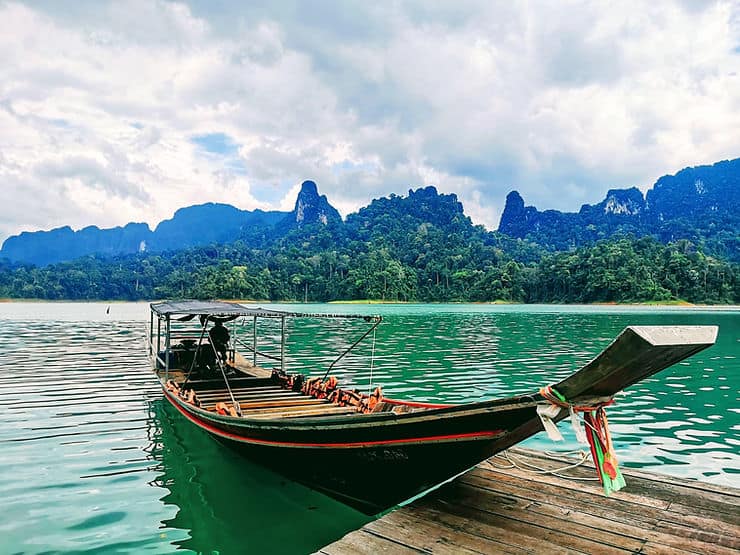
20. Don’t expect formal booking confirmations for public transport
If you’re the kind of person who likes to have written confirmation of everything, then prepare to get out of your comfort zone! As someone who is super organised and over-prepared, I had to learn to accept that formal booking confirmations don’t always exist in Southeast Asia when booking transport. Instead, you’ll be given a flimsy paper slip as confirmation, which at some point will be taken off you and replaced with a coloured sticker (which may later be replaced with another sticker!) They do love a sticker, especially in Thailand! Just take photos of your paper slip or sticker in case you lose it and you’ll be fine.
21. ALWAYS negotiate when ordering a tuk-tuk or taxi!
Rule no.1 when travelling in Southeast Asia – always negotiate! In some of the larger cities you can use Grab, Uber or Gojek which is great as it gives you an idea of what the cost should be. Even if you are getting a ride with a local driver, use the price on Grab/Uber/Gojek to help you negotiate. If that is not available, ask your hostel or hotel how much the prices should be so you have an idea of what is a good price and what is a bad price.
22. Get an international driving licence
If you are considering hiring a car or scooter in Southeast Asia, get yourself an International driving licence. If you are from the UK, you can pick these up in the Post Office for £5. Make sure you keep your licence and your international licence with you at all times when driving. Occasionally local police may stop you and ask to see your licence and if you don’t have it (or the correct one), they may fine you.
23. Don’t feel pressured into riding a scooter
Travelling in Southeast Asia and riding a scooter seem to go hand in hand (if you believe everything you see on Instagram, or read in some blogs). However, don’t feel pressured to ride a scooter if you don’t feel comfortable. The roads in Southeast Asia are uneven and windy and the traffic can be crazy, with people cutting you up and zig-zagging down the road. It is absolutely possible to travel in Southeast Asia without riding a scooter if you don’t want to. If you do want to ride a scooter, make sure your travel insurance covers you and always wear a helmet.
24. Have motion sickness tablets with you on travel days
Even if you don’t normally feel travel sick, you may find yourself feeling queasy. Many of the roads in Southeast Asia are quite hilly and windy and the drivers can be fast and erratic. Also, if you are on a small minibus, it is usually hot and cramped, making you feel even worse. (If you are in the north of Thailand, the Chiang Mai – Pai bus is notorious for making people feel ill). Buses aside, you will likely be taking several boats and ferries during your time travelling in Southeast Asia and some of the boat crossings can be bumpy. Make sure that you have some motion sickness tablets with you for your journey. These can be picked up cheaply from 7/11 in Thailand and also most pharmacies or shops.
25. Pack warm clothing in your day bag on travel days
If you are travelling long distances on a coach or sleeper bus, make sure you keep a warm top or hoodie with you. The buses in Southeast Asia are renowned for having the coldest air conditioning!
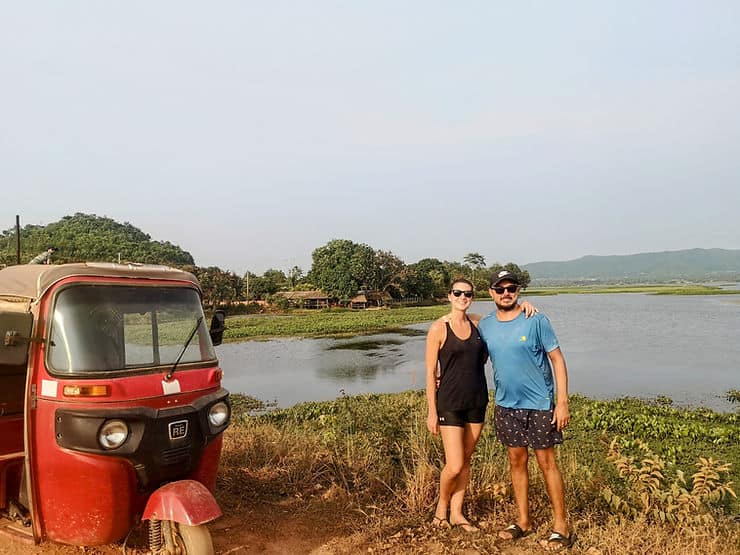
Sampling the food and drink in a new country is all part of the travelling experience and one of the best parts of visiting Southeast Asia is to eat the local food. Here’s a few tips to keep you safe and avoid the dreaded traveller’s belly!
26. Don’t drink the tap water
Unless you want to spend a couple of days being ill, don’t drink the tap water! Bottled water is very cheap to buy, Unfortunately, this does often mean that you will be using a lot of single-use plastic, which is a big problem in Southeast Asia. Some larger cities such as Bangkok, Phuket and Chiang Mai in Thailand have filtered water machines where you can top up your refillable water bottle for a fraction of the cost.
27. Be careful of the fruit!
It can be hard to stay healthy when travelling and the fruit in Southeast Asia is delicious, however, just be careful where you buy it from. There’s plenty of street stalls selling pre-cut fruit. Most of it will be fine, however you don’t know how long it has been sitting there getting warm and also whether it has been washed in clean drinking water. Eating dodgy fruit can make you really sick and wipe you out for several days – believe me! Try to pick places where they cut the fruit fresh in front of you, or buy whole fruit which you can peel/cut yourself.
28. Eat the street food!
The street food scene in Southeast Asia is brilliant (plus its great for your budget too!) The street markets are a lively buzz of noise and smells, creating a great atmosphere. Make sure you go to as many street food markets as you can, it’s all part of the Southeast Asia experience! If you buy meat from a street vendor, make sure that they fry it / cook it in front of you. Eating meat that has been left out for a while is another thing that could leave you chained to the bathroom for a day or two.
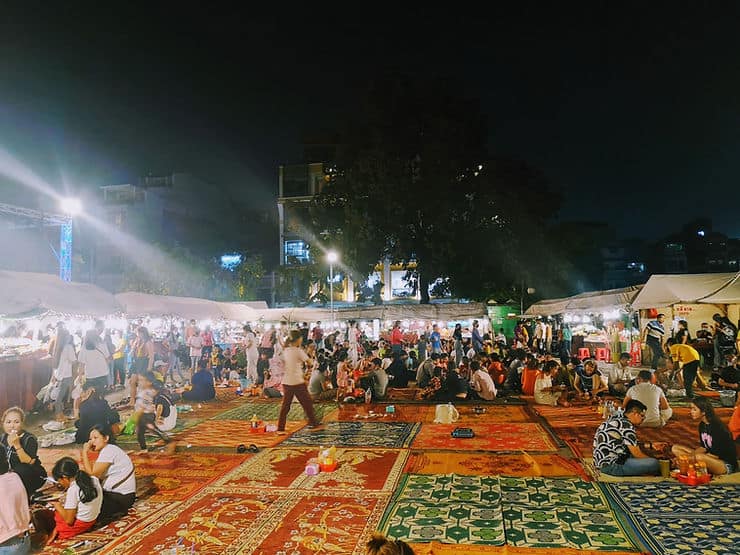
29. Try local dishes
When you visit somewhere new, make sure you know what the local dishes are and try them. Ask the locals you meet what food you should eat whilst you are there. There’s often regional variations of national dishes too.
30. Don’t be put off by the interior (or lack of!) a place
Some of the best food I’ve eaten in Southeast Asia has been whilst sitting outside on a tiny plastic stool at a metal table! In my experience, the small, family-run local restaurants have the best food and even better, they are the most budget-friendly too!
31. Bring a reusable water bottle and bag
As I’ve mentioned, some of the larger cities and towns in Southeast Asia do have places where you can top up your reusable water bottle. There are also some cafes which will allow you to top up for a small charge. Reusable water bottles are also vital for taking on some of the amazing hikes Thailand has to offer. Tip – buy an insulated bottle to keep your water cool!
Take a reusable cotton tote bag too for your shopping, rather than asking for a plastic bag each time you go to the shop. This foldable tote bag is perfect as it has a zip to keep your valuables secure too.
32. Check the spice level!
Spicy food in Southeast Asia is on a different level! A ‘mild’ dish is comparable to a medium in the UK. Don’t be afraid to ask for no chilli or for a dish to not be spicy.
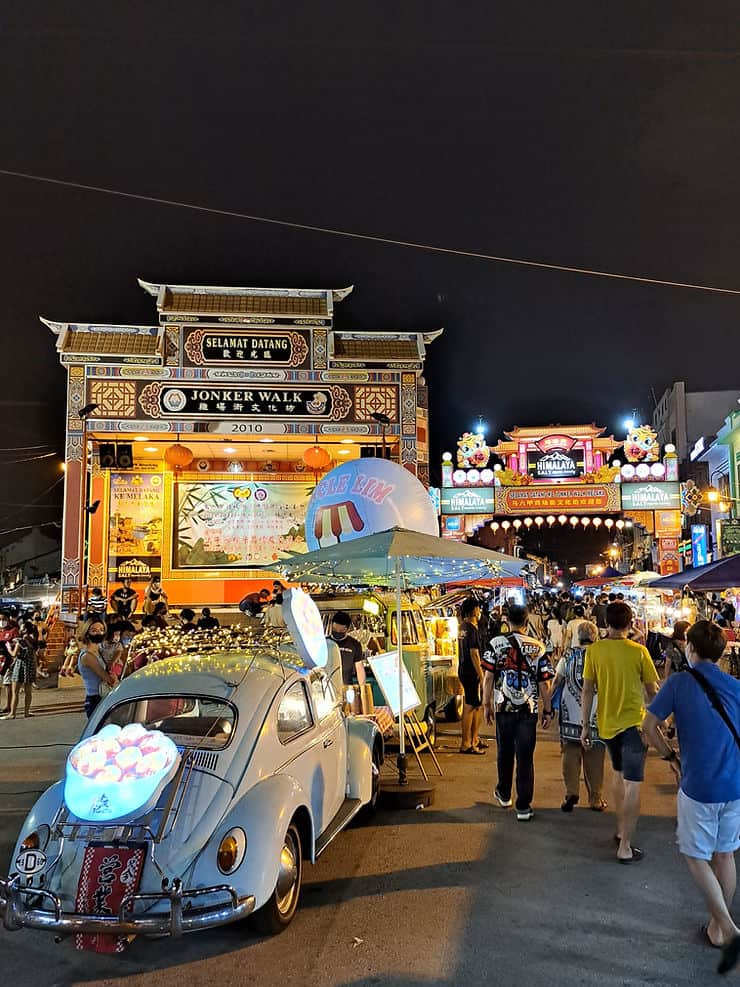
Experiencing a different culture and learning about the history and traditions of a place is one of the best bits about travelling. Read these four things you must do to make sure that you are respectful and get off to a great start with the locals when travelling in Southeast Asia.
33. Learn basic phrases
If you are travelling in another country, even just for a couple of weeks, it’s a great courtesy to know a couple of key phrases, such as Hello and Thank You. Even though English is widely spoken across Southeast Asia, locals love it when you try to speak a little of their own language and will be happy to teach you some new phrases.
34. Be respectful
Southeast Asian culture is very different to western culture and each country in Southeast Asia has their own traditions and cultural differences. Make sure that you know how to behave in certain situations and be respectful. For example, women should not approach, converse with or touch Monks. Women also cannot enter certain shrines or temples whilst menstruating.
Travelling to Bangkok? Make sure you visit these three temples
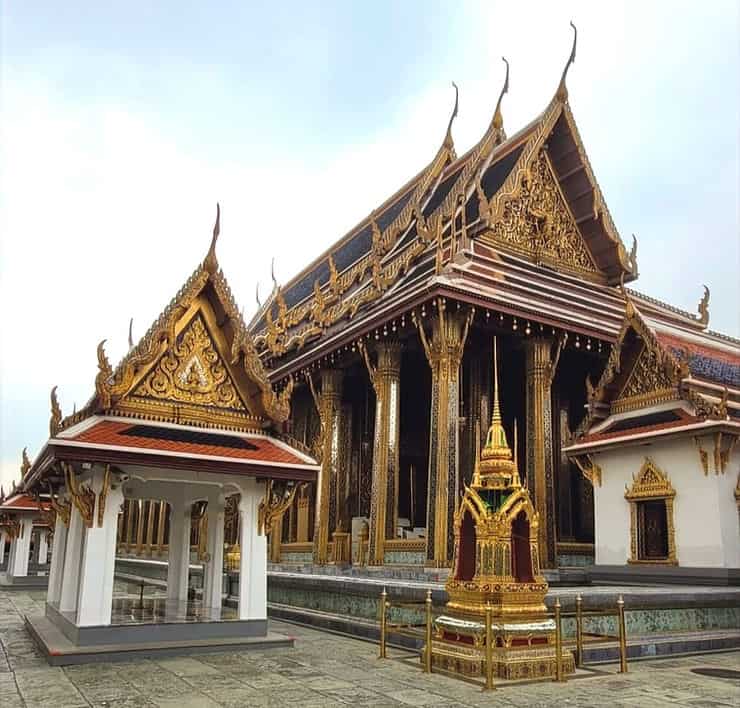
35. Dress appropriately
Whilst both men and women should make sure that they are respectfully dressed when entering a temple or government building, this mostly applies to women. Whether you’re exploring Ankor Wat , in Cambodia or the Grand Palace in Bangkok, women must always cover their knees and shoulders when visiting a temple.
When bathing in certain spots, it is respectful to cover up. Wearing a bikini is acceptable at most public beaches and in your hotel or hostel pool, however, if you are visiting a local bathing spot, you will notice that Southeast Asian women wear shorts and a t-shirt to bathe in. It is polite to do the same.
36. Take off your shoes
This is common practice in many places throughout Southeast Asia, but it is mostly associated with Thailand. Shoes should always be removed before entering a temple, but you will also need to remove shoes before entering other places too. If you are staying in a small guesthouse, or homestay, it is polite to leave your shoes outside. This is the same if you enter a small, local shop and even when you travel on certain boats and buses (especially the sleeper buses in Vietnam).
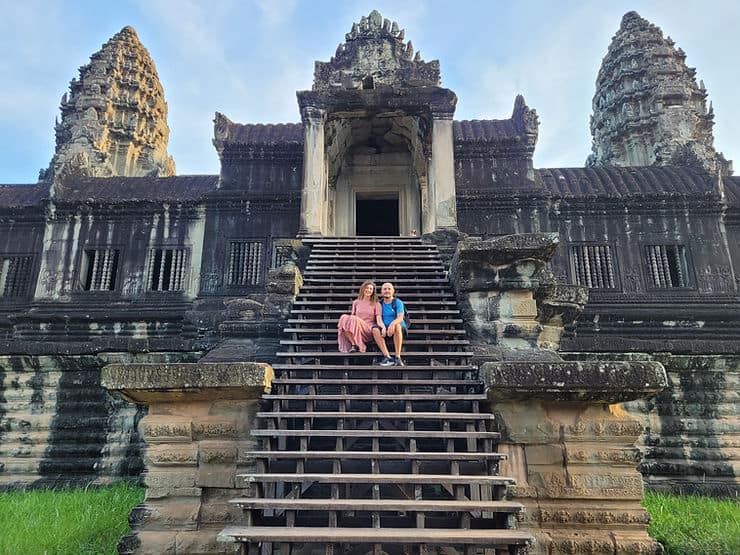
Prepare for your trip to Southeast Asia by making sure that your health requirements and needs are taken care of before you travel…
37. Check what vaccinations you need before you go
When planning a trip to any new country, it is important to make sure you have received all the relevant vaccinations beforehand. If you are in the UK, you can check the NHS website to see which vaccinations are recommended for the country you are visiting and which vaccinations you can get for free on the NHS.
38. Stock up on sunscreen
Suncream is not widely available in Southeast Asia, especially if you are travelling away from the main tourist holiday destinations. It is also very expensive. You will find lots of ‘sun serums’ or ‘daily lotions with spf’ – be careful with these, whilst they do offer some level of protection, they are not full sun creams and are not recommended for using while sunbathing. If you are only travelling for a short amount of time, take several bottles with you from home, if you have room.
39. Take any medication / feminine products with you
If you are travelling to some of the smaller islands, or more remote places in Southeast Asia, there is not always a large pharmacy available. So, if you need medication, make sure that you bring it with you and restock it before you run out. Feminine products can be expensive too, so if you can, bring these with you.
40. Always carry medication for ‘travellers belly’
It’s not nice to talk about but almost every traveller will experience an upset stomach at some point during their travels in Southeast Asia (no matter how careful you are). Although the best advice is to rest and let the bug ‘pass through’, that is not always possible, especially if you have a bus journey to get through. With that in mind, carrying some tablets for diarrhoea will be a lifesaver!
41. Always have a toilet roll with you on travel days!
This goes hand in hand with the above – most toilets in Southeast Asia don’t have toilet paper and there’s usually a small fee for using them, so carry some small change too.
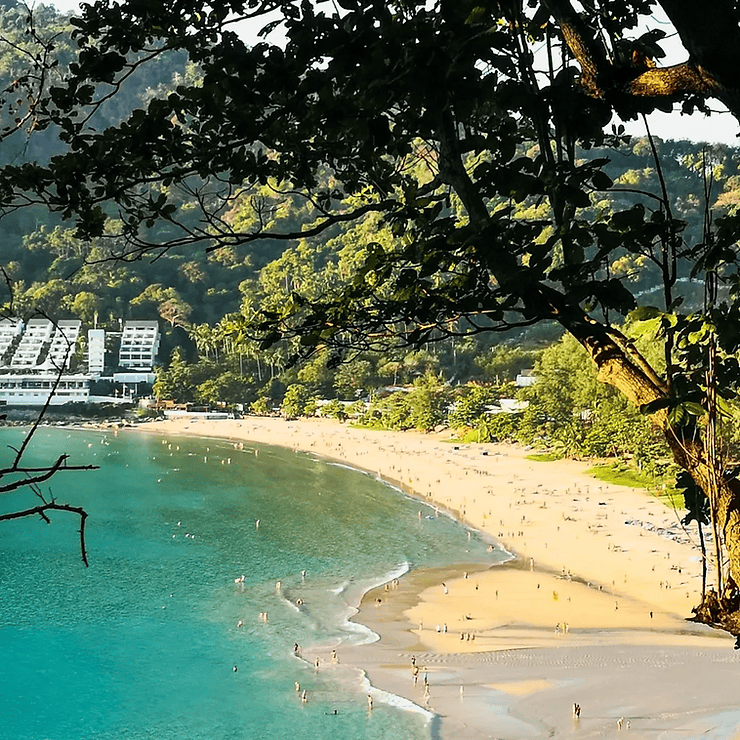
Depending on how long you are travelling in Southeast Asia for, your packing list will vary. This is also true if you are planning a long trip and are visiting other places outside of Southeast Asia too. So, rather than include a full packing list in this post, here’s a couple of top tips to help you pack better.
42. Take a Scarf or sarong
A scarf or sarong is one of the most versatile items you can pack in your bag. It is great for covering your shoulders in a temple, laying on at the beach, throwing on over a bikini, using it as a pillow on travel days or keeping you warm on the buses! Plus it takes up virtually no space in your bag!
43. Pack layers
You definitely don’t need as many clothes as you think you do, and you will end up wearing the same things over and over! Pack light things that you can layer and roll up small in your bag. In terms of shoes, one pair of trainers, one pair of flip flops and one pair of Birkenstock or chunky walking sandals will be suitable for pretty much everything in Southeast Asia. I lived in my Birkenstocks for pretty much the whole year!
44. Leave room for new clothes!
Don’t go shopping for everything before you leave home. The clothes in Southeast Asia are so cheap and let’s face it, most of the clothes you will buy at home will most likely come from Southeast Asia anyway! If there’s anything you’ve forgotten or wished you had packed, you will more than likely be able to buy it in Southeast Asia.
45. Be savvy with your chargers
There’s nothing worse than having a bag full of cables and charging wires! A lot of devices will accept the same charger cable and this is a great way to reduce the number of wires you take. For example, my laptop wire will fit my phone and my Go pro, meaning I only need one wire for three devices. (I do also have a single USB cable that will plug into an adaptor so I can charge two things at one, but this takes up hardly any room). I’d also recommend putting your wires into a small organiser case , so they are easy to locate in your bag.
46. Embrace the packing cube!
Packing cubes are a lifesaver when it comes to packing for travelling. Even if you are sceptical about it at first, you will soon realise how handy they are. It’s a great way to separate (and easily locate!) your clothes in your bag. They also help to condense things down in your bag!
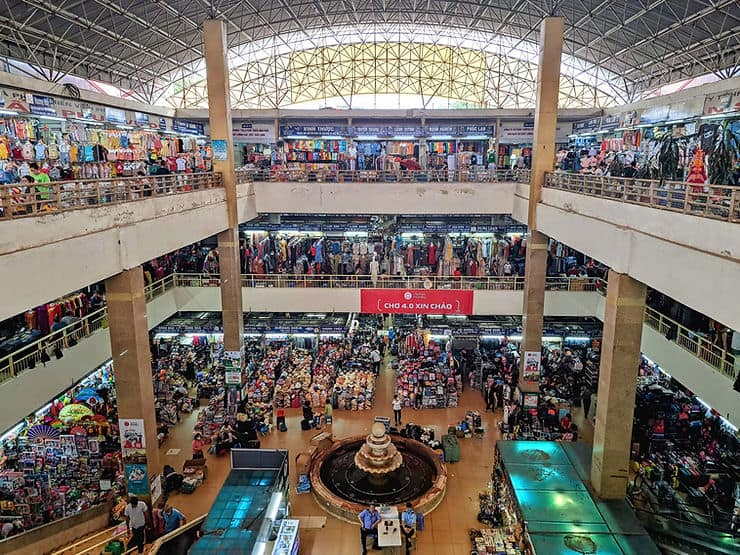
Making the decision to go travelling can be scary but it is also super exciting! Have the best time and remember that comparison is the devil!
47. Chat to others
One of the best parts of travelling is meeting other like-minded travellers. There’s a reason that Southeast Asia is one of the best places to travel solo. There’s so many great hostels and Facebook groups, where you can meet up with other people.
48. Everyone has bad days when travelling
You will have THE BEST time travelling, but there will also be some days that don’t quite go to plan and other days where you are tired or may feel homesick. The best advice I can give you is not to dwell on those days, it is completely normal and usually after a good night’s sleep and a comfy bed, you will feel much better.
49. Don’t compare your journey to others
Everyone’s travel experience is different and your trip will be unique to you. Don’t get caught up in comparing your journey to everyone else’s, just enjoy and embrace your own travel experience.
50. Have fun!
Travel is one of the best things you can do (in my totally biased opinion!). Whether you’re travelling in Southeast Asia for a few weeks or a few months, relax, go with the flow and HAVE FUN!
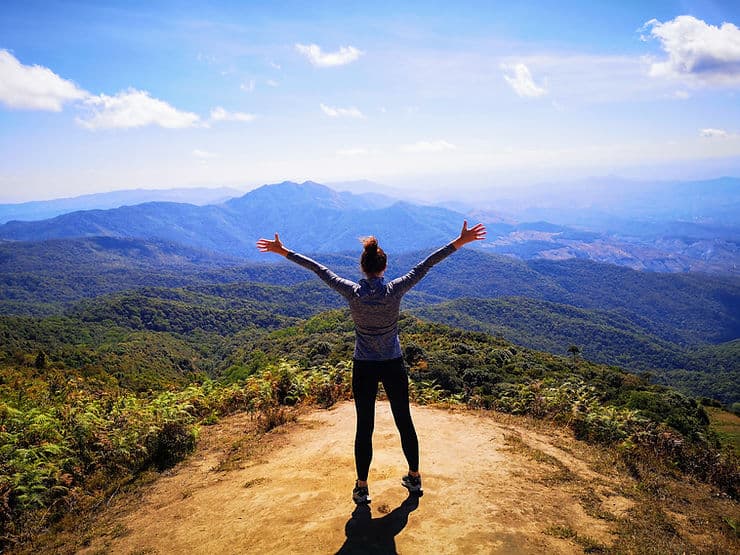
Related Posts
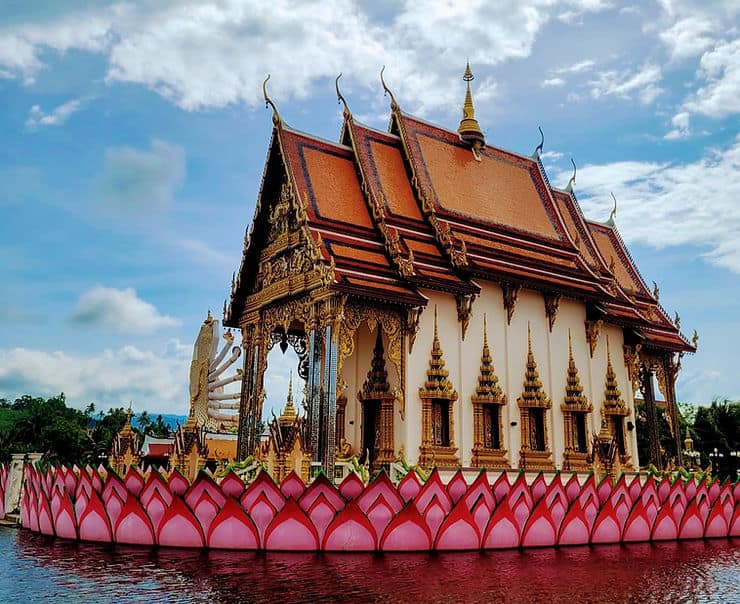
Top 15 things to do on Koh Samui, Thailand
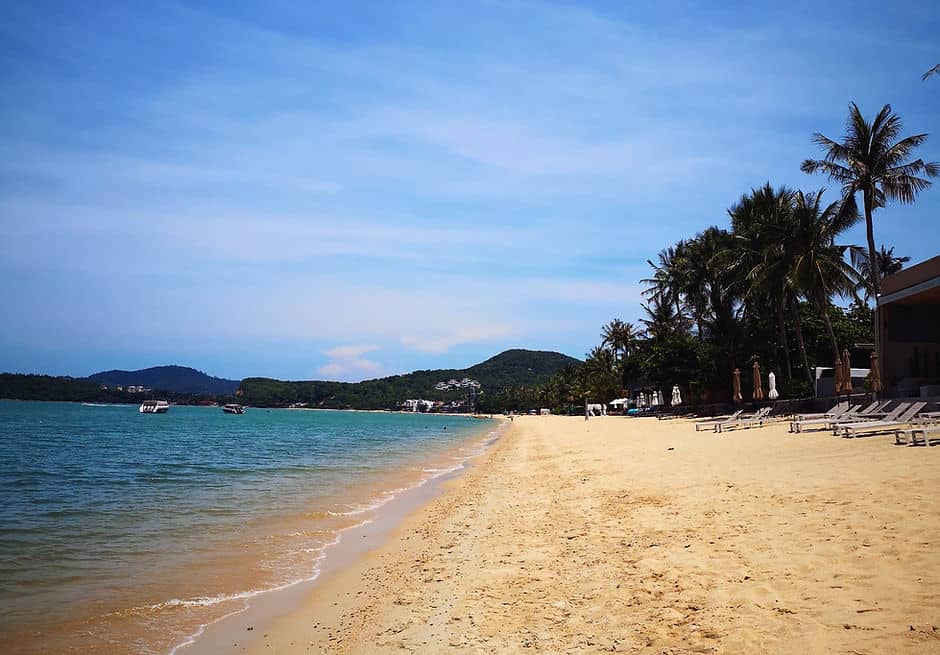
A guide to visiting Koh Samui, Thailand
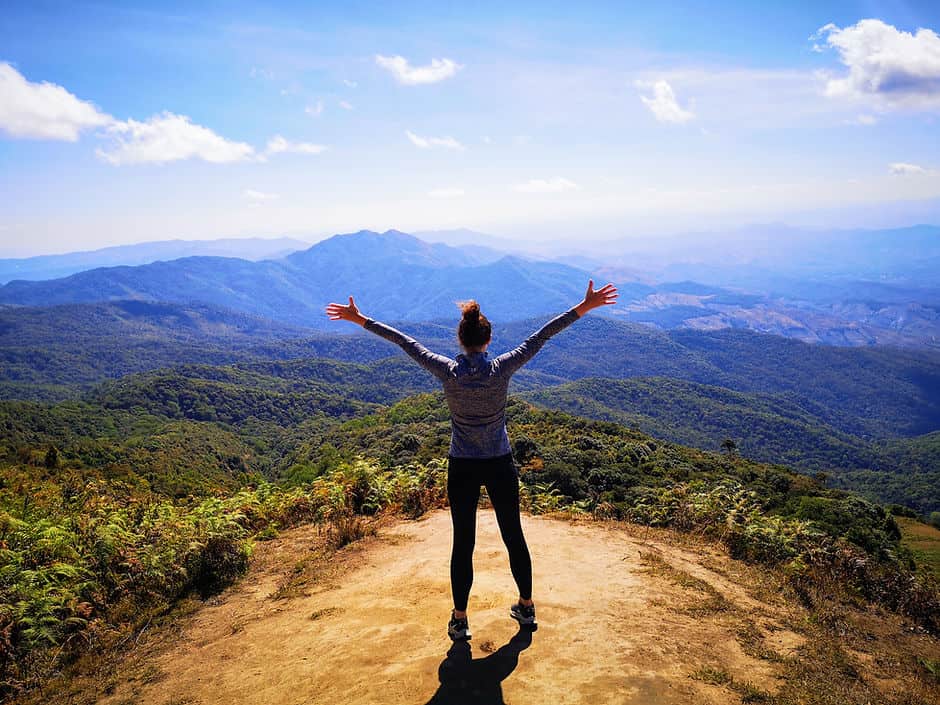
10 Unmissable hikes in Thailand
How to Prepare for your Southeast Asia Trip
Travel Tips on Packing, Visas, Insurance, Phone Roaming, and Flu Prevention
:max_bytes(150000):strip_icc():format(webp)/mike_borobudur-5b6d3ea446e0fb0025fcb683.jpg)
On your next Southeast Asia trip , don't fly in blind. Make sure you're prepared to handle the weather, culture, and travel conditions wherever you're headed.
The list that follows ought to help you prepare for your trip to Southeast Asia, although keep in mind it's a rather general list, covering a wide range of conditions in the region. Be sure to click on the following links for more fine-grained or country-specific information.
Get the Right Visa for the Country You're Visiting
Alexander Steffler / Creative Commons.
Conditions for entry regarding US citizens vary widely throughout the region. Most countries in Southeast Asia allow fairly easy visa-free entry , or visa upon arrival, for stays ranging from two weeks to three months. Cambodia, for instance, also allows you to get an e-Visa online that negates the need to visit a Cambodian embassy or consulate.
The only fly in the ointment is Vietnam , which requires US passport holders to get prior visa approval at a Vietnamese Embassy or Consulate. Read about Vietnam's visa and requirements to get one .
For visa requirements in the rest of Southeast Asia, make sure to review this list of visa requirements for US Citizens in Southeast Asia (by country) .
Set your Phone to Roam
Cellphone roaming in Southeast Asia is quite easy, assuming your phone meets certain criteria. At a minimum, your phone should be compatible with the GSM cellular standard, using the 900/1800 band.
Also, your cellphone provider should also allow international roaming ; barring that, your phone should be SIM-unlocked to let you use local prepaid SIM cards. The latter option may be preferable if you're planning to do a lot of calling from abroad; roaming charges are often quite exorbitant.
Some websites are blocked in particular countries ; a recent survey of Internet freedoms in Southeast Asia found that only the Philippines shared the same level of Internet freedom as the U.S., with others ranging only from "partly free" to the ominous "not free" in Vietnam, Cambodia, and Myanmar.
But you can tweak your phone to get past these restrictions.
Pack Right for Your Trip
For most destinations in Southeast Asia, light, loose cotton clothing will do for most destinations in Southeast Asia all year round. Most towns in the region are quite conservative (even cities), so wear clothes that cover your shoulders and legs when visiting temples, mosques, or churches.
Your packing list will depend on the time of year you're visiting . A traveler visiting Southeast Asia during the monsoon rainy season will want to bring clothes appropriate for the wet weather. Someone visiting during the summer seasons will want to pack UV-resistant clothes.
Whatever you do, do not bring controlled drugs into Southeast Asia . The region has the harshest drug laws on the planet, and even stuff that's been legalized in your neck of the woods may get you the death penalty if they catch you with your stash in Singapore's airport.
Get Insured Before You Go
When traveling to Southeast Asia, you should mitigate the obvious travel risks and get travel insurance . Many destinations are miles away from the nearest hospital or clinic. (For instance, if you get bitten by a Komodo dragon in their namesake national park, you'll need to be airlifted 300 miles west to a hospital in Bali. That's not a cheap ambulance ride.)
If something terrible happens to you so far from home, insurance can save you much-needed time and resources, as accidents, cancelled flights, or property loss can cost more than you could possibly afford.
Important note: Travel insurance will not cover you everywhere or in any situation: certain places and adventures will void your insurance if visited or undertaken!
Take Appropriate Health Precautions
Conny Sandland / Creative Commons
Disease is an everpresent possibility in Southeast Asia - not just in the tap water , but particularly in the jungles and bodies of water representing some of the region's most-visited places. If you're not up to date on your shots, take time before your trip to get the right jabs in .
Bird flu (H1N1), while hardly on anybody's radar these days, can strike unexpectedly. Amazingly, flu is almost ridiculously easy to avoid, assuming the right precautions are taken.
Make sure you review other Southeast Asia safety tips , and find out about specific safety issues while hiking and while visiting Bali .
The CDC is just one of many organizations providing travel apps designed to keep travelers safe; read about the CDC's online tools for healthy traveling to take in their tips and tricks.
Asia Travel
Is It Safe in Thailand?
Driving in Asia
Cellphone Roaming in Southeast Asia
What $100 Can Get You in Southeast Asia
Top UNESCO World Heritage Sites in Southeast Asia
Vital Information for the First-Time Visitor to Thailand
Philippines Travel Guide for First-Time Visitors
Preparing for a Trip to China
Cambodia Guide: Planning Your Trip
Tourist Visa Requirements for Southeast Asia
Staying Safe in Southeast Asia
Essential Info for First-Time Visitors to the Philippines
Weather in Southeast Asia: Climate, Seasons, and Average Monthly Temperature
How to Call and Surf on your Smartphone in Indonesia
Traveling in Southeast Asia's Monsoon Season

Southeast Asia Travel Tips: 50 Things You Need to Know
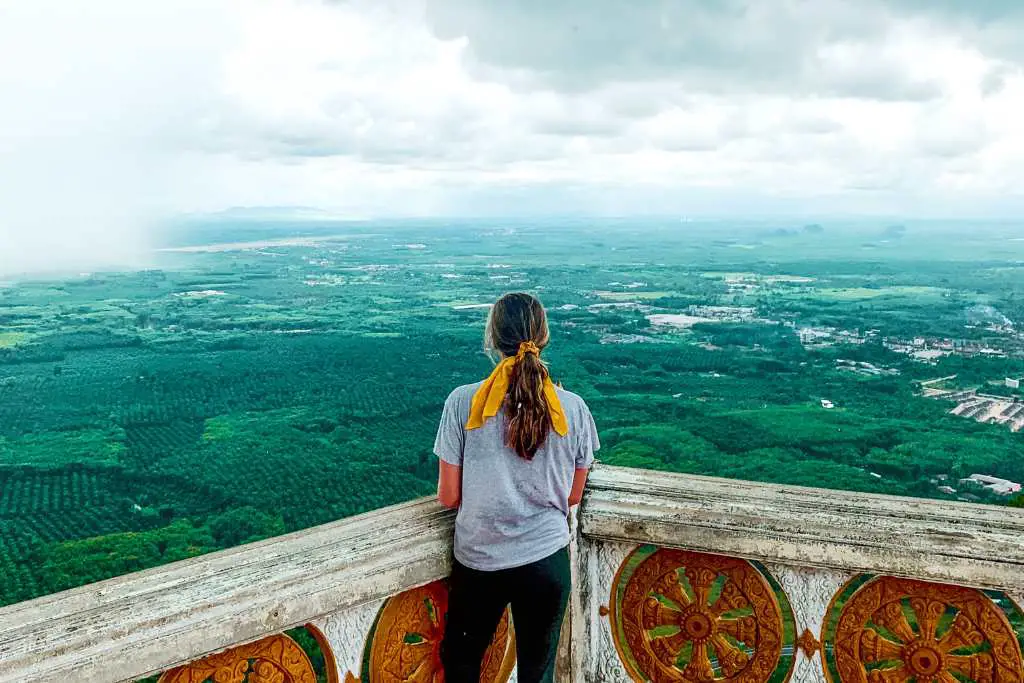
Southeast Asia is one of the most popular travel destinations for good reason! There are beaches, mountains, historic cities and so much more to explore. We backpacked around Southeast Asia for a little over two months and absolutely loved our time there. While traveling through this region is fabulous, you will face challenges while experiencing this climate and the amazing cultures. Here are 50 Southeast Asia travel tips you need to know before backpacking through this region!
Southeast Asia travel planning tips
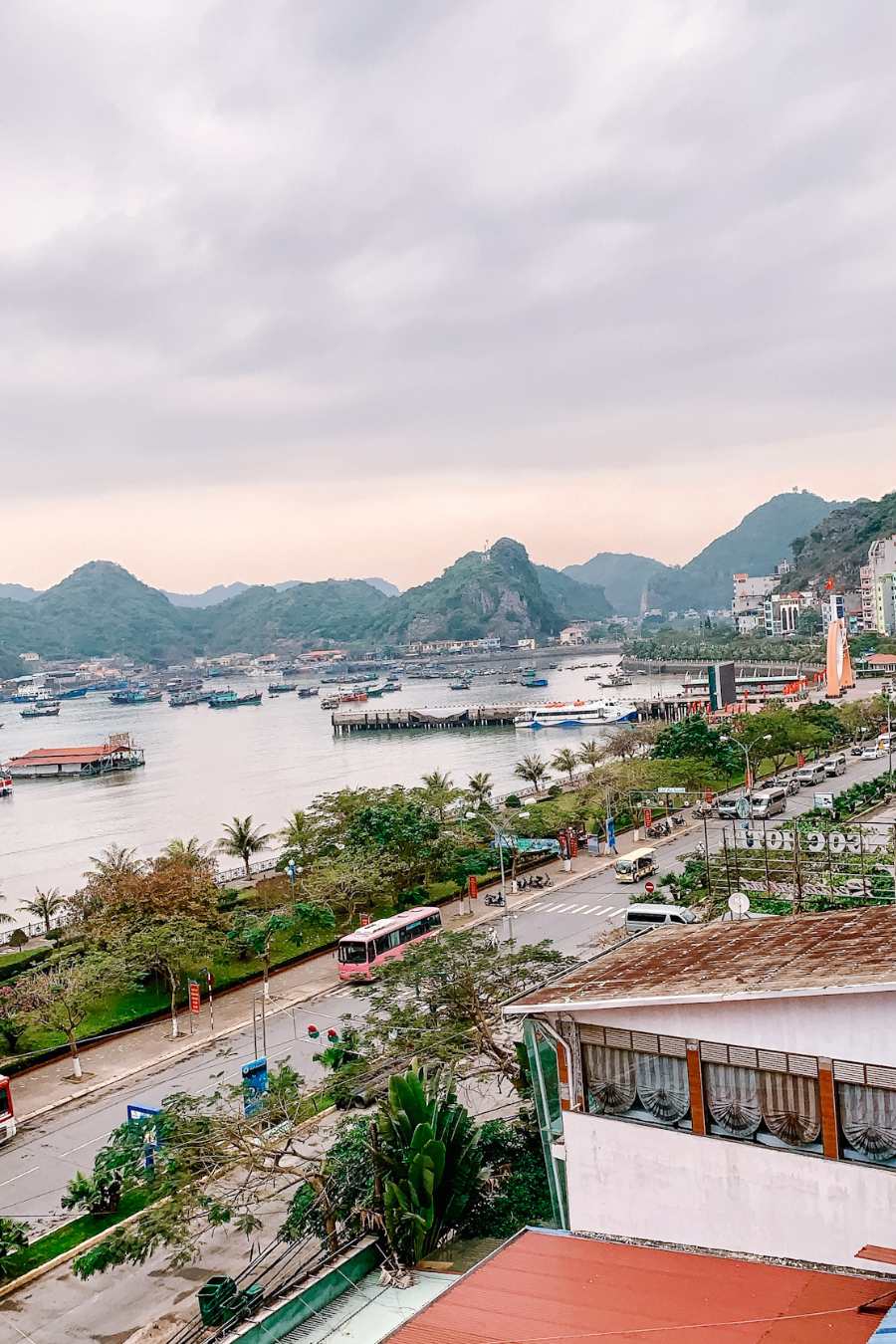
1. Check if you need a visa
Each country has different Visa requirements depending on your origin country. In most cases you can get a visa upon arrival but it is always smart to research ahead of time. Vietnam for example, you can do all of the visa work ahead of time and easily enter the country. If you do it upon arrival, there is tons of paperwork to fill out on the flight.
2. Make sure your passport has more than 6 months before it expires
This is a general travel tip but definitely a necessity in Southeast Asia. Many countries will not allow you to enter if you have less than six months before it expires or you have less than two pages to stamp!
3. Make physical and digital copies of your travel documents
This is another general travel rule of thumb but you should always have printed copies of your passport, ID and Visas. Hopefully you will never need to use them, but you’ll be thankful you did this if you do!
4. Download apps before you go
These are the best travel apps to download before your next trip but especially important when traveling to Southeast Asia. You will need to use these apps as soon as you land!
5. Check if you need any vaccines
If you are just traveling to the major cities, then you should be ok. We received tetanus and Hepatitis B before we left but later learned that it was not necessary from other travelers. We are not medical professionals though so always check with your doctor!
6. Purchase travel insurance
This is absolutely necessary whenever you travel out of the country. World Nomads will cover everything from stolen items to sickness while traveling!
7. Use 12Go to book ground transportation
U12 is a similar website as Rome2Rio and built specifically for Southeast Asia travel. This is a great resource to book your transportation between cities.
8. Always plan your airport transportation ahead of time
You will be haggled for a ride as soon as you get off your flight and these options are usually a scam. Research beforehand and know what your plan is going to be to get to your destination from the airport! You don’t need to have your grab or uber actually scheduled ahead of time, but you should know what your plan will be. We fell for a scam in China and never made that mistake again.
Southeast Asia packing tips
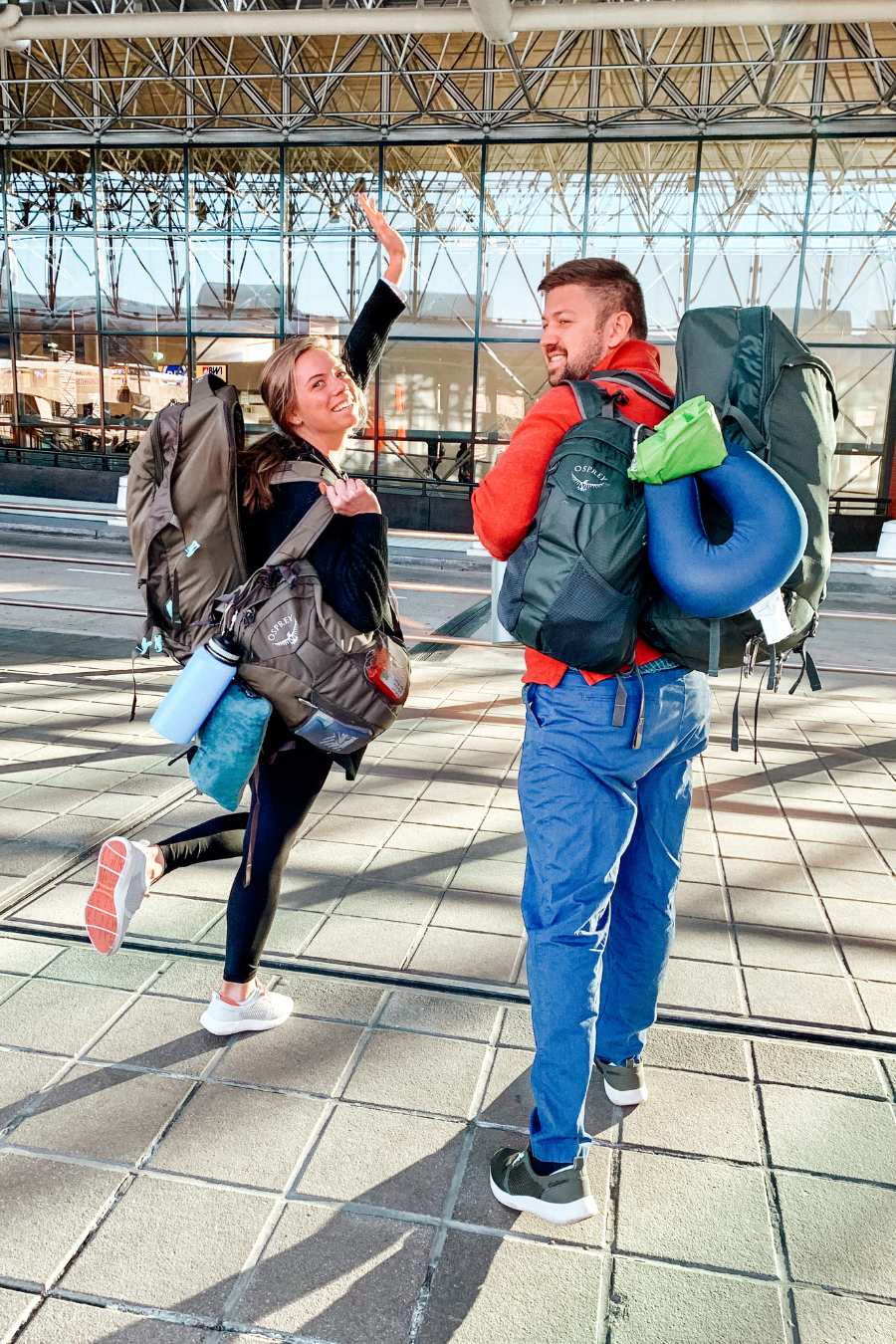
9. Pack light…literally!
Asia is HOT! Leave the jeans and heavy coats at home, you will not need them. You’ll also want to have as little luggage as possible. We always suggested using a backpack instead of a rolling suitcase because it is much easier to move around cities and different types of transportation.
Read how to pack light for travel here!
10. Dress comfortably and casually
It is tempting to get all dolled up and whip out the heels but it is really not necessary while backpacking Southeast Asia. We went out bar hopping with other travelers most nights in shorts and tank tops. Backpacking is a judgment free zone focused around fun not style.
11. Bring your own laundry machine and detergent
In our experience, laundromats were not really used in Southeast Asia. We bought a portable washing machine and our own detergent strips to get laundry done whenever we needed it. Oftentimes you can pay your hostel or housing to do laundry for you but it can be pricey. That is a great option when you have a really full load but the portable machine is handy if you just have a few undergarments and light items to clean.
12. Bring a neck pillow
No matter if you are staying in a hostel or a 5 star hotel, more often than not the pillows are very thin in Southeast Asia. We recommend this neck pillow to provide some more comfort!
Use code JLJ10 for 10% off all eSIM purchases.
13. Bring extra tampons
If you need to use tampons, highly recommend that you pack plenty extra. They are not always available in convenience stores.
14. Make sure to bring plenty of sunscreen
Sunscreen is hard to come by in Southeast Asia. We packed lots of spray bottles to try and last a few months. There are options if you run out but you are better off preparing as best you can.
Southeast Asia health and wellbeing travel tips
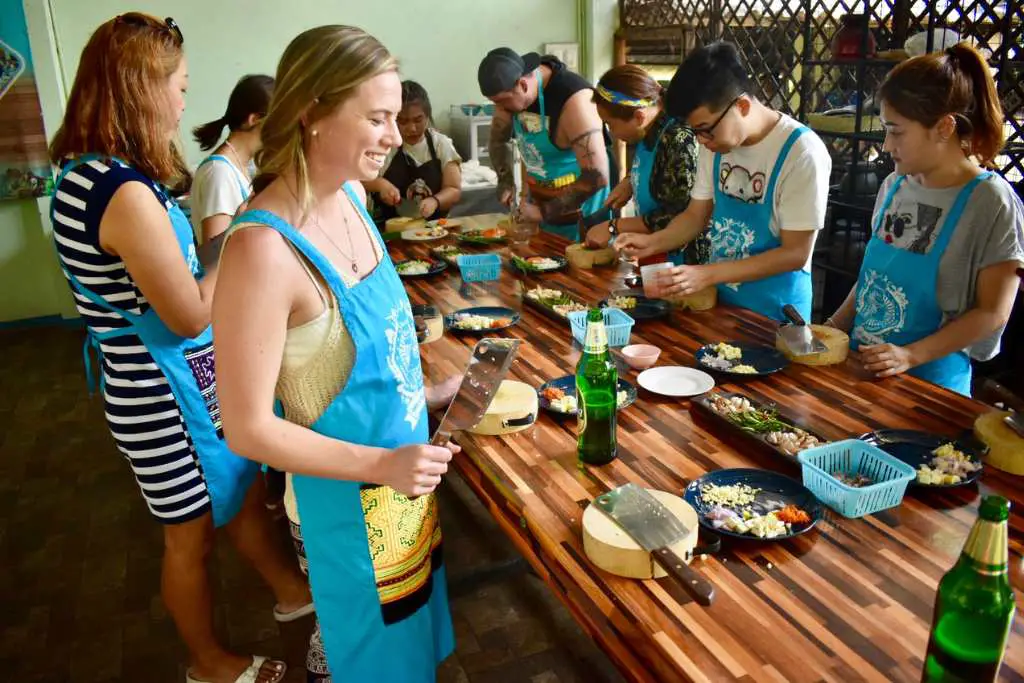
15. Prepare for stomach sickness
Certainly you have heard of the infamous Delhi Belly, Montezuma’s revenge etc… The reality is that there is a 99% chance it will happen to you. Dramamine, Pepto and other basic medicines may provide some relief but won’t cure it.
When the sickness happens, go to a pharmacy and ask for Smecta. This is a tablet that dissolves in a water bottle and soothes your stomach. It is a huge help! Smecta is much cheaper in some countries compared to others. In Vietnam it was less than $1 and in Thailand it was $7-10. Stock up in the countries where it is cheaper!
16. Bring plenty of Insect repellant
Bugs are everywhere in Southeast Asia. Make sure to pack insect repellent with deet. This will protect you from the nasty buggers! Always put it on before going outside and wash it off before bed. Trust us, you do not want to be covered in bug bites! This is the bug spray we travel with when we go to bug heavy areas.
17. Pack western medicine
There are few options when it comes to medicine in Southeast Asia. We are all about a holistic approach until there’s a nasty cold going around and no DayQuill to be found. We recommend packing standard cold and stomach medicines in case you get sick.
18. Don’t drink the water
This may be common knowledge but definitely important to note. We recommended using a Larq water bottle while backpacking. There are also tons of 7/11s and convenience stores all around Southeast Asia! Most of the time we ended up just buying jugs of water bottles and refilling our reusable ones.
19. Brush your teeth with clean water
Everyone knows not to drink the water but this Southeast Asia travel tip often gets overlooked because it is second nature to brush your teeth from the sink. Have extra clean water in your bathroom so you are prepped to brush!
20. Check the ice in your drinks
If the ice in your drink is round with a hole in the middle, then it came from an ice bag and is clean. If the ice looks like it came from an ice tray, then it may be frozen tap water and will make you sick. This is not always 100% accurate but a good thing to check!
21. Always have toilet paper with you
If you remember any of these Southeast Asia travel tips, remember this one. Most public restrooms will not provide toilet paper so it is important to always keep extra in your bag or pocket! You do not want to find yourself stuck on the toilet with no toilet paper.
General Southeast Asia travel and backpacking tips
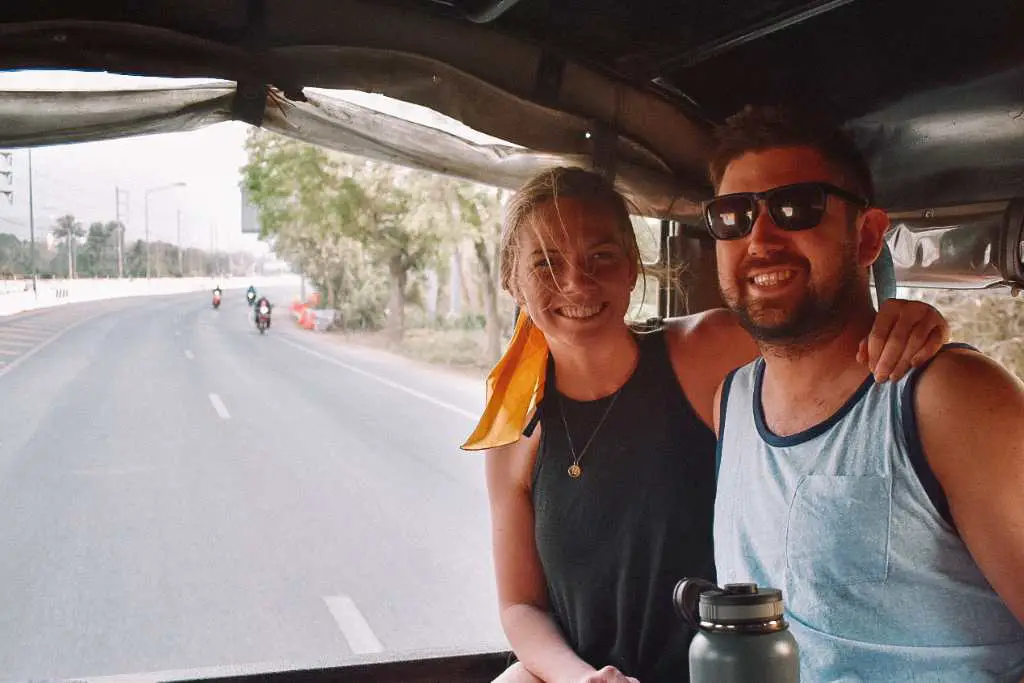
22. Just accept it, you will feel dirty
Between the heat, bug spray, sunscreen and general dirt, you will feel kind of gross while backpacking Southeast Asia. The good thing is that everyone is in the same boat! There’s no judgment.
23. Things will go wrong
Traveling in Southeast Asia is messy. Transportation gets delayed, credit cards get lost and phones get stolen. As long as you have your passport, everything will be ok! Don’t sweat the small stuff. Remember that you are there for enjoyment, not stress.
24. Be ready to put yourself out there socially
We were so nervous when we first started backpacking Asia to make friends and approach other backpackers. One day we just got over it and started approaching other travelers. We made some friends for life and some groups wanted nothing to do with us. If you want to make other backpacking friends, you have to put yourself out there! The worst that happens is someone doesn’t want to be your friend, who cares?
25. Avoid unethical animal activities
Unfortunately, this is a huge issue worldwide and Southeast Asia is no exception. The good thing is that there are plenty of sanctuaries and safe activities to try instead! Research before embarking on any excursions with animals. Any place that offers you to ride the elephants is an automatic no!
26. Don’t take time too seriously
Time is relative in Southeast Asia. It’s like island time, but sometimes slower and sometimes faster! There were times that we had a bus scheduled to pick us up and it arrived an hour early and then times that it was 2 hours late! Give yourself a buffer when it comes to pick up times.
27. Try the local street food
When we were first backpacking Southeast Asia, we were so scared to try street food because we didn’t want to get sick. Then we got sick even though we were so careful! Moral of the story, if there is something you want to try, just go for it. Chances are that you will get sick no matter what, that’s travel for you!
28. Know that most establishments will have Wifi
Almost every bar or restaurant has wifi set up so there is not a huge need for cell service. It is always safe to have it just in case, but you can get by with just the public wifi.
Safety and scams to avoid in Southeast Asia
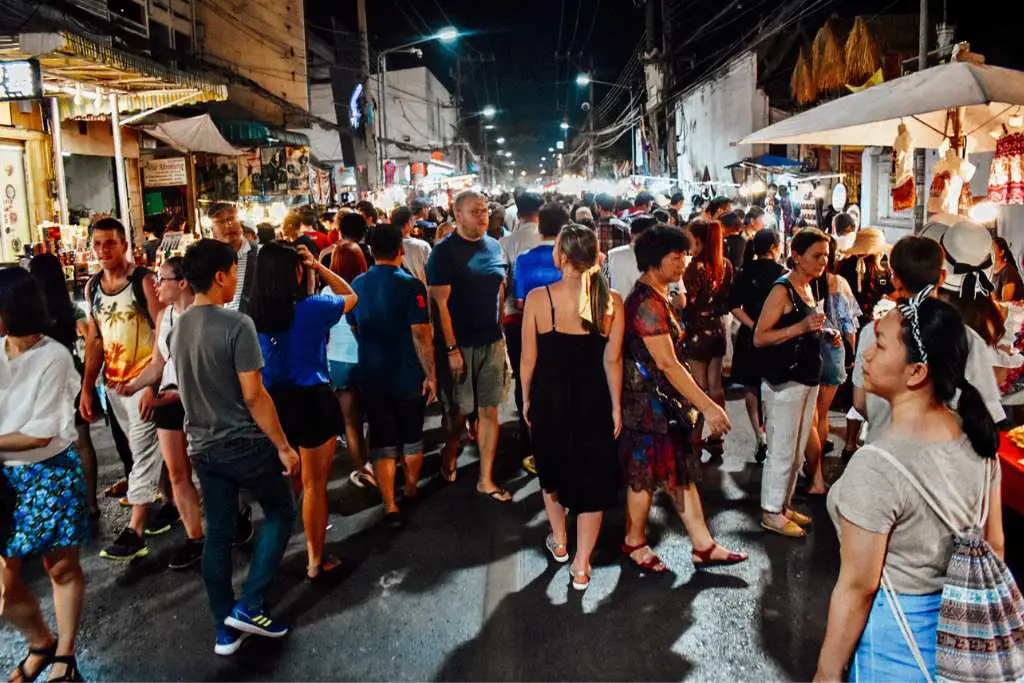
29. Determine your taxi or tuk tuk price before you start your ride
This Southeast Asia travel tip is crucial to avoid getting overcharged on these rides. Many drivers will speed up their meters so they can charge more for the ride. If you set a price beforehand then you do not need to worry about this. In cities that use Grab (Asia’s uber), this option is always preferable because the app will set the price for you and pay in the app. In this circumstance, you do not need to worry about that conversation.
30. Watch out for motorbikes
Motorbikes ride recklessly everywhere in Southeast Asia, especially in big cities. Most times the driver expects you to move out of their way vs the other way around. Be aware of your surroundings while crossing the street and on the sidewalks!
31. If renting a motorbike, take pictures beforehand
This is a classic Southeast Asia travel scam. Rental companies at times will accuse you of damaging the bike even though you did not! If you have pictures of the bike before you left the shop, then they cannot accuse you of the damage.
32. Prepare for loose safety standards
There were a few hikes and boat tours where we felt like, “ummmm are we going to die?” Be aware of your surroundings and footing and if you feel uncomfortable, don’t be afraid to move a little slower and speak up!
33. Beware of monkeys, not all of them are friendly
Travelers love to play with the monkeys in Southeast Asia but the reality is that sometimes they are used to steal items from you! There are incidences of the monkeys stealing your phone or purse and then a gypsy will overcharge you to get it back. Again, be alert of your surroundings.
34. Be alert of your phobias
Sometimes snakes, bugs and spiders will appear in the most unlikely places. Have someone be on lookout if you have an extreme phobia. We both are horribly scared of different things (Maddy = snakes, Seth = spiders)! Anytime we enter a bar or local market, we are each other’s lookouts to make sure we are safe.
35. Watch out for purse snatchers
We know so many travelers who had their bags stolen. It can happen in a crowded bar or simply walking on the sidewalk. Sometimes people will target bags on their motorbike and grab it before you can even see who it was. Keep your personal items close to your body and zipped up!
36. Always check for bedbugs
This is a common travel occurrence, no matter the location. You can do a quick check for bedbugs by looking under the corners of the mattress. If there are little bugs or brown spots, then it is not a good sign.
37. Always lock your bags
Unfortunately, there are tons of horror stories of travelers getting their passports and electronics stolen in hostels and hotels. Always lock your valuables in a bag when you leave the room for a period of time. This should hopefully deter theft although it is not 100% effective!
38. Do not interact with stray animals
This one is tough because it is difficult to see strays and not want to give them lots of love. Unfortunately, lots of strays in Southeast Asia have rabies and are sick. It can be dangerous to interact with them.
39. Don’t do drugs
We get it! It is tempting between full moon parties, ping pong shows and spicy clubs to want to indulge in offerings from the locals. Oftentimes this is actually a trap and undercover cops will use this as a way to arrest tourists. There are huge drug penalties in Asia and it is not worth the risk!
Culture and lifestyle tips in Southeast Asia
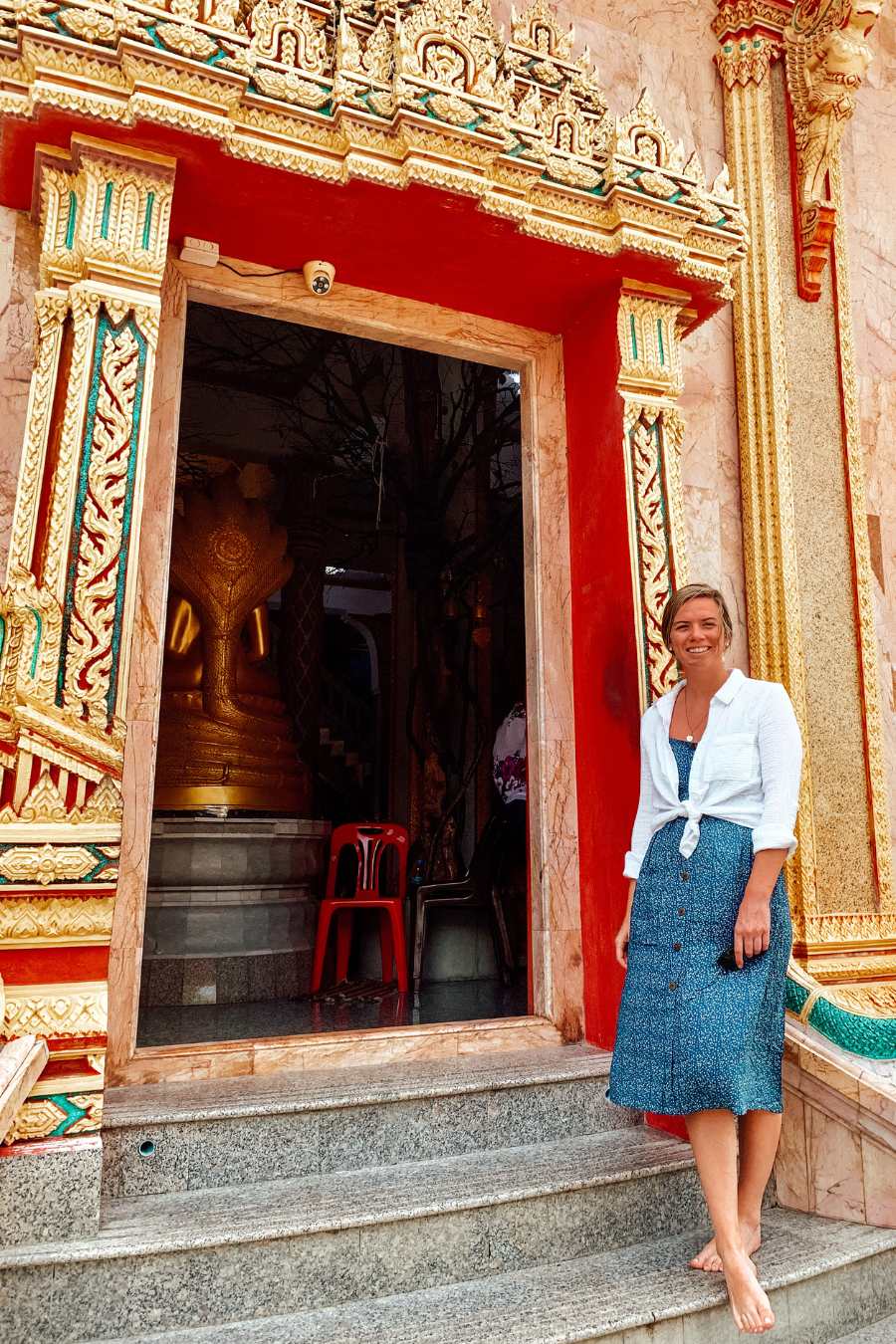
40. Respect the culture
This is so important when backpacking and traveling through Asia. Always respect the local culture and follow their rules. It is straight up disrespectful to do otherwise! Take your shoes off when requested and always have a shawl to cover your shoulders and knees as needed.
41. Don’t flush toilet paper
The septic systems in Southeast Asia are not able to handle toilet paper. Simply do your business and throw it in the nearby trash can. This always feels weird at first but after a day or two, you’ll get used to it!
42. Learn to love the bum gun
Ahh the beloved bum gun. If you haven’t used one before, you are in for a treat! This is the easiest way to clean yourself after using the bathroom and it makes very little mess. Don’t make it weird, just adapt!
43. Drink the local beer
The local beer in Southeast Asia is both GOOD and CHEAP – score! When traveling on a budget, this is the way to go. It’s a bonus that you are also experiencing local culture.
44. Prepare for the locals to want to take your picture
Many children and locals are not used to seeing humans of other cultures and they may ask to take a picture with you. This is coming from a place of kindness and curiosity, not hostility. Be kind in return to others even if you are not comfortable with posing for them!
45. Be ready for rain and big storms
Even during the dry season, the rain is no joke while traveling in Southeast Asia. Be prepared to take shelter and hunker down when a storm comes.
46. Window shopping is a challenge
When it comes to window shopping and picking a place to eat, you will be pressured to enter as soon as you show any interest. Especially when traveling on a budget, it is hard to compare restaurant prices because someone will immediately try to seat you even if you simply glance at the menu. Try and hold your ground and respectfully say no when they insist on your business immediately.
47. Use the local language
It is polite to speak the local language. Try to say hello, goodbye and thank you in each country!
Finance tips in Southeast Asia
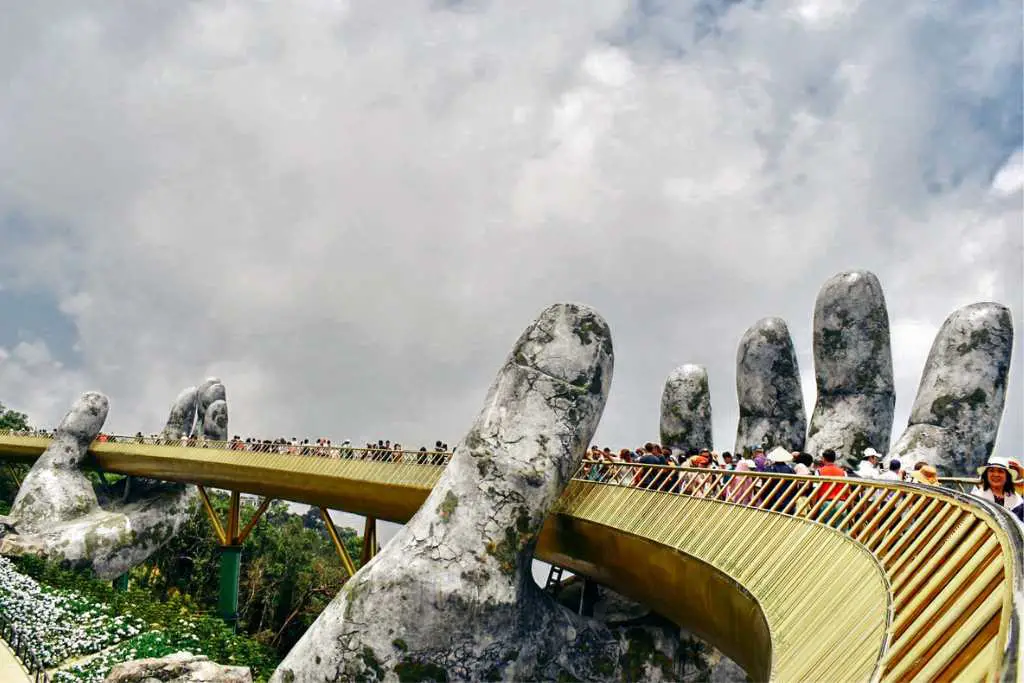
48. Bring extra USD
USD will come in handy at times. We recommend having $100 in USD handy in case you need it while backpacking Southeast Asia.
49. Watch out for ATM Charges
It is mixed between establishments if you can pay with a credit card so you will have to take out cash while traveling in Southeast Asia. We talk about this in more detail in our post about how to prepare for long term travel , but you really should get a debit card with no international ATM fees. We saved thousands on our original trip around the world because of this. Charles Schwab is the best US bank for this!
50. Be ready to haggle
You can haggle for most things in Southeast Asia but especially on Tuk Tuk rides and trinkets! Be respectful of the sellers but also be aware of potential scams. We always like haggling if we are both buying something. Try to work out a 2 for 1 deal if possible!
Here are 10 items every traveler needs. Learn how to quit your job and travel! Budget travel is cool! Here are 40 ways to travel cheaper.
We hope these 50 Southeast Asia travel tips help prepare you for your next adventure! Let us know in the comments if you think we left any off of the list. Happy traveling!
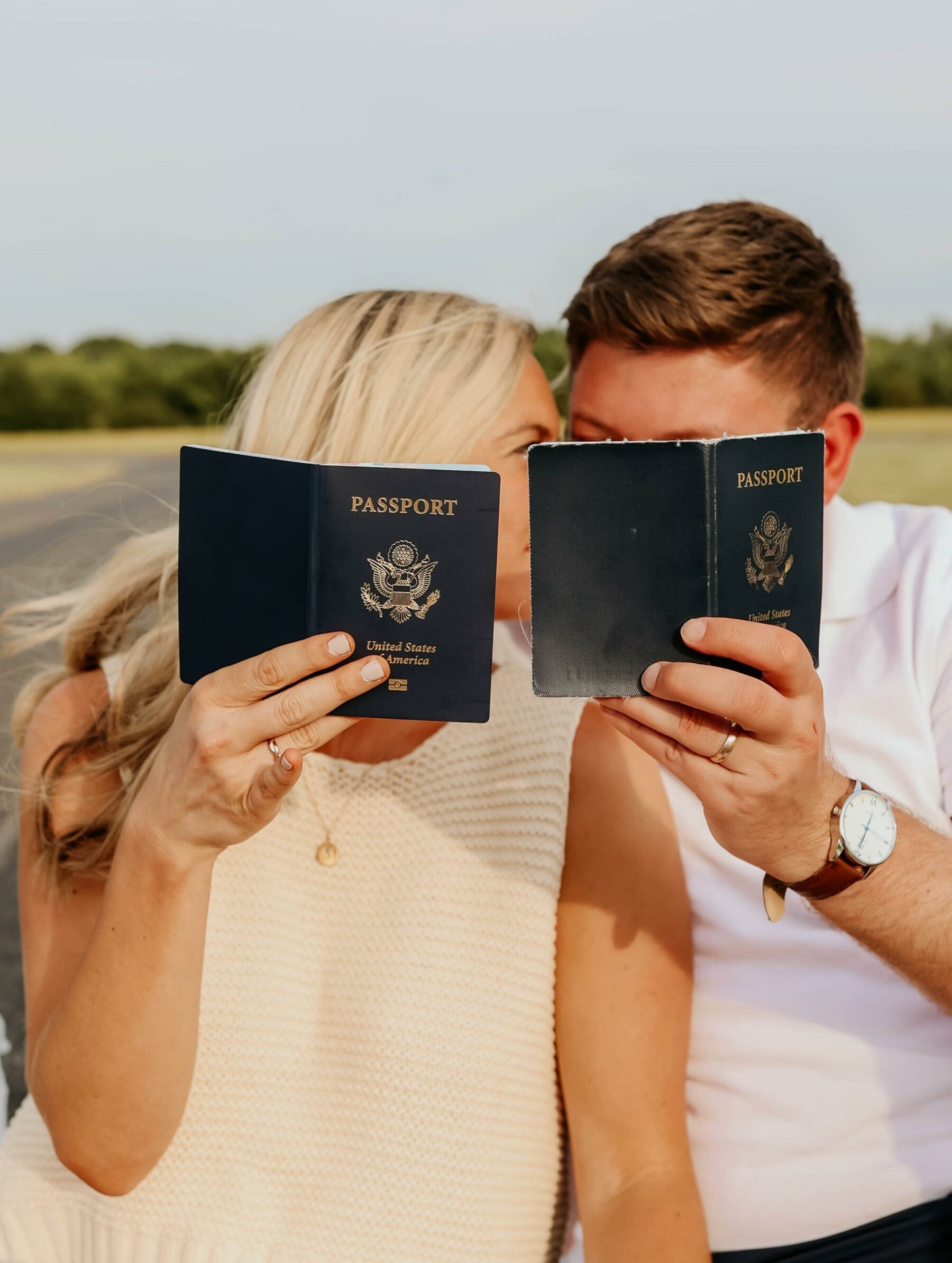
Hi friends! Welcome to The Jet Lag Journey.
This is an online destination that tackles difficult travel questions in order to make worldwide travel practical and accessible. Happy exploring!
Posts to Start with
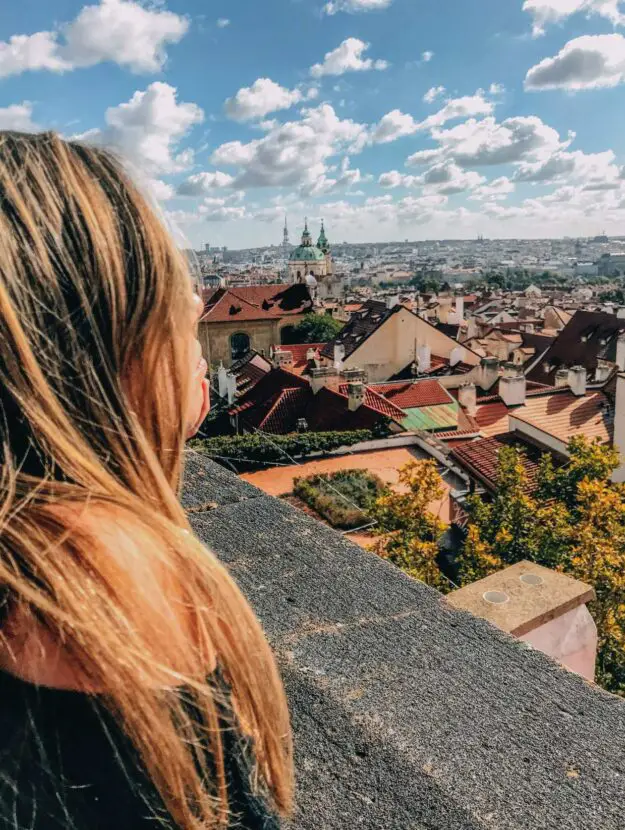
50 Europe Travel Tips: A First-Timer’s Guide to Traveling to Europe
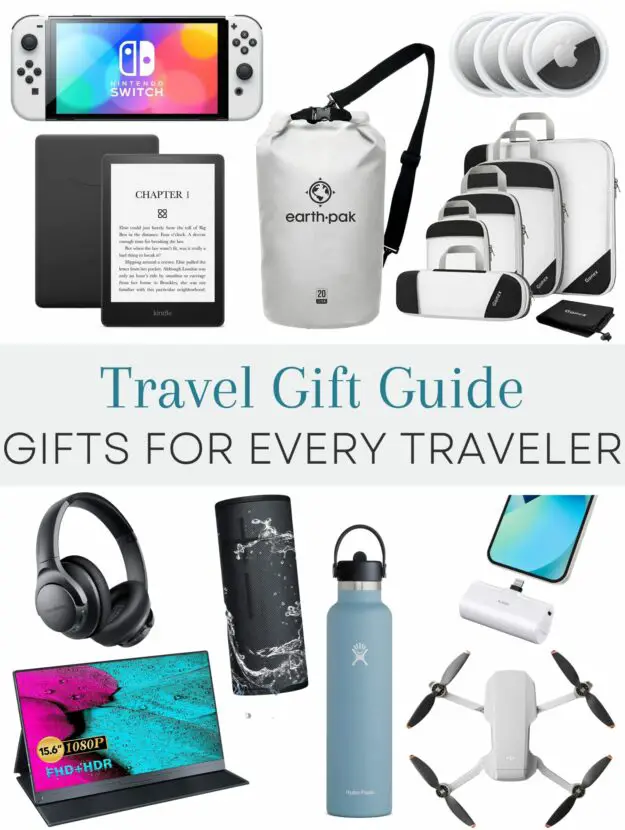
Travel Gift Guide: 25+ Best Gifts for all Travelers in 2023
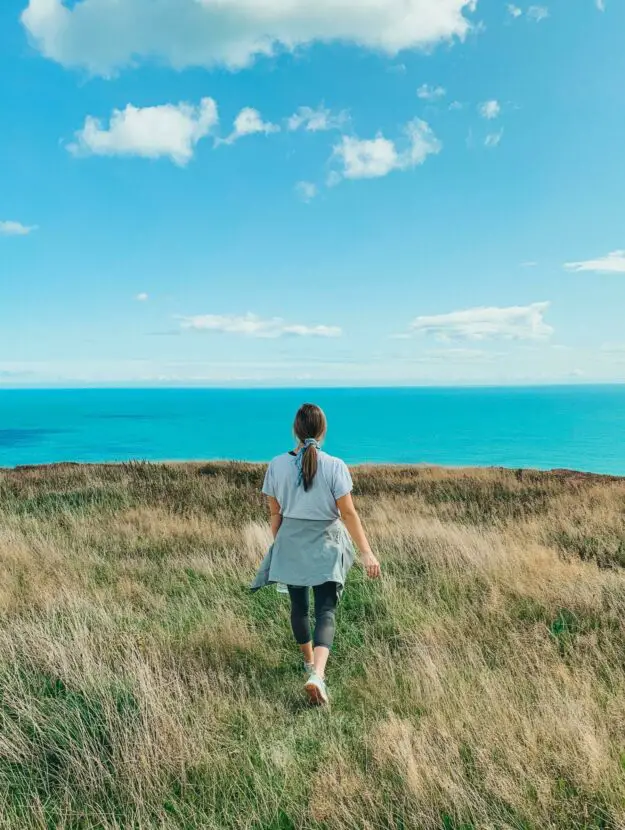
How to Quit your Job and Travel
More posts you might like.
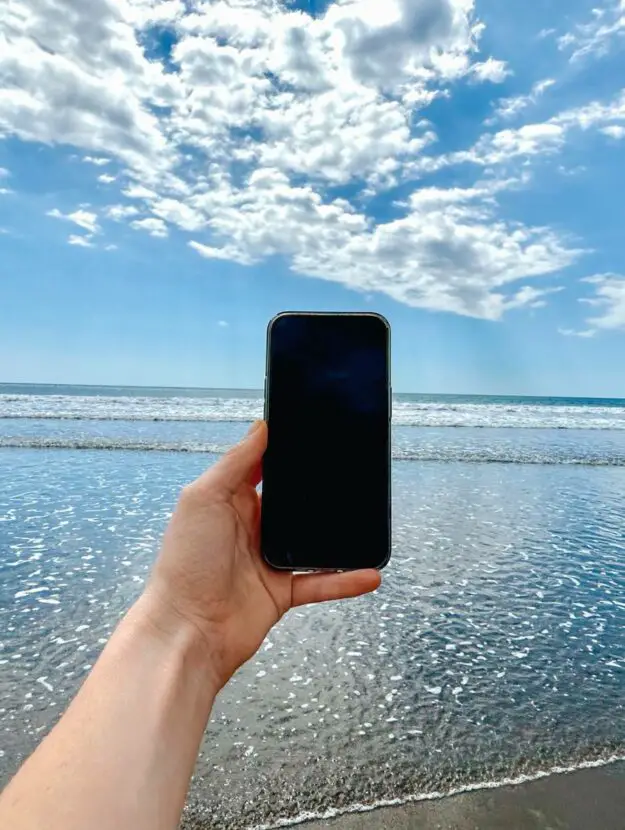
How to Get Data Abroad: The Best International Phone Plans
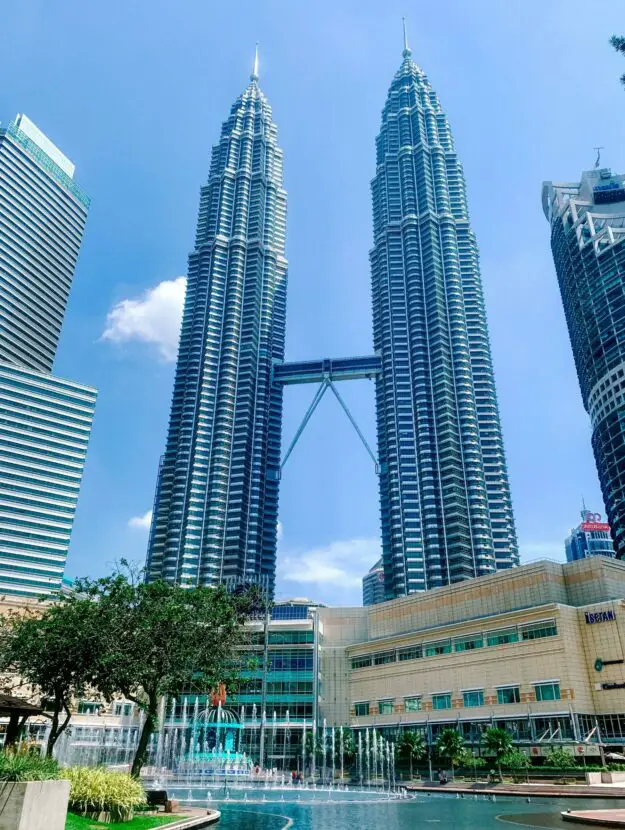
Things to do in Kuala Lumpur: A Complete City Guide
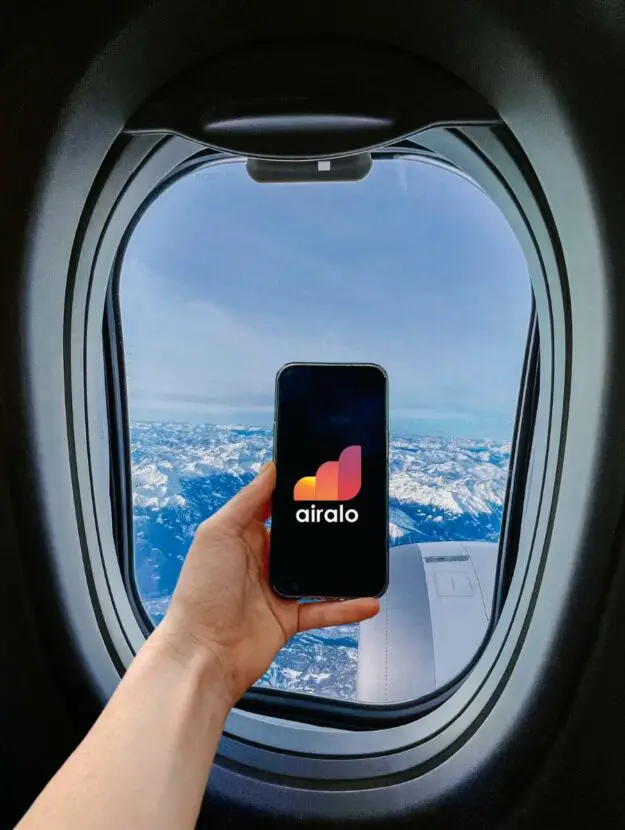
How to Install Your Airalo eSim: A Step-by-Step Guide
Leave a comment.
Save my name, email, and website in this browser for the next time I comment.
What are you searching for?
Nomadic Matt's Travel Site
Travel Better, Cheaper, Longer
Southeast Asia Itineraries: From 2 Weeks to 3 Months
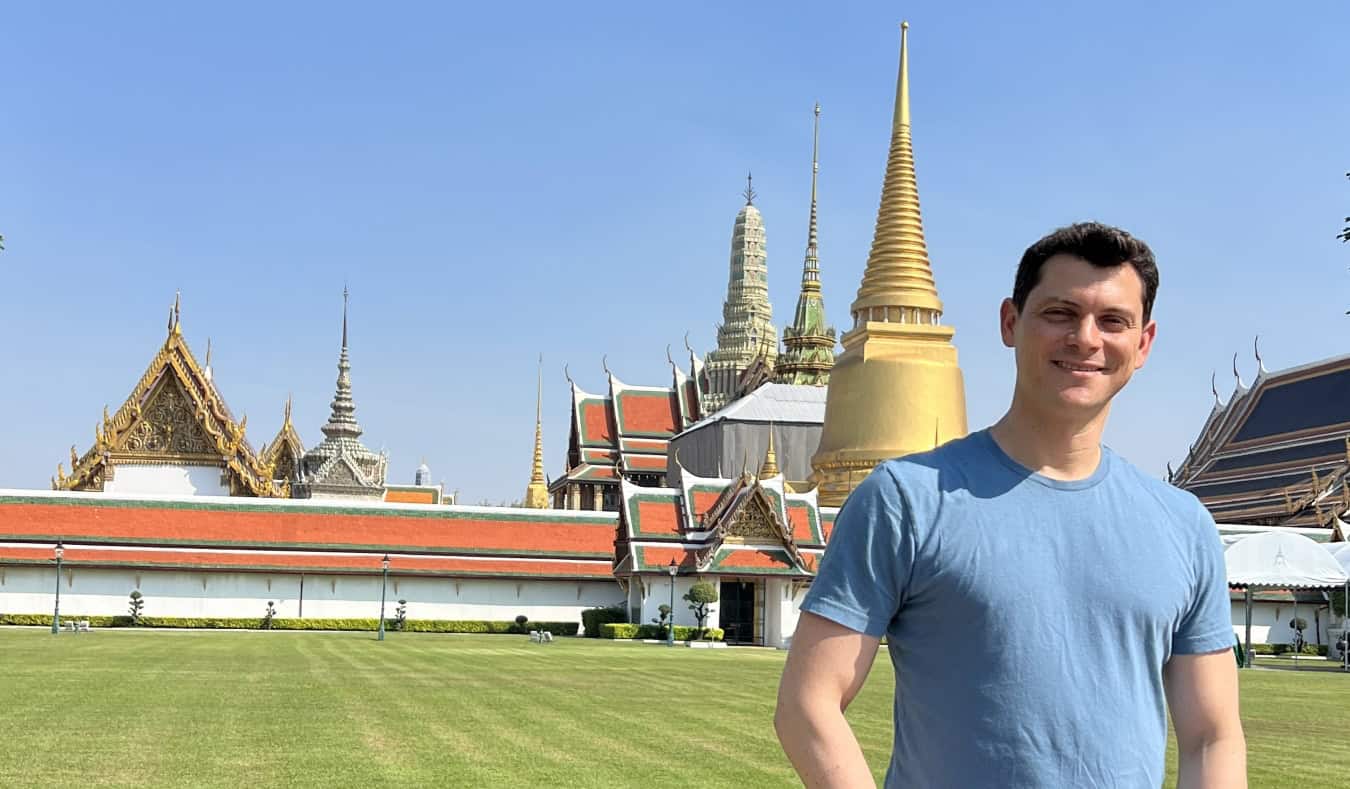
Itinerary planning is a complex beast. There’s no single best route out there. Everyone has different travel desires, goals, and needs (let alone budgets). It’s why I’ve always shied away from discussing itinerary planning for long-term travel .
Showing someone how to plan a trip is one thing, but actually planning a trip for someone else is tricky, because I don’t know what they want or like.
Because, at the end of the day, there is no such thing as a perfect itinerary. You have to go where you want to go and, while suggested routes can help inspire you, at the end of the day, only you can plan the best route for you.
However, that can feel overwhelming, especially when you’re trying to tackle an entire region like Southeast Asia . So, in this post, I’ll provide a few suggested itineraries to help you conquer this fantastic region.
For the two-week itinerary, I’ll break things up by day, but as we get into one-month and three-month territory, you’ll have a lot more flexibility with your time, so I’ll give rougher estimates of how to spend it.
After all, part of the beauty of travel is keeping yourself open to serendipitous moments and experiences!
Table of Contents
Southeast Asia Two-Week Itinerary
Southeast asia one-month itinerary, southeast asia three-month itinerary, the best time to visit southeast asia, what visas do you need for southeast asia.
If you only have two weeks in Southeast Asia, I suggest sticking to just 1-2 countries so that you don’t spend all your time in transit. You’ll also be able to better soak up the atmosphere if you’re not trying to cram too much in. With a more limited time frame, just accept that you’ll have to leave some things to look forward to on your next trip!
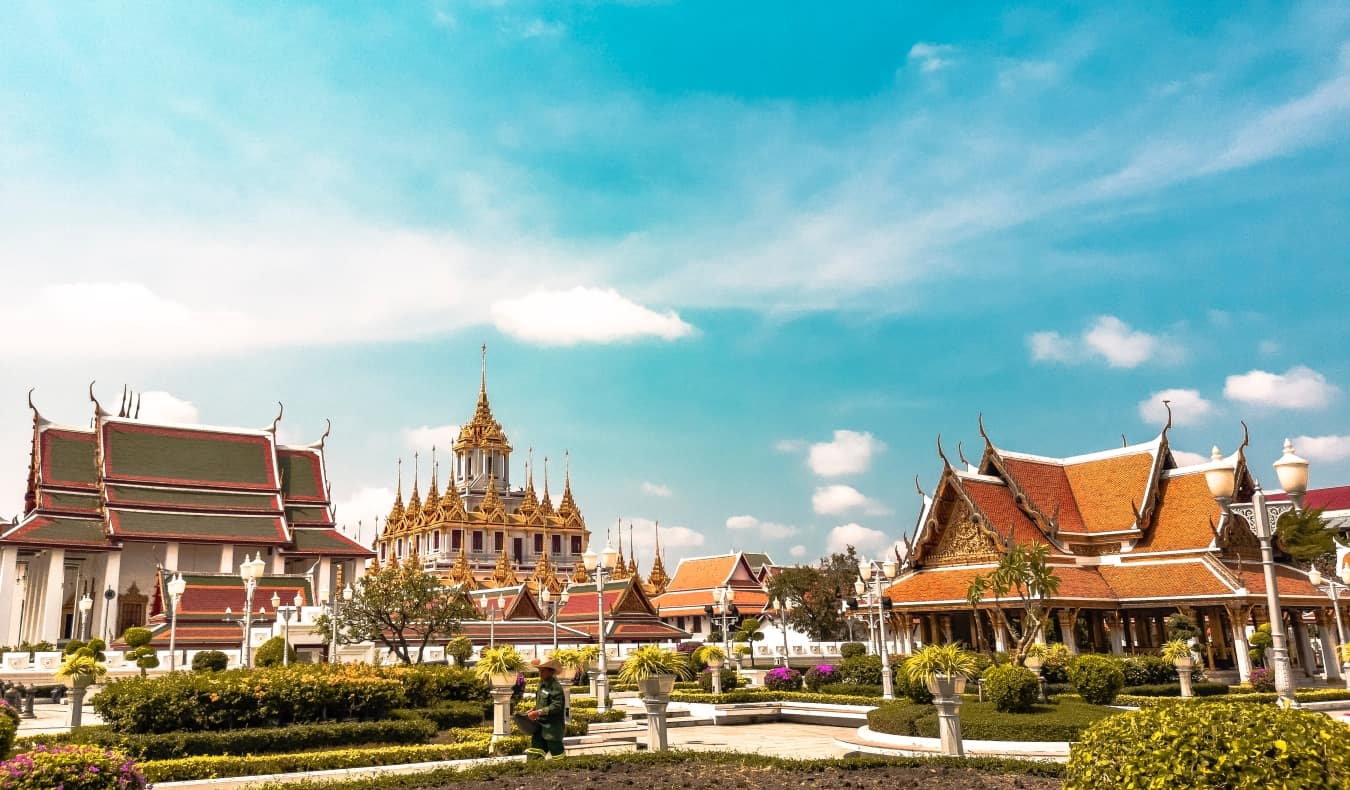
Take a walking tour to get your bearings and get local recommendations from the guide. Bangkok Walking Tours or Free Bangkok Walks are two great free options — just remember to tip your guide at the end!
For a more in-depth tour, you can take a city highlights tour , on which your guide will take you through some of Bangkok’s major attractions.
While the famous Damnoen Saduak floating market just outside of Bangkok exists mostly for the benefit of tourists, I still like visiting it. The tours that go there leave early in the morning and last about half a day. It’s not a great place to shop (prices are much higher than elsewhere), but the area is good for photography and eating.
WHERE TO STAY IN BANGKOK : Lub d Siam – This is a very popular spot for backpackers looking to stay somewhere other than the infamous party district that is Khao San Road. The hostel is modern, the rooms are spacious, and there are plenty of common areas to socialize in, including a café/bar.
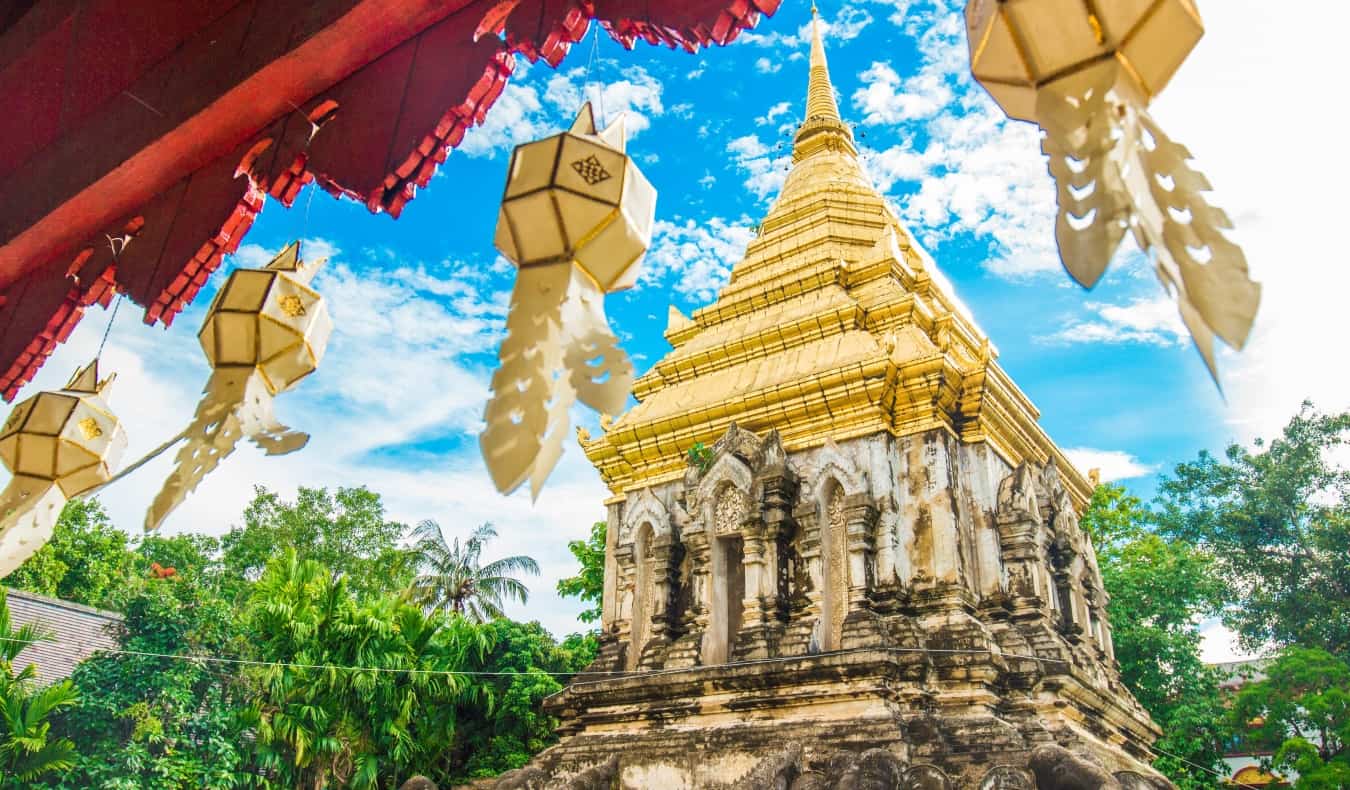
Wat Phra That Doi Suthep is Chiang Mai’s most famous temple (the pagoda supposedly contains relics of the Buddha himself). It offers beautiful views of the surrounding area and, at 6pm each day, you can watch the monks chant. The main other temples are Wat Chiang Man, Wat Phra Singh, Wat Suan Dok, Wat Chedi Luang, and Wat Jet Yot. Walking tours that visit several of these main temples start at 500 THB.
If you want to see elephants, a good way to get up close with them is to volunteer at or visit Elephant Nature Park. This sanctuary near Chiang Mai rescues abused and injured elephants from around the country. It’s a phenomenal place, and after coming here, you will know why you should never ride an elephant. A one-day visit costs 2,500-3,500 THB for adults.
WHERE TO STAY IN CHIANG MAI : Hostel Lullaby – This fantastic hostel in the heart of Chiang Mai was even voted the best in Thailand. Besides the comfortable facilities, there are a ton of perks here, including free bikes, free breakfast, and free Thai boxing, cooking, and yoga classes.
Days 7-9: Chiang Mai to Bangkok Here you have a few options: stay longer in Chiang Mai to do more jungle trekking; head up to Chiang Rai to see the famous White Temple; or take the long way back down to Bangkok, stopping for a night in each of Thailand’s ancient capitals (Ayutthaya and Sukhothai) or spending some time in one of the national forests, such as the incredible Khao Yai National Park .
Once back in Bangkok, you can either head into Cambodia to see Angkor Wat if you’re ambitious, or just hang out in Bangkok for a few more days before your flight home.
If you choose to go to Angkor Wat, here are my recommendations:

Be sure to visit the Landmine Museum. Landmines have devastated the country, maiming and killing thousands. They still cause destruction today, as remaining mines from the Vietnam War (which spilled over into Cambodia) are discovered every year. The museum has an in-depth exhibit that is very worthwhile, as it gives perspective on their use, dangers, and efforts to remove them.
Also, spend a day at Angkor Wat , the ancient site that was the center of the Khmer Empire that once ruled most of Southeast Asia. The temple was built in the 12th century and covers over 500 acres.
While a single-day visit can cover the main temples, this is an amazing site to explore, so I highly recommend two days (at least).
You can hire a tuk-tuk for the day or rent bicycles and explore on your own. Tuk-tuks have room for 3-4 people, making it a cheap and convenient option if you can split the ride with other travelers. You can also take a full-day guided tour to learn even more from a professional.
Admission is $37 USD per person for a day pass, $62 USD for a three-day pass, and $72 USD for a seven-day pass.
WHERE TO STAY IN SIEM REAP : Mad Monkey – This is a fun, lively, and social hostel with a bar, pool, and lots of tours and organized activities to help you meet people and explore the city.
Day 13: Bus back to Bangkok Take the bus back to the Thai capital, where you can spend the last day of your trip exploring more of the many things to see and do in Bangkok , or just simply hang out, relax, and eat all the delicious Thai food you can before your journey home.
Day 14: Departure day Head off to the airport knowing that you made the most of your two weeks in Southeast Asia. Chances are that you only whetted your appetite for traveling through this amazing region of the world, and you might already be planning your next trip on your way back home!
With one month, you’ll be able to take it a little slower, see more places, and get off the beaten path a bit more. You can add another country and leave more flexibility in your itinerary.
Days 1-3: Bangkok Follow the Bangkok itinerary above, and stay for a few more days if you like! There are endless things to do in Bangkok.
For more recommendations, check out my free Bangkok city guide .
Day 4: Bangkok–Chiang Mai With one month, you can choose to take the day train from Bangkok to Chiang Mai. It’s not only cheaper but a nice way to see the countryside. Sure, you “waste” a day, but you see the countryside, experience how Thais take the train, and can eat from vendors who briefly board at every stop.
The day train remains one of my favorite experiences in Thailand. Just make sure you have a good book as the journey is 10-13 hours long.
Days 5-7: Chiang Mai See the Chiang Mai itinerary above. For more recommendations on things to do, check out my free Chiang Mai city guide .
Days 8-10: Slow boat from Chiang Mai to Luang Prabang, Laos After spending your first week in cities, take a load off and drift down the river on a slow boat. These boats generally take two days, stopping overnight at a guesthouse along the way. It’s a beautiful way to see the scenery and recharge a bit from a busy week.
Alternatively, if you want to save time, you can fly between the two destinations, or skip ahead in this itinerary to Vietnam .
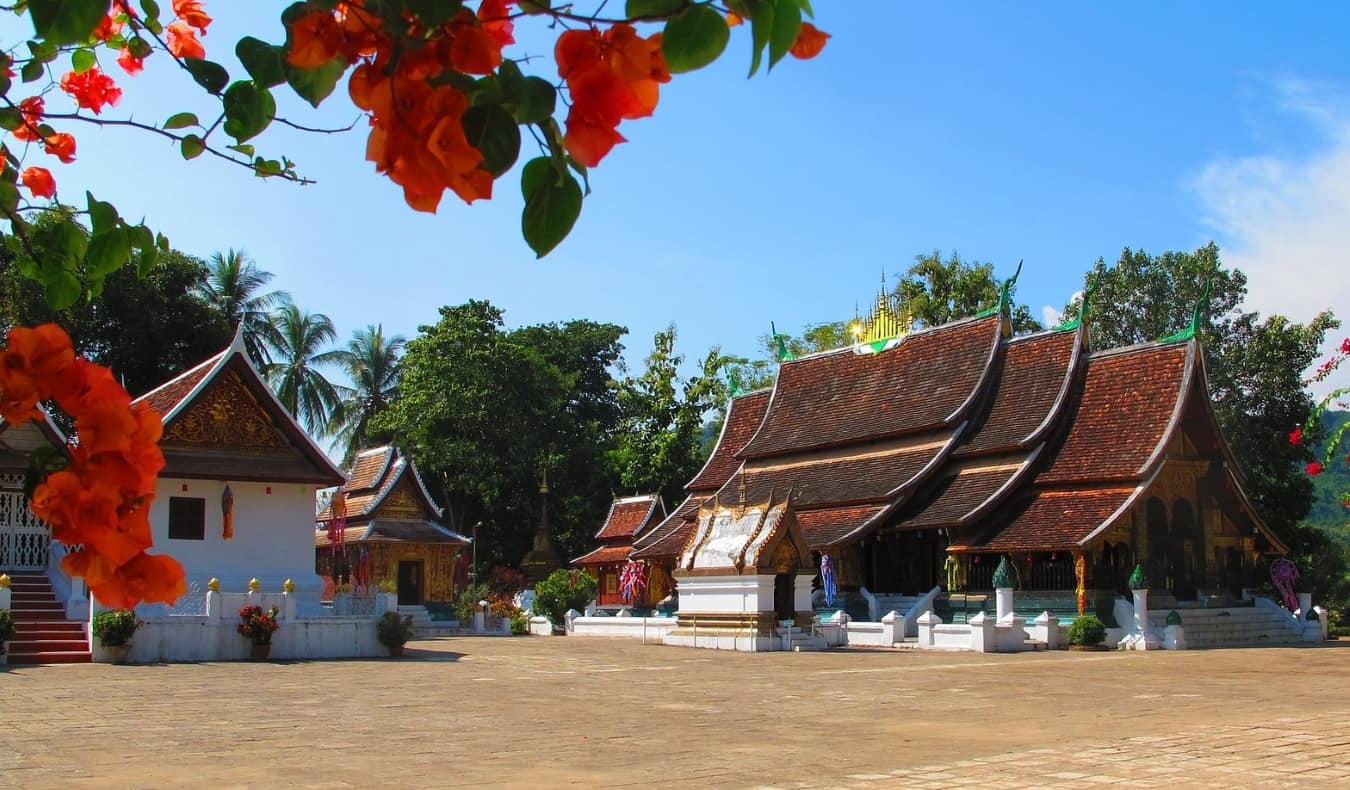
Although it’s small (around 56,000 people live here), there’s a lot to see and do, with dozens of temples, streets lined with French colonial architecture ( this walking tour hits all the highlights and then some ), a bustling night market, river tours , and waterfalls. I came here for three days but ended up staying a week!
Start off with a visit to the “Buddha Caves” (officially, the Pak Ou Caves). They hold over 6,000 Buddha statues that the locals still use for worship. There are standing Buddhas, sitting Buddhas, reclining Buddhas — you name it! You can visit solo or book a guided tour .
While you’re here, don’t miss the iconic Kuang Si waterfalls (you’ve probably seen them on Instagram already). They flow through the limestone-rich jungle and empty into a series of three gently cascading pools. While it’s one of the most popular attractions in the area (avoid the weekends, when it’s super busy), the Kuang Si Falls was also one of the most breathtaking things I saw in Laos.
Other things to do here include:
- The Royal Palace
- Mount Phousi
- Wat Xieng Thong Monastery
- The alms ceremony
- Kayaking the Mekong River
For more things to do, check out my free guide to Luang Prabang .
WHERE TO STAY IN LUANG PRABANG : Downtown Backpackers Hostel 2 – This is a great little hostel with free breakfast, moped rentals, clean dorms, and super helpful staff.
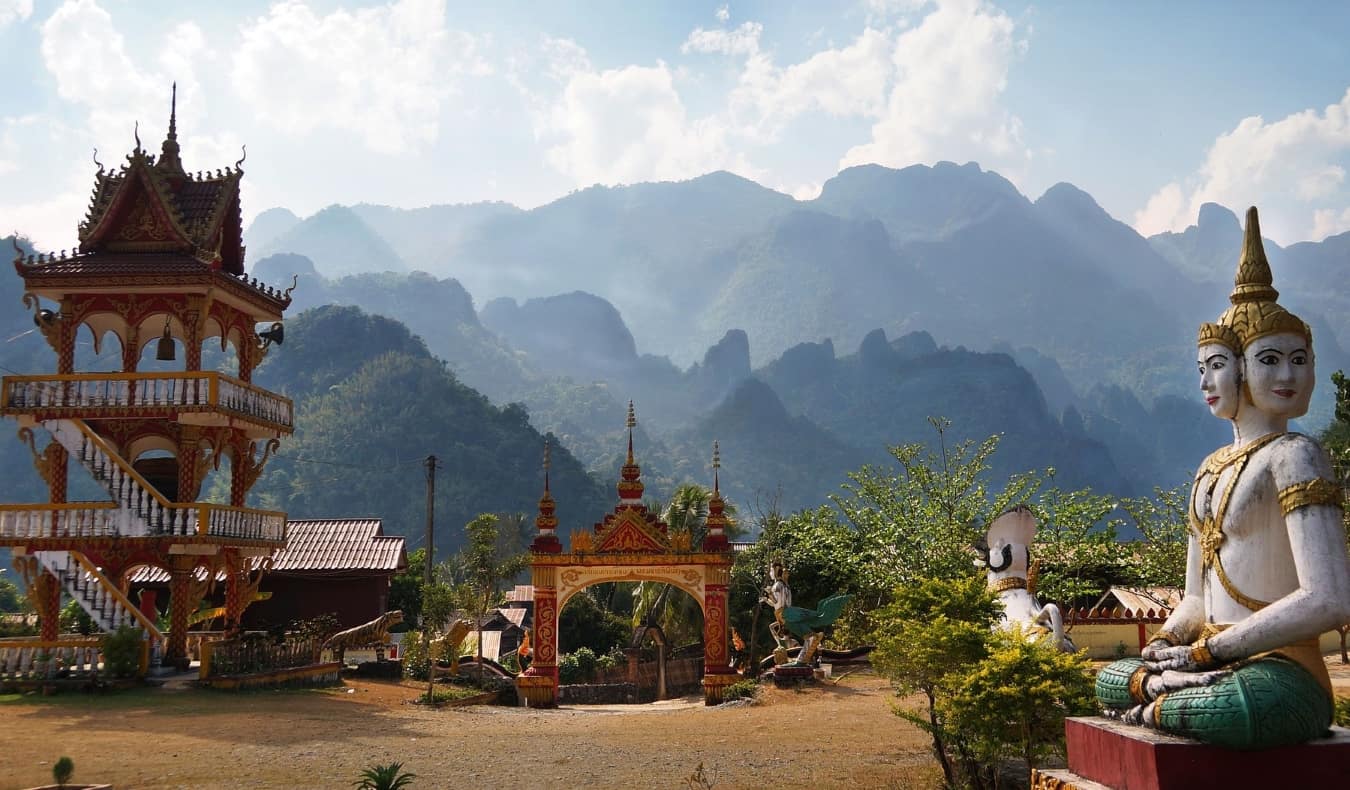
Kick things off with a tubing trip down the river. It’s the best way to relax and stay cool. A tubing and kayaking tour costs around 575,000 LAK.
And if you want to stretch your legs, climb Pha Poak Mountain. It’s only a 30-minute climb to the top, where you’ll be rewarded with an incredible view of the area’s limestone mountains.
Other things to see and do in Vang Vieng include:
- The Golden Cave
- Hot air balloon rides
- The Blue Lagoon
For more things to do, check out my free guide to Vang Vieng .
WHERE TO STAY IN VANG VIENG : Nana Backpackers Hostel – This is a fun, social hostel with a swimming pool, movie room, small gym, and bar with free vodka and whiskey every night from 7pm to 9pm.

Nowadays, the city is a hub for café culture, cheap spas, golden temples, and diverse riverside markets. Much of its historical center has kept its colorful colonial architecture intact too, making it a nice area to stroll around.
Wander the wide boulevards, take in the crumbling mansions, chill out in Chao Anouvong Park, enjoy the flavorful local cuisine (there are a ton of delicious French bakeries here as well).
Make sure you visit Buddha Park, a sculpture park is just 25 kilometers (15 miles) outside of Vientiane. There are around 200 Hindu and Buddhist statues here, all of which appear to be centuries old (they’re not — they were made in the 20th century out of concrete). While not “historic” per se, it’s still worth visiting, as there are all kinds of unconventional designs, including a three-meter (9.8-foot) demon head that you can enter, and staircases from heaven and hell that you can climb. Admission is 15,000 LAK.
You’ll also want to admire the Great Stupa (Pha That Luang). It’s a 44-meter (148-foot) gold-covered stupa (dome-shaped Buddhist shrine) and is the most important monument in the country. Built by King Setthathirat in 1566, its exterior looks like a fortress with high walls. Inside, the walls are covered in Buddhist, floral, and animal imagery. Admission is 10,000 LAK.
Other things to see and do in Vientiane include:
- The COPE Visitor Centre
- Victory Gate (Patuxai)
- Chao Anouvong Park
- Lao Boat Racing Festival
For more things to do, check out my guide to Vientiane .
WHERE TO STAY IN VIENTIANE : Dream Home – This is a fantastic hostel that offers everything you need while staying in the capital. There’s free breakfast, comfy beds, AC, a nightly happy hour at the hostel bar, and a 24-hour reception with friendly staff members.
Days 20-22: Pakse Pakse is the gateway to Laos’ 4,000 Islands (in the Mekong River), so there isn’t a ton to do here other than chill out and relax. It’s a nice place to stop while heading south to Cambodia. Alternatively, you can take a 1.5-hour flight from Vientiane to Phnom Penh to save some time and give you extra days elsewhere.
WHERE TO STAY IN PAKSE : Sanga Hostel – This cozy hostel has super comfortable beds, a restaurant with fantastic home-cooked food (free banana cakes!), and a lovely owner.
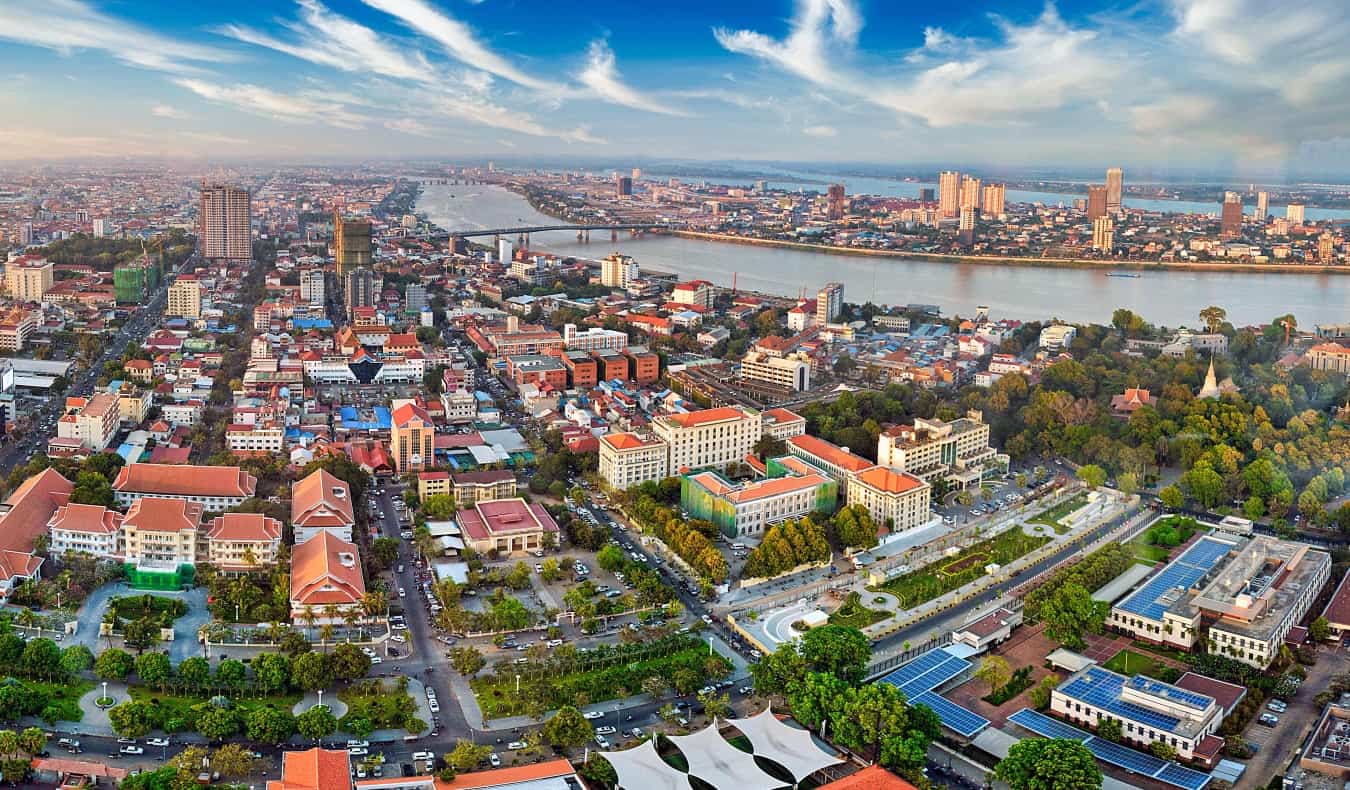
The Royal Palace is home to beautiful flower gardens and the Silver Pagoda, whose floor is made up of more than 5,000 silver tiles; inside is an emerald-covered Buddha and a diamond-covered Maitreya Buddha. The palace also has murals around its outer wall that tell the story of the Ramayana.
On the palace grounds are five stupas, with the two largest to the east containing the ashes of Kings Norodom and King Udung (the two most famous kings of modern Cambodia) and a statue of King Norodom on horseback.
The most important thing to see here, however, is the Tuol Sleng Genocide Museum and the Killing Fields. Tuol Sleng is a former school where the Khmer Rouge interrogated and tortured people in the 1970s. You’ll see rusty beds and torture devices, in sharp contrast to the beautiful trees and lovely jasmine smell in the gardens.
After, head to the Killing Fields. It may not be the most cheerful way to spend an afternoon, but it makes for a hallowed and memorable experience, a testament to the dangers of uncontested power. Admission to the Killing Fields and the Tuol Sleng Genocide Museum is $20 USD. This includes a guided tour so you can get an in-depth look at this haunting place.
For more things to do, check out my guide to Phnom Penh .
WHERE TO STAY IN PHNOM PENH : Mad Monkey – This is a lovely social hostel with a bar, restaurant, beer garden, and swimming pool. They organize all kinds of events and tours, so it’s easy to make friends here.
Days 27-29: Siem Reap Follow the Siem Reap and Angkor Wat itineraries from above.
If you have time, visit Tonle Sap, Southeast Asia’s largest freshwater lake and UNESCO nature reserve. It is 52 kilometers (32 miles) from Siem Reap. Sailing down the river and around the lake gives you a look at how closely Cambodian life is tied to this major waterway. Guided tours to Tonle Sap start at $20 USD.
Day 30: Bangkok Head back to Bangkok for your flight home!
If you have three months to spend, you don’t want to have everything plotted and planned out to the day, like you might want to with the shorter itineraries above. Having flexibility to change plans is a must (and will make your travels much more enjoyable). On a trip of this length, you don’t want to burn yourself out too fast!
With three months, you have enough time to be flexible and still see a lot. I’d recommend rough planning in weeklong chunks.
MONTH ONE: Thailand
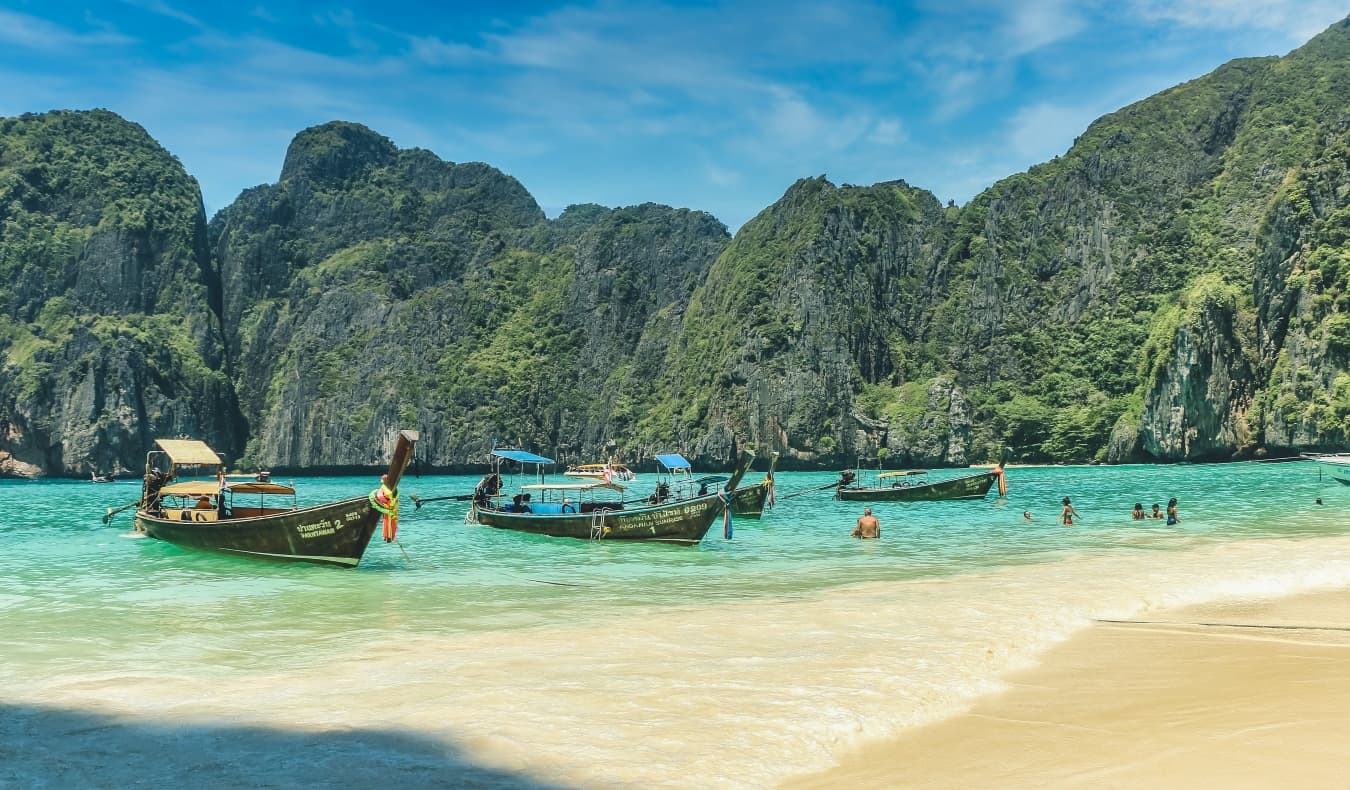
Week 1: Bangkok and Backpacking Kanchanaburi Province Follow the three-day Bangkok itinerary above, and extend your stay by a few days to take things slower and see even more of this vibrant city. You can also do more day trips or even multiday trips to the surrounding region.
When you’ve had your fill of bustling Bangkok, take your time heading north. Kanchanaburi Province is a great place to spend some time, as it’s home to a lush, undisturbed forest, wetlands, and mountains that are perfect for trekking, either on multiday tours or day trips from Bangkok . The area is very biodiverse, with two wildlife sanctuaries: Thung Yai Naresuan, and Huai Kha Khaeng.
However, its history is rather dark. The infamous Death Railway linking Myanmar and Thailand runs through here, which was built during World War II by prisoners of war and civilians. Around 90,000 civilian forced laborers and more than 12,000 Allied prisoners perished in the railway’s construction. The bridge over the River Kwai is also located here, built using POW labor and the subject of both a famous film and a book. While these sights are haunting reminders, they are an essential part of Thailand’s history.
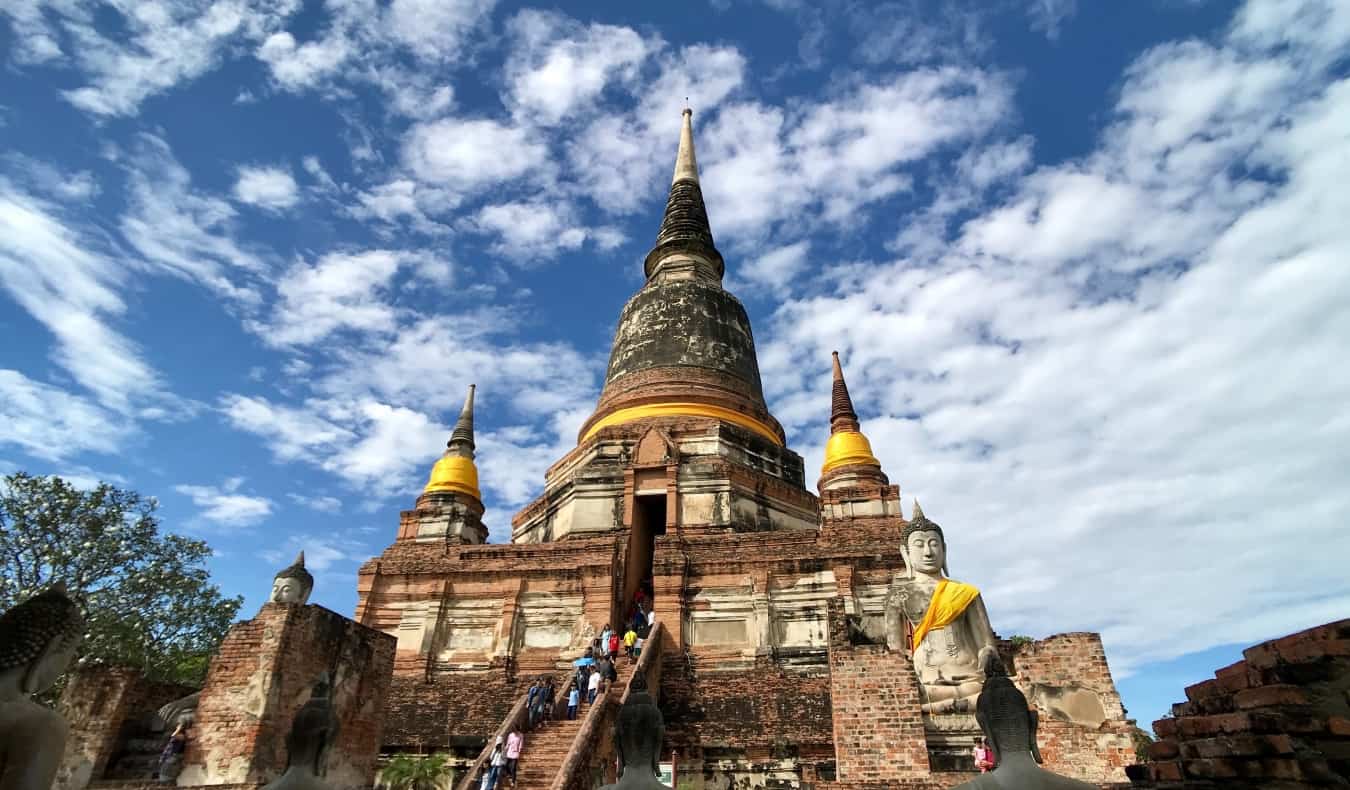
Here are some options to consider for your meandering journey north:
Ayutthaya – Ayutthaya was the capital of Siam from 1350 to 1767, when it was razed by the Burmese during a war. The city’s ruins, with its palaces, temples, monasteries, and statues, form an archaeological park that is now a UNESCO World Heritage Site. It’s about 1.5 hours from Bangkok by train.
You can also visit on a day trip from Bangkok for just 1,105 THB.
Khao Yai National Park – Established in 1962, Khao Yai was Thailand’s first (and one of its best) national park and is now a UNESCO World Heritage Site. It’s visually stunning and empty of tourists but filled with lush flora and fauna, bat caves, and even a few wild elephants. It’s about 2.5 hours north of Bangkok.
There are also day trips to Khao Yai from Bangkok starting at around 2,500 THB.
WHERE TO STAY : Greenleaf Guesthouse – This hostel has the best tour/accommodation deals in the area. Let them know when you’re arriving by train or bus, and they’ll pick you up at the station.
Sukhothai – Sukhothai was the Kingdom of Siam’s first capital city, in the 13th century. There are hundreds of ruined buildings here, including the royal palace and countless temples.
There are actually three ruined cities that make up the UNESCO World Heritage Site, and since they’re a bit spread out, seeing them by bike is a fun way to cover a lot of distance. You can take a full-day or two-hour bike tour with Sukhothai Bicycle Tour .
WHERE TO STAY : Old City Boutique House – This hostel is in a great location, right near the entrance to the historical park. The guesthouse has AC, free breakfast, bike rentals, and friendly owners to help you with whatever you need!
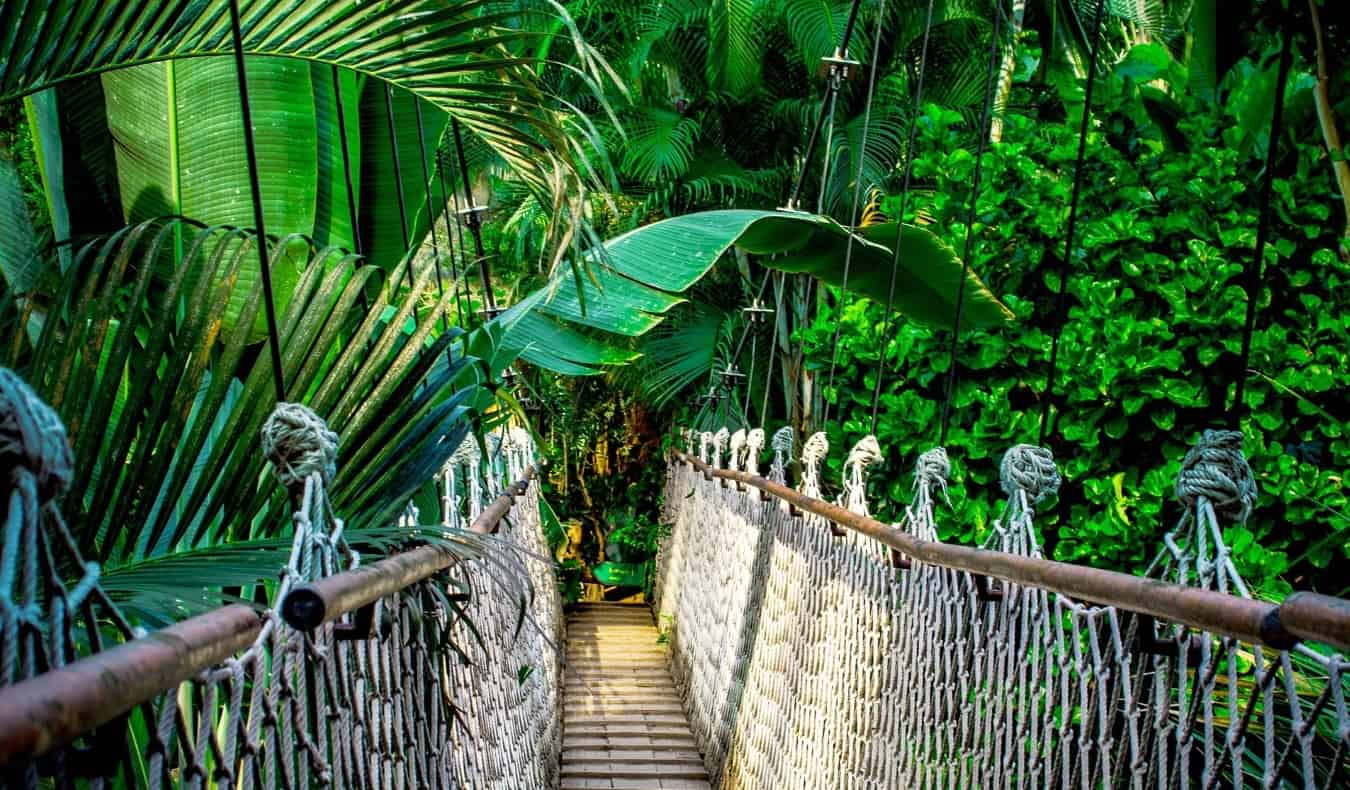
Chiang Mai is the main starting point for all sorts of jungle trekking tours. I like the three-day ones the best, but the longer the tour, the more interesting and secluded places you’ll visit. Be careful with whom you sign up, as many guides simply walk with you and don’t tell you much about the land or wildlife.
Moreover, if you visit a tribal village, make sure that the money stays with the villagers, and that they aren’t being exploited, which unfortunately happens a lot.
If you prefer to do a few different day trips rather than multiday tours, TripGuru Thailand offers full-day tours to Doi Inthanon National Park and the Chiang Dao cave system , among others.
Week 4: Northern Thailand If you want to continue soaking up northern Thailand, a great way to do so is on a motorbike trip. Many people rent bikes and tour the countryside and take in the scenery. This area is particularly popular for a 1–3-day trip. Mai Hong Son Province offers a great loop, starting in Chiang Mai and ending in Pai.
Note: Make sure that if you’re renting a motorbike, you’re comfortable with driving it. And never ever drink and drive. Accidents are incredibly common.
Pai – Pai has grown as a tourist destination in more recent years, but it is still a great place to escape some of the craziness of the larger cities. It’s nestled in rolling green mountains and near incredible hiking trails. Stay on the outskirts of this backpacker town in a lovely little bungalow, rent a bike, traverse the hills, and bathe in the cool waterfalls.
Be sure to take a day trip to the Tham Lot Caves; you can stop off to swim in waterfalls and hot springs on the way.
WHERE TO STAY : The Famous Pai Circus Hostel – This is the best hostel in Pai, with a host of amenities, from air-conditioned dorms, comfortable mattresses, and bamboo bunk beds to an infinity pool, nightly bonfires, a fantastic buffet breakfast, free dinners, and overall, a great atmosphere.
Chiang Rai – Many people visit Chiang Rai on a day trip from Chiang Mai , expressly for the purpose of seeing the White Temple. This intricately designed complex with its reflective pools and shimmering white exterior is designed in the style of a Buddhist temple. However, it’s actually a work of art by Thai artist Chalermchai Kositpipat, and is still currently in the process of being completed.
WHERE TO STAY : Baan Mai Kradan Hostel – This sleek, modern, and centrally located hostel has free breakfast, fast Wi-Fi, comfortable pod-style beds, and plenty of indoor and outdoor common areas to relax in.
MONTH TWO: Laos and Vietnam

Week 5: Slow Boat to Luang Prabang Take the two-day slow boat to Luang Prabang. Once there, follow the Luang Prabang itinerary above, but at a slower pace. You can also spend some time in the surrounding, even smaller villages like Nong Kiew, a sleepy village located a few hours from Luang Prabang. The towering limestone cliffs surrounding it are ideal for experienced climbers, and there are many hiking trails leading to nearby waterfalls and caves. You can take the bus from the city for about 40,000-65,000 LAK.
WHERE TO STAY : Lamorn Guesthouse – This is an incredibly affordable guesthouse located right on the river. The rooms are basic but clean, each with its own private bathroom and air-conditioning.
Week 6: Vang Vieng and Vientiane Follow the itineraries for Vang Vieng and Vientiane above. Then, you can either choose to continue your trip in Laos by heading south to Pakse and 4,000 Islands (in which case, follow the itineraries outlined above), or head on to Vietnam.
If going to Vietnam, you can take an overnight bus to Hanoi or a quick flight from Vientiane. If flying, keep in mind that there are only direct flights a few times a week (otherwise you must connect through Bangkok), so plan ahead if going with that option.
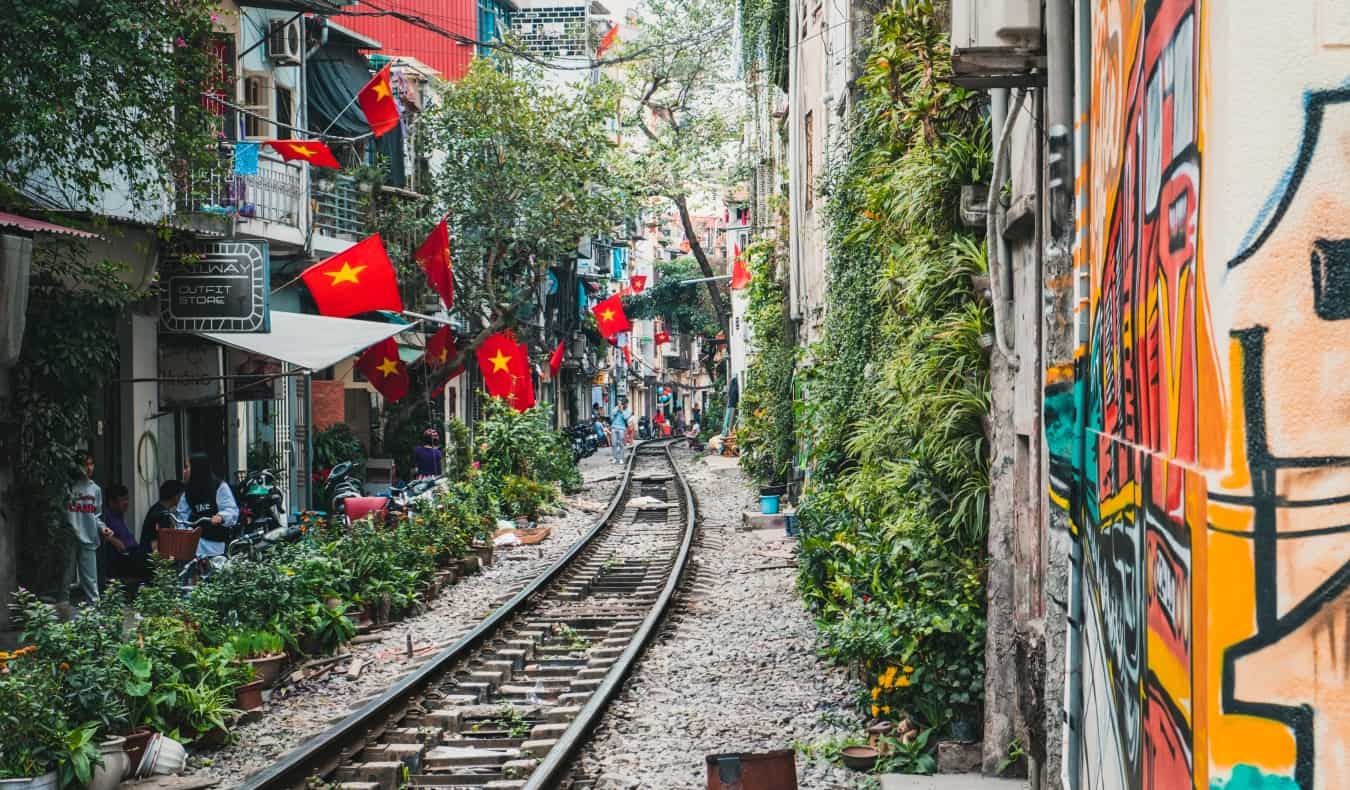
It’s also one of the best places to eat endless bowls of pho, bun cha, or cheap bahn mi from food vendors on just about every street corner.
Start your visit by exploring the narrow streets of the Old Quarter. Its 2,000-year-old streets are a web of shopping opportunities and cheap eateries. There’s also a lot of fascinating Old World architecture that highlights the influence the French had on the area.
Hanoi is also a good base for doing multiday tours to postcard-perfect UNESCO World Heritage Site Ha Long Bay. One of the country’s most popular tourist destinations, the area comprises more than 3,000 islands, all with different activities on offer. Tours here usually last 3-5 days and can include sleeping on a boat or staying on some of the islands around the bay, as well as cave tours and kayaking. If you really want to splash out, take a 3-day luxury cruise .
If you don’t want to do a longer cruise, you can choose a two-day (overnight) cruise or a full-day trip from Hanoi ; however, given that you’re on a three-month adventure, I’d recommend going with the few-day options.
Other things to see and do in Hanoi include:
- The Temple of Literature
- See a water puppet show (an ancient Vietnamese art form)
- Ho Chi Minh Mausoleum
- Dong Xuan Market
- Go on a food tour
- Quan Su Pagoda
For more things to do, check out my guide to Hanoi .
WHERE TO STAY : Little Hanoi Hostel – Located in the heart of the Old Quarter, this hostel has air conditioning, free breakfast, free welcome drinks, and — most importantly — clean, comfy rooms. The staff will help you book tours of the city and surrounding region.
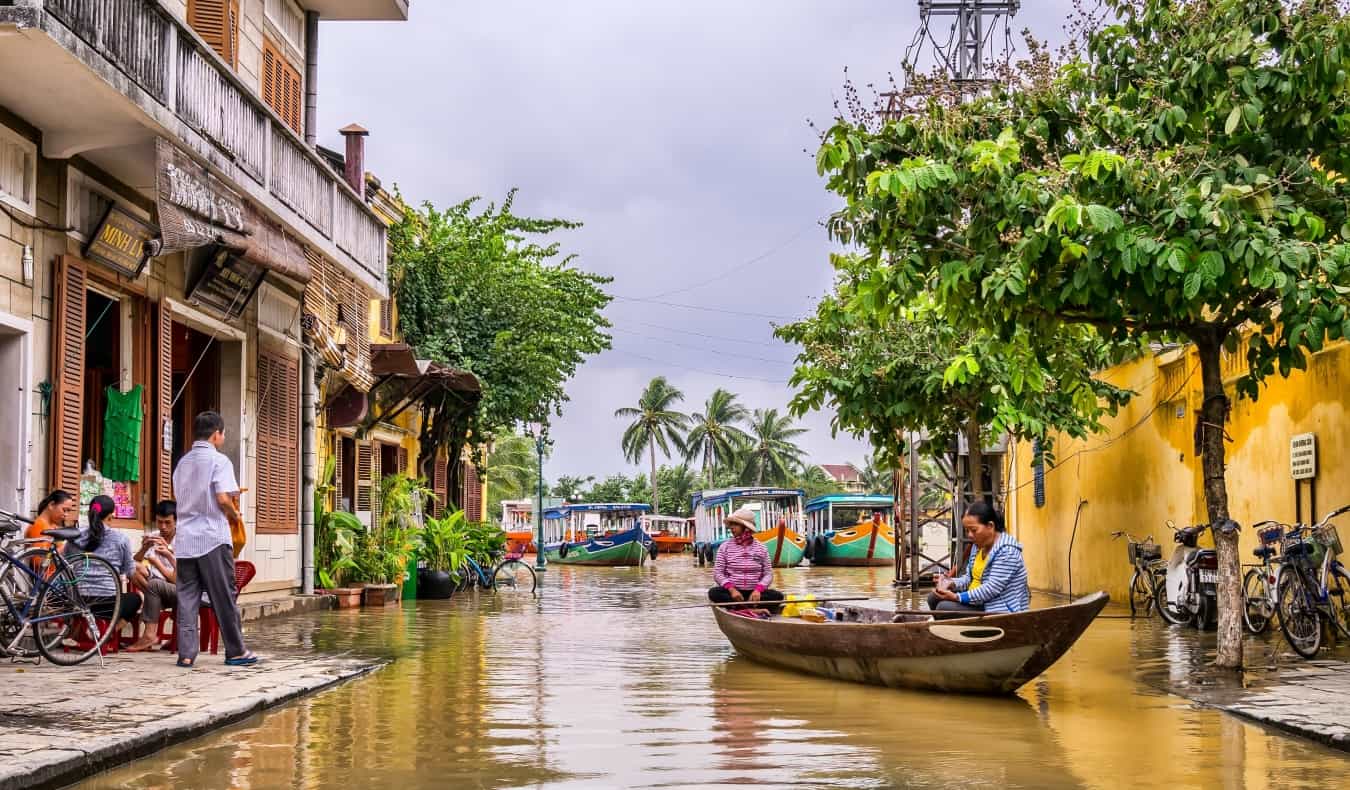
It’s also an extremely popular place for ordering tailored clothing, which is one of the main reasons people come here. You can get anything made here — from custom-made suits to gowns to sundresses to leather boots to sneakers. The tailor shops will even mail all your goods home to you.
Otherwise, Hoi An makes for a relaxing destination in an otherwise hectic country, with the beach only a 15-minute bike-ride from town.
Some of the top things to do here include the following:
- Explore My Son Sanctuary: – This is one of the most important sites relating to the ancient Kingdom of Champa and is said to have been Vietnam’s religious and intellectual center. Even in their ruined state, the remaining Hindu temple structures are impressive. Go in the morning to beat the crowds and heat. A morning guided tour with transportation from Hoi An is the best option.
- Relax on the beach – An Bang and Cua Dai beaches are both close to Hoi An and great places to spend an afternoon. Cua Dai is designated as one of Vietnam’s five UNESCO World Heritage sites; both beaches offer soft white sand and excellent beachside restaurants.
- Attend the Full Moon Festival – Hoi An’s Full Moon Festival is held on the 14th day of the lunar cycle each month and is probably the best time to visit the city, if you don’t mind the crowds. This is a fun time to party with locals, as the streets come alive with folk music, plays, and dancing!
- Learn about (and eat!) all the food – Vietnamese cuisine is fresh, flavorful, and delicious. Hoi An offers a few ways to dive into this incredible cuisine: take a food tour , do a cooking class , or learn how to make Vietnamese coffee !
WHERE TO STAY : Vietnam Backpackers Hoi An Hostel – Located conveniently between the Old Town and the beach, this hostel has a great outdoor pool and terrace, tons of social events, small dorms (max. 6 beds), and rain-head showers with excellent pressure. If you stay in a private room, you’ll even get a free bicycle to use (rentals are also available if you’re staying in a dorm).
Ho Chi Minh City – My favorite Vietnamese city after Hoi An, Ho Chi Minh City (formerly known as Saigon) is the largest and most chaotic in the country. Motorbikes, bicycles, cars, and rickshaws go wherever they please, and lots of street stands and markets spill into the traffic lanes.
It’s a metropolis with a billion things happening at once, and a lot to offer travelers. Stay a few days here to take in the wonderful shops, fantastic nightlife, delicious food, plentiful historic sites, and interesting (though propaganda-heavy) museums.
WHERE TO STAY : The Hideout – This is a conveniently located, social hostel with super clean rooms, free beer at the bar every day, and showers that you can use even after you check out. They organize many tours of the city and area as well.
MONTH THREE: Cambodia
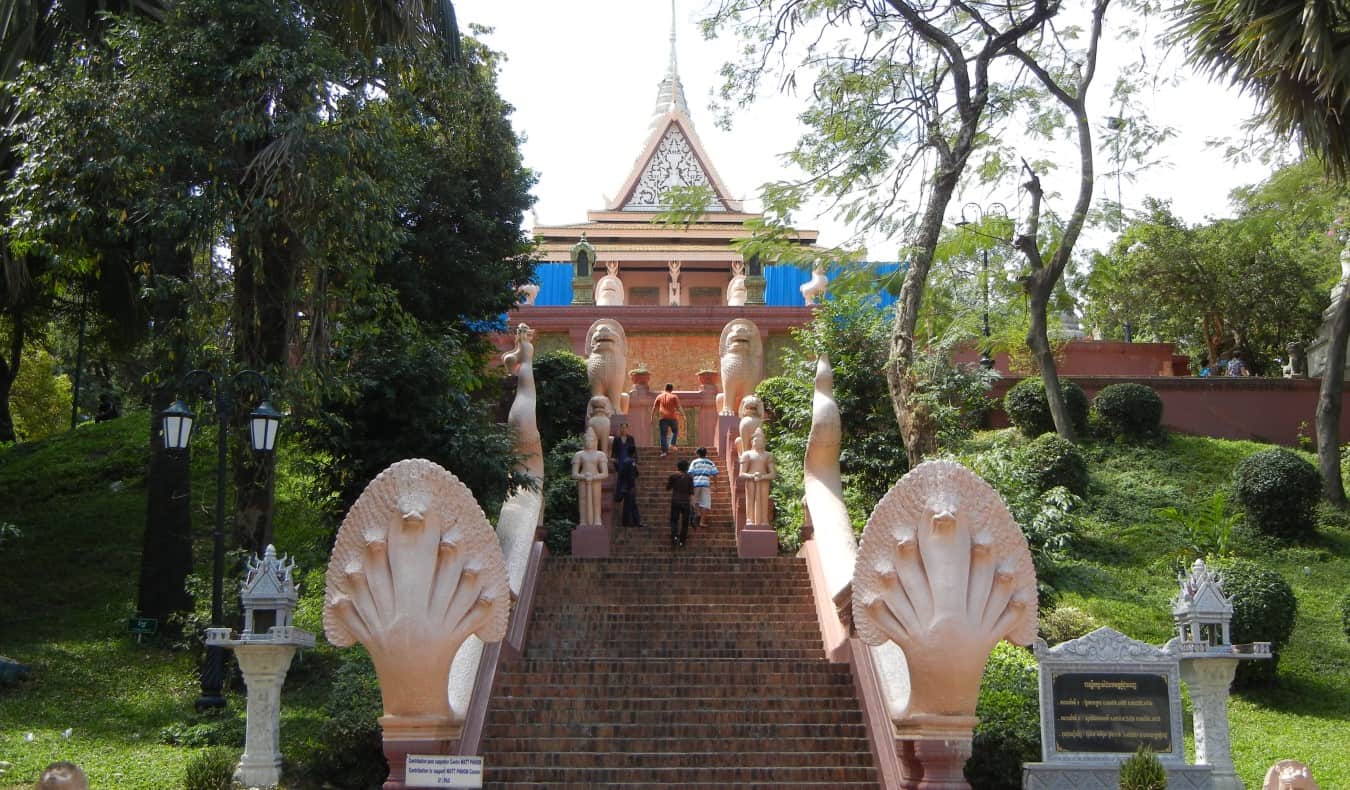
If you’re looking to soak up some sun, Independence Beach and Otres Beach are probably your best bets. But mainly, Sihanoukville is a jumping-off point for other islands and beach towns in the area, such as:
Koh Rong – This island is a 45-minute ride from Sihanoukville. If you’re pressed for time, you can do it in a day trip, but stay overnight if you can. The beaches here are way better than on the mainland (and a lot less polluted), and there’s great snorkeling and diving.
Bokor National Park – Hike through a stunning rainforest or see the atmospheric ruins of the French aristocracy for whom Bokor was a big drawback in the day. You’ll have some amazing views, and there are ruins, waterfalls, and temples all around.
Kep – This quaint beach and fishing village is a quiet version of Sihanoukville but without a party atmosphere, therefore a nice place to relax near the ocean. It’s famous for its pepper crab and empty beaches. Sure, it’s quite sleepy and there’s not a lot to do, but it’s the perfect place to relax, read a book, and eat all the delicious crab. You can also spend some time on nearby Rabbit Island (Koh Tonsay), a secluded and charming escape from the world if you’re looking to disconnect.
Kampot – This is another quiet town on the coast. Most people come here to enjoy the scenic riverside views as well as the rolling hills and pepper farms that surround the city. The area used to be a getaway for the French, so you’ll see old colonial architecture around. At night, the street near the old bridge is lined with fruit shake vendors. Try a million — the city is famous for them. Also, if you only do one thing in this entire itinerary, make sure it’s eating the ribs at the Rusty Keyhole — they are some of the best ribs I’ve ever had.
Week 11: Siem Reap and Angkor Wat Follow the above suggestions for Siem Reap and Angkor Wat but at a slower pace. There’s a lot to see and do in the area. You can easily spend several days just exploring Angkor Wat. You can also do more day trips into the surrounding region.
A great way to spend a day is to head to Koh Ker, located in the jungle around 2.5 hours from town. Koh Ker was briefly the capital of the Khmer Empire, and many of the temples here are over a thousand years old. It’s a massive archeological site that sees far fewer tourists than Angkor Wat.
For another fun day trip, head to Phnom Kulen, considered the country’s most sacred mountain. It’s located just 50 kilometers (31 miles) from Siem Reap and offers some amazing jungles, hiking, and picturesque waterfalls where you can take a dip to beat the heat. You can easily spend a day here. If you head up to the summit, there are some great views, as well as a large reclining Buddha statue. Try to arrive early, as the park fills up by lunchtime.
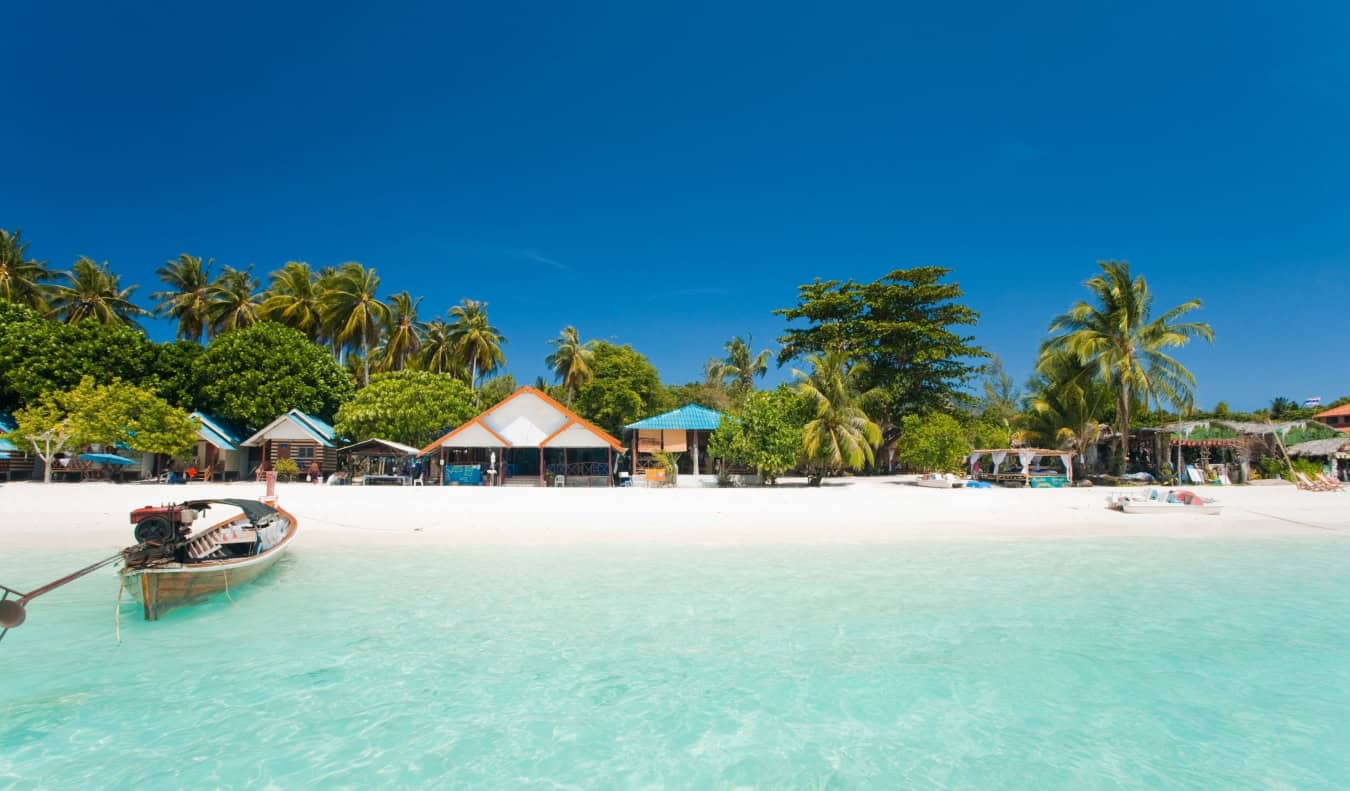
There’s seemingly an island for every type of traveler here. Some are overdeveloped, while others only have a single bungalow. Some of my favorites are Ko Samet, Ko Taruato, Ko Lanta, Ko Chang, Ko Tao, Ko Jum, Ko Lipe, Ko Samui, and the Similan Islands. You could easily spend weeks (or months) bopping around to different islands, but if you’re on your last week, just choose one or two, depending on what you’re looking for.
Some recommendations to get you started:
Ko Lipe – This lesser-known island is one of my favorite places in the world. There are amazing seafood meals, beautiful beaches, and warm waters in which to swim and snorkel . I came for three days and ended up staying for a month. In the last few years, it has become more developed, and it’s not the sleepy little island it used to be, but it’s still way less touristy than many other destinations in Thailand.
Phuket – Phuket is the biggest destination for tourism in Thailand. There are great beaches and amazing activities on this island. While most visitors stick to the overdeveloped south, if you stay away from Patong Beach, you can avoid most of the crowds. In fact, the northern part of the island is one of my favorite places to visit in all of Thailand.
Ko Phangan – This island is home to the infamous Full Moon Party , one of the most famous parties in the world, with a lot of drinking, dancing, and drugs. Each bar has its own sound system, so you’ll hear different music loudly blasting onto the beach every few feet. The beach itself is lined with people selling alcohol, fire dancers putting on shows, and little booths selling glow-in-the-dark face paint.
Ko Tao – If you’re looking to dive in Thailand, go to Ko Tao , which caters specifically to divers. If you dive here, be sure to see Elephant Head Rock, as the reef is home to plenty of fish, snappers, rays, and turtles. Day trips start at 5,900 THB for two dives, including equipment and park fees. If you’ve never dived before, a day trip that teaches you all the basics starts at 2,500 THB while a four-day open water course starts at 11,000 THB.
After your time in the islands, head back to Bangkok for your return flight home.
If you’ve got even longer, this region has so much to offer — from Malaysia to Singapore to Indonesia and more!
The best time to visit Southeast Asia largely depends on your preferences, where exactly you’re going, and what you plan to do. But generally, the dry season, spanning from November to April, is prime time for travelers. During these months, countries like Thailand, Vietnam, Cambodia, and Laos boast sunny skies, lower humidity levels, and comfortable temperatures.
If you don’t mind occasional rain showers, the shoulder season (from May to October) is much less crowded. You’ll get lower prices on accommodations too. July to September is the peak holiday season and when you can expect to pay the highest rates.
This is all a vast generalization though, as it’s a big region and conditions vary drastically depending on where you are. Be sure to check my Southeast Asia Travel Guide and specific country guides for more information.
U.S. citizens don’t need a visa for many countries in Southeast Asia, and where a visa is required, it’s usually pretty easy to get. Assuming the purpose of your trip is tourism only, here are the latest visa requirements:
- Thailand: U.S. citizens can enter Thailand visa-free for up to 30 days.
- Vietnam: U.S. citizens need a visa to enter Vietnam. The easiest option is an e-visa through the Vietnam Immigration website. The e-visa is valid for a maximum of 90 days and does not allow for renewal from within the country. You can also get one through a Vietnamese embassy or consulate.
- Cambodia: U.S. citizens can get a visa on arrival at major entry points or apply in advance for an e-visa. Both options typically allow for stays of up to 30 days.
- Laos: U.S. citizens need a visa to enter Laos. Visas can be obtained on arrival at major entry points or in advance through a Laotian embassy or consulate. You can extend the visa for up to 60 days through the Department of Immigration in Vientiane.
- Myanmar (Burma): U.S. citizens need a visa to enter Myanmar. You can either get an e-visa online in advance or apply through a Burmese embassy or consulate.
- Malaysia, Indonesia, Singapore, and the Philippines: U.S. citizens typically do not need visas for short stays (usually up to 30 days) in any of these countries.
Visa requirements do change periodically though, so be sure to check before your trip in case any of the above has changed. Also ensure that your passport is valid for at least six months after the end of your trip and that you have enough blank pages for entry visas. While not all countries require this, most do!
Southeast Asia is one of the best regions to backpack in. It’s fun, affordable, safe, and has something for everyone. But it can be tricky to plan a trip here, as there is a ton to see and do. So, as you try to craft the perfect Southeast Asia itinerary, just keep in mind that plans change. You meet people or learn about something new, and all of a sudden your meticulous preparation goes out the window.
These days, I leave much more room in case plans change — because they always do. Give yourself that wiggle room. That way, no matter what comes your way, you’ll be able to adapt.
Be flexible. Go slow.
That’s how you plan an amazing itinerary. Not only to Southeast Asia but anywhere in the world!
Book Your Trip to Southeast Asia: Logistical Tips and Tricks
Book Your Flight Use Skyscanner to find a cheap flight. It is my favorite search engine because it searches websites and airlines around the globe, so you always know no stone is being left unturned!
Book Your Accommodation You can book your hostel with Hostelworld as it has the biggest inventory and best deals. If you want to stay somewhere other than a hostel, use Booking.com as it consistently returns the cheapest rates for guesthouses and hotels.
Don’t Forget Travel Insurance Travel insurance will protect you against illness, injury, theft, and cancelations. It’s comprehensive protection in case anything goes wrong. I never go on a trip without it, as I’ve had to use it many times in the past. My favorite companies that offer the best service and value are:
- Safety Wing (best for everyone)
- Insure My Trip (for those over 70)
- Medjet (for additional evacuation coverage)
Looking for the Best Companies to Save Money With? Check out my resource page for the best companies to use when you travel. I list all the ones I use to save money when I’m on the road. They will save you money too.
Want More Information on Southeast Asia? Be sure to visit our robust destination guide on Southeast Asia for even more planning tips!
Got a comment on this article? Join the conversation on Facebook , Instagram , or Twitter and share your thoughts!
Disclosure: Please note that some of the links above may be affiliate links, and at no additional cost to you, I earn a commission if you make a purchase. I recommend only products and companies I use and the income goes to keeping the site community supported and ad free.
Related Posts
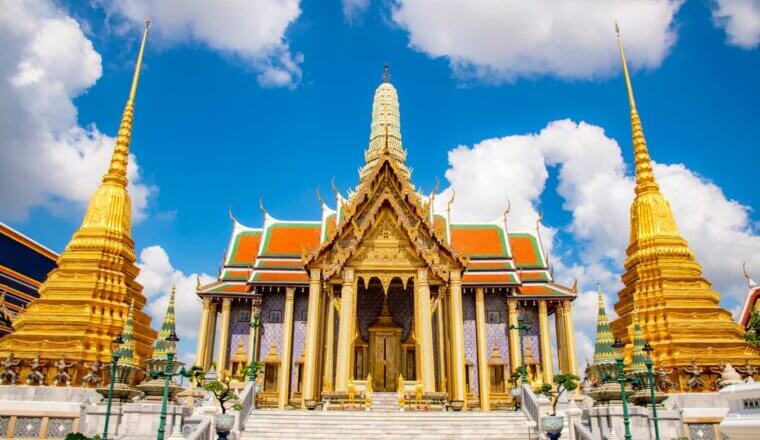
Get my best stuff sent straight to you!
Pin it on pinterest.

53 Essential Travel Tips for Backpacking Southeast Asia
By: Author Taylor Lorenz
Posted on Last updated: 03/27/2023
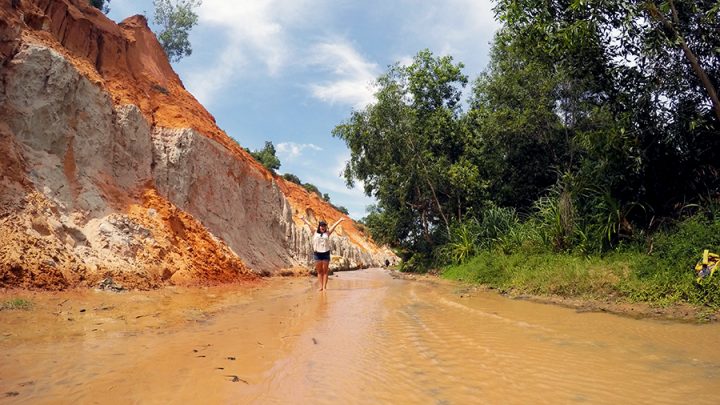
Backpacking Southeast Asia is full of surprises for both new and seasoned travelers in the area. And with these travel tips I promise you will be way more prepared to travel Southeast Asia and know what to expect. Trust me when I say that some things you don’t want to be a surprise.
I’m sharing my best Asia tips on saving money, necessities to pack (it’s a good time to treat yourself to a travel gift or two), how to keep healthy and the top things you must know when you backpack Southeast Asia. But make sure you also know the basics of how to travel safely too. The only place that most of these don’t apply to is Singapore .
Table of Contents
Need to Know Tips for Backpacking Southeast Asia
Do not leave for your trip without reading every one of the Southeast Aisa travel tips in this category. These are the basics for backpacking Asia and the most important.
1. Always have toilet paper – There is never any around, but when you do find some, stock up! Seriously you will realize that you need it when travelling Asia.
2. Research cab fares before you arrive – One of the biggest scams in Southeast Asia is with cabs ripping people off. Know how much it should cost to get from where you are arriving to your accommodation. You can usually figure out what cabs should cost by asking others you meet on the road. Or find out what cab companies are trusted. Email a hostel and ask.
3. Know if there will be an ATM – You won’t have a problem with finding ATMs in most of Southeast Asia, but there will be the odd spot where there are none. Plan ahead! Some examples are El Nido, Philippines and Koh Rong, Cambodia.
4. Wifi is everywhere, no need to buy SIM cards – Free wifi is honestly way easier to come by than expected and for the most part it is decent. That being said, SIM cards are super cheap so you’re not breaking the bank buying them. But why spend the money when you could easily save? And if you’re worried about getting lost, download Maps.me, an app that doesn’t need wifi to use maps!
5. Always have USD – If you ever run out of the local currency USD will be accepted. Most boarders require you to pay in USD as well. I recommend getting some in your home country and bringing it with you, though some countries (like Cambodia ) dispense USD as well as the local currency. I use XE Currency for up to date conversions.
6. Research scams to lookout for before you go to a new country/cross borders – A lot of scams in SE Asia are common, so make sure you know what to look out for. Most have to do with cabs, renting scooters, and crossing borders.
7. Weather! – No, unfortunately the weather is not always perfect and sunny and warm in Southeast Asia. Parts can get quite cold (like snow cold in northern Vietnam). You’ll also want to avoid monsoon season , especially if visiting an island. And know that the hottest month is generally April (aka you will never stop sweating). It varies from country to country, but traveling in offseason can be cheaper.
READ MORE: Southeast Asia Packing List
8. Don’t be afraid of street food – I’ve seen people get just as sick from eating at sit down restaurants than I have from street food stalls when traveling in Asia. The only difference is that you can’t see what’s going on in the kitchen.
9. Agree on a taxi price before you get in – If you don’t you’ll suddenly be expected to pay a ridiculous amount. This is the same for tuk-tuks, motorbike taxis, tricycles, etc.
10. Don’t expect anything to be on time. But if you’re late, expect it to be on time – The one time you’re late the bus will actually be on time (it happened to me). But for the most part everything leaves late. People in Asia are a lot more relaxed and don’t care about time like we do in the western world.
11. Take pictures of your scooter before leaving the rental place – Whenever renting anything in SE Asia always take pictures of everything. Including close-ups of the scratches/dents so that they can’t blame you for anything and try to charge you. A good company will mark down any damages on paper and give you a copy or take pictures themselves. Even if they do this still take your own pictures.
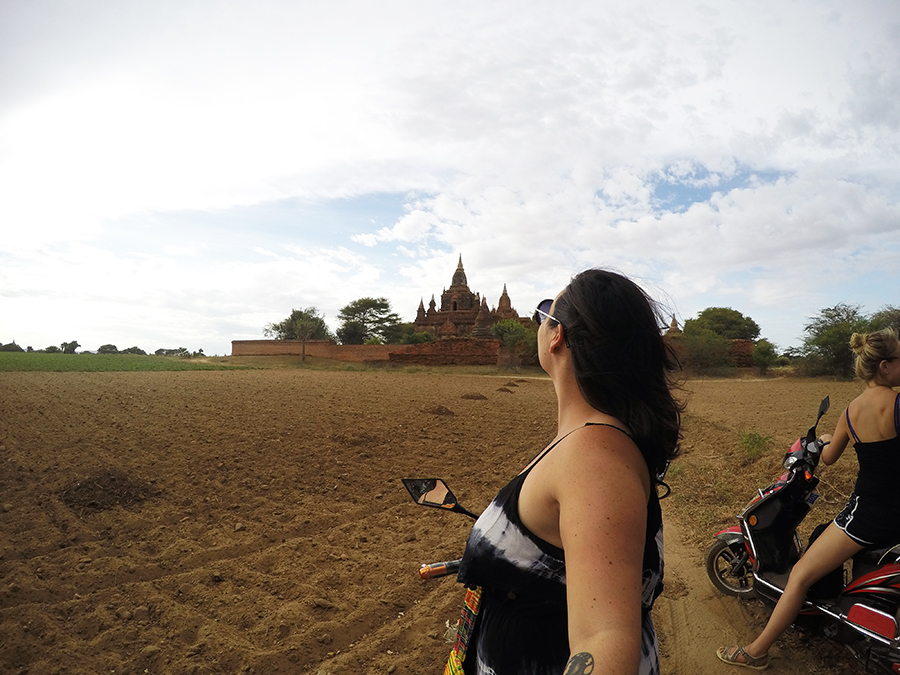
12. Learn some phrases – Learning how to say hello and thank you are a good start and people really appreciate it.
13. Always keep your calm – This is a must. Never get angry with a local, raise your voice, or get all up in their face. This is not how things are handled in Asia. Trust me, you will never win. The locals will help the locals out, not you.
14. Always have hand sanitizer – Just like toilet paper, you won’t find soap much.
`15. Get used to the bum gun – For those situations when you don’t have toilet paper. It’s a gun that shoots water to clean yourself. You’ll see them when backpacking through Southeast Asia, don’t leave Asia without trying it!
16. Have at least 6 months validity on your passport – Most countries (this applies for even outside SE Asia) require you to have at least 6 months left on your passport. Otherwise they can deny you entry. The same goes for having blank pages. I’d have a minimum of two blank pages when entering a country.
17. Always pay the extra couple of bucks for air conditioning – Seriously, you’ll thank me later. Fans just blowing around hot air will not cut it when you’re trying to sleep.
18. Don’t plan everything before you go – You’ll find the best suggestions from the people you meet while on the road. It is good to have a general idea though!
19. Expect squat toilets in most places – I didn’t stay in a hostel that didn’t have regular western toilets, but when traveling from spot to spot, at restaurants, and in public places it was mostly squat toilets.
20. Never leave your stuff unattended – This is the most important when you’re traveling. Never leave your stuff on the bus unless you have someone watching it for you.
21. Watch out for snatchers – For ladies I recommend having a cross body bag that you wear cross body or have your hand on at all times. All should hold onto their phones tight. Snatchers are usually people on scooters who will grab your bag or whatever is in your hand quickly while you’re walking, in a tuk tuk or on a bike.
22. All things whitening – We want to be tanned, but in Asia they want to be white. So watch out when buying products as most will have whitening agents.
23. If you have big feet and need new shoes, good luck – Asians have way smaller feet than westerns so if you break or lose your flip flops you may have trouble finding a new pair.
24. Learn to go with the flow and just say yes – People are much more laid back in Asia. Travel Asia and use it as a time to relax. Don’t get caught up with things being late or schedules. Just expect things as they are or it’ll be a nightmare trip for you.
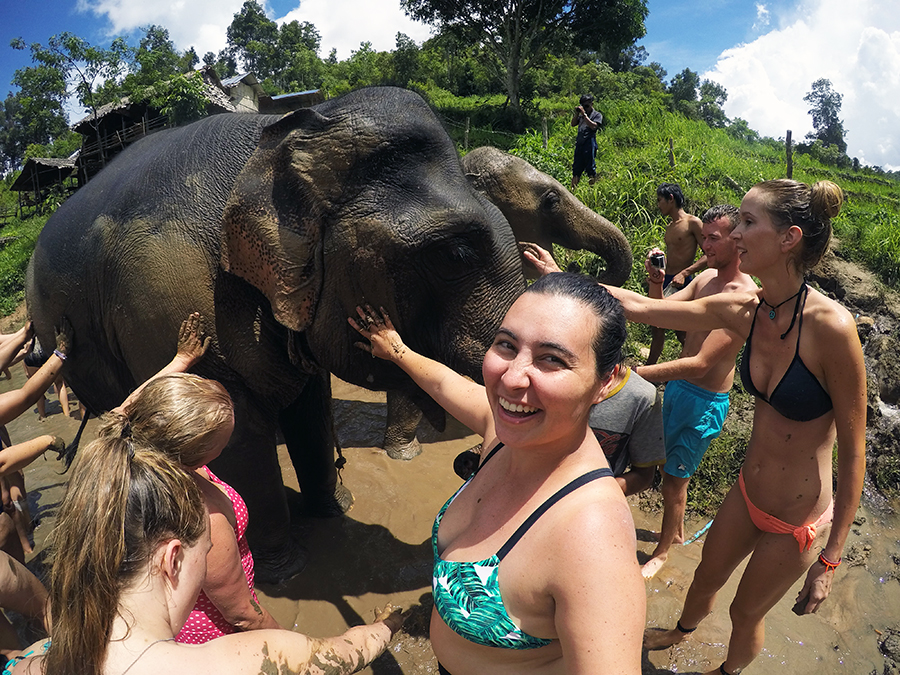
25. Don’t expect western safety standards – You will have “OMG we’re going to die” moments when driving too close to the edge of a cliff or riding through choppy waves in the ocean. This stuff happens all the time when you backpack through Asia. Also when on a boat never expect there to be enough life jackets so don’t freak out at everything that doesn’t seem “safe.”
26. Know visa requirements – For every country on your Southeast Aia trip you will need to know how much visas will cost, to knowing if you need a picture or not, and what currency to pay in (usually USD). Know if you need to apply online beforehand or if you can get it at the border, or if you need proof of a flight of onward travel (most don’t care but the Philippines is very strict about this).
27. You will see the same souvenirs over and over again – No need to panic and buy everything at once. Guaranteed you will see the same thing in the next city or country and literally everywhere backpacking through Asia.
28. Toilet paper does not go down the drain – Don’t flush toilet paper. Be kind to the next person, they don’t want to deal with a clogged toilet. Throw it in the trash bin.
29. You will see poverty – Prepare yourself. It’s not home. And though you may be traveling to all of the pretty places, while traveling from destination to destination you will see poverty.
30. Be Prepared to sweat a lot – This is a helpful guide with every possible tip to help you to stop sweating while traveling .
Money Saving Tips for Southeast Asia Travel
Backpacking in Asia can be done on the cheap but you need to know the best Asia travel tips first.
31. Know how to budget – Super boring I know, but I have a detailed Southeast Asia budget guide to help you not go over budget and to know what to expect for each country.
32. Use 12G0 – If you haven’t travelled through Southeast Asia before you probably haven’t heard of 12Go . It’s a site that shows you options to travel all across Asia from short to long trips. I recommend checking it out to compare prices before booking.
33. Best airline to fly with: AirAsia – They’re my personal favorite budget airline to fly with and fly to the most destinations. You will pay for checked luggage so make sure to purchase it when you book your ticket or you will be charged 4x the price when checking in.
34. Volunteer in Southeast Asia – If you ever find that you budget is getting a little too tight or if you just want to save some money, then volunteering in Southeast Asia is a great way to not only save money but also learn new skills and meet other fellow travellers.
I recommend checking out the opportunities available on Worldpackers where for $49 a year you have access to over 4000 volunteer hosts and a community of over 1 million travellers. PLUS as a Taylor’s Tracks reader you get $10 off when you use the code TAYLORSTRACKS .
35. Buses are your best friend – Traveling by bus is the way to go in SE Asia if you want to save money. But if you’re tight on time, fly. Always splurge and go for the VIP buses. They’re never that more much and it will be a way better experience.
36. Laos Kip is very difficult to exchange – If you’re heading to Laos you’ll have no problem getting their local currency but good luck getting rid of it when you’re out of the country. Exchange it before you leave or at the border if crossing by land.
37. Take local transport – It’s not as bad as you’d expect, it’s cheap and it always makes for an adventure while backpacking in Asia.
38. Travel throughout the night – Yay for night buses! Vietnam travel is easy because it has the best buses for overnight travel because they’re sleeper buses so you can actually lay down. By traveling at night you’ll save on accommodation and have more time to do things during the day!
39. Get used to haggling – If you don’t haggle you will be overpaying for everything. Some things you can’t haggle for (like food), but use your skills while at markets, shops and with transportation. Start low, you can usually tell by the look on the locals face if you’ve gone too low. And don’t be afraid to walk away, most will give in and accept your offer. If they don’t then you’re probably being unrealistic.
40. Always go for the local beer – It’s cheap and often really good!
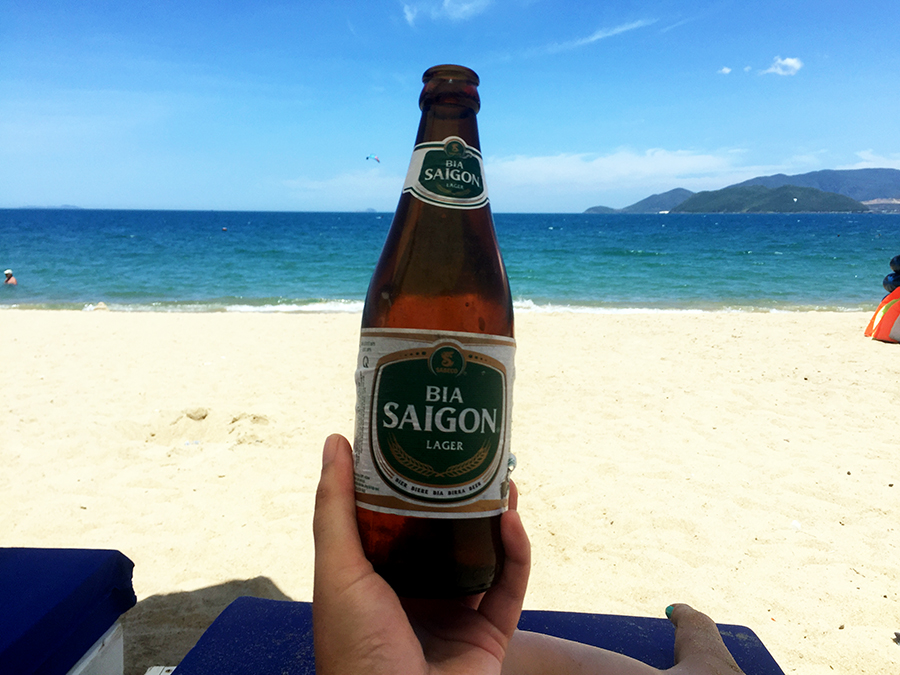
41. Uber and Grab – Grab is the equivalent of Uber, but the Asian version (you can ride on the back of a scooter for cheaper than a car). I recommend these the most for the Philippines.
42. Bring sunscreen from home – It is ridiculously expensive in SE Asia. It’s one of the few things I recommend bringing that are worth using the extra space in your bag for.
43. Avoid package tours – Though some are great, they’re always more expensive than doing it yourself. That being said, don’t skip on all. I used tours for trekking in Myanmar, Sapa, and Halong Bay.
Packing Tips for Travel in Southeast Asia
When you travel Southeast Asia you want to make sure you have the proper clothes for heat and culture reasons.
44. Ladies, pack a scarf to easily cover up – This is essential when visiting temples. It’s too hot to always be covered, but you’ll need your shoulders, chest, and knees to be covered when visiting temples. This is a great post on a fabulous piece for your travels.
45. Pack proper shoes – Treks in SE Asia are quite common, so don’t write them off just yet. With that being said, make sure you have proper shoes. And no those cute no grip Nike’s won’t do the trick (I tried and sprained my ankle!). You’ll also want shoes to easily slip on and off at temples.
46. Don’t pack too much, clothes are cheap! – Clothes are super cheap and easy to find at markets. Most are pretty cute too. But if you are heavier clothes may be more difficult to find because their sizes are so small!
47. You better have Imodium – At some point you’ll need it. Especially for long bus rides after eating questionable meat. Or for day trips on boats when bathrooms are not accessible.
48. Pack appropriate clothes – Please respect the locals and not only pack skinny tanks, short shorts, and belly tops. It’s fine to wear shorts and tanks, and certain places are more open than others, but this is not your home. So dress according to their standards, not yours.
49. Whatever you need to sleep on night buses – You’ll probably take at least one during your trip. Have something you can pop to make sure you get as best a sleep you can.

Health Tips for Your Southeast Asia Trip
One of the main fears of traveling Southeast Asia is getting sick from food, don’t worry it happens to the best of us! There are just a couple of essential tips to help it from not happening.
50. Your gut may get out of balance – If this happens, eat sunflower seeds. Taking probiotics before and during your trip can also help (please know that I am not a doctor so I can only tell you what works from personal experience for my body).
51. Only drink bottled water – Try to find brands you know, but don’t panic if you can’t. And check to make sure the seal isn’t broken.
52. Ice – Most is safe to drink, but be warry. I’d say it’s rare to find ice that is bad as even the locals don’t use ice that isn’t filtered.
53. Eat where the locals eat – The more people at a restaurant or food stall the better. People don’t eat where they’ve gotten sick before! Plus you know it’s tasty.
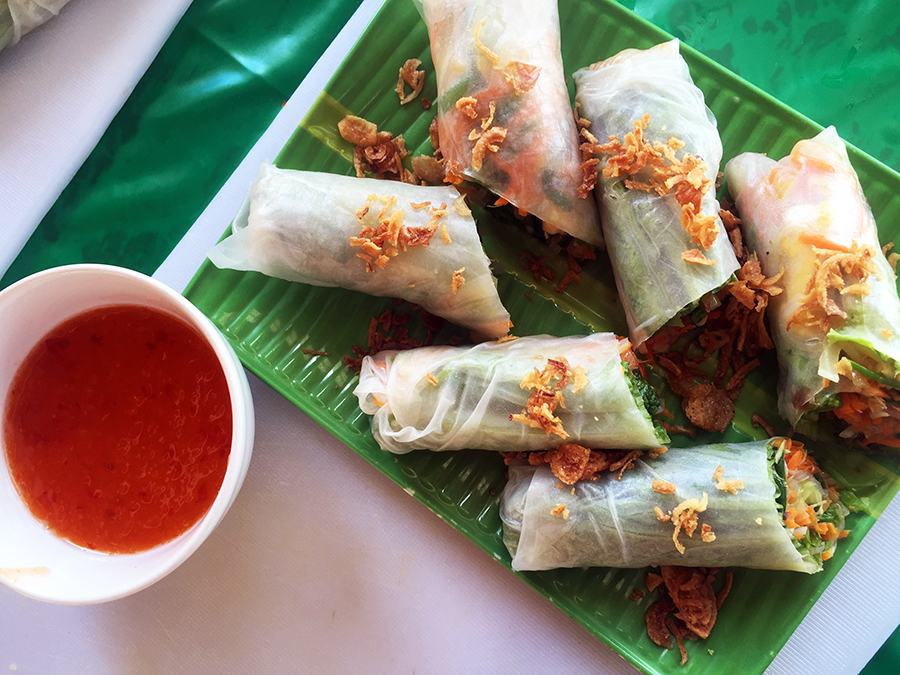
Got all of that? Not you’re ready to backpack Asia! But even if you think you’re fully prepared, expect not to be. There are always surprises when in Southeast Asia backpacking. Regardless, embrace it and have fun!
Backpacker Travel Insurance
Disclaimer: This post may contain affiliate links which I earn a small commission from and are at no additional cost to you. See my disclosure policy for details. Thank you for supporting my small business!
Disclaimer: Taylor’s Tracks is a participant in the Amazon Services LLC Associates Program, an affiliate advertising program designed to provide a means for us to earn fees by linking to Amazon.Com and affiliated sites.

Southeast Asia Packing List – ULTIMATE Guide for 2024
Planning a trip to Southeast Asia? Our guide covers the essentials to include in your Southeast Asia packing list.
We’ve visited all countries in SE Asia, and it’s one of our favourite areas to explore.
Hi, we’re Rach & Marty!
We’ve visited every country in the world and want to help you get the most out of your travels!
Whether you need an expertly planned itinerary , some experienced hints and tips , or just craving a delicious food adventure , we’ve got you covered!
We may earn affiliate commissions from websites we link to, at no cost to you. Click here for details.
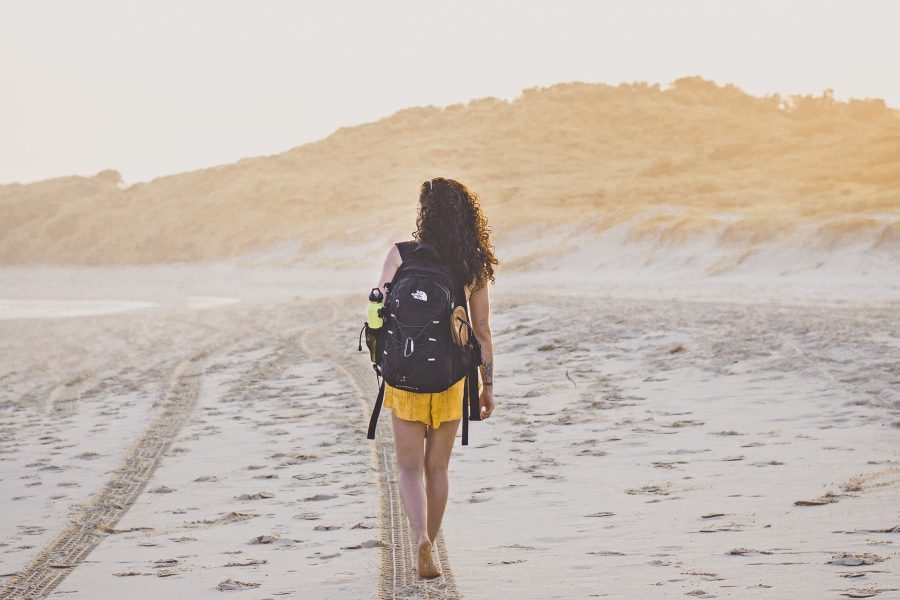
Travelling through Southeast Asia is exhilarating! Expect your trip to be full of adventure, diversity, smiling locals, beaches, incredible cities, and fantastic street food !
The best part is that it’s super affordable too.
Southeast Asia includes nine countries – Vietnam, Thailand, Singapore, the Philippines, Myanmar, Malaysia, Laos, Indonesia, and Cambodia.
Each country has different local customs and traditions, varying weather conditions depending on the time of year you visit, and various things to do.
Our best advice for your Southeast Asia packing list is that less is more!
Travelling around SE Asia is much easier when your backpack or suitcase is light. It makes it so much easier when you’re guaranteed to jump on and off buses, boats, trains, tuk-tuks, and ferries to get around this gorgeous region.
Southeast Asia is one of the easiest continents to travel through. Many travellers wander through these countries with just a few items and some comfortable shoes.
If you forget something or need anything else, picking it up at the markets or the nearest mall is easy.
Here it is! Your Southeast Asia Packing List :
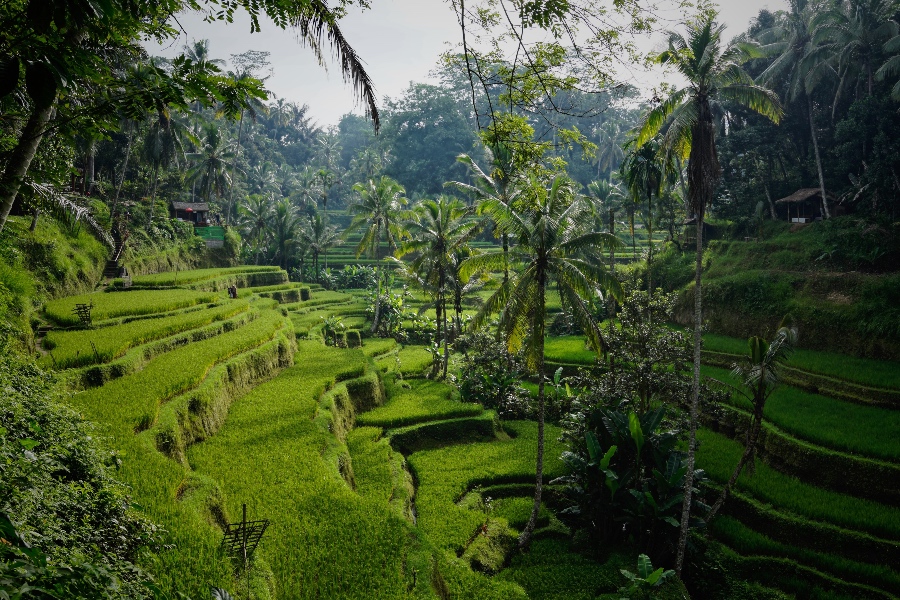
Table of Contents
Choosing the Right Travel Bag
Ok, some people are backpack travellers, and others are suitcase travellers. We chat about the pros and cons of each travel bag in our post, Suitcase Vs Backpack – Which one should you choose?
In saying that, we recommend choosing a backpack over a suitcase for your travels in Southeast Asia. You will encounter uneven surfaces, rough terrain, numerous islands, stairs, and random transport options. It is much easier to navigate this if you have a backpack rather than wheeled luggage.
Nowadays, you can buy fabulous travel bags that offer both options, like the Osprey Wheels 36 Bag. You can wear this bag as a backpack and then convert it into a rolling suitcase, too.
Over the past twenty years, we’ve used many travel bags. We now use the Osprey Farpoint 40L Backpack ; we love it!
This is the ideal backpack for your Southeast Asia packing list.
Do you need a small day pack?
Travelling with a small day pack is a personal choice. We travel with one as we always prefer to keep our valuables with us.
This is especially important when taking overnight train/bus rides.
We carry this small Osprey day pack
We often lock our large 40L backpack to something stationary when we sleep, and our small daypack containing our valuables remains on our person, inside our silk sleeping sheet—it feels much more secure to do this to deter any opportunistic thieves.
When we’re on the move, our small Osprey day pack sits on the front of our body with our Osprey 40L backpack on our backs; this makes it easy to access passports or money quickly.
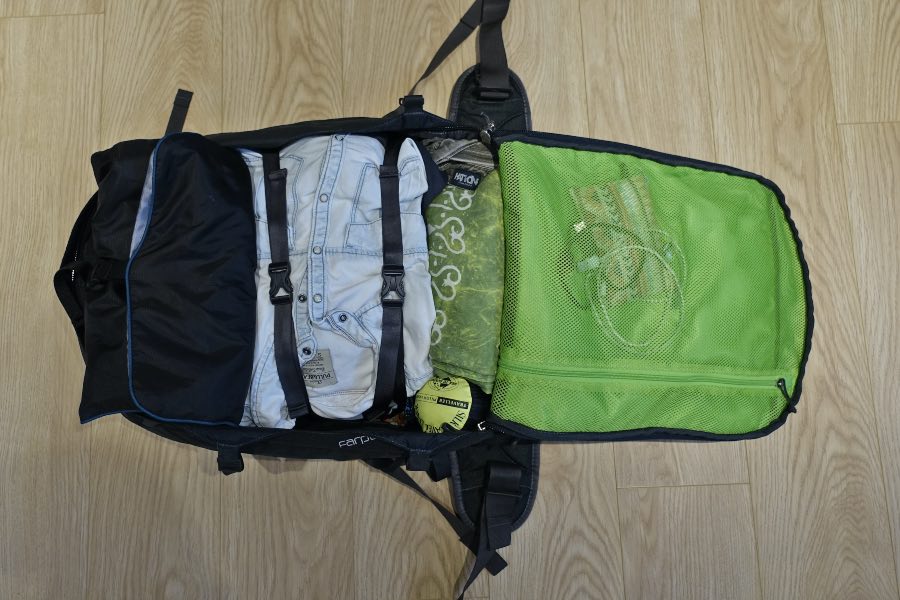
Choosing Your Travel Clothes
Generally, most of Southeast Asia is relatively warm throughout the year. Temperatures range between 26 and 36 degrees from cool to hot season, and the humidity is high year-round.
The best clothing for your Southeast Asia packing list is light, breathable cotton, clothing you can mix and match, and items that dry quickly.
Southeast Asia Packing List: Clothing for WOMEN
- 1 pair of black skinny jeans
- 1 pair of Columbia zip-off long trekking pants OR Lululemon travel pants
- 1 North Face lightweight jacket/fleece
- 1 Light Rain jacket
- 1 pair of black loose cotton pants
- 1 light long-sleeved cotton shirt
- 2 basic t-shirts
- 3 loose singlets/tanks
- 1 denim shorts
- 1 cotton shorts (H&M brand)
- 1 light short (wear as pyjamas or to the beach)
- 1 nice top to wear out
- 1 little black dress
- 2 pairs of ankle socks
- 7 pieces underwear
- 1 bikini (we love Roxy brand swimsuits)
- 1 Ripcurl cap
- 1 bra and 1 sports bra
- 1 headscarf (to visit places of worship)
- Birkenstock Sandals
- Havaianas – Slim Black flip flops
- Merrell Women’s Black Hiking Shoes
Southeast Asia Packing List: Clothing for MEN
- 2 pairs of Quiksilver Boardshorts
- 1 pair of Travel/Hiking Shorts
- 1 pair of Long Trousers
- 3 Tank Tops
- 1 Long Sleeve Cotton Shirt
- 1 Smart Shirt
- 1 Casual short-sleeved shirt
- 1 Warm Fleece
- 1 Light NorthFace Waterproof jacket
- Salomon Hiking Shoes
- Underwear & socks

Toiletries for Women
We’re lucky to share some toiletries on the road, giving one of us more room in our backpack.
I’ll take our espresso mac hine and fresh coffee to share the load if Marty carries the toiletries.
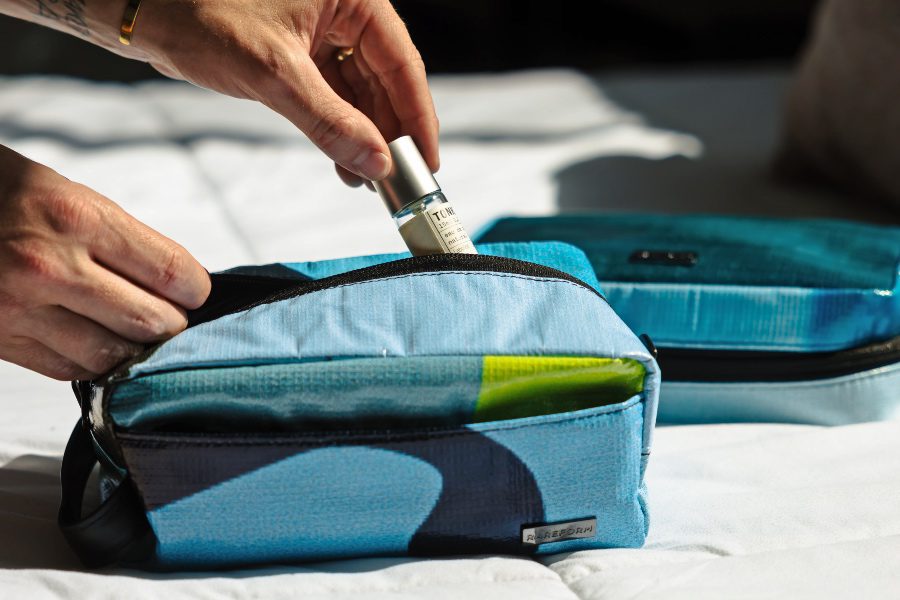
We try to keep toiletries to a minimum as they can be heavy. We also travel with carry-on baggage; therefore , all our toiletries must be 100ml or less.
- Hanging Toiletry Bag
- Small containers (100ml) for refills
- Shampoo/Conditioner 100ml each
- Bar of soap
- 1 shaver/razor (we never have a problem at airports with this in our carry-on)
- 1 hairbrush
- Roll-on deodorant
- Toothpaste & toothbrush
- exfoliating shower glove (we found these in Morocco..love them)
- 100ml sized sunscreen – We like Nivea or Neutrogena brands
- Nivea face moisturiser SPF30
- Blistex and lip balm
- A few pieces of makeup (which we rarely use, but sometimes it feels nice to dress up) 1 tube of foundation , bronzing powder, and brush, 1 mascara
Toiletries for Men (as suggested by our male travel buddy)
- Toothpaste and toothbrush
- Moisturiser
- Shaver/small shaving cream
- Mosquito repellent (with DEET!)
Accessories/Extras
- A pouch that holds my passport, different currency, bank cards, passport photos, copy of my passport, driver’s license, and a copy of our Heymondo travel insurance policy
- Nanopresso Portable Espresso Maker
- Silk sleeping sheet
- Sarong (our shower towel, beach towel)
- Frank Green Portable Coffee/Tea Cup
- LifeStraw filter water bottle (this lives in our small day pack)
- Oakley Sunglasses & Protective Case
- Travel clothesline
- Lonely Planet Travel Guide ( Southeast Asia on a Shoestring )
Read more: 20 Most Popular Foods From Laos
Technology/Electronics
We understand if you’re a photographer, digital nomad, or can’t live without your MacBook and other electronics. We need these things as we work online as we travel the world.
Here’s what we take in our Southeast Asia packing list regarding electronics.

- 13″ Macbook Pro with charger
- iPhone 13 Smartphone with a USB charger.
- Apple AirPods for iPhone
- Old-school iPhone headphones
- Sony RX100 Mark III Camera with leather case
- Sandisk 2TB external hard drive
- Worldwide adapter plug.
- GoPro Camera – a waterproof stick/a few extra clips for it
- Belkin Powerbank
- Small portable USB drive
- Small pouch that holds all cords for cameras, etc
- Gorilla tripod for our Sony camera
Subscribe to our newsletter!
Expert travel tips, resources and exclusive discounts worldwide
Safety in Southeast Asia
Travelling around Southeast Asia is considered relatively safe, but reading our 12 tips for safe travel is best.
The same goes for travelling anywhere in the world; accidents do happen.
We highly recommend you sort out some good travel insurance to cover you when things go wrong.
We recommend Heymondo Travel Insurance (here’s a 5% discount on all policies )
We recommend adding one of their comprehensive travel insurance policies to your Southeast Asia packing list.
Another fantastic (and affordable) Travel Insurance company is SafetyWing Travel Insurance. This company was created by travellers, for travellers.
These guys offer Travel Medical Insurance that covers people from all over the world outside their home country.
Get Connected with eSIM

Get connected easily on your travels—buy an eSIM! An eSIM works like an app: buy it, download it, and get connected in minutes! It’s easy, affordable, and convenient. Keep your original phone number, too!
Click below and view which eSIM data plan you need for your next adventure. Use our referral code: RACHEL5045 , to get $3 off your first purchase !
Transport and Getting Around Southeast Asia
Getting from A to B in Southeast Asia is easy. If you’ve got the budget to include flights, that would be fantastic! We book all our flights o n Skyscanner . The prices are unbeatable, and you can pay in your chosen currency.
If time doesn’t matter to you and you’ve got a budget to stick to, consider looking at trains and buses.
The best website for checking boat, bus, and train timetables is 12Go.asia
When deciding what to pack for Southeast Asia, remember that you may be taking many forms of public transport.
Therefore, a light backpack is essential to help you move about easier with more freedom and flexibility.
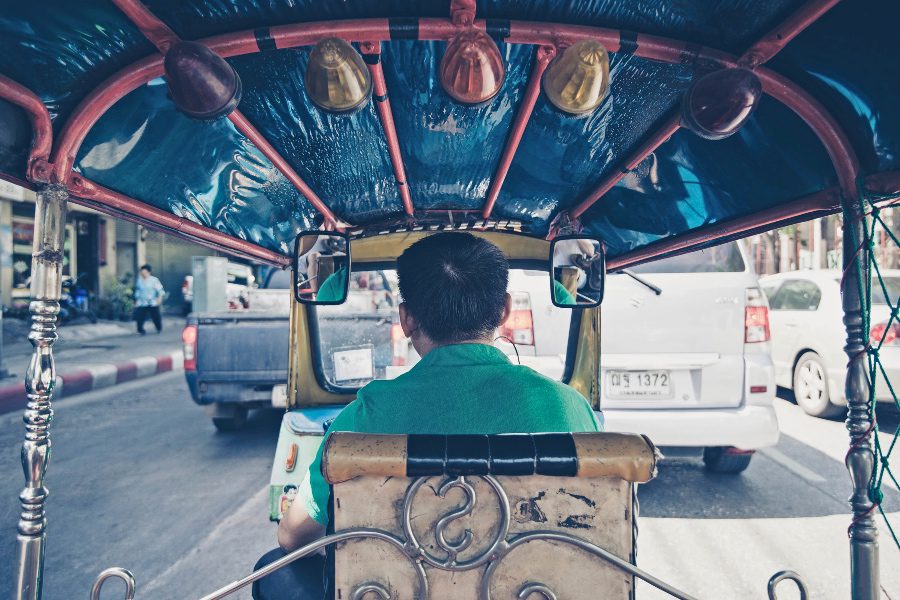
How to Book Accommodation in Southeast Asia
We always use the same websites to book accommodation in Southeast Asia. Booking.com is our number one choice.
In saying that, Agoda has some unbeatable deals all over Asia, so it’s worth double-checking if you can get a better price with these guys.
- 🔥 Hot Tip: Book accommodation in advance on Booking.com
- 🎟 Book your attractions and tickets online: We recommend Viator and GetYourGuide
- 🔋 Stay charged: This Belkin Power Bank is essential!
- 📸 Join a Group Tour: Find some amazing Group Tours here
- ✅ Get Connected with an eSIM: Fast, easy and affordable! View easy eSIM options here
Apps to download for Southeast Asia
Download these apps on your phone to make your Southeast Asian travels easy.
- Skyscanner (to search for flights)
- Booking.com (to book accommodation on the go)
- XE.com (to check the latest exchange rates)
- Maps. me (the best offline maps to help you navigate around)
- Google Translate (while English is widely spoken in SE Asia, this app is handy when you get lost in translation. )
- 12.Go (book a bus, boat, ferry, train, or flight in Asia)
RELATED POST – 20 Best Travel Apps (Plus They’re Free)
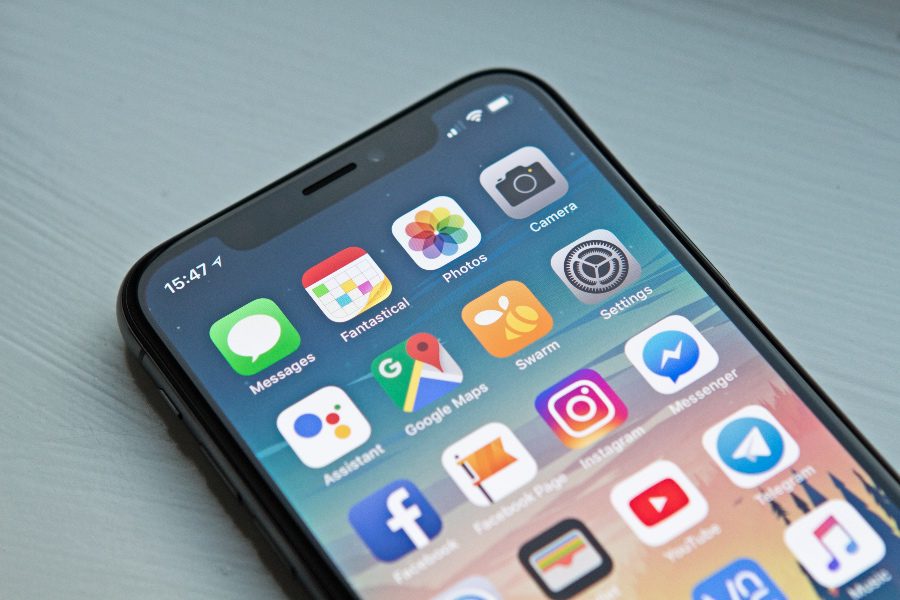
Staying in Southeast Asia long-term?
If you’re considering staying longer in Southeast Asia, check out the Trusted Housesitters website for tips on saving loads of money on accommodation. If you’re considering staying in one place for a little longer, you can become a housesitter in Southeast Asia (and worldwide).
Being a house-sitter means free accommodation for you in return for looking after different homes around the globe. Signing up for a membership was one of the best things we ever did!
Join now with our invitation and receive a massive 25% off your membership!
Travelling Beyond Southeast Asia?
Our Ultimate Packing List for every traveller includes the items we carried on our journey to visit every country in the world!
Considering we move between all types of weather, from very cool temperatures to sweltering hot ones. And we still manage to travel with carry-on baggage only, our 40L Osprey backpack or sometimes our Samsonite suitcase , often weighing less than 10kg.
Make sure you get Travel Insurance before hitting the road. We recommend Heymondo & SafetyWing Travel Insurance.
Click here and get 5% off Heymondo from us!
Join a Small Group Tour in Southeast Asia
Have you considered travelling around SE Asia on a small group tour? We highly recommend G Adventures . They offer 30+ different itineraries in SE Asia, so there is a trip to suit everyone.
Check out the range of G Adventures Southeast Asia Tours.

Where is Boracay in the Philippines? How to Visit in 2024
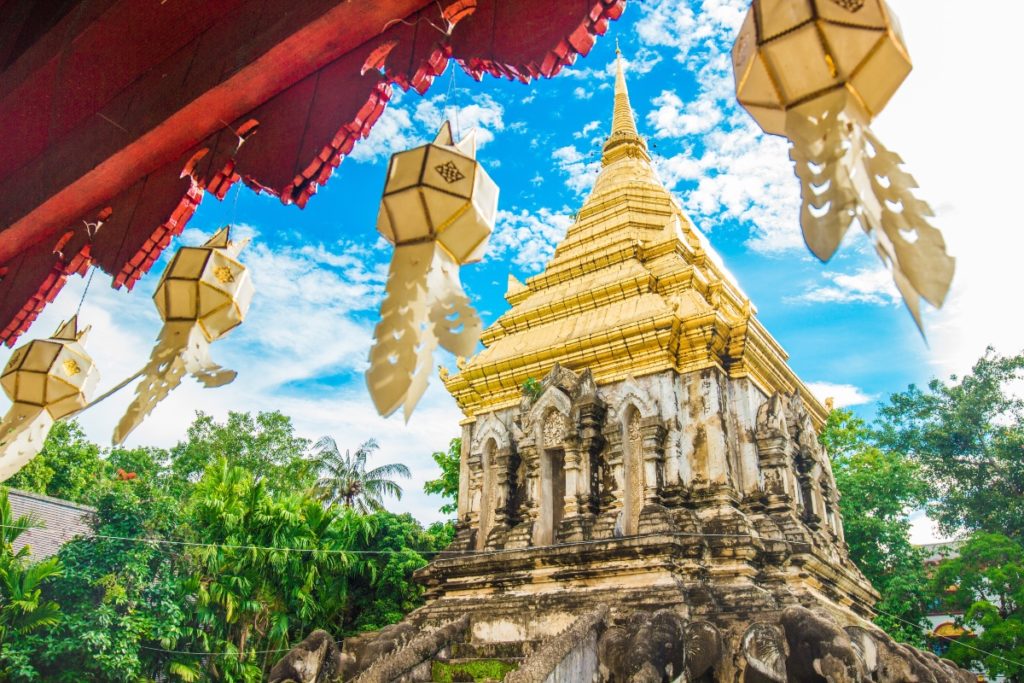
eSIM Indonesia – Best Sim Cards in Indonesia (2024)
Travel Tips for Southeast Asia
If you enjoyed this post, check out these 20 Jobs that PAY YOU to Travel the World. We love sharing our TOP TRAVEL HACKS to save you money and the travel websites we use to save cash .
If you’re heading to SE Asia, we highly recommend you plan to spend a good chunk of time in Thailand!
Check out these 15 Amazing Things to do in Thailand to help you in the planning stages, and we’ve got your back with these 26 Handy Travel Tips for Thailand.
Whether you’re planning to chill, surf, and relax at Kata Beach in Phuket , go island hopping or go on an eating adventure in Chiang Mai in Northern Thailand (you’ll need our Chiang Mai food guide for that), Thailand is a fantastic destination to kick off your Southeast Asian adventure!
Travel Planning Resources
✈️ Flights : We use Skyscanner to book cheap flights worldwide.
🏨 Accommodation : Booking.com is our preferred platform for booking hotels and accommodation.
🏥 Travel Insurance : We recommend Heymondo ( Get 5% off Heymondo) & SafetyWing
🚌 Transportation : Trainline is the best website to reserve trains. We use Omio to book transport worldwide. For travel in Asia, we use 12Go.
🚘 Car Rental : We use DiscoverCars to book rental cars worldwide.
👫 Group Tours : G Adventures OR compare multi-day tours worldwide with Tourradar .
📸 Day Tours & Trips : GetYourGuide & Viator are the only two platforms you need.
📚 Lonely Planet: The Best Range of Travel Guides & Ebooks , and FREE Shipping! (use code RACHELDAVEY10 for a 10% discount)
🎒 Luggage : Osprey Farpoint 40L Backpack or Samsonite Luggage Range.
🛄 What to Pack: Don’t forget your Universal charger and a good power bank . To help you pack the essentials, here is our ULTIMATE Packing List for all Travellers .
🐶 Become a House Sitter: Join Trusted Housesitters and enjoy FREE accommodation worldwide. Use our invite to receive 25% off your new membership.
💰 Send Money Anywhere: WISE & Revolut are the best online accounts that let you send money, get paid, and spend money internationally. Both are so easy to use and way cheaper than any bank transfer.
📶 Stay Connected: Airalo eSIM allows you to get connected the moment you land at your destination, and you can avoid those expensive data roaming charges. We LOVE this product! Use promo code NOMAD15 for 15% off ALL eSIMs (new Airalo users only) OR use NOMAD10 for 10% off ALL eSIMs (for existing Airalo users)
✅ Check out our Travel Gear and Travel Resources for more valuable tips to save you money!
Tasty Food Adventures
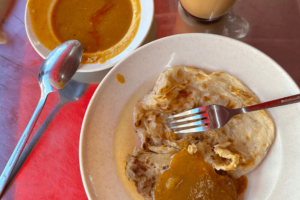
20 Best Foods in Penang – Street Food & Penang Restaurants
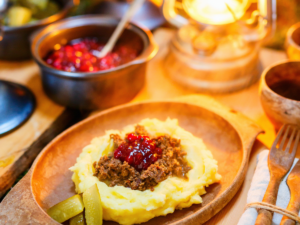
15 Most Popular Foods From Finland

The Best Thai Food You Need to Try – 12 Top Dishes
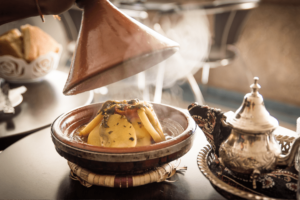
African Food Guide – 10 Best Food Countries in AFRICA
See all Food Adventure blogs
Expert Travel Guides
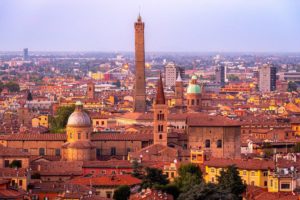
12 Amazing Things to Do in Bologna Italy
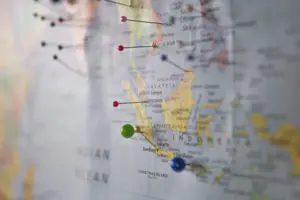
The Year 2019 in Travel – 40 New countries
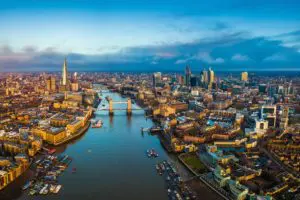
London In One Day – The Perfect Itinerary For Just One Day In London

100 Best Travel Quotes To Inspire you in 2024 (with photos)
See all our Travel Guides
Trusted Hints & Tips
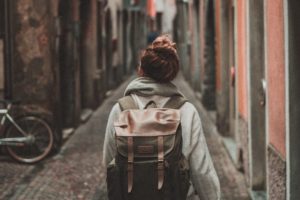
12 Essential Tips for Safe Travel

11 Tips How to Save Money to Travel the World

7 Tips: How to Find the Best Food when Travelling

How to Find and Book Cheap Flights – 8 Tips
See all our expert Hints & Tips
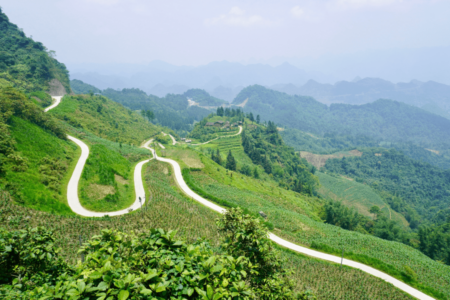
Ha Giang Loop Vietnam – Everything You Need To Know 2024
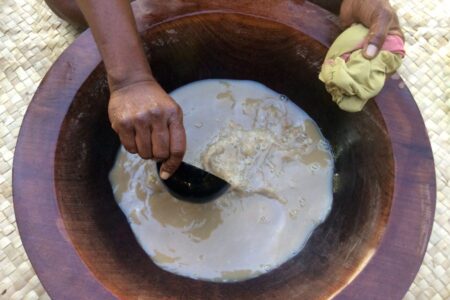
9 Weird Drinks In The World That Will Surprise You
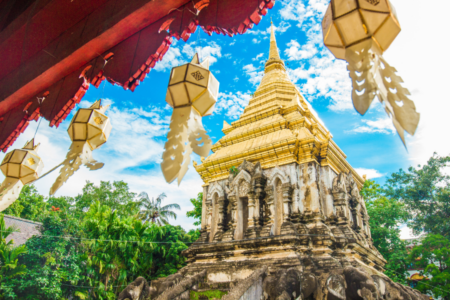
Where to Stay in Chiang Mai – Best Hotels & Accommodation Guide
1 comment . leave new.
You guys are such an inspiration for me thank you for this post it’s helping so much for my first solo (female) backpacking trip!
Leave a Reply Cancel reply
Your email address will not be published. Required fields are marked *
Post Comment
- Meet the Team
- Work with Us
- Czech Republic
- Netherlands
- Switzerland
- Scandinavia
- Philippines
- South Korea
- New Zealand
- South Africa
- Budget Travel
- Work & Travel
- The Broke Backpacker Manifesto
- Travel Resources
- How to Travel on $10/day
Home » Southeast Asia » Backpacking Travel Guide
Backpacking Southeast Asia Travel Guide (Budget Tips • 2024)
For many travellers, backpacking Southeast Asia is the ultimate highlight of their backpacking adventures. If you are coming from Western civilisation, exploring these mystical countries is like being catapulted into an alternate reality.
Over my travel experiences, I’ve spent YEARS bouncing around this dazzling area of the world. And still – to this day – I am awe-struck by it, time and time again.
From the moment you set foot on the continent, you can feel the electricity in the air. Your senses explode from stimulation as you head out into the hustle and bustle in search of the BEST street food and an ice-cold beer…
If you’re new to backpacking, this corner of the world is a great place to start your travels: it’s affordable, safe, diverse, friendly, and astonishingly beautiful. From the heart of Bangkok to the islands of Indonesia, legions of inspiration are found in every country throughout the region – and you’ll want to see it all.
With enticing tales of adventure coming from generations of travellers, it can be hard to know where to start planning your visit to Southeast Asia. It’s not as straight forward as arriving in other continents in the world. Having some travel tips with do you a world of good.
Never fear! This Southeast Asia travel guide details ALL the low-down with everything you need to know to embark on your epic journey. From the OG Banana Pancake Trail itinerary to my favourite cheap eats, this guide has it all.
Spoiler alert : banh mi is the best street food!
Fasten your seat belts and don’t forget your motorcycle helmet. This is the ultimate backpacker’s guide to travelling Southeast Asia!
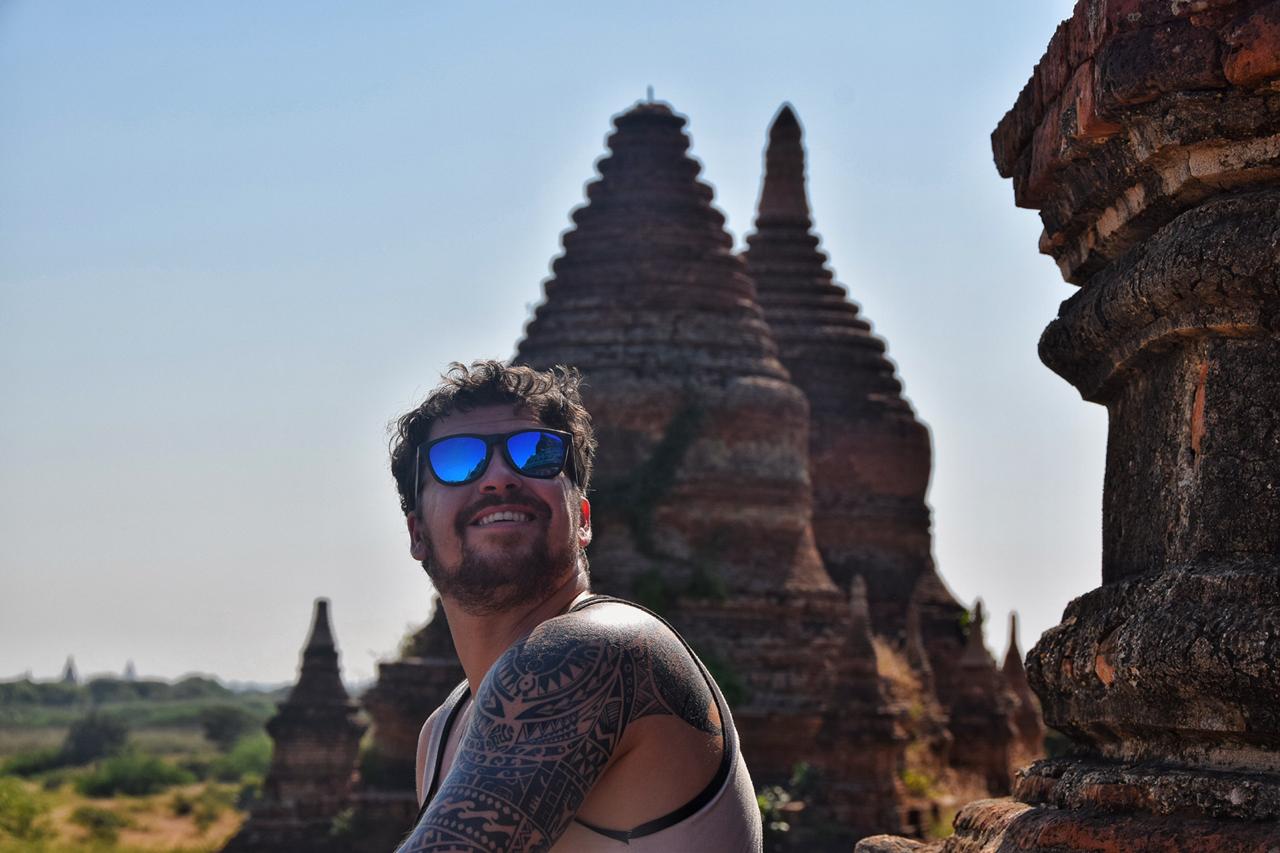
Why Go Backpacking in Southeast Asia?
Backpacking Southeast Asia is wildly chaotic, punctuated by brief moments of reflection and utter calm. When I first landed in Vietnam and began my travels in the region, I got that wonderful thought of so this is what travelling is about .
The best thing about visiting Southeast Asia is that you can stick to the well-trodden path and still have a mind-blowing adventure that’s easy on logistics. There are cheap buses you can catch between countries, it’s easy to buy your own motorbike and explore yourself, plus internal flights are usually cheap too.
Conversely, it’s very easy to step off into the wilderness and have a raw, untamed adventure. Some of my best memories come from taking a side road through the jungle on the Vietnam-Laos border. I camped on the outskirts of small villages amongst unruly jungles that hadn’t seen tourists come through in 10 years. Of course, obligatory rice wine was shared each night!
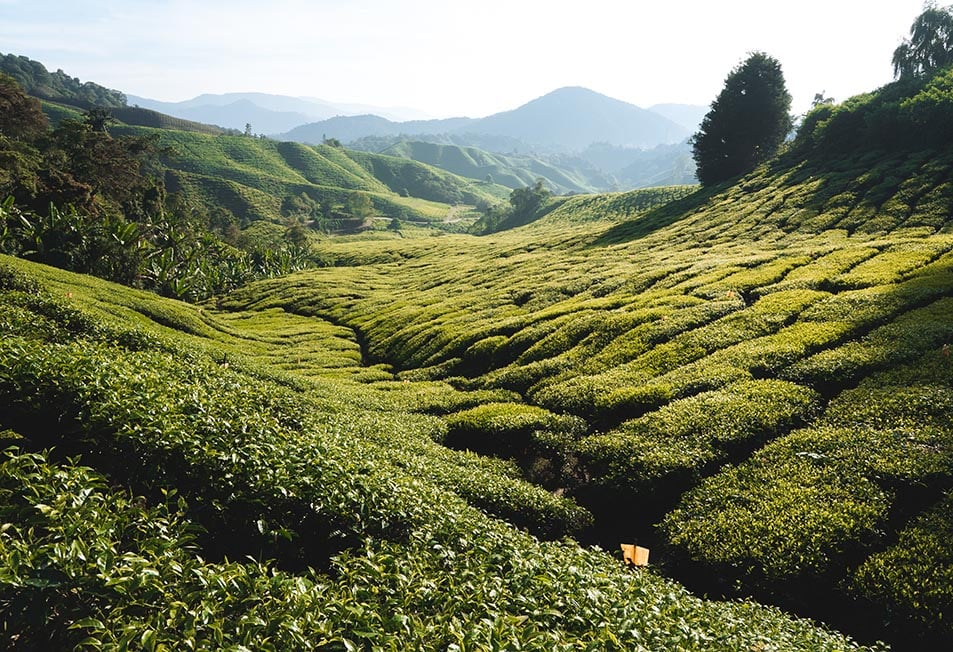
Generally speaking, backpacking in Southeast Asia is very cheap compared to travelling to other parts of the world. You don’t have to count your pennies and hustle at every step of the way in order to enjoy a beer at the end of the day. I’d say this part of the world takes the cake when it comes to budget backpacking .
Because the region is so cheap, you can enjoy big-ticket experiences that you might not be able to afford in other regions of the world. This could include world-class SCUBA diving in Malaysia , or a freediving course in the Philippines.
Even the ‘everyday experiences’ of backpacking Southeast Asia are epic, though! Think about taking yoga classes in the morning and surf in the afternoons in Indonesia . What about hiking through dense jungles exploding with wildlife, raging rivers, and massive waterfalls in Laos ? And you can’t forget to explore Vietnam by motorbike .
There is a reason that, despite how touristy some parts of the region get, Southeast Asia remains an incredibly special place to both first time and veteran travellers!
It’s just that bloody good .
Best Travel Itineraries for Backpacking Southeast Asia
Best places to visit in southeast asia: country breakdown, top 10 things to do in southeast asia, southeast asia backpacker accommodation, backpacking southeast asia costs, best time to visit southeast asia, staying safe in southeast asia, getting into southeast asia, how to get around southeast asia, working in southeast asia, southeast asian culture, what to eat in southeast asia, some unique experiences in southeast asia, faqs about southeast asia, final thoughts on backpacking in southeast asia.
Let us be clear about one thing: Southeast Asia has so many things to do and see that it would be impossible to see it all in one lifetime let alone in just one backpacking trip. That said, you can sure pack in a whole lot no matter what your time frame is!
Also, remember that this is a region that lives, breathes, and thrives on a certain degree of chaos. Backpacking in Southeast Asia requires one to adapt to that chaos and embrace the wonderful spontaneity that can arise here.
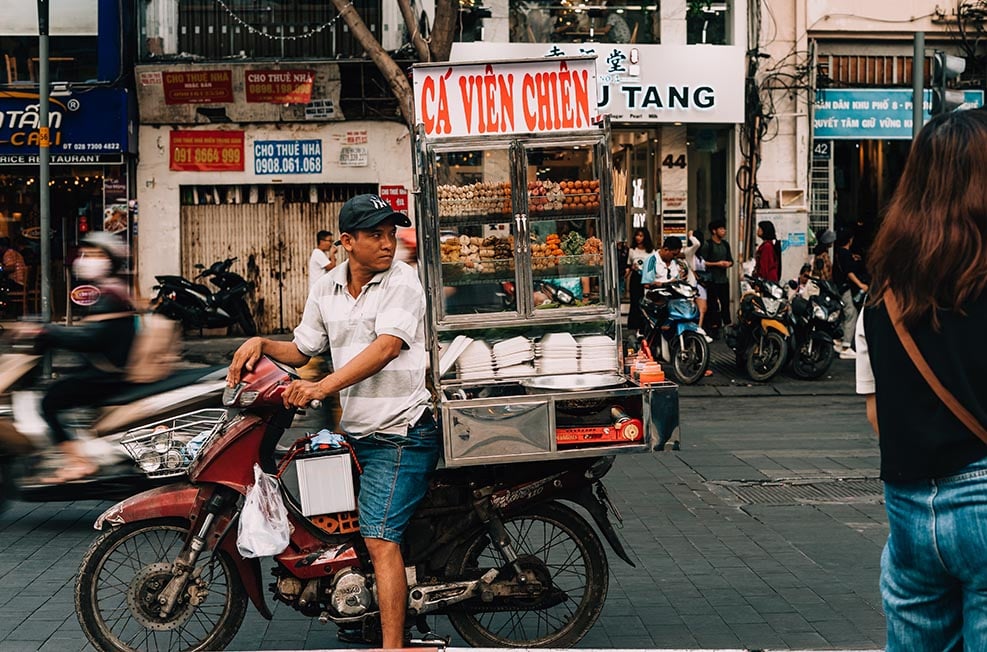
I don’t think that you should attempt to plan your trip to the last tuk-tuk ride. That said, having a general Southeast Asia travel itinerary in mind will help you get the most out of your trip. You don’t want to spend your time scrambling for things to do – nor do you want to pack so much into your travels that you forget to enjoy yourself.
Do you have 2 weeks? 3 months? 6 months? No matter what your time frame is, the itineraries I have listed below have helpful travel routes for Southeast Asia to suit all schedules.
Note that each itinerary can be combined with another, done in reverse, and customized based on your interests. Sometimes it’s worth leaving off one or two sights in order to fully enjoy the others.
2 Weeks Backpacking Southeast Asia Itinerary: An Epic Getaway
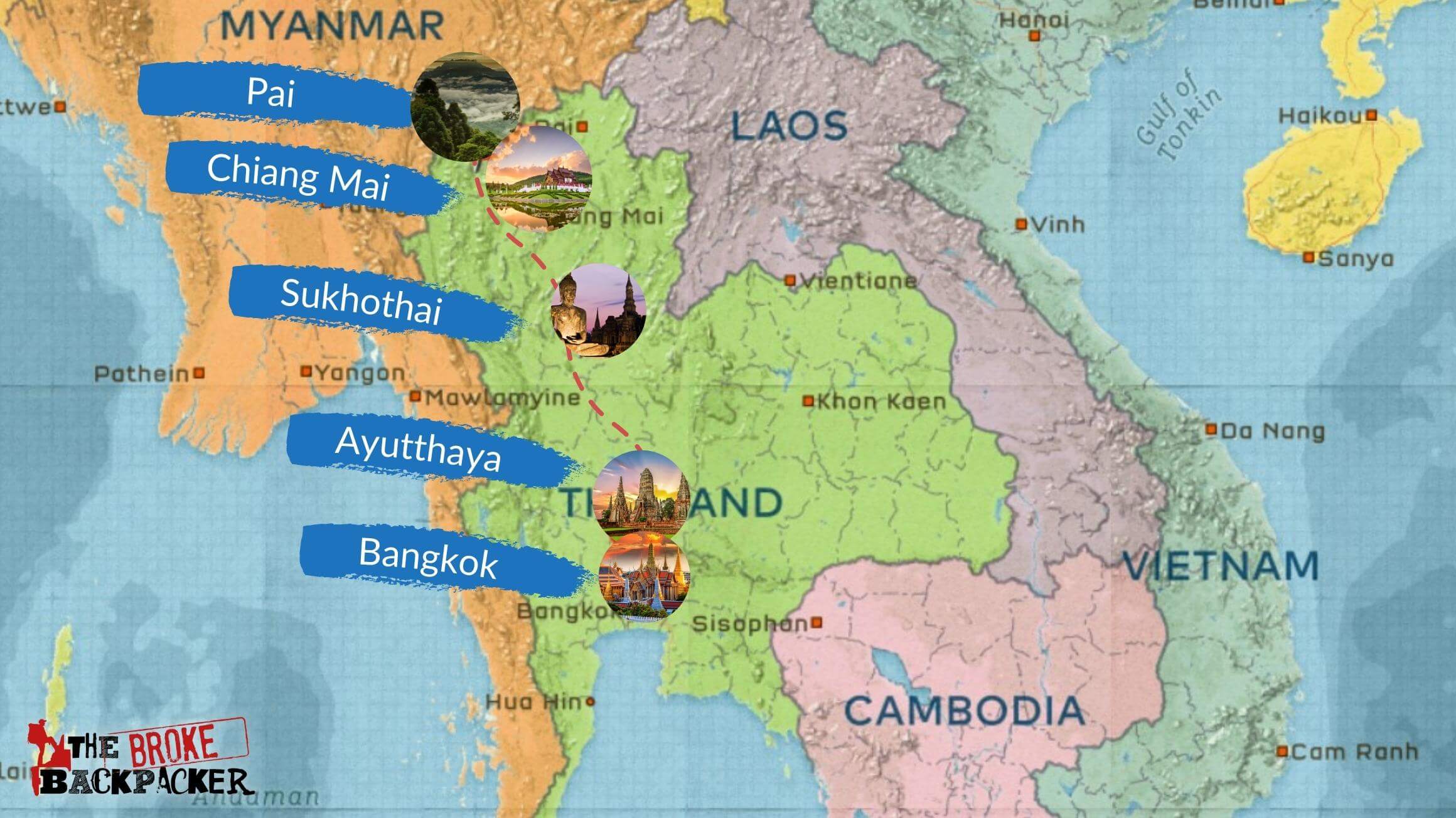
When low on time, I advise sticking to smaller countries like Laos, Thailand, or Cambodia. That way the transportation distances won’t eat a big bite out of your precious backpacking time. You will certainly only be scratching the surface, but you will leave with an even more intense hunger to return!
You could start your 2 weeks by visiting Bangkok and exploring the city for a few days. Thailand also has some spectacular temple ruins of its own at Ayathuya and Sukhothai which are close to Bangkok and well worth checking out.
From Bangkok, it’s easy to travel to Chiang Mai in Northern Thailand and from Chiang Mai onwards to the mountain town of Pai in just a few hours. If the north doesn’t quite do it for you, you can always go party on the epic Thai islands in the south.
Alternatively, you could go from Bangkok across the border into Cambodia . There you can go see Angkor Wat and go south to visit the tropical islands off Cambodia. While there is a party vibe on the Cambodian islands, they’re definitely more relaxed. Think swimming at night with bioluminescence and chilling all day in a hammock with just a splash of psytrance.
3 Months Backpacking Southeast Asia Itinerary: The Banana Pancake Trail
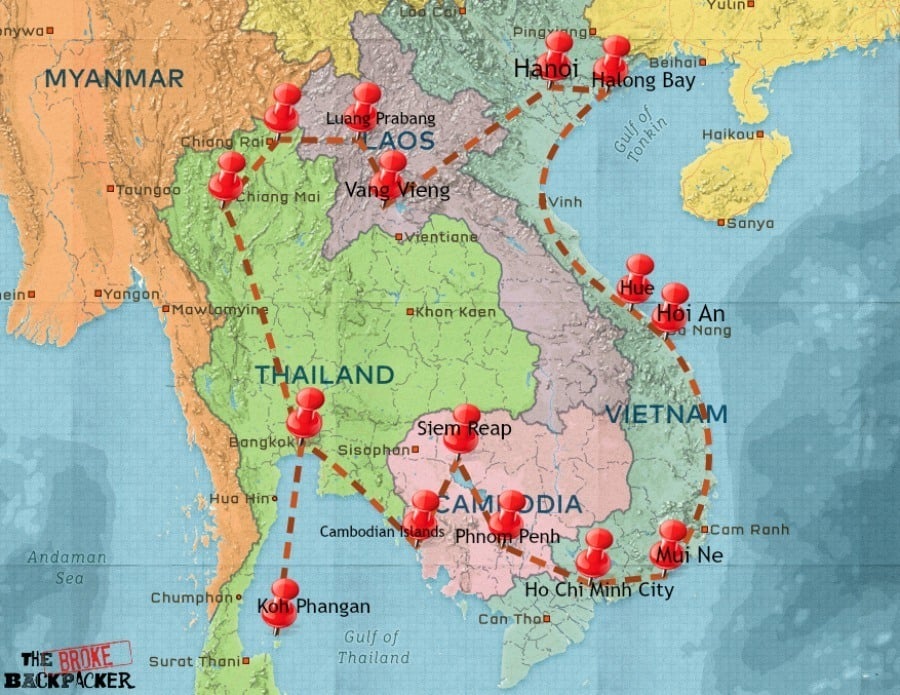
This backpacking itinerary takes you through the heart of what put Southeast Asia on the map. This is the juiciest of the banana pancake trail!
I would recommend flying into Bangkok and still kicking off your Southeast Asian travel with a bang. As you head north to the likes of Chiang Mai and the hippie village of Pai where there are lots of opportunities to creep off the beaten path.
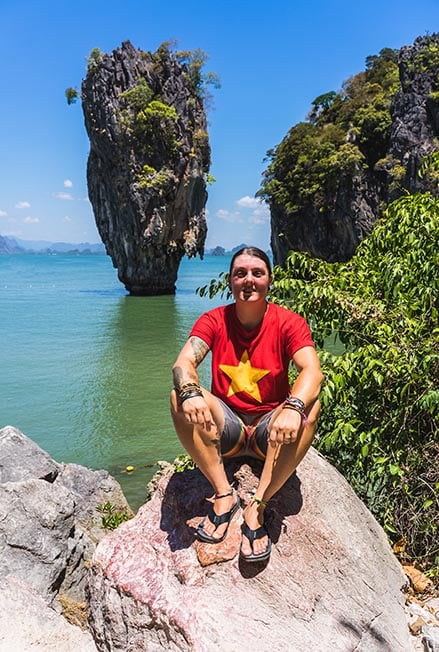
Explore the best of what Thailand has to offer before heading to Laos. Take the slow boat from Chiang Mai to Luang Prabang . If you have time, climb Mount Phousi , because daaaaaaaamn , those views are insane!
Laos receives a fair amount of backpackers, however far fewer than Thailand. The main attraction to Laos is its unmatched natural beauty, kind people, and rock-bottom prices. Vang Vieng is the main backpacker playground in Laos; this is the place where you can smoke a joint and eat banana pancakes all day. Tad Lo Waterfall is definitely worth the visit as well.
Vietnam is another classic stop on this route. Soak in the majestic views and cooler temperatures of the mountains in the north before heading south. Hire a motorcycle, explore the cities, go scuba diving, or hop around the islands.
Vietnam has THE best street food in all of Southeast Asia, so prepare your belly for bliss. From backpacking Ho Chi Minh to Hanoi there are ample rice paddies, bustling metropolises, and banh mi glory to enjoy!
Finally, travel to Cambodia and Angkor Wat en route back to Thailand’s southern beaches. Learn about Cambodia’s sobering recent history whilst exploring some of the most impressive temples and beaches in all of Southeast Asia.
You can finish your 3-month extravaganza with a full moon party on one of Thailand’s best beaches. Bottoms up! You deserve it.
6+ Months Backpacking Southeast Asia Itinerary: The Longterm Backpacker
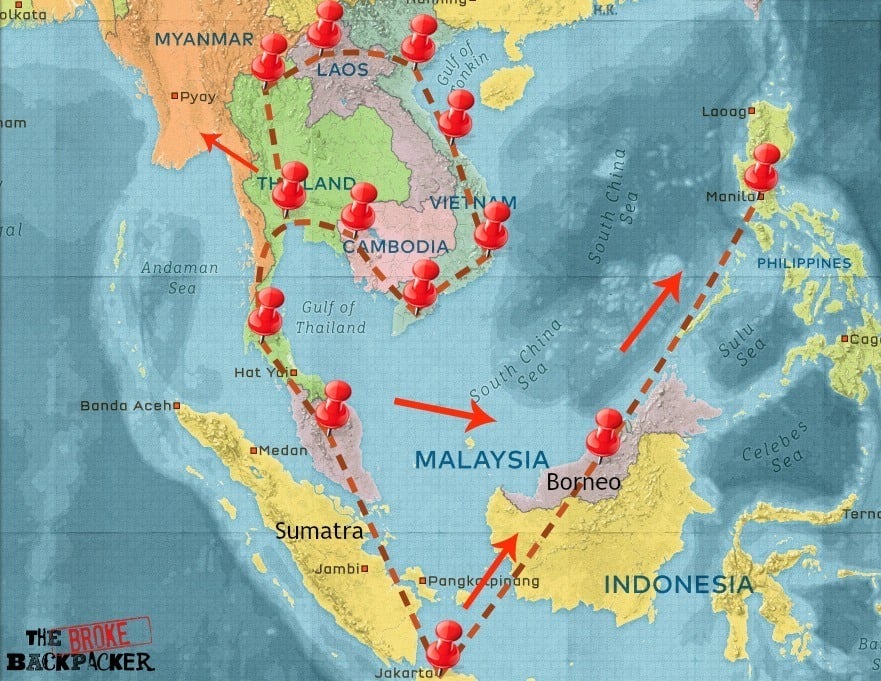
You will not be the first backpacker who loved backpacking Southeast Asia so much that you spent 6 months there followed by another 6 months followed by another cheeky 6 months. The longer you spend here, the more that the region opens up beyond parties on the beach.
Go trekking in Borneo! Get your ass to Indonesia and explore a few of the thousands of remote islands there! Hit up far-flung places in the Philippines! I will always vouch for travelling off the beaten path .
This itinerary would still have you flying into Bangkok AKA Asia’s Sin City. Backpacking Thailand is almost a rite of passage for those that backpack Southeast Asia. Now, while Thailand is crazy beautiful, you can experience a lot of Thailand’s best highlights in a month or less.
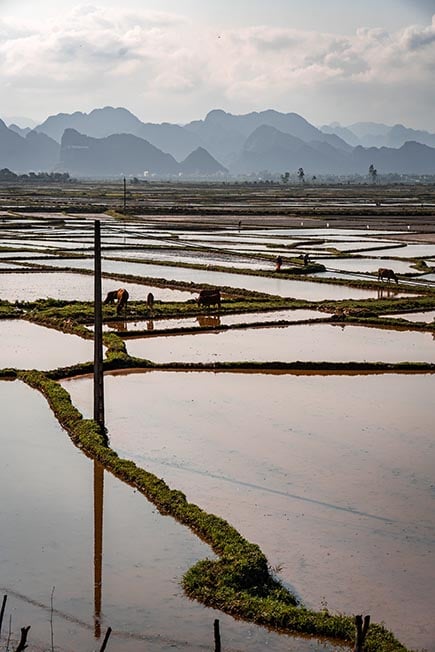
You can travel south to explore Cambodia and the Thai islands before crossing over into Northern Malaysia . Check out Langkawi Island before heading south. Staying in Penang is the best; it’s one of my favourite cities in Southeast Asia, with some great hikes and diving to be had around Penang National Park .
Alternatively, you can travel to Bali or Manila from Bangkok and explore a totally new part of Southeast Asia. Philippine highlights include climbing Mt Pulag , Sagada’s Crystal Cave and Olahbinan , Kalinga Jungle , El Nido for some climbing and partying, and Coron for epic scuba diving.
If you want to dedicate a couple of months to Indonesia you won’t be disappointed. Alongside the Bali to Flores route, you can also catch a flight to Sumatra . Here, visit the orangutan sanctuary in Bukit Lawang and the stunning Lake Toba .
Also on tap here is world-class diving at Pulau Weh . This tiny island is located at either the beginning or end of Indonesia, depending on which way you’re looking at the map. You’ll have to pass through the town of Banda Acehto to reach here, which is the only place in Indonesia that has Sharia Law in place. This definitely isn’t the place to come party while backpacking Indonesia, but the juice is worth the squeeze if you get to Pulau Weh.
Is this the Best Hostel in South East Asia?
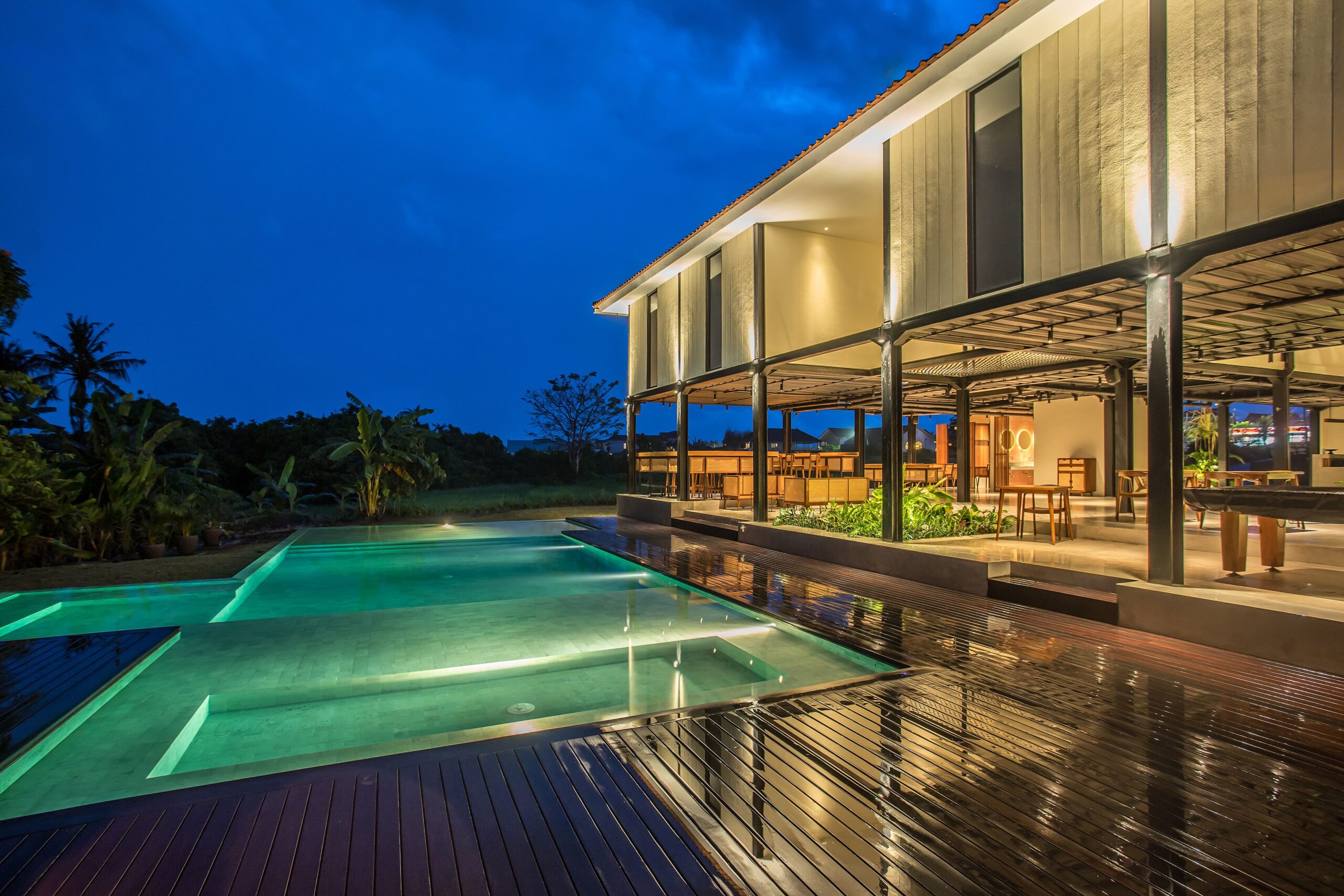
Tribal Hostel – Bali’s first purpose-built co-working hostel and perhaps the greatest hostel in the world!
An ideal hub for Digital Nomads and backpackers, this very special hostel is now finally open…
Come on down and enjoy amazing coffee, high-speed wifi and a game of pool?
Southeast Asia is truly massive .
There are 11 countries that comprise the Southeast Asian region; each one is special and also radically different in its own ways. You won’t even be eating the same food from country to country. Sure, it’s all mostly rice-based, but is it fried Nasi Goreng with an egg on top or is it laden with spicy green Thai curry?
The landscapes are even more varied with jungles, mountains, epic coastlines, and deserted islands all found in this region.
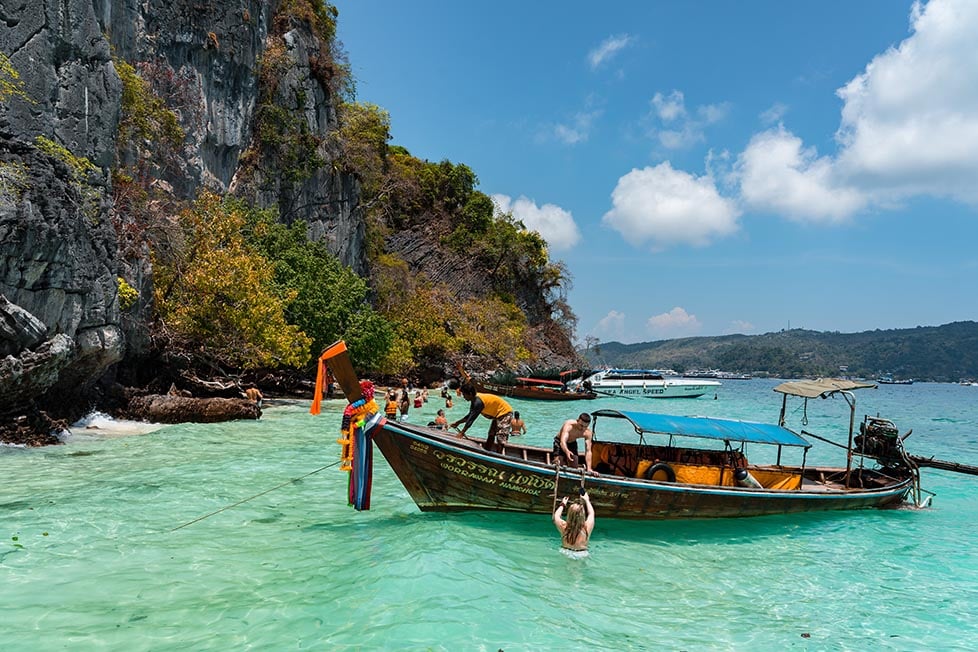
There’s something addictive to landing smack bang in the humid collection of markets, traffic, and skyrises that do crop up amongst all major Southeast Asian cities. Just visiting one or two of these countries will have you desperate to come back for more!
Backpacking Thailand
For many first timers, backpacking Thailand is the image at the forefront of their imaginations when it comes to destinations in Southeast Asia. Those white sand beaches, turquoise waters, and towering jungle peaks are sprinkled with a little hedonistic fun and low, low prices.
Finding a Thailand backpacking route is easy, as many routes are well-established and there are plenty of backpackers on the ground to grab tips from. You just never know who will suggest an epic street food vendor where you find spicy watermelon, or who will give you the heads up that certain roads have become notorious for police asking for bribes.
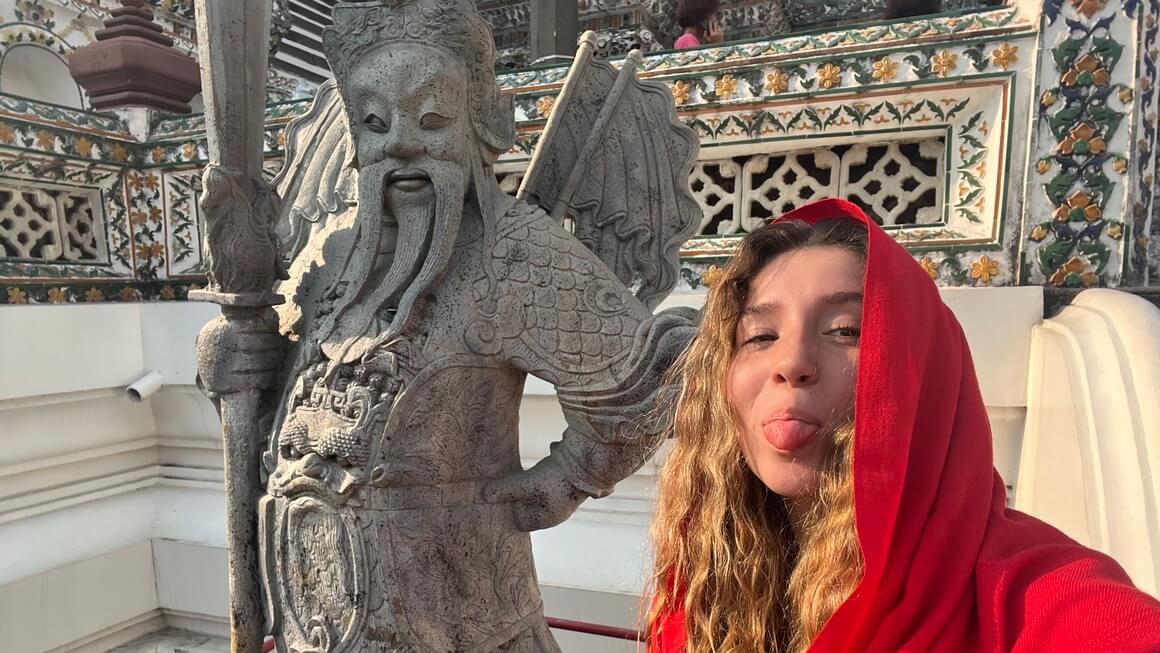
In addition to its natural splendour, Thailand boasts some of Southeast Asia’s most dynamic cities, especially if you are wanting to settle in somewhere as long term as a digital nomad. In fact, Thailand is rapidly becoming the digital nomad capital of the world. While being a digital nomad changes your travels , it can be incredibly rewarding – especially if you’re surrounded by a group of like-minded people.
Thailand receives more visitors annually than any other Southeast Asia nation by a long shot, so it’s not super easy to get off the beaten path. That being said, if you drive far enough north, you’ll stop seeing tourists and start seeing covert drug smuggling routes. I’m not suggesting that drug smuggling routes make the best adventure – especially for first-time backpackers – but if you happen to find work as a fresh-faced, aspiring journalist, then this country is definitely still full of stories.
There are also some lesser-known hikes nearby Chiang Pai – plus the motorbike riding around there is amazing . Just be aware of elephant experiences–the vast majority are unethical, so make sure you do your research and only visit TRUE sanctuaries like Elephant Nature Park.
What to Know Before Visiting Thailand
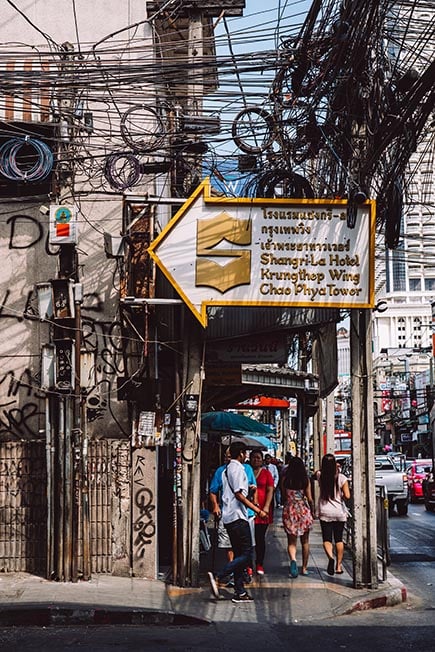
- Don’t miss out on… the North – this is the REAL Thailand! Sure, those Southern Islands are beautiful and full of some cheeky debauchery, but if you want to get off the beaten path then you need the jungle mountains of the north.
- You know what’s overrated… the Full Moon Party on Koh Phangan – it’s pretty sloppy here, not to mention hectic. The Eden Party is way better.
- The coolest hostel is… Get Hi Hostel in Chiang Rai is a The Broke Backpacker favourite! Especially if you’re travelling solo through Thailand, it’s a perfect place to find your tribe.
- The best food is found in… Bangkok. If you find yourself craving a cheesy pasta or fat steak you won’t be disappointed in this city! But even better (in my opinion) are the endless side alleys and markets selling incredible street food. Spicy watermelon, pad thai style noodle salads, and soups so spicy you’ll sweat out your demons… YES, please!
Backpacking Vietnam
Over the last few decades, Vietnam has charged to the head of the line as a top destination for backpackers. Delicious cuisine, cheap places to stay, epic ancient temples, and mind-boggling motorbike routes are just a few of the draws that make up the charm in Vietnam.
If you are wanting to explore Southeast Asia by motorbike, then Vietnam is the best place to go. The country is long and thin, so it’s perfect for a road trip and bikes with Vietnamese plates can enter most other countries in Southeast Asia (this is pretty unique).
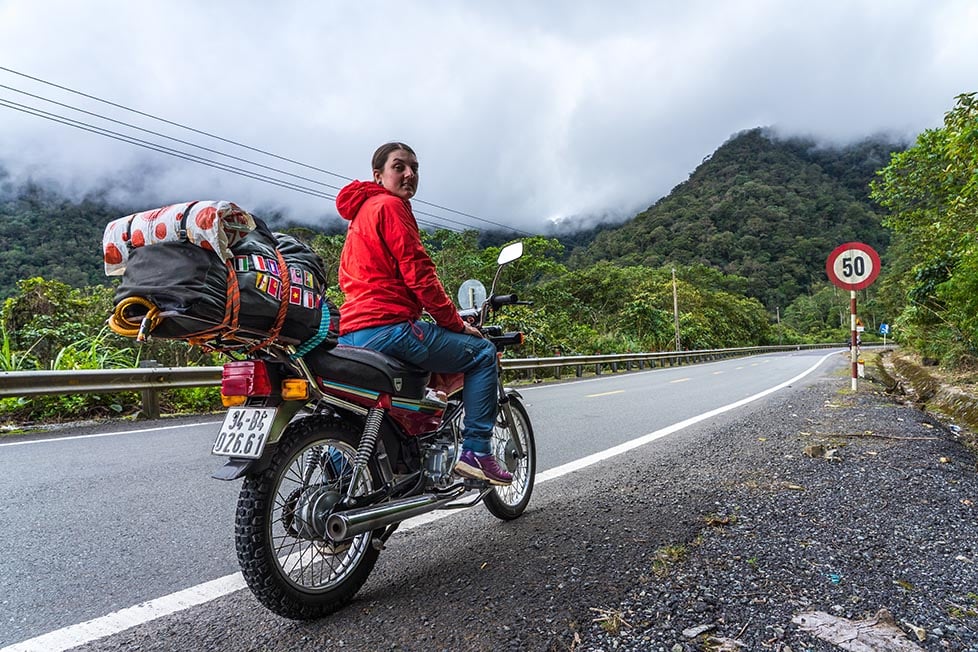
Vietnam has the feeling of a country that’s leapt into the future so quickly that its countryside is buffering to catch up. When exploring Hanoi , Ho Chi Minh City, or any of Vietnam’s big cities you’ll find skyscrapers and high-speed internet. There are underground music scenes and students who deal a little weed on the side to ex-pats. The streets are thick with motorbikes.
Then there’s the countryside: rolling green rice paddies, straw hats, and shacks. The mornings are long and slow, the evening is full of the sound of insects. Fields are thick with buffalo herds. And yet, both sides of Vietnam are united by their incredible food.
Pho might be the most famous noodle broth, but it’s far from the only tasty meal. Vietnam knows how to make a meal out of very little and they know how to make it taste good . Most backpackers will at some point indulge in a 3 am banh mi after a big night out and know what I mean!
What to Know Before Visiting Vietnam
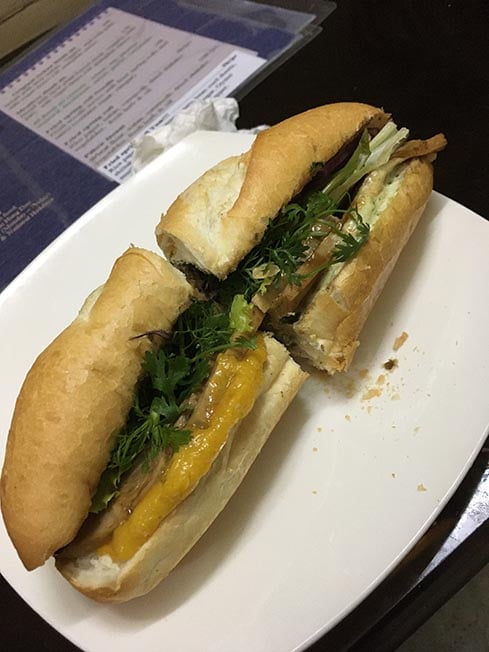
- Don’t miss out on… the Ha Giang Loop by motorbike . This one of the hidden gems of Vietnam that takes you through towering jungle covered mountains on windy, delicate roads. This is not for the faint hearted or ill prepared. This is a real adventure!
- Look out for… those bamboo pipes in the north – they’re used for smoking local tobacco and hit HARD. You might risk lung cancer, but all in the name of experiencing the local way of life, right?
- The coolest hostel is… Redhouse Dalat . It’s easily one of the most beautiful hostels I’ve ever stayed in and the owner, Linh, is an absolute gem!
- The best food is found in… Hue – it’s well known for its Central Vietnamese plates. I had quite possibly the best meal of my life here (definitely top 10, anyway). In a back alley, crammed into plastic chair far too small for me, I sampled the legendary Bun Bo Hue… I never knew noodles and broth would make me want to become a foodie.
Backpacking Laos
Laos is truly a special country in Southeast Asia and one that has managed to retain its easy-going identity in the era of mass tourism. Wild jungles, river deltas, smiling locals, and amazing treks make Laos the backpacking paradise that it is.
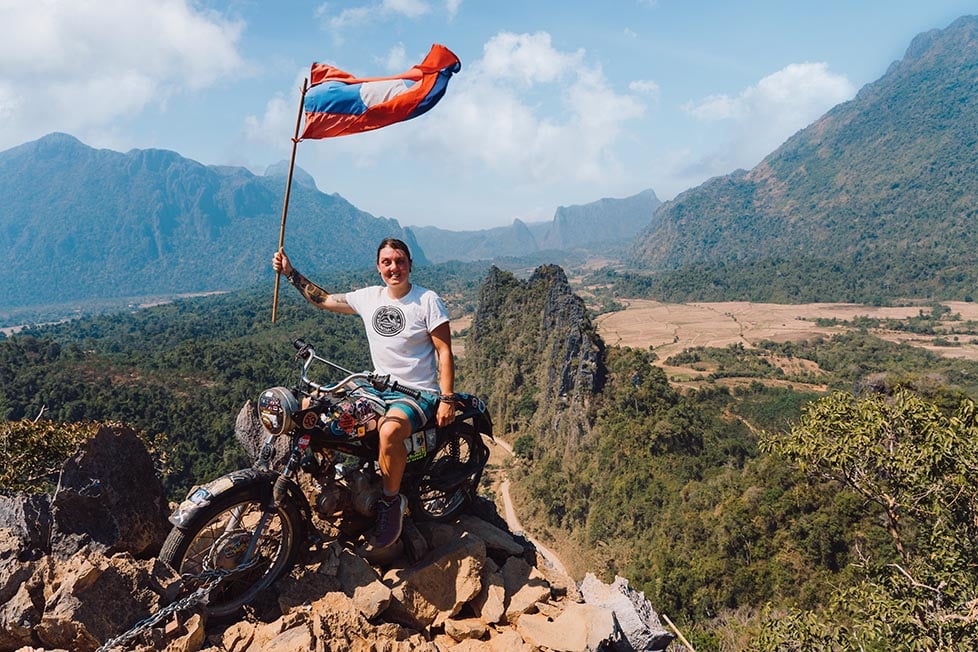
Places in northern Laos, like the areas in and around Luang Prabang , experience cooler temperatures in the mountains and rainforest. The south is more of the agricultural heart of the country.
Each area holds a lot to explore for backpackers. Laos is the perfect country for backpackers wanting to experience Southeast Asia within a short time frame as you can get in a bit of all climates, different cultures, and party vibes.
One can easily see the highlights and experience the country off the beaten path in 2 weeks to a month. Take it easy though. Laos is a country that is not to be rushed through. Plus, going slow means you might just end up on the 420-friendly river island– Don Det –just like I did!
You will see when you get your boots on the ground that nothing happens quickly in Laos anyway… This is a land of chill .
What to Know Before Visiting Laos
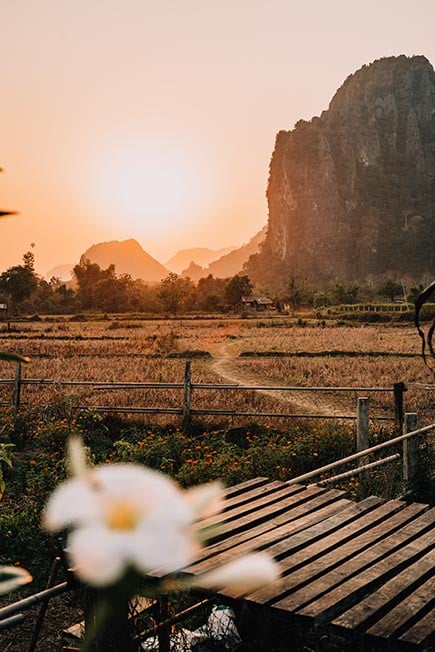
- Don’t miss out on… the mountains around Vang Vieng. Lots of people neglect exploring these in favor of tubing the river. The river party scene in Vang Vieng is diminishing anyways.
- You know what’s overrated… Luang Prabang. In recent years, it’s become very touristy and a bit disingenuous. The nearby waterfalls are still cool though.
- The coolest hostel is… Vang Vieng Chill House . It encompasses all the things I love most about hostels: chilling and good vibes. It gets a little noisy sometimes but it’s a great place to meet people.
- The best food is found… on the streets! The street food in Laos is absolutely top-notch.
Backpacking Cambodia
The temples at Angkor Wat are an obvious draw for those backpacking Cambodia and are truly impressive. Cambodia is a country rich in culture, beautiful beaches and islands, the Mekong River Delta, and bustling markets.
The nation of Cambodia is a country still pulling out of an extremely dark, recent past. A staggering 1.5 – 3 million people were killed by the Khmer Rouge, led by tyrant Pol Pot. It happened only 35 – 40 years ago and is still very fresh and raw to the Cambodian people.
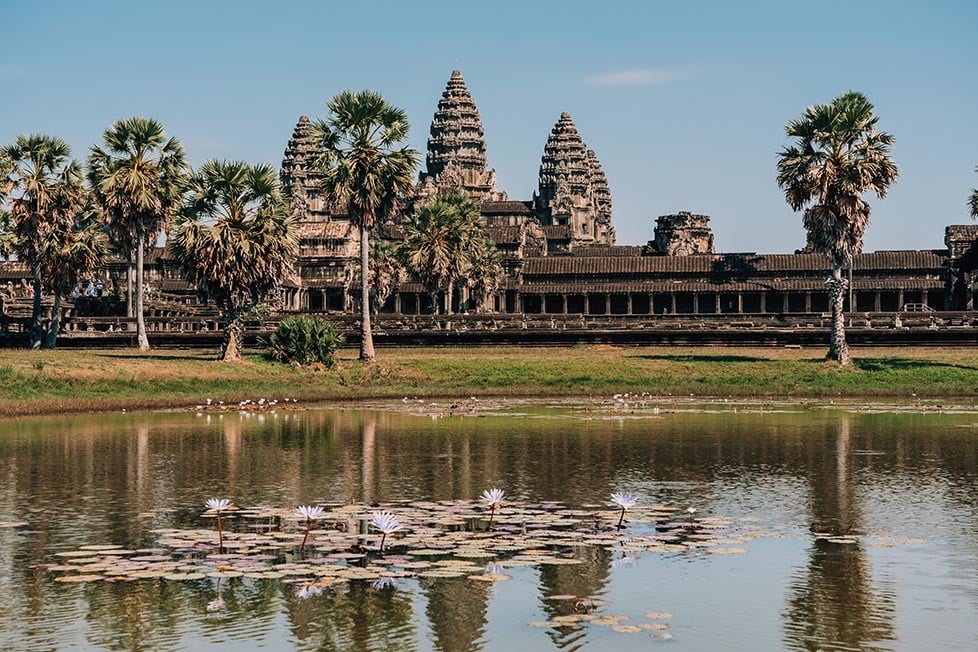
Despite the tragic history, the local Khmer people are some of the kindest humans in the world. The country is still recuperating, rebuilding, and moving forward, however, corruption is hindering its rehabilitation.
There is a strange energy in the air in Phnom Penh sometimes. It can be quite tense and stifling amongst the humidity. It’s as if everyone is waiting for the other shoe to drop and for chaos to return.
This is a country that makes you think about how lucky you were to be born into a country of peace. And I think that it’s important amongst the wild nights partying in Cambodia that you pause and really learn something from the lands you’re travelling in.
Cambodia is one of my favourite Southeast Asian destinations to travel to; I loved it so much that I ended up overstaying my visa. From the awesome hostels , cheap prices, and epic off-the-beaten-track travels, Cambodia seriously has it all. See it for yourself and you’ll fall in love too.
What to Know Before Visiting Cambodia
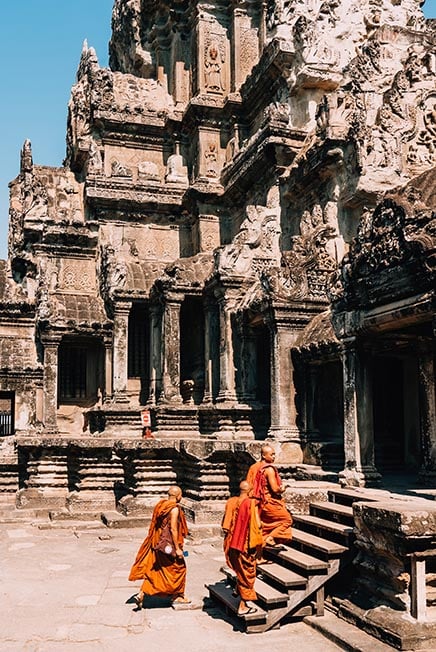
- Don’t miss out on… the Killing Fields and Tuol Sleng. One of the most sobering places in Southeast Asia and a refreshing change of pace.
- Keep an eye out for… temples other than Angkor Wat. Cambodia is full of Khmer ruins, like Koh Ker. You can spend days getting lost in the ruins of an empire past.
- The coolest hostel is… Yellow Star Hostel . It’s the kind of place you extend your stay for as long as your Cambodia itinerary allows.
- The best food is found in… the outdoor food market in Siem Reap. Most of the backpacker accommodation is conveniently located around here so it’s simply a matter of walking down and gorging yourself silly!
Backpacking Myanmar
Oh, Myanmar. For a few years between roughly 2011 and 2019, backpacking in Myanmar really took off as the country instituted democratic reforms and started to open up to the world. There was even a fear that in opening up to the world too quickly, Myanmar would lose some of its authenticity and charm.
I want to stress that I love Myanmar. I love the country and I love the people. I travelled there through some of the remote Northern regions. I caught the dilapidated trains, hitchhiked with monks, and even publically pooped my pants on a public bus after some dodgy food.
The temples are second to none, the food is cheap and delicious, and the countryside is beautiful .
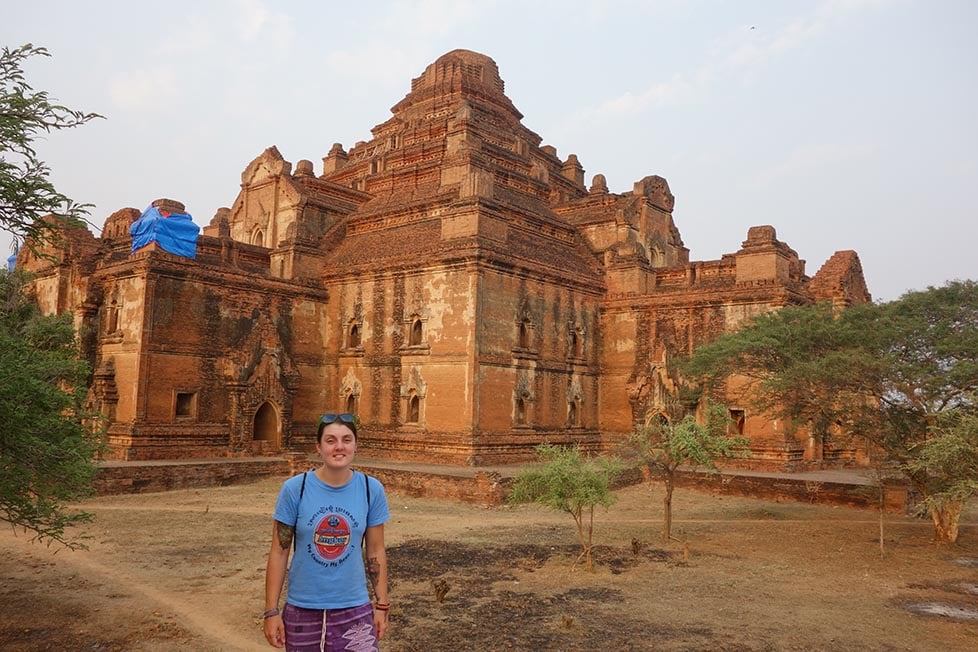
But, the seeds of what has happened to Myanmar had been sown many years before. You can trace the military take over and crackdown back to the consequences of British rule back in Imperial times. There was a lot of tension during the decolonial period too with the government shirking a lot of international aid and joining any international forums.
This isolationism was intensified with the first military coup of the 1960s. This was the same military that was loosening the reigns during the 2010s that allowed a few of us to explore what truly is one of my favourite countries on the planet.
The tensions with the various ethnic groups on the borders never went away though. And neither did the military. As of early 2021, Aung San Suu Kyi (the former democratic leader) has been imprisoned and political dissenters shot and jailed as the military clamps down on control again.
I couldn’t in good conscience advise anyone to go backpacking in Myanmar at this time. But I don’t want to strike this country off the map entirely. The people deserve better than that.
It’s probably not the place of a travel guide to tell you to support democratic movements – especially not ones that are as flawed as Aung San Suu Kyi’s – but I think it’s fair to say that the moment it’s safe. Go backpacking Myanmar!
February 2023 Update : In the past few months, Myanmar has reopened its e-visa program and is officially “open for tourism.” Many travellers have reported successful and problem free trips, BUT it’s still important to proceed with extreme caution. Though the political situation has stabilized, there is the chance of getting stuck in the country.
What to Know Before Visiting Myanmar
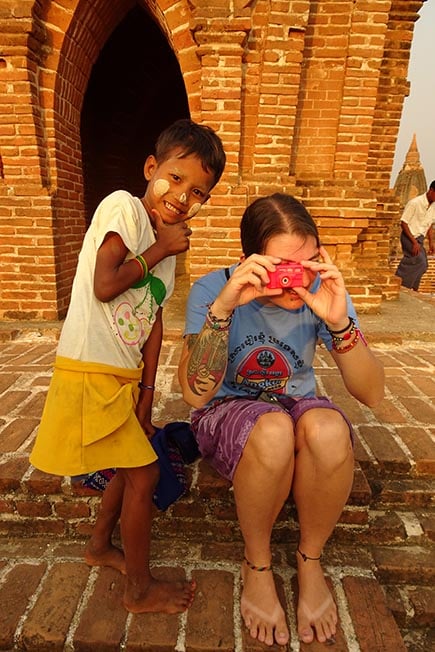
- Don’t miss out on… Bagan. There are touristy spots in Bagan, however, the scope of the area is immense. Riding an e-bike to a secret place and setting up for sunset is the way to go. There are so many side roads and off the beaten path ruins here that you’ll find something special.
- You know what’s overrated… Inle Lake. Super beautiful, super touristy, and super expensive. Visit, then shoot through for some of the mad trekking in the nearby regions.
- The coolest hostel is… Ostello Bello . These guys are a solidly run hostel chain that will have your back and provide a place of comfort while travelling Myanmar.
- The best food is found in… Mandalay. I actually love staying in Mandalay , and the aromas drifting from the nighttime street food market is a big reason why! It’s a big city so there’s a lot
Backpacking Malaysia
I absolutely LOVE backpacking in Malaysia. Somehow, Malaysia has managed to stay below the radar of many travellers on the Southeast Asia backpacking circuit. To write off Malaysia as uninteresting would be a mistake: Malaysia should be your next backpacking destination!
For one, I found Malaysia to have some of the lowest prices in all of Southeast Asia. The country is extremely clean, the roads are in great shape, and the people speak decent English. Malaysia is also a majority Muslim country, which I found to be an interesting contrast to the Buddhist majorities of the countries to the north.
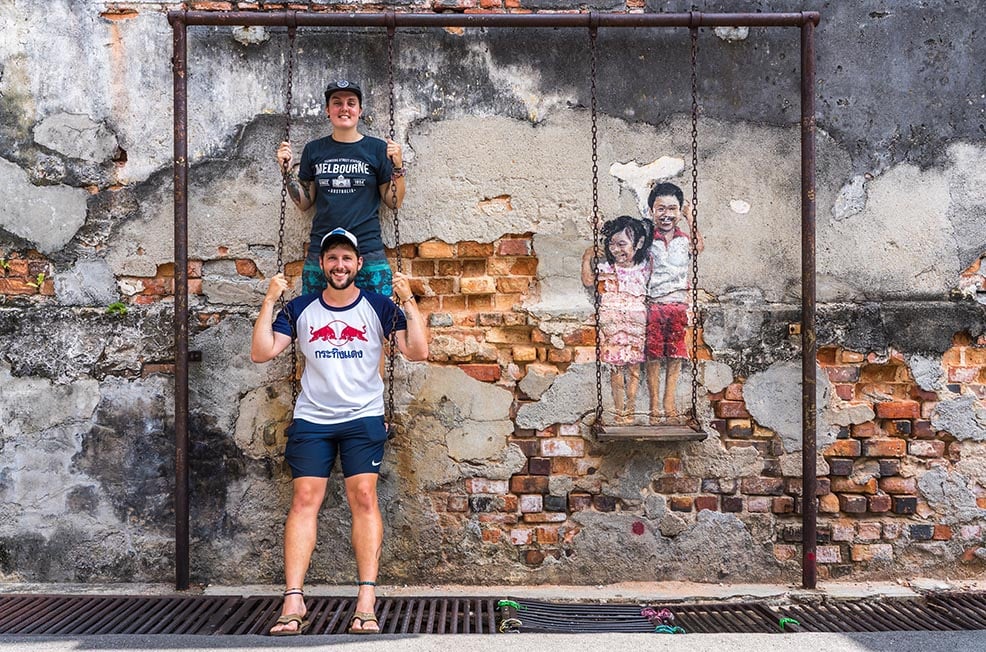
Tioman Island is one of Southeast Asia’s best-kept secrets. Getting your PADI open water certificate is cheaper on Tioman than anywhere in Thailand. Also, diving is better – in my opinion. The coral reefs are not experiencing the same level of bleaching as they are in Thailand. I saw plenty of turtles, sharks, and more vibrant reef systems generally.
Malaysia is also home to one of the world’s oldest rainforests at Taman Negara . So alongside some of the most vibrant and developed cities in Asia are some of Asia’s most wild and unruly jungles! And, if that wasn’t enough, Malaysian food is seriously delicious.
Then there is Malaysian Borneo . Parts of Borneo are surprisingly well developed. That said, there are giant swaths of the island that are still wild and teaming with rhinoceros, orangutans, and other rare wildlife. The trekking here is of the old school, beat your way through the jungle variety! Malaysia has incredible adventure opportunities for those willing to get well off the beaten path!
What to Know Before Visiting Malaysia
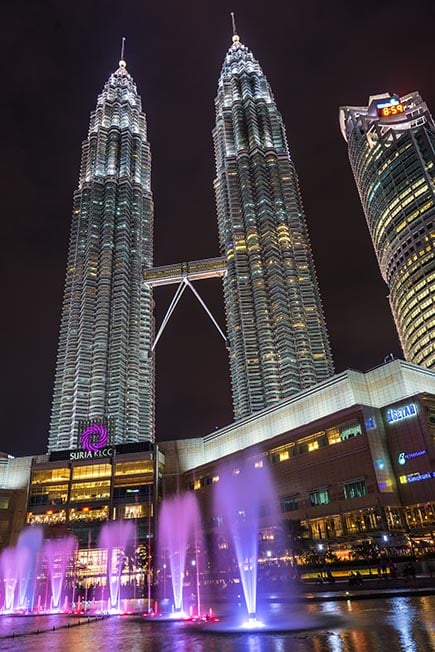
- Don’t miss out on… Borneo. It’s such an overlooked destination but there’s so much cool stuff going on here. Get a tattoo in Kuching!
- Look out for… hidden speakeasies in Kuala Lumpur’s Chinatown. They’re VERY well disguised, and absolutely worth it! Being an Islamic country, it’s harder to get alcohol here but where there’s a will there’s a way.
- The coolest hostel is… Best Attitude Hostel Cenang . This hostel has great social events running all the time – even if the karaoke makes me cringe!
- The best food is found in… Penang. Whilst ALL the food in Malaysia is good, Penang takes top honors. Seriously, those soups had me in a proper food coma.
Backpacking Singapore
Singapore is the smallest country to make our list. This tropical island city-state nation might be a blip on the map, but it is a regional economic and cultural powerhouse.
Backpacking Singapore has the reputation of being an expensive place to visit in Southeast Asia. Whilst Singapore is certainly more expensive when compared to its relatively cheap neighbours, there is still plenty to do for backpackers on a budget.
Some of the best street food in the world can be found amongst the food stalls of various markets. Singapore is a multi-cultural melting pot, so it is possible to taste the influences of many different cultures in a single dish. Rub elbows with locals and chow down on some epically delicious cheap eats.
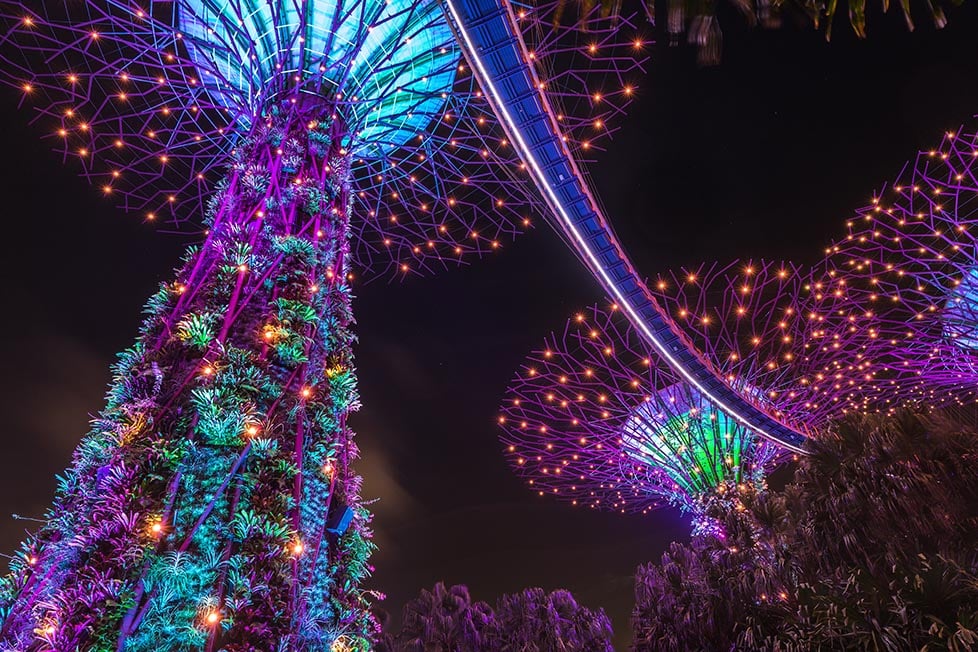
Visit Chinatown , explore Arab Street , and be sure to grab a curry in Little India . Just based on the neighbourhood names alone, you can gather that many ethnic groups are represented across this city-country.
If you are visiting Singapore for longer, be sure to check out the nature reserves surrounding the city. Few people realize that just outside of Singapore’s urban centres there are some great day hikes to be had in the surrounding jungle. There’s also plenty of local life to be experienced beyond the neon landscape.
Singapore is a city that has something for every backpacker. Whether you are just passing through or coming specifically to backpack Singapore, you can be sure that there is always something awesome (and tasty) to get into here. It’s wildly different to other countries within the region, and yet there are glimmers of something similar. You’re sure to love it!
What to Know Before Visiting Singapore
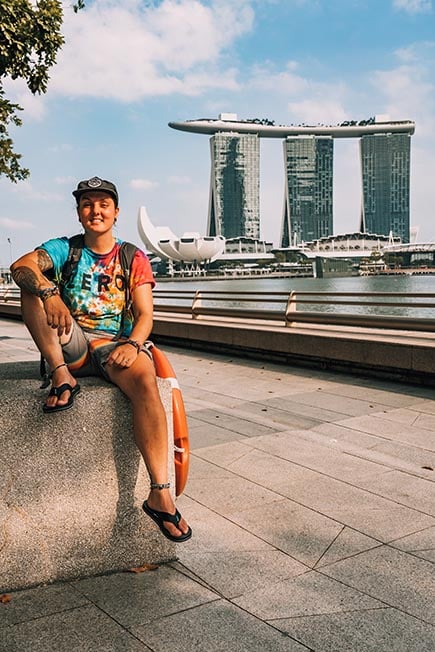
- Don’t miss out on… the hawker centres (cafeterias). When you’re in Singapore, you EAT. The food is incredible.
- You know what’s overrated… Sentosa Island – it’s just Disney World with a fake beach. And you know what’s worse than hoardes of people? Paying to be around hoardes of people.
- The coolest hostel is… The Bohemian . This colourful little corner of Singapore makes my heart sing… apore.
- The best food is found in… Maxwell Food Centre. This is the most famous hawker centre in Singapore. In fact, the world’s cheapest Michelin-star restaurant is here! But aside from that, there are countless delicious options. There’s little wonder I ended up a couple of kilos heavier after backpacking in Singapore!
Backpacking Indonesia
As a vast archipelago nation composed of over 17,000 islands, Indonesia is one of the most fascinating countries in the world. The country is so big and so spread out that exploring it can feel overwhelming.
Backpacking Indonesia is an adventure like no other. For starters, you can climb active volcanoes, encounter orangutans in the jungle, visit ancient temples, and enjoy spectacular diving.
All along the way, you’ll be welcomed in by some of the most friendly people out there while you enjoy the varied and delicious cuisine. Best of all, you can easily backpack Indonesia on a budget.
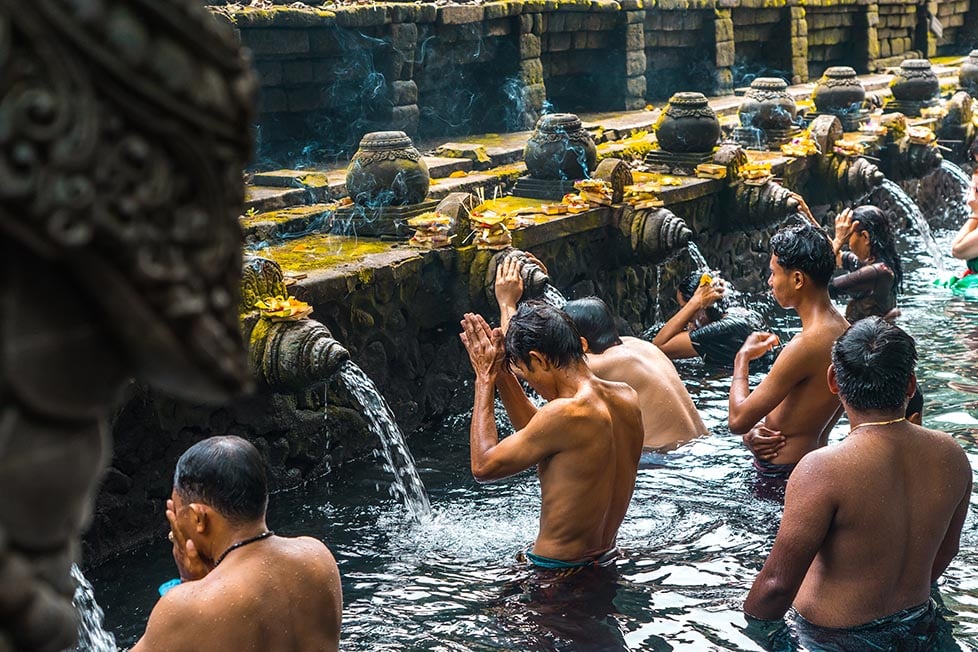
Bali is definitely the backpacker magnet of Indonesia and for good reason. Along with a blossoming digital nomad scene and tons of epic places to see, Bali is also surf and party central. If you are wanting to become a yoga teacher, there are countless programs being offered all across the island.
It’s worth staying in Bali for some time, but be sure to visit some of the other islands as well. Though fun, I would argue that Bali is not at all what the rest of Indonesia feels like. The country is jam-packed with off the beaten path exploration potential.
17,000 islands bro! Get yourself out there and explore some of them and you will quickly fall in love with this massive island nation. Because the real Indonesia is well outside of Bali.
The streets of Jakarta are a hot mess of traffic and street food contrasted with towering skyscrapers. The outer islands are deserted. There are jungles and villages as much as there are modern cities.
What to Know Before Visiting Indonesia
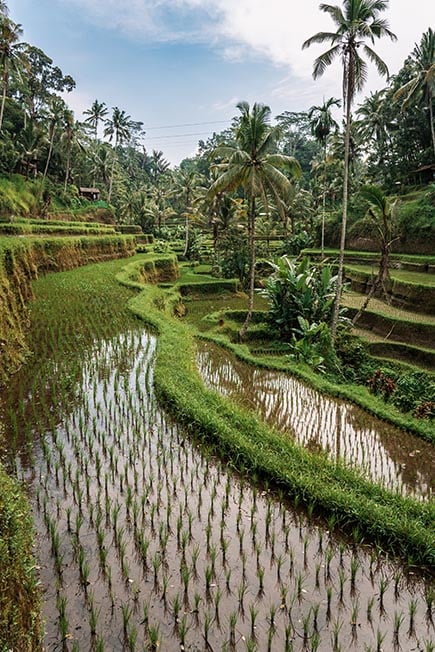
- Don’t miss out on… island hopping. Backpacking Nusa Penida , Derawan, the Kai Islands, Wakatobi; these are some of the best, but there are many more to see.
- You know what’s overrated… Kuta, Bali. Avoid it like the plague. Drunk Australians and piles of garbage. Plus, the tourists have made many of the locals suspicious of travellers. Not a vibe.
- The coolest hostel is… Tribal Hostel . Super cool, open and tropical, you won’t find a better place to stay than Tribal. In the quiet area of Pererenan Bali, and with a huge coworking space, Tribal has it all!
- The best food is found in… Jakarta. This city takes satay to a whole new level. Be sure to try as many satay sticks as possible – and Nasi Goreng, of course.
Backpacking The Philippines
Cheap beer, beautiful beaches, adrenaline-pumping activities, and some of the most friendly, genuine, people in all of Asia; the Philippines truly captured my heart. I made some incredible friends in the Philippines and I have to say, it is one of the easiest countries in the world to travel around as the locals are so friendly.
Getting around the Philippines as a backpacker and finding a sweet and cheap place to stay (and a sweet and cheap thing to eat) is breezy.
There are thousands of islands to choose from. This translates into EPIC scuba diving, a great place to learn to snorkel and to go fishing. If you have never learned to spearfish , you should absolutely give it a go. Spearfishing doesn’t get much better than in the Philippines where the visibility is insanely good!
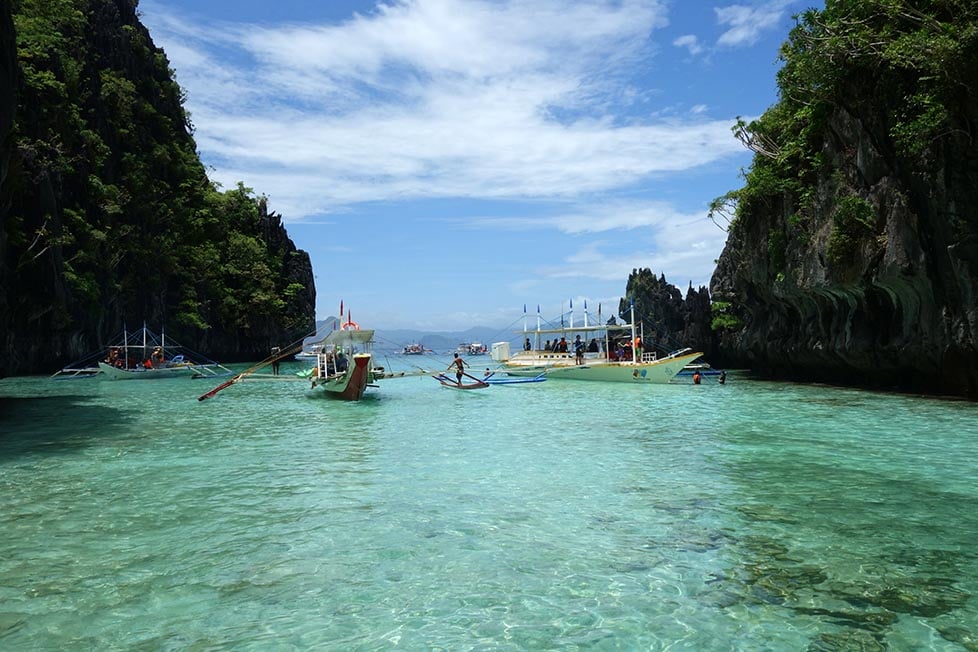
If you love trekking like me, then you will be pleased to find some epic hiking opportunities in the Philippines. Caves, rivers, mountains, you name it, one can find all the outdoor playgrounds here. There are heaps of adventure opportunities in The Philippines if you’re equipped for the job!
There are endless trekking options in the Philippines: remote hill hikes and active volcanoes, gentle strolls, and multi-day backpacking trips. Some popular treks include Cordillera and its rice terraces and trekking Mt. Pulag .
Not too far from here you can reach Sagada (and my saucy Sagada travel guide ) and hike in the hills. Bohol and the Chocolate Hills are a great place to trek as well. The Philippines is home to 25 active volcanoes that can be climbed to the summit!
If you’re a fan of a party then you’re in the right place as festivals in The Philippines are some of the most lively events you can experience as a traveler, and a wonderful way to immerse yourself in the culture of such a diverse country.
What to Know Before Visiting the Philippines
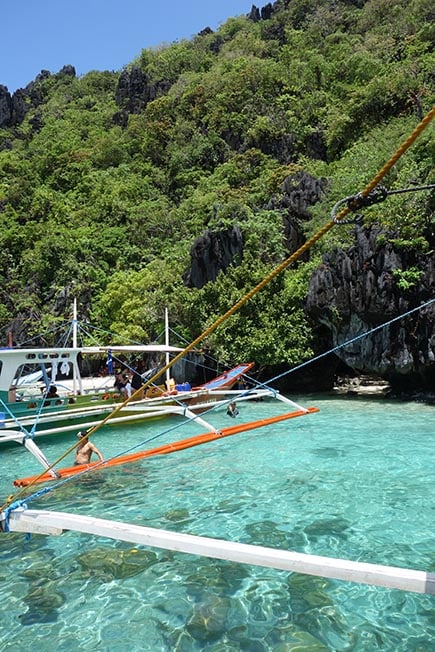
- Don’t miss out on… El Nido. It’s utter paradise, the stuff of dreams and legends. Stay here forever if you can.
- Look out for… crowds at Baguio. It’s becoming one of the most popular places in The Philippines; let’s hope it doesn’t become TOO popular.
- The coolest hostel is… Mad Monkey Hostel Siargo . The MM chain is somewhat legendary – but this one is my favourite.
- The best food is found in …hard to say, really – there’s just so much diversity when it comes to Filipino food . Suckling pig in Cebu, empanadas in Ilocos, bulalo in Tagaytay; nothing really beats adobo made by a local grandma though.
Getting Off the Beaten Path in Southeast Asia
Once you have your boots on the ground, the Southeast Asia backpackers circuit will be as obvious as the stars in the night sky. Backpackers generally don’t venture too far off of the so-called Banana Pancake trail.
That said, if you are a keen and adventurous type, there are many parts of Southeast Asia that are untouched by backpackers to this day. Many regions are very wild and make for endless exploration opportunities.
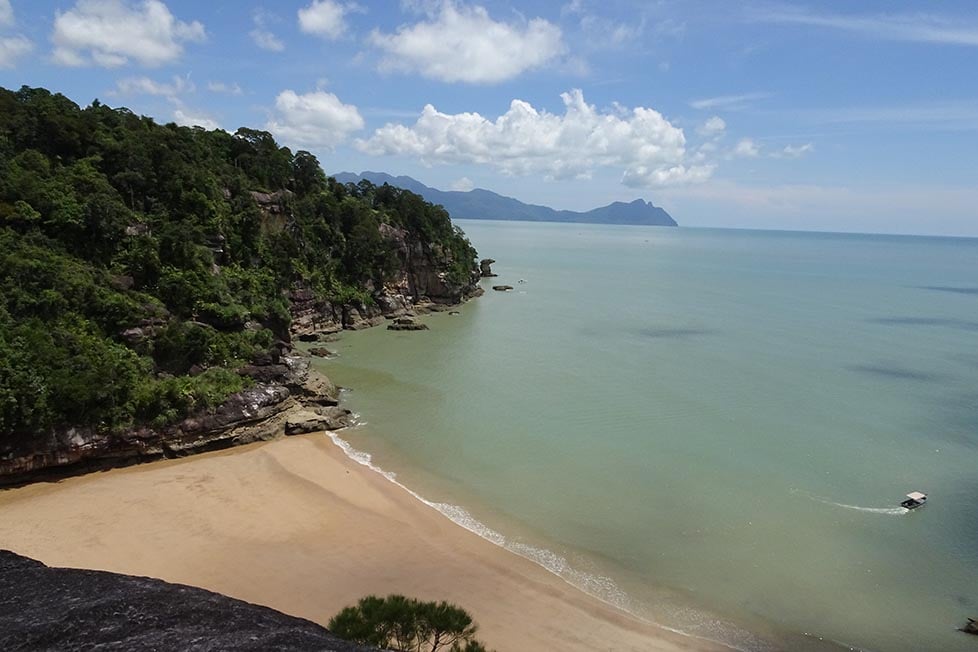
Additionally, there are islands in Southeast Asia (think Indonesia) that are so damned remote, few westerners have ever been to them. Have fun on the Banana Pancake Trail, but don’t forget to dip out once in a while to truly explore.
For starters, I’d suggest trekking in Borneo or taking a long motorbike excursion to the Vietnam-China border. These are two wildly different types of adventure, but they hint at the wild times you can forge for yourself if you avoid other tourists like the plague.

We’ve tested countless backpacks over the years, but there’s one that has always been the best and remains the best buy for adventurers: the broke backpacker-approved Osprey Aether and Ariel series.
Want more deetz on why these packs are so damn perfect? Then read our comprehensive review for the inside scoop!
Southeast Asia is an adventure playground. It is a backpacker paradise and a place teeming with awesome budget adventures. There will certainly never be a day where you are bored for lack of things to do in Southeast Asia. Let’s dive in and take a look at some of the radical adventures that await you in Southeast Asia…
1. Jungle Trekking
There is some great jungle trekking in Northern Thailand, Malaysia, Laos, Vietnam… Hell, in every country in Southeast Asia, really! If you choose to go trekking make sure to go on a multi-day hike. Personally, I prefer trekking in Laos, and I had an epic experience in Myanmar back when it was safe to travel through.
I would love to explore more of the remote corners of Indonesia and Borneo too – the options to go jungle trekking in Southeast Asia are really limitless!
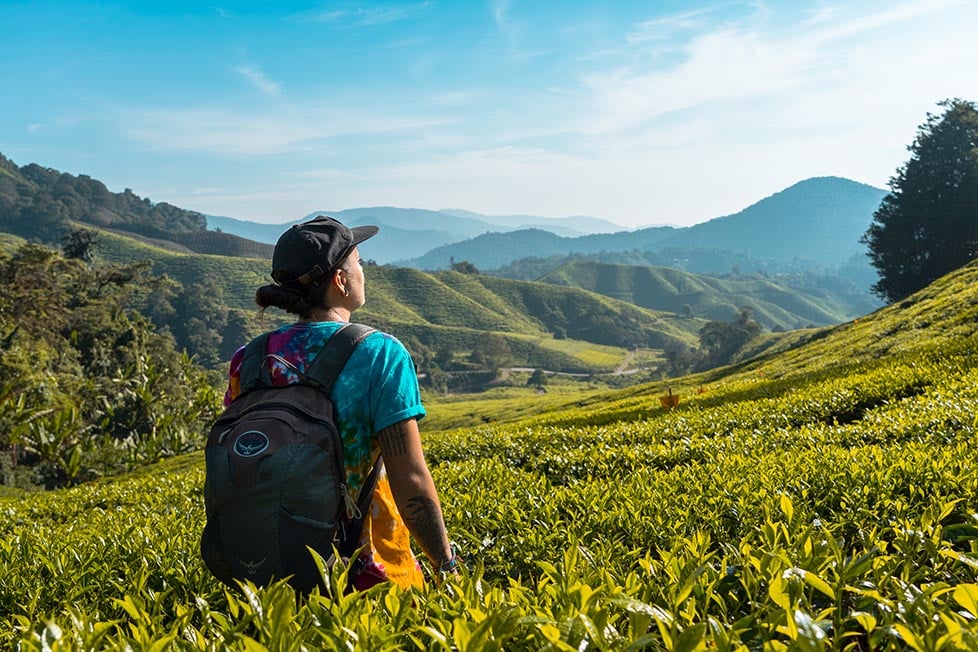
2. Scuba Diving
Many backpackers fall in love with scuba diving whilst in Southeast Asia. Thailand, Malaysia, and Indonesia offer incredible diving opportunities in crystal clear waters with abundant marine life and plenty of wrecks for the underwater adventurer. The cheapest place to learn is the island of Kao Tao in Thailand and the islands in Malaysia.
If you’re not up to learning to dive, you can always learn to snorkel too. But with the affordable prices of Asia combined with the excellent visibility, you can’t really go wrong!
3. Motorcycle in Southeast Asia
Perhaps there is no better way to explore a country than by motorbike . You’re truly free to design your own itinerary and take every side alley that takes your fancy.
Plus, you become part of the landscape when you’re riding. There aren’t windows of a bus separating you from the buffalo or the mountain.
But there also isn’t much of anything to protect you if you fall off. So I’d suggest wearing proper riding gear and having insurance. That way, you’re free to enjoy the jungle roads, the epic peaks, and the offbeat camping destinations that Southeast Asia has to offer with some peace of mind.
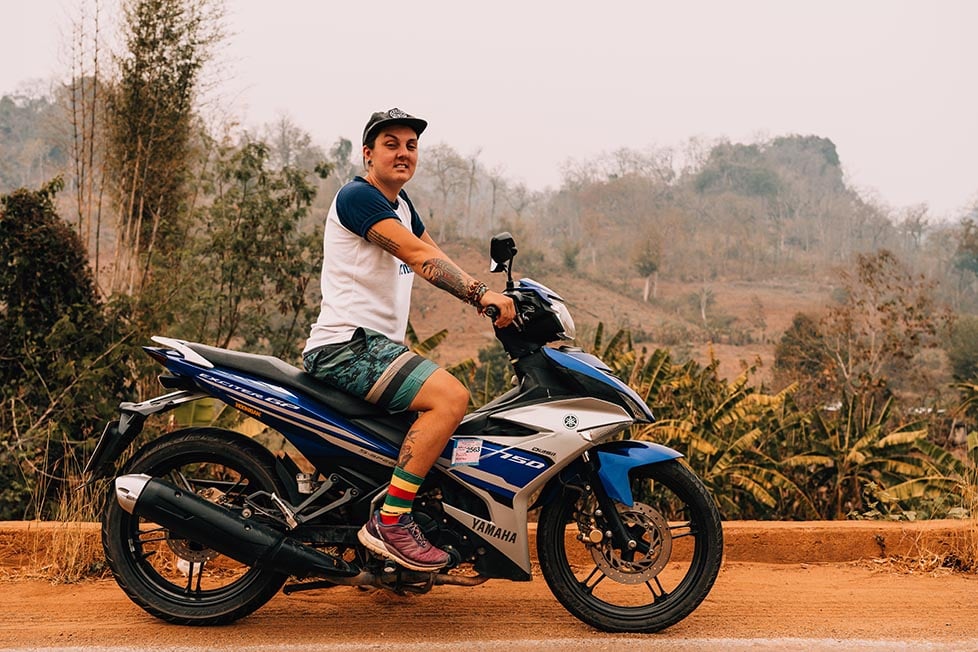
4. Learn To Cook
Love the hell out of Southeast Asian cuisine? Me too!
Taking a cooking class whilst visiting a Southeast Asian country will supercharge your cooking skills. You will be preparing delicious meals for years down the line that remind you of the good ol’ days backpacking Southeast Asia.
Each country is full of such diverse dishes, too. You could pick up a nasi goreng recipe down in Indonesia which would stand completely apart from a classic Thai green curry, or a delectable set of Vietnamese rice paper rolls.
5. Chase Waterfalls
Don’t go chasing waterfalls… What nonsense! In every country in Southeast Asia, you will stumble upon waterfalls, epic waterfalls. Each will be more impressive than the last and will have you dreaming of turquoise waters for years to come.
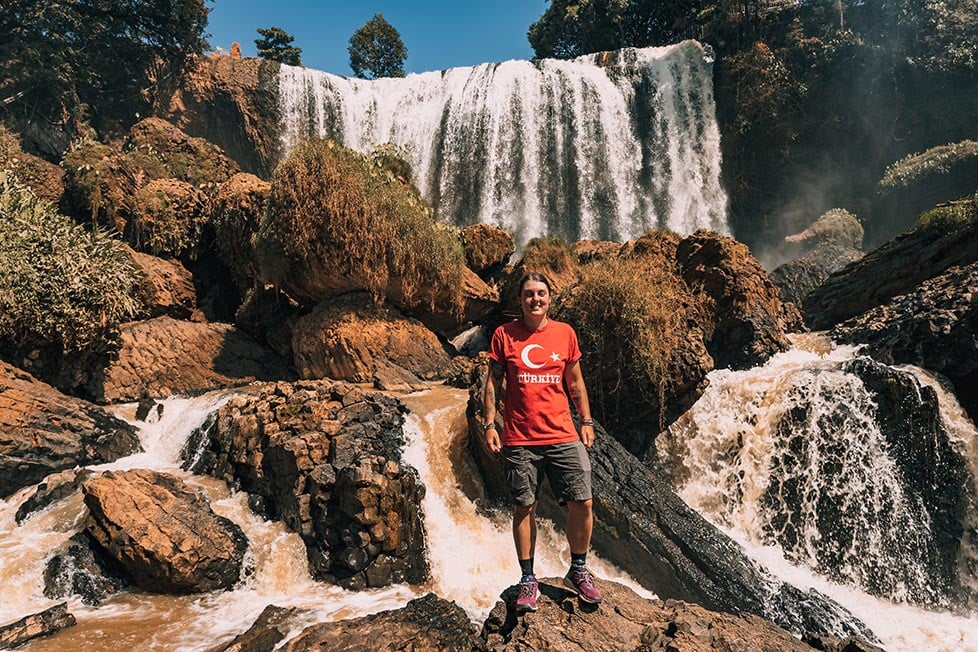
6. Go Caving
Southeast Asia is home to some truly impressive cave systems. If you have the chance, you must explore some of them! There is the world’s largest cave in Vietnam, but many of the smaller caves throughout the region are equally as epic and more accessible. Over in the Phillippines, you can even try your hand at cave diving – that shit’s UNREAL!
7. It’s Street Food O’Clock
Love trying new things? There is something delicious, tasty, and bizarre to put in your mouth around every turn.
I hope the words “no, I don’t think I want to try that” never come out of your mouth. You will find food that makes you cry tears of joy. There will be times when your entire mouth becomes a burning pit of hell. And there will be magical moments where it’s a bit of both.
Each country brings something unique to the table for you to sink your teeth into – literally. So you’ve got no choice but to start munching your way through street carts!
(Exceptions are granted only if the food in question is an endangered or protected animal.)
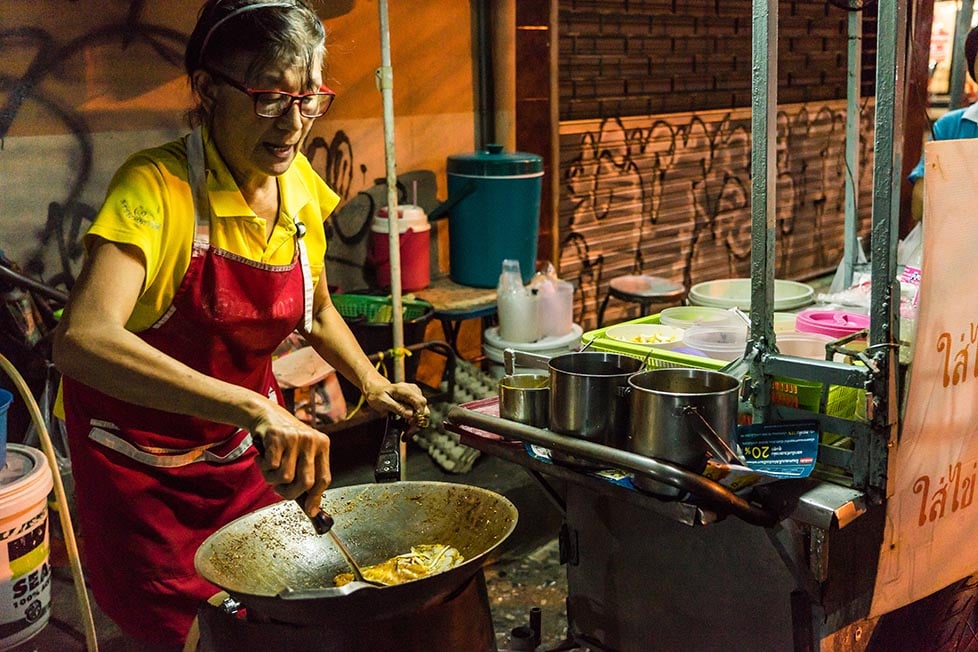
8. Go climbing
Southeast Asia is full of karst mountains, which rise like pillars and towers from the ground. For the casual tourist, these spires make great photos. For climbers though, these are the stuff of dreams.
Visit Railay, Cat Ba, and Kuala Lumpur for some grade-A routes.
9. Island hopping
The Philippines has over 7,100 islands; Indonesia has 17,000. Combine these with all the other random islands scattered throughout Southeast Asia and you have a shit ton of islands to live out your Robinson Crusoe adventures. Better get started now – it’s going to take a while to visit them all.
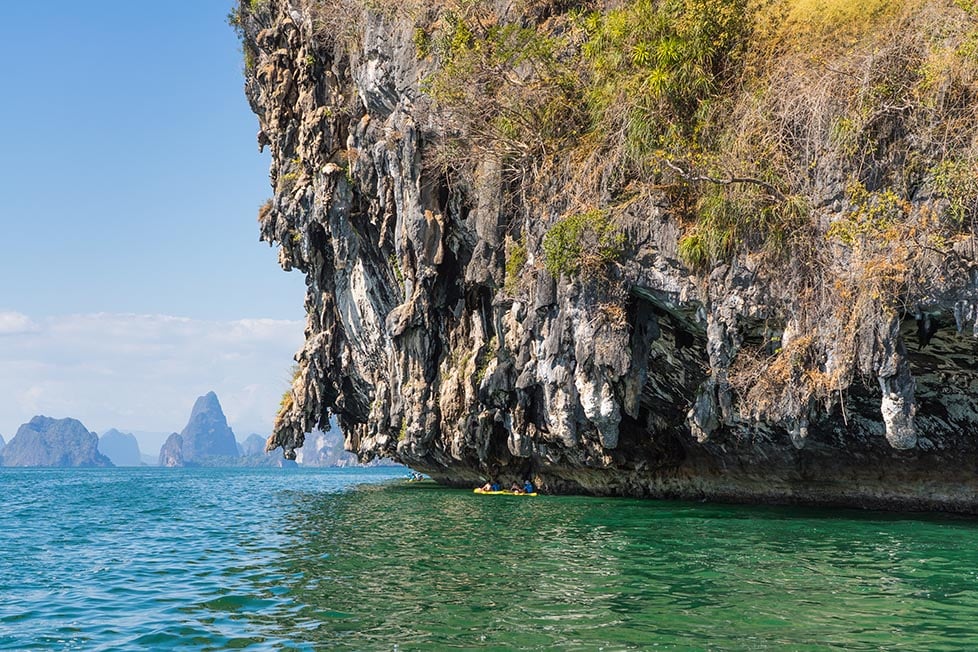
If you get really addicted to island life, you may want to try boat life . That way you can perpetually traverse the best of Southeast Asia’s islands and beyond…
10. Stay in a Coworking Hostel
More and more backpackers are looking to turn their travels into a full time way of life… the best way to get inspired is to meet and brainstorm with other aspiring entrepreneurs and digital nomads, check out Tribal Hostel in Bali to find ideas, support and new friends 🙂
Psssst…. Searching for your Tribe?

Tribal Hostel – Bali’s first purpose-built co-working hostel and perhaps the greatest hostel in the world!
Come on down and enjoy amazing coffee, high-speed wifi and a game of pool 😉
The most common place to stay while backpacking Southeast Asia is, of course, hostels. They’re cheap, ubiquitous, and can be a helluva a lot of fun.
Never stayed in a hostel before? You’re in luck! Southeast Asia is the best place to learn how to live the hostel life .
Southeast Asia has some of the most well-known and well-regarded hostels in the world, which would impress even the most seasoned backpacker. There’s a real mix of cheap places to stay, too. There are the classic party hubs where to beer never stops flowing. But there are some really chill places where it’s more likely that everyone is sitting around smoking a joint while swapping travel stories.
If you’re going to be hitting the Banana Pancake Trail hard and for several months, you’ll want to pack the right stuff with you. We all know that guy who steals towels from hostels and takes them wherever he goes; don’t be that guy.
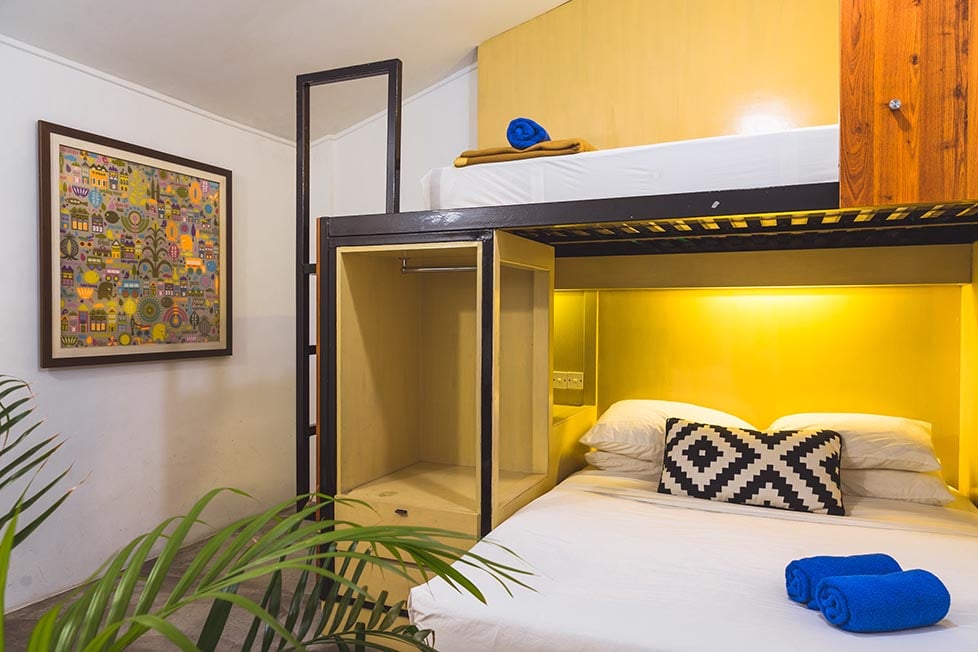
Whilst it’s easier to find hostels in the well-trafficked parts of Southeast Asia, there are some real gems just slightly off the beaten path. One of the best hostels I ever stayed in was in the middle of nowhere Northern Vietnam.
As is always the case, camping would be the ultimate way to save cash while backpacking. Just make sure you take a good tent with you and do your best to check your site – there are some really dangerous snakes and crazy, heavy rain out there in the remote, jungle areas.
There is really never a need to stay in a hotel while backpacking Southeast Asia. If you need a private space, book an airbnb or find a local guesthouse instead. Because it’s Asia, it won’t be very expensive and might be just what you need to recharge yourself.
- Where to Stay in Vietnam
- Where to Stay in Thailand
- Where to Stay in Malaysia
- Where to Stay in the Philippines
- Where to Stay in Singapore
- Where to Stay in Cambodia
Southeast Asia is the Mecca for cheap places to travel broke . Nowhere else on earth can you drink beer, find accommodation, and eat out every day easily for under $10 USD .
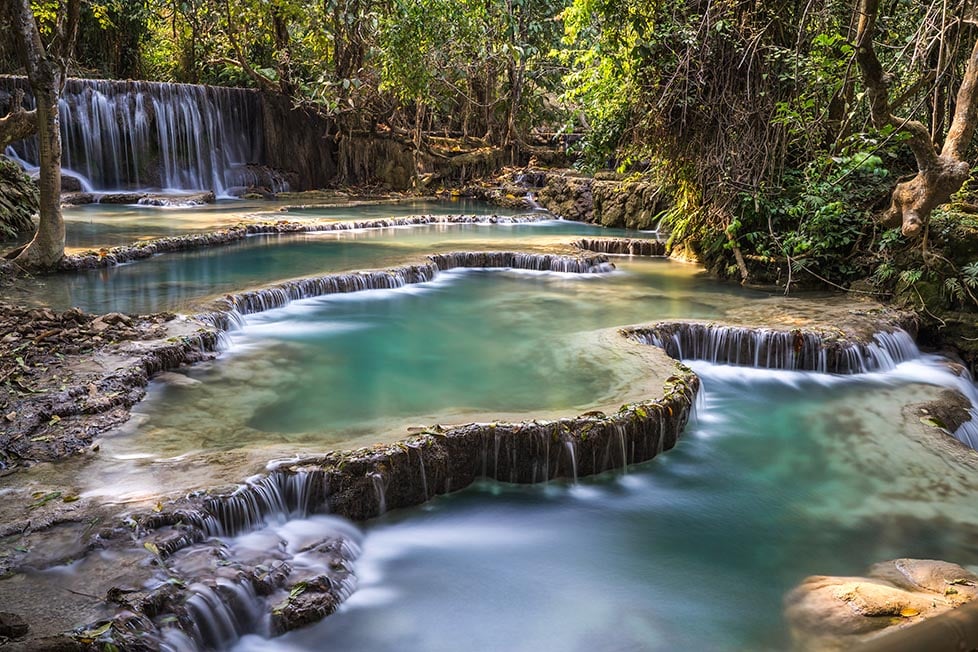
To give you an idea of the cost of backpacking Southeast Asia, here are some examples of shoestring travel budgets:
- $20 – $30 / day: Vietnam, Laos, Cambodia
- $25 – $35 / day: Thailand, Myanmar, Malaysia
- $30 – $40 / day: Indonesia, Philippines
As you can see, some countries in Southeast Asia are more expensive than others. For example, the cost of a trip to Thailand is not as dirt cheap as you might think, especially if you plan on just eating Western food.
Generally speaking, any of the islands you visit whilst backpacking Southeast Asia will be more expensive than the mainland. Also, Singapore kind of stands as its own thing – you can expect a much higher cost of travel there than the rest of Southeast Asia as it’s not catered to budget travellers.
Creating the right Southeast Asia budget for yourself is the key to a successful backpacking adventure. Travelling in Southeast Asia should never be super expensive. With a few budget travel hacks up your sleeve, you will save a ton of money and have the time of your life.
A Daily Budget in Southeast Asia
Here is a more in-depth breakdown of what you can expect to pay on a daily basis whilst backpacking Southeast Asia…
Budget Tips for Visiting Southeast Asia
To keep your spending to an absolute minimum whilst travelling in Southeast Asia, I recommend sticking to these basic rules of budget adventuring….
- Camp : With plenty of untouched beaches, forests, stunning countryside, and far-flung jungle, Southeast Asia can be a great place to pitch a tent for the night. A solid sleep system saves you money and can help you get off of the beaten path.
- Eat street food : Southeast Asia has the BEST street food in the world. You can easily load up on just a few dollars. Night markets are iconic places to start from.
- Couchsurf: Southeast Asian locals are awesome, so get to know some! Check out Couchsurfing to make some real friendships and see a country from the perspective of locals. When using Couchsurfing, be sure to send personalized messages to your potential host – make yourself stand out!
- Haggle: Barter, negotiate, sit down for a tea, and philander hedonistically if necessary. A good haggling game is going to go a long way towards backpacking Southeast Asia on a budget.
- Hitchhike: This is just your friendly neighborhood reminder that hitchhiking is the best, and it saves you cash! But more than that, it launches you right into the thick of it and entices adventures to come out of their hidey-holes.
- Leave “The Bubble”: Staying in the tourist bubbles always gets more expensive. Remember to leave the bubble and live the local life for truly cheap Southeast Asia travel.
Why Should You Travel to Southeast Asia with a Water Bottle?
Whilst there’s a lot that we can do when it comes to travelling responsibly , reducing your plastic consumption is one of the easiest and most impactful things you can do. Don’t buy one-use water bottles, don’t take plastic shopping bags, and forget straws. All of this just ends up in landfills or in the ocean.
One way you can minimise your plastic footprint is by investing in a premium filtered water bottle . That way, not only do you save money by not having to buy bottled water everywhere you go, but you aren’t contributing to the problem. You’re being part of the solution! And the turtles thank you!

Drink water from ANYWHERE. The Grayl Geopress is the worlds leading filtered water bottle protecting you from all manner of waterborne nasties.
Single-use plastic bottles are a MASSIVE threat to marine life. Be a part of the solution and travel with a filter water bottle. Save money and the environment!
We’ve tested the Geopress rigorously from the icy heights of Pakistan to the tropical jungles of Bali, and can confirm: it’s the best water bottle you’ll ever buy!
Due to the great distances involved when we are talking about ALL of Southeast Asia, the weather can really vary.
The peak tourist season in Thailand, Laos, Cambodia, and Vietnam is from November to February when the weather is beautiful across the region, but there’s a high chance you’ll run into a ton of tourists. The really popular guesthouses fill up fast.
The local people are a really friendly bunch and keen to help so if you have any problems don’t be afraid to ask for directions from the locals. It is best to avoid northern areas of Thailand from February to April as the burning season starts and mountains will slowly be covered in smoke.
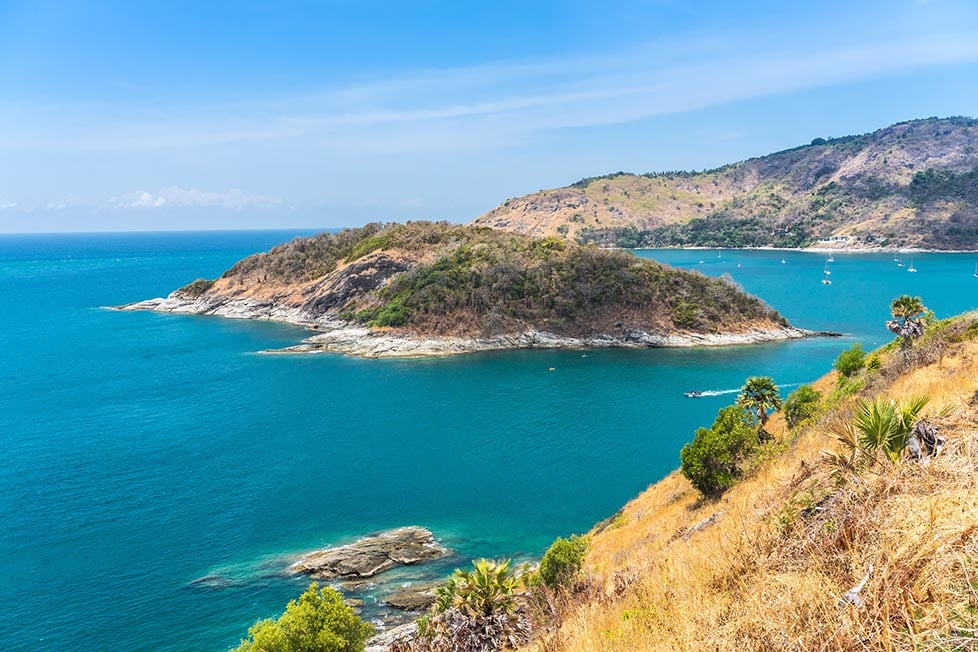
When we are talking about Indonesia for example, keep in mind that Indonesia is WAY farther south and nearer to the equator. The weather in Indonesia can be loosely applied to Malaysia as well.
Generally speaking, there are 2 seasons in Indonesia – the dry season and the rainy season. In most parts of the country, the dry season lasts from May to September . Of course, this is also the most popular time to visit.
Consider visiting in either May or September if you want to try and avoid the massive summer crowd, especially in Bali. This way you can find cheaper accommodation which is difficult to find during peak season.
Most of the rain in Indonesia falls from October to April , with some regional variations. Those looking to do some serious trekking or diving may want to try and plan a trip in the dry season. There’s no need to let a little rain spoil your trip, though. Rain usually comes in quick downpours so just take a solid rain jacket; you’ll still get to enjoy several hours of sunlight.
Best Time to Visit – Country Breakdown
Best Months to Travel: November-February, March-September (Southeast Coast)
What’s the climate in Thailand like?
Most of Thailand is dry and comfortable to visit from November-February. In March and April, the temps start to rise until they become horrible in June. The rains start in May.
The exception to this is the southeastern coast of Thailand (Koh Samui, Hat Yai, etc). The rains come a bit later here.
Best Months to Travel: November-April (North & South), February-July (Center)
What’s the climate in Vietnam like?
Vietnam is a weird one: the North and South have similar rainy seasons, but the center’s is a bit later in the year. The absolute perfect time to visit the whole country would be in February and March.
Best Months to Travel: October-April
What’s the climate in Cambodia and Laos like?
Pretty straightforward with only two distinct seasons: a wet one and a dry one.
In the wet summer season, downpours can washout dirt roads, and the heat can be OPPRESSIVE. Be prepared for lots of lazy days of doing nothing if traveling to Cambodia or Laos during the summer season.
Best Months to Travel: October-March
What’s the climate in Myanmar like?
Typical Southeast Asia. The dry season in Myanmar actually runs until May but the temperatures at the end of the month are just WAY too much. June is unbearable to visit.
Visiting during March or October (shoulder months) are great times.
Best Months to Travel: November-February (West Coast), March-September (East Coast)
What’s the climate in Malaysia like?
Pretty hot and humid all year round but each coast has opposing rainy seasons. Stick to one coast depending on when you’re visiting Malaysia.
Note the Cameron Highlands are temperate all year-round with a rainy season from September-December.
Best Months to Travel: May-September
What’s the climate in Indonesia like?
In most of the country, the wet, hot season runs from October to April. Around May, the rains start to subside, temps drop, and tourists return. Visit Indonesia in May before prices go up.
Northern parts of Indonesia, like Maluku and Raja Ampat, experience the wet season in OPPOSITE months. October-April is the best time to visit these.
Best Months to Travel: November-May
What’s the climate in the Philippines like?
Not quite as hot as continental Southeast Asia, which makes travel in April and May more viable. But June-August should definitely be avoided – this is typhoon season and storms can very dangerous. Most ferries and resorts shut down during this time.
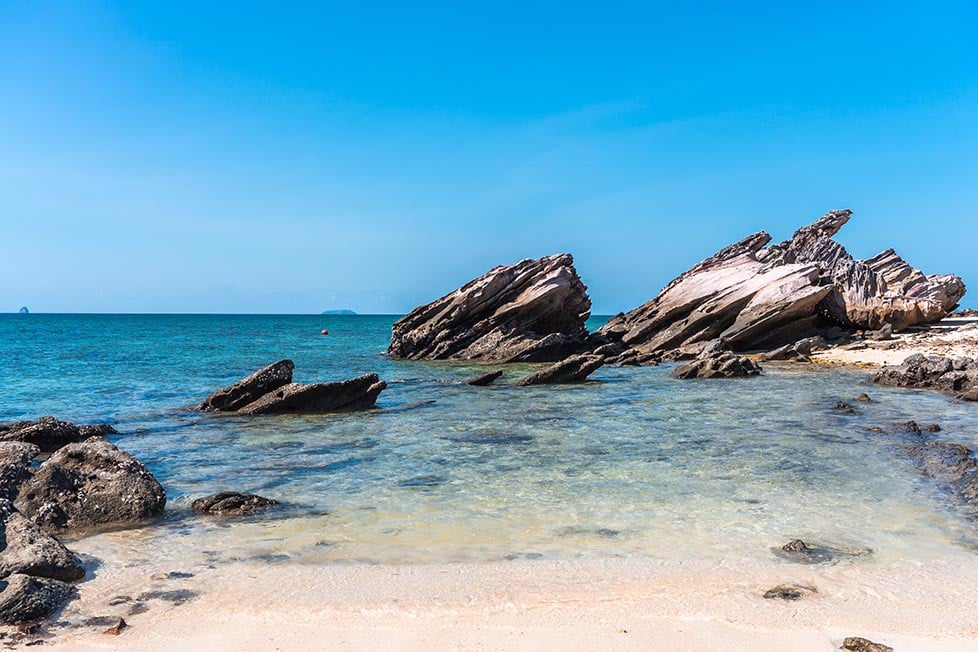
What to Pack for Southeast Asia
An adventure backpacking in Southeast Asia means navigating a certain level of chaos. If this is your first backpacking trip, or even if you’re a veteran, you gotta make sure you’re equipped for the job!
Make sure that packing list is spot on. For every adventure, there are a few things I never go travelling without:

Snoring dorm-mates can ruin your nights rest and seriously damage the hostel experience. This is why I always travel with a pack of decent ear plugs.

Hanging Laundry Bag
Trust us, this is an absolute game changer. Super compact, a hanging mesh laundry bag stops your dirty clothes from stinking, you don’t know how much you need one of these… so just get it, thank us later.

Sea To Summit Micro Towel
Hostel towels are scummy and take forever to dry. Microfibre towels dry quickly, are compact, lightweight, and can be used as a blanket or yoga mat if need be.

Monopoly Deal
Forget about Poker! Monopoly Deal is the single best travel card game that we have ever played. Works with 2-5 players and guarantees happy days.

Grayl Geopress Water Bottle
Always travel with a water bottle! They save you money and reduce your plastic footprint on our planet. The Grayl Geopress acts as a purifier AND temperature regulator. Boom!
Is Southeast Asia Safe? This is easily one of the most common questions I’m asked.
Every country on earth has a certain degree of crime and the associated shitty people. Southeast Asia is no different. Though violent attacks on backpackers are extremely rare, they can happen.
A common problem in Southeast Asian cities is the motorcycle bag snatch. Two dudes roll up on a motorbike and grab your purse or day bag and they ride off into the night (or day). I have heard reports of this gig being particularly rampant in the touristic areas of Phnom Penh.
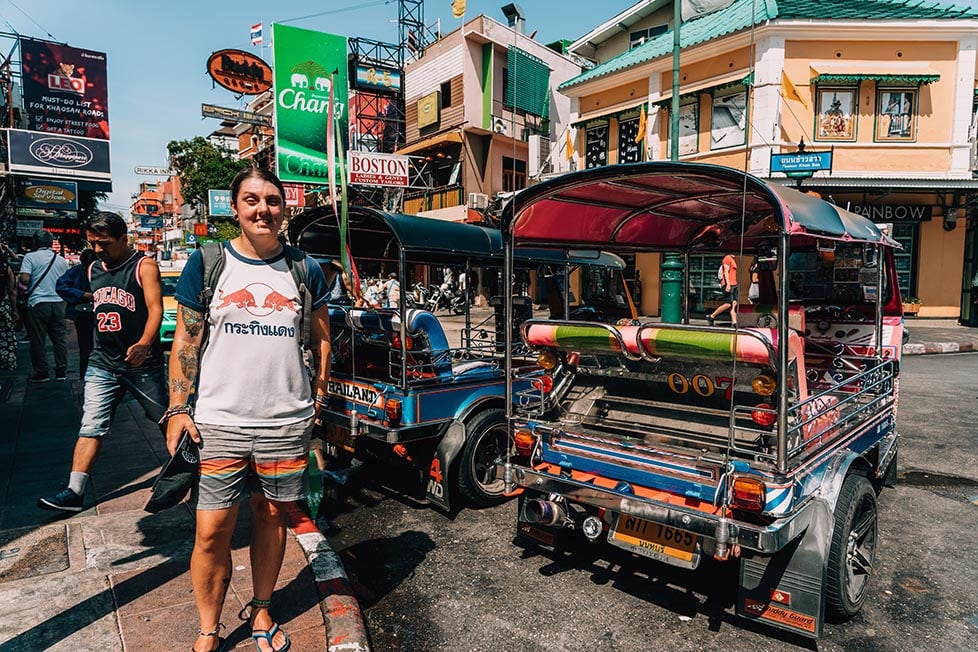
Keep an eye on your stuff, especially when you are in the big cities and crowded bus stations. Be smart hiding your valuables and money when travelling and things will be chill. In general, Southeast Asia is one of the safest places in the world to go backpacking, so fear not!
Wear a helmet when you hop on a motorbike in Asia . Despite being an experienced driver, I’ve had a total of 3 crashes in Southeast Asia over the last 10 years. On the one occasion, I wasn’t wearing a helmet, I split my head open and had to go to the hospital. Your mum doesn’t want to get the call about your insides being on the outside…
To stay safe, every backpacker should follow the common-sense rules of safe backpacking . In general, being out late, drunk, and alone is a recipe for trouble anywhere in the world.
If ever you run into the very rare hold-up situation, give them what they want and don’t resist. Your iPhone and wallet are never worth dying over, ever!
- Is Thailand Safe to Visit?
- Is Vietnam Safe to Visit?
- Is Cambodia Safe to Visit?
- Is Myanmar Safe to Visit?
- Is Indonesia Safe to Visit?
- Is Malaysia Safe to Visit?
Sex, Drugs, and Rock n’ Roll in Southeast Asia
There’s a reason that those seeking something a little hedonistic oftentimes get stuck in Southeast Asia… You can buy ketamine from certain pharmacies and the acid seems to be ubiquitous amongst travellers. Many Southeast Asian countries have very harsh drug penalty laws though, and even without harsh laws, there are some truly crippling fines dished out.
Drugs on the road is pretty much a guaranteed experience – and in Southeast Asia more so than ever. There are the magic mushroom shakes popular in Thailand and Cambodia; there are the strong and freely available prescription meds too.
Plus, doobies are a staple of almost every hostel. So, if you’re gonna do the good stuff, then stay hydrated and watch out for ya mates!
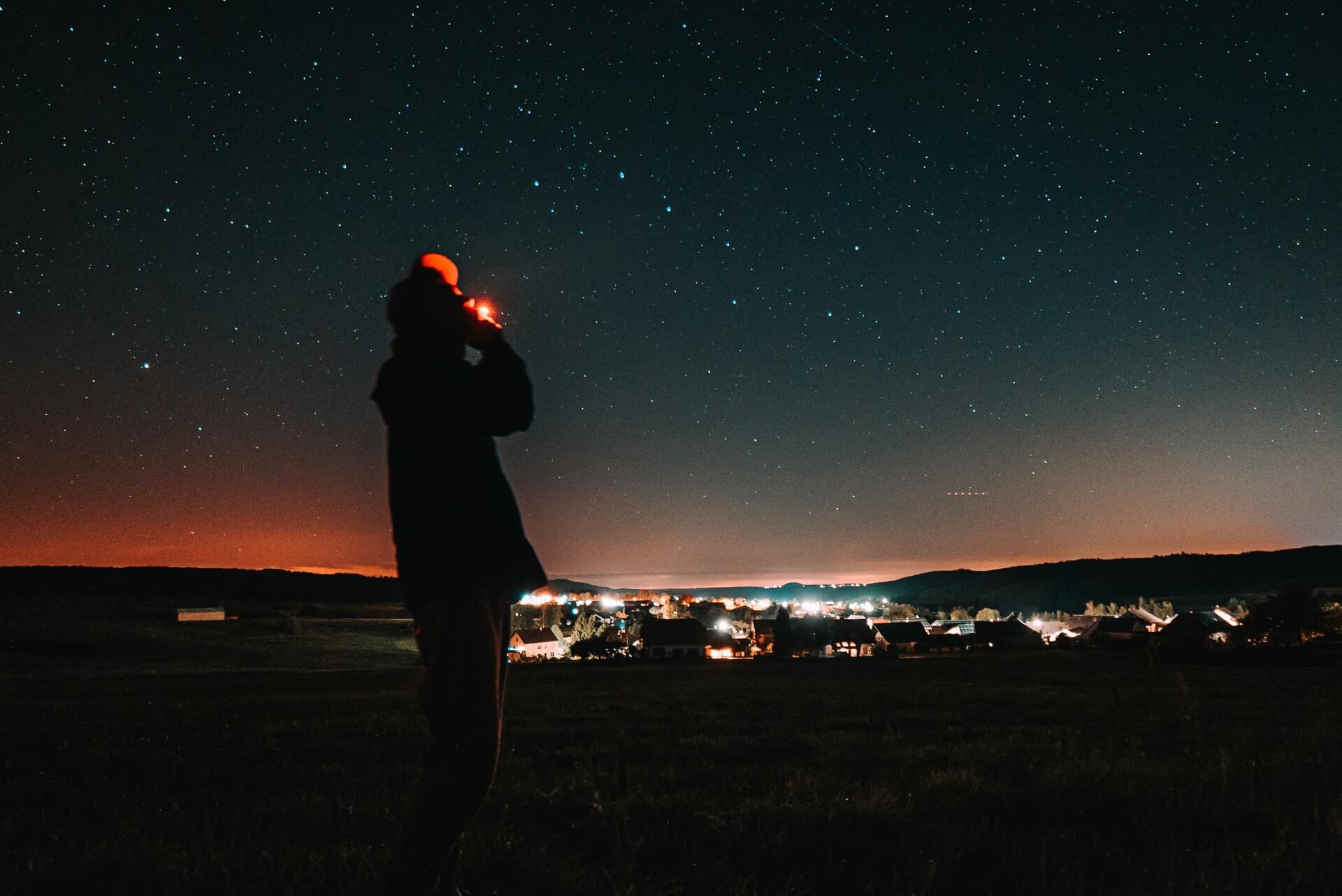
What seems to go hand in hand with travelling even more so than drugs? Why, love and sex of course! But we don’t like to have frank and honest discussions about sex on the road out of fear we’ll be too judgemental – or not judgmental enough.
At the end of the day, love and sex will on the road is inevitable so we might as well have a conversation about it.
Remember that free love is about love as much as it is about sex. And I’d be dancing around the elephant in the room if I didn’t talk about how easy it is to engage with sex tourism in Asia.
Regardless of your beliefs and thoughts on prostitution, remember this is another person with thoughts, feelings, and a life outside of the sex industry too. You are not superior to these people; you just happen to be from a more privileged background.
Go to Asia and have the time of your life, do the things you’ve dreamed of – but be respectful along the way. Travelling the world makes you an ambassador for your country , which is awesome. We can make a positive impact on people when we travel and get rid of any ugly stereotypes that may be associated with our countries…
Travel Insurance for Southeast Asia
ALWAYS sort out your backpacker insurance before your trip. There’s plenty to choose from in that department, but a good place to start is Safety Wing .
They offer month-to-month payments, no lock-in contracts, and require absolutely no itineraries: that’s the exact kind of insurance long-term travellers and digital nomads need.

SafetyWing is cheap, easy, and admin-free: just sign up lickety-split so you can get back to it!
Click the button below to learn more about SafetyWing’s setup or read our insider review for the full tasty scoop.
As I said before Bangkok and Kuala Lumpur are Southeast Asia’s two main international hubs. Most backpackers start their journeys visiting and staying in Kuala Lumpur or Bangkok for a spell. Budget flights throughout the region will almost certainly have you passing through one of those airports.
If you are looking to do the classic Southeast Asia Loop or the Banana Pancake Trail, then starting off by staying in Bangkok is the obvious choice. Flights into Vietnam through Hanoi and Ho Chi Minh City are getting increasingly less expensive as well, so keep an eye out if the prices keep falling.
Visas and Entry Requirements for Southeast Asian Countries
The biggest headache of travelling is getting a visa organised! The rules are subject to change at a moment’s notice and you never know what the land border will actually be like. All I can say is do your research, (politely) refuse to pay bribes that you don’t have to, and get organised in advance.
Luckily, most Southeast Asian countries have pretty straightforward visa requirements. Tourism is their bread and butter after all.
- Visa on arrival: Visa-free travel, 30 days for most countries.
- Extension: Yes, one-time, usually for 30 additional days, $60.
- Notes: Those arriving by land usually receive a 15-day visa-free waiver.
- Visa on arrival: Yes, but only for a small group of countries.
- Evisa: Yes, 30-day validity, $25, longer stays possible.
- Extension: Yes, but you’ll need to leave the country and reapply for the evisa.
- Notes: Evisas are not valid at many border crossings.
- Visa on arrival: Yes, 30 days for most countries, $37.
- Evisa: Yes, same price and length as visa-on-arrival.
- Extension: Yes, one-time, usually for 30 additional days, $48.
- Notes: If crossing from Laos or Thailand, visas will cost more if you pay in baht or kip.
- Visa on arrival: Yes, 30-day validity, $35.
- Evisa: Yes, 30-days, price varies
- Extension: Yes, $2/day, filed in Vientiane .
- Notes: The evisa is inconvenient, most travelers may opt for visa-on-arrivals.
- Visa on arrival: Yes, 90-day validity, no charge.
- Extension: Possible at embassy.
- Notes: Malaysia is very easy to enter but takes overstays very seriously.
- Visa on arrival: Yes, between 30-90 days, free.
- Extension: Possible to file online.
- Notes: Like Malaysia – easy to get in, just don’t overstay.
- Visa on arrival: Yes, 30-day validty for most nations, $35.
- Extension: Only available to those with visa-on-arrival or prearranged visa.
- Notes: Foerginers can enter Indonesia on a visa-waiver program for free but they will not be able to extend stay. Some ports of entry require prearranged visa.
- Visa on arrival: Visa-waiver (30-day validity) or visa-on-arrival (59-day validity) available.
- Extension: Possible for those with visa-on-arrival.
- Notes: You will need proof of an outbound flight to enter the Philippines.
The most popular and rewarding way of independent travel in Southeast Asia is to rent or buy a motorbike. It also helps if you can rent for longer periods of time. Most shops in Bali charge around $5 a day for a motorbike, but I was able to rent one for only $50 a month!
With a full tank of gas costing only around $1, you can cover a lot of ground without burning a hole in your wallet if you’ve got a long-term motorbike rental. Pair this with a proper motorcycle tent , and you’ll hardly ever spend a dime!
Common Types of Transport in Southeast Asia
You can easily buy a bike in Thailand or Vietnam (or anywhere really) and then pass it on to a local or fellow traveller when your time backpacking Southeast Asia is through. Don’t buy the first piece of shit bike you come across!
If possible, try to get the bike checked out by someone who knows bikes. It would be a shame to buy a bike just to have it break down the next day. Again, always wear a fucking helmet!
Taking local buses and trains (when possible) is the most economical way of getting around. Sometimes, this will mean rocking up at the bus or train station and sussing out a ticket, but it’s getting easier than ever to sort your journeys in advance.
Bookaway is an epic online booking platform where you can book bus, train, and ferry tickets in advance for a nominal fee – this is way better than rocking up at the bus or train station and hoping you can get a ticket – because sometimes you can’t.
One can find budget flights in Southeast Asia, but these flights and taking ferry boats to the islands add up. So pick and choose where you want to go and budget accordingly.
For short distances, tuk-tuks are your best bet just keep an eye on your shit and keep your wits about you when in a tuk-tuk . Luckily, Grab (similar to Uber) is now readily available in several countries in the region, including Thailand!
Grab is hands down the best way to get around cities, the price is locked in on the app so you can’t get ripped off, AND it will always work out cheaper than travelling by taxi or rickshaw.
Hitchhiking in Southeast Asia
Hitchhiking should not prove to be too difficult and in some countries, it is fairly easy to get picked up. You have to be persistent and make sure the locals understand where you need to go or you will end up getting dropped at a bus station.
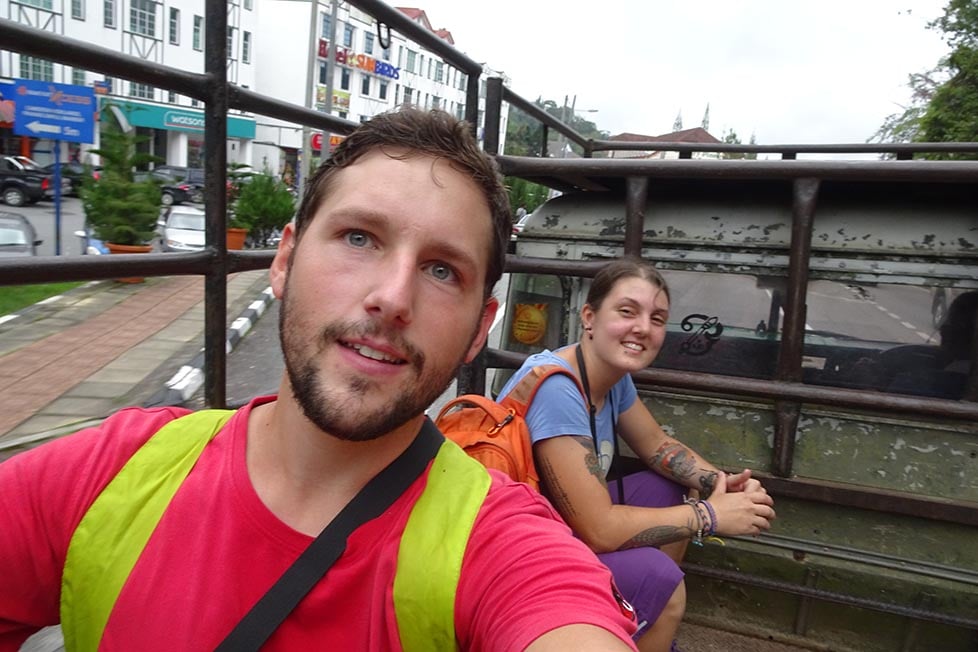
Some locals decide to turn their car into a taxi cab the minute they spot a foreigner on the highway. I would never assume that the ride is free initially. Always ask to avoid having an awkward scenario in which the driver who picked you up is demanding an unexpected fee.
Due to the large number of backpackers riding motorbikes across Southeast Asia, it is possible to score a ride with some fellow travellers. Generally, hitchhiking in Southeast Asia is safe, though you still have to be smart and use good judgment.
Onwards Travel from Southeast Asia
Whether you are heading home or carrying on travelling, budget international flights are your best bet. Bangkok or Kuala Lumpur is where you will find the lowest prices.
India and South Asia may beckon the vagabond to continue their travels. Or, Australia and New Zealand might get the backpacker to settle down in a sense and get a backpacking job .
Many backpackers pop over to Australia or New Zealand for 6 months to a year on a working holiday visa, make some cash, and come right back to Southeast Asia for their second round of backpacking escapades.
- Backpacking Australia
- Backpacking New Zealand
- Backpacking Fiji
- Backpacking Oceania
Working in Southeast Asia is certainly popular – though not especially lucrative. Scoring a gig as an ex-pat of some kind is always great, but most backpackers won’t fall into that category. Since work visas are sometimes difficult to get, a lot of the work ends up being done under the table.
That’s not to say it’s all dodgy run businesses, of course. There are a surprising amount of opportunities for backpackers to find work in Asia, but don’t expect to make a lot of money. You’re here for the lifestyle and experience, not the cash.
Popular jobs include dive instructor, English teacher, or some kind of hospitality. How easy it is to get a job will depend on the country. But a more popular way of making money while on the road in Asia is to work as a freelancer or digital nomad – this is where Asia truly shines.

A new country, a new contract, a new piece of plastic – booooring. Instead, buy an eSIM!
An eSIM works just like an app: you buy it, you download it, and BOOM! You’re connected the minute you land. It’s that easy.
Is your phone eSIM ready? Read about how e-Sims work or click below to see one of the top eSIM providers on the market and ditch the plastic .
The Digital Nomad Scene in Southeast Asia
Southeast Asia is THE most popular place for digital nomads to base themselves (based on recent digital nomad stats ). Places like Chiang Mai, Bangkok, and Bali are thriving nomad hubs that attract people from all over the world. Kuala Lumpur and many large Vietnamese cities are quickly following suit.
Southeast Asia is a paradise for remote workers for many reasons:
- The cost of living is very low.
- Internet is ubiquitous and reliable.
- Expat communities are strong.
- Local economies are booming.
- Visas relatively easy to organize.
- Conferences and events are frequently organized.
- There’s a lot to do in your free time.
If you’re a digital nomad or someone who wants to give the lifestyle a try, you can’t go wrong living in Southeast Asia.
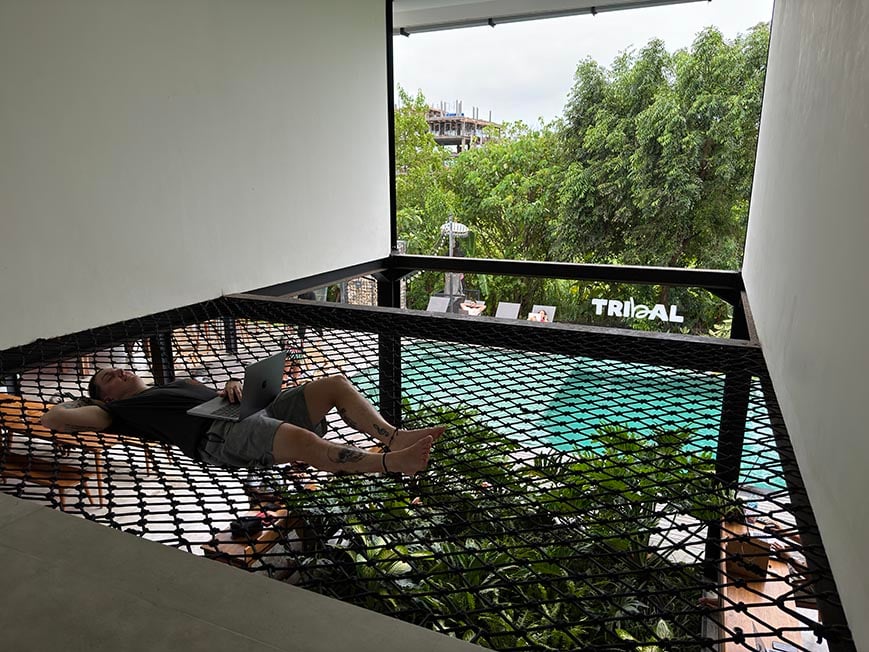
Teaching English in Southeast Asia
For another way of living or extending your trip to Southeast Asia, people have been teaching English abroad for a long time. Though you won’t always need one, having a TEFL certificate will increase your chances of scoring a gig.
We suggest using MyTEFL to get accredited. Broke Backpacker readers get a 50% discount on TEFL courses with MyTEFL (simply enter the code PACK50 ).

I think that working as an English teacher does give you a deeper appreciation of the country that you’re travelling in. You spend time fostering connections to a place and you are, ultimately, teaching people a skill that will carry them far in life.
Volunteering in Southeast Asia
Volunteering abroad is an amazing way to experience a culture whilst helping your host community. There are plenty of different volunteer projects in Southeast Asia including teaching, construction, agriculture, and pretty much anything.
There are so many different volunteer opportunities in Southeast Asia to suit any skill set. You could support communities doing social work in Vietnam, help out on farms in Thailand, teach English in Cambodia, or volunteer in a hostel in Laos.
Other opportunities include bartending, doing community work, and web development. Short-term volunteers should apply for a tourist visa before arriving, but you’ll need the appropriate permits to stay longer depending on what country you’re in.
Volunteer programs run through reputable work exchange programs like Worldpackers are great places to start looking for volunteer work – but it doesn’t cover you for everything . Always tread with extra caution, especially if you’re working with kids or animals.
Ask the average Joe what they know about the history of Southeast Asia and most will be able to think as far back as the Vietnam War, maybe the Japanese occupation of Thailand. Beyond that, Southeast Asia is kind of a mystery.
But the history of Southeast Asia is long, complex, varied, and extremely fascinating. Before the Europeans arrived – the French in Vietnam, English in Burma, and Dutch in Indonesia – there were great kingdoms: the Toungoo, Khmer, and Malaca Sultanate, to name a few. Through these channels, Buddhism, Islam, trade, and science all flowed.
It is quite difficult to talk about “Southeast Asian Culture” because it would be a generalization; there are just so many different aspects.
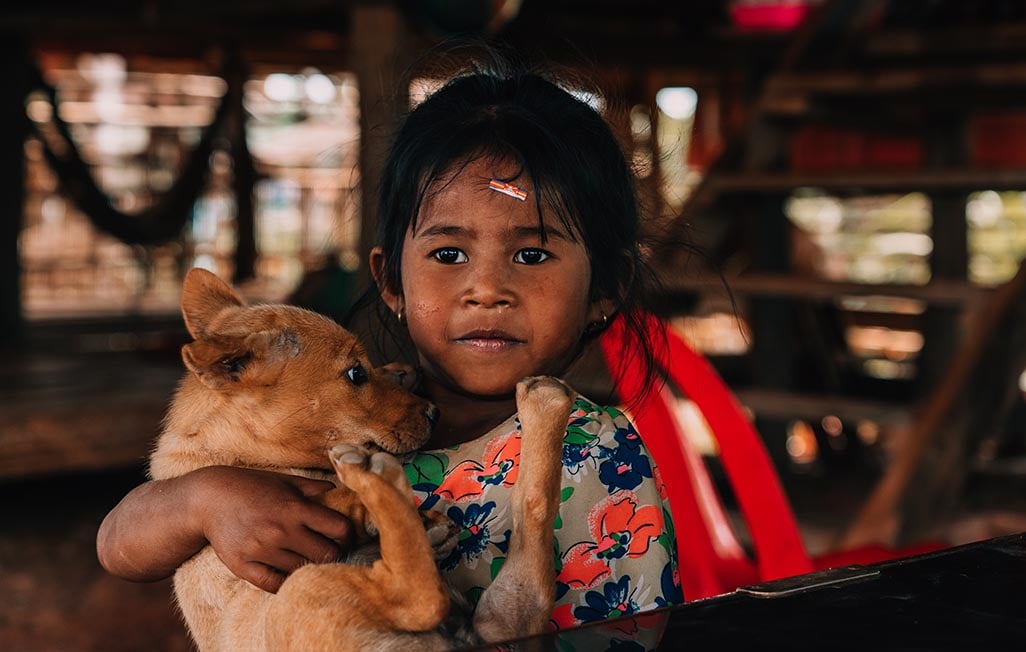
What travellers SHOULD know about Southeast Asia is that it is, in fact, way deeper than it seems. Thanks to a long history of colonization that dates back before the Europeans – Indians, Arabs, and the East Asians all settled in SE Asia – the region is enormously diverse. Food, religion, politics, customs, all of the things that SE Asia does so well, come in part from external sources.
Of course, the colours of people’s personalities also change from country to country. Thais are legendarily nice (and open to just about anything). Malaysians are incredibly diverse ethnically and thus incredibly tolerable. Cambodians are the most laidback people in Southeast Asia by far. All of these traits become more obvious as you spend time in each country.
Don’t stay on the established Southeast Asian backpacking route if you want to get to know the locals. Koh San Road, Hanoi’s Beer Street, Kuta, and all the other tourist hotspots are poor representations of the culture.
The real Southeast Asia is found at the plastic tables on the street, inside the bike repair shops, and in the dusty corners of the region.
There are people who go backpacking in Southeast Asia just for the food. And for good reason, too: it’s fantastic! More than just delicious, it’s also cheap and hugely varied depending on where you are.
You can definitely expect a lot of rice, noodles, and curry in Southeast Asia. Luckily though, no two of these are ever the same. For example, noodles in Vietnam are traditionally served in broth ( pho being the most famous). Thailand, on the other hand, usually prefers dry noodles.
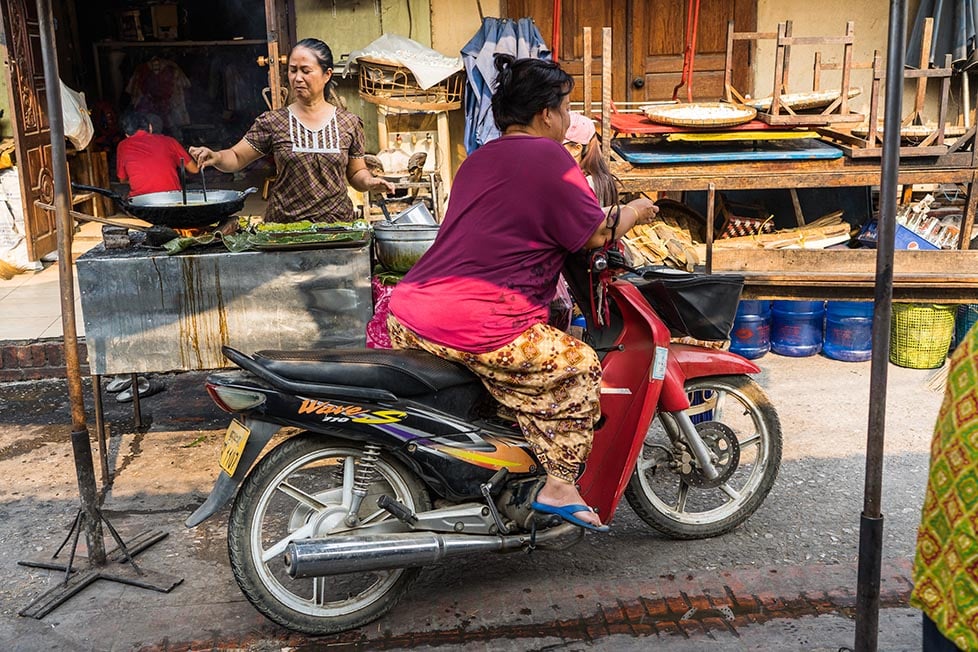
This is just the tip of the gastronomic iceberg that is food in Southeast Asia. And honestly, it’s really difficult to lump everything into one category. I will simply say that countries like Malaysia, Singapore, and Thailand consistently rank among the most delicious in the world, every year.
Because of its tropical climate, the fruit in Southeast Asia is also ridiculously good. Borneo is practically the Garden of Eden where just about everything grows, and the local markets in all the major cities have incredible selections to choose from. Be prepared to eat lots of fruit on your backpacking trip, especially bananas when served with pancakes.
I definitely recommend eating at the local markets and street food stalls. The prices are super low and the food is just as good as anything you’d find in a restaurant. Just keep on an eye out for sanitation – make sure the food is fresh and things look clean (enough).
Food to Try in Southeast Asia
There are some dishes you simply HAVE to try when you go to Southeast Asia:
- Banh Mi Thit (Vietnam) – The best sandwich in Asia.
- Pho (Vietnam) – Noodles served in broth w/ extras.
- Pad Thai (Thailand) – Dry noodles w/ peanut sauce and chilis.
- Tom Yung Goong (Thailand) – Soup made with lemongrass, herbs, and shrimp.
- Satay (Malaysia, Indonesia) – Grilled meat skewers.
- Fish Amok (Cambodia) – Spicy fish coconut curry served in a banana leaf
- Burmese Curry (Myanmar) – Local take on the dish that is famously good.
- Shan-style noodles (Myanmar) – Thin-sliced, flat noodles.
- Nasi Goreng (Indonesia) – Fried rice.
- Chili crab (Singapore) – Singapore’s claim to fame.
- Larb/Laap (Laos, Cambodia) – Beef salad with lots of seasoning.
- Tam Mak Houng (Laos) – Spicy green papaya salad.
Southeast Asia is a fantastic budget destination that is great for your everyday travels, but it’s also amazing because it allows you to splurge on some truly unique experiences.
You can go surfing, sky diving, bungee jumping, or any number of exciting things! But there are two big-ticket items that grabbed my heart more than any other: trekking and SCUBA diving .

Things go wrong on the road ALL THE TIME. Be prepared for what life throws at you.
Buy an AMK Travel Medical Kit before you head out on your next adventure – don’t be daft!
Trekking in Southeast Asia
Each country in Southeast Asia offers up trekking experiences that will stay with you for the rest of your life. Whether you prefer guided or independent trekking, there is ample hiking on hand for every backpacker to enjoy. Pack yourself the right adventure gear , and go do something crazy!
- Taman Negara, Malaysia : Explore the oldest rainforest in the world and spend the night in a bungalow in the jungle (for free).
- Kibungan Circuit, The Philippines: A 3-mountain circuit in the town of Kibungan in Benguet . The circuit, which takes anywhere from 2 to 3 days to complete, spans across the mountains of Tagpaya , Oten , and Tagpew .
- Shan State, Myanmar : Shan state is a popular place to go trekking and there are some great hikes around Kachin state as well. You will likely encounter no other travelers whilst trekking here.
- Phongsali, Laos : If you want to get off-the-grid and go trekking in Laos, I recommend making the long journey to the northern town of Phongsali . Though tough to reach, it’s equally rewarding for trekkers. While there isn’t much to do in the actual town, there are plenty of opportunities to visit remote hill tribes through the Provincial Tourism Office.
- Ring of Fire, Indonesia: While the beautiful beaches in Indonesia may be the major draw for tourists, there are also plenty of opportunities for adventures on land. Located in the Ring of Fire, Indonesia is home to well over 100 volcanoes. Trekking to the summit of some of these volcanoes is one experience you won’t want to miss when backpacking Indonesia. In addition to the aforementioned Mt. Bromo and Mt. Rinjani , you can also scale Mt. Agung on Bali or Mt. Egon on Flores .
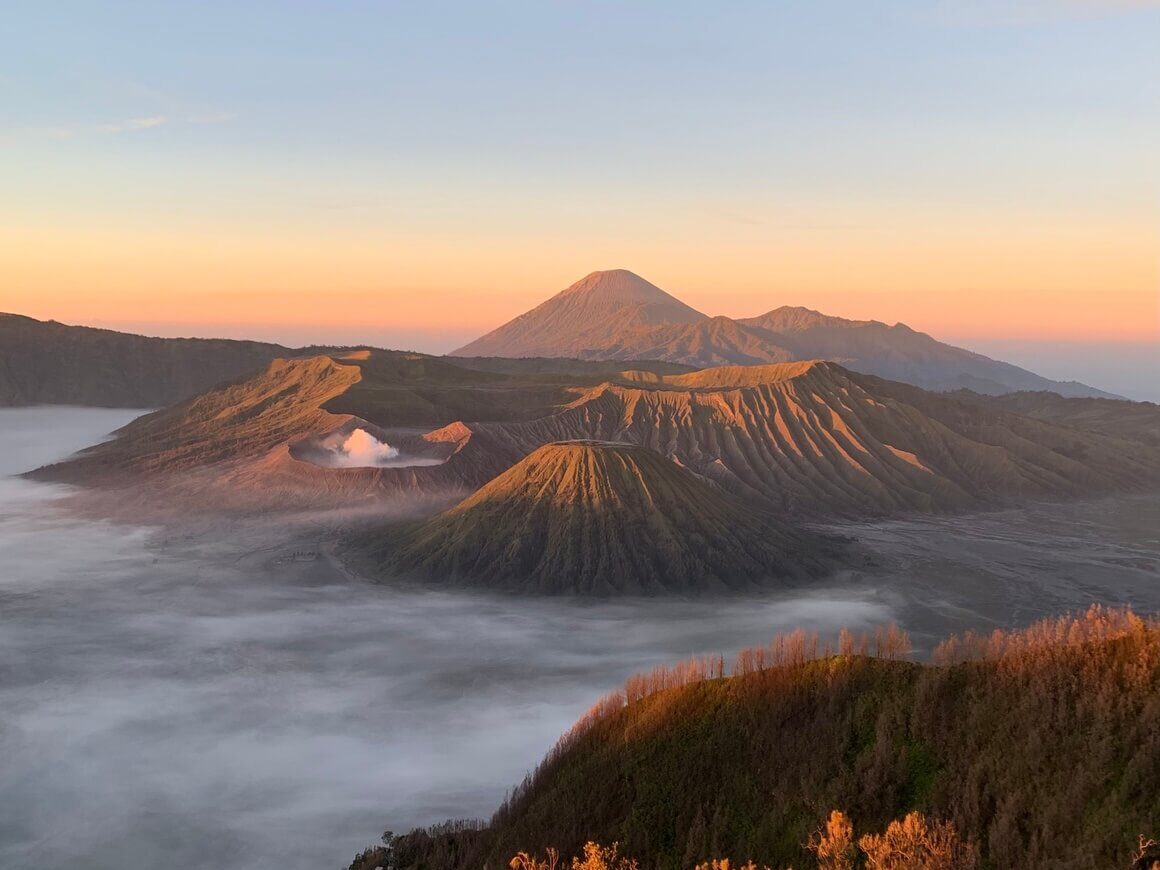
Scuba Diving in Southeast Asia
If you have been paying attention, you should be aware now that Southeast Asia is fucking paradise when it comes to scuba diving. Without a doubt, Southeast Asia is the cheapest place in the world to become a certified diver. That fact coupled with some of the best dive sites in the world make scuba diving a no-brainer whilst you are backpacking Southeast Asia.
If you want to go diving in Thailand, go for it! Though I must reinforce how great diving is in Malaysia and Indonesia. The reef systems are in better shape and you won’t have to contend with quite so many tourists. Bali has loads of diving sites , and that’s just the start of the underwater sightseeing.
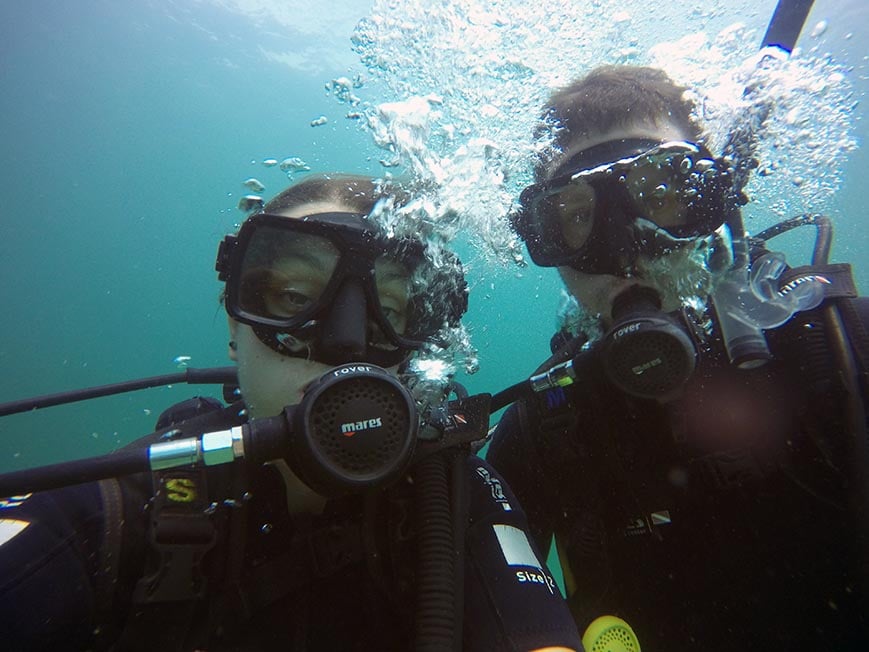
And if you aren’t up to learning to SCUBA, then you can always learn to freedive or snorkel. There is truly a whole other world waiting to be discovered once you leave the surface!
You’ve got questions about Southeast Asia and we’ve got answers!
Is backpacking in Southeast Asia safe?
Yes. Violent crime against tourists is very low in this part of the world – and even petty theft isn’t that common. That being said, you should still watch out for your valuables in very touristy areas. The thing to watch out for here is food/water bugs that can really knock your health back.
Where can I backpack in Southeast Asia?
Currently, all countries in Southeast Asia are open for backpackers, though Myanmar is still (sadly) risky to visit.
How long do you need to backpack Southeast Asia?
A backpacker could get a good idea of the region by spending 3 – 6 months there. Really, you could spend a lifetime exploring Southeast Asia and still have oodles left to explore. But this is enough time to explore a heap of places without feeling too rushed.
How much does it cost to backpack Southeast Asia for 6 months?
Southeast Asia is a blessing to broke backpackers. You can live comfortably here on $10 a day and splurge every so often on unique experiences. Including flights, insurance, and wiggle room within your budget, 6 months in Southeast Asia should cost between $5000 – $10 000.
What’s the best country to backpack in Southeast Asia?
This is a contentious question! My personal favourite is Vietnam simply because their food is my favourite. Aside from that, it’s cheap, full of epic motorbike adventures, and deadly rice wine!
Be good to Southeast Asia. It’s an incredible region that truly does have a little bit of something for everyone – all while being super cheap. We risk ruining a place when we don’t appreciate how special it is, and Asia is pretty freaking special.
Whether you stop by just one of its countries for a short SCUBA diving trip, or whether you get lost on the banana pancake trail for a year or so, you know you’re in for a good time. There are rice paddies, ancient temples, piles of spicy noodles, and some of the friendliest faces in the world waiting for you here.
Now, I hope I’ve been a source of inspiration in this guide but I also hope you’re ready to forge your own path through this great region. Because there are so many offbeat adventures and epic trekking to be done – you don’t need to get lost in the endless supply of cheap beer.
So off you go, you broke backpacker! I hope to see you deep in the Malaysian jungle or ordering your fifth banh mi of the week in Vietnam. Whatever you choose to do in Southeast Asia, it’s sure to be an adventure.
- Backpacking Australia’s East Coast
- How to Find Cheap Flights
- Best Party Cities in the World
- Backpacking Central America
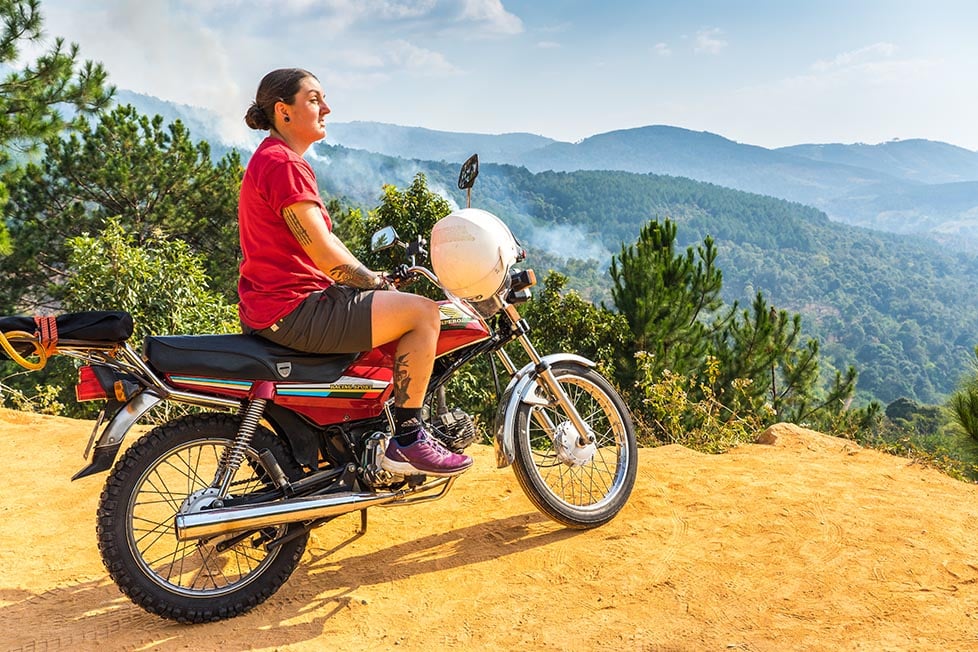
Updated February 2023

And for transparency’s sake, please know that some of the links in our content are affiliate links . That means that if you book your accommodation, buy your gear, or sort your insurance through our link, we earn a small commission (at no extra cost to you). That said, we only link to the gear we trust and never recommend services we don’t believe are up to scratch. Again, thank you!
Will Hatton
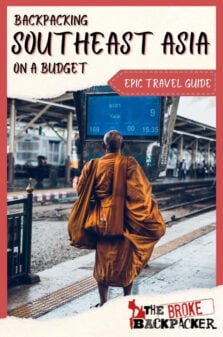
Share or save this post

40 Comments
Hi! Me and a friend of mine are planning on backpacking in Asia from start of April to beginning of July. The only problem is, we are scared it is going to be too hot and humid. We are both from norway and not really used to super high temeratures, so my question is basically: what route can we take, without dying from the extreme heat? It does not have to be in the southeast of asia, but more asia in general. Love your website btw. Love from 20 year old adventurers and coldblooded girl.
Head to the islands, riversides and coastlines. If you are really struggling, follow the lead of locals and do things early morning and late evening to avoid the hottest part of the day. Dress appropriately in layers that you easily remove. Keeping properly hydrated will also help you acclimatise .
Hi there, anyone who has read this brilliant article should definitely try out south east Asia, there are so many amazing experiences on offer. Me and my partner took six months off work a few years back and decided to go travelling around southeast Asia. We visited Vietnam first, then Laos then we discovered our new home – Thailand which is where we spent most of our time as we fell in love with the people, the culture and just the country in whole. We loved it so much that we decided to take the leap and move to the island of Koh Samui. We hope to one day be as travelled as the owners of this amazing blog. 10 out of 10 read!
This was amazing…leaving in 3 days for a year to SE Asia and this post nearly brought me to tears of joy with the emotions it generated. So excited about what is to come!
Superb blog
Will, thank You for the effort and time You invested in writing this informative and useful article about backpacking around southeast Asia. Also, I really appreciate the fact that through this article You inspire other people to travel on a budget, which is something that I also encourage 🙂 Keep up the great work!
Hi Will, thanks for the info! Two questions: Can one easily get through customs when you enter a country and stay for thirty days without having a return ticket back to the US and not knowing what country you will visit next? I bought a one way ticket from San Francisco to Singapore and going to make up my trip as I go over 6 months. 2nd question: Is it safe to leave your MacBook or other valuables in a hostel while you are at the beach? How do you protect your belongings when you want to go swimming and your stuff is on the beach. Thank you for your answers!
Hi Jamie, great to hear from you!
Regarding return tickets and immigration, every country and airline has a different policy on return and onward tickets. Yes, even your airline can refuse to fly you if they feel it’s a risk immigration at the other end may not allow you entry based on a one way ticket. Your best bet is to research throughly on forums and travel sites to see the experiences of others. There are some destinations that are well known for NOT allowing entry without an onward ticket, such as The Philippines. Other destinations may allow you entry with none, some may allow you to say you are leaving overland on an approximate date. It’s a calculated risk, onward ticket companies, expensive full refundable tickets and cheap throw away tickets are also options if you find yourself if a pinch.
Unfortunately its a fact of long term travel, eventually you will probably have stuff stolen, lost or broken, no matter how careful or diligent you are. Following are my golden rules for reducing the bad feels of such an experience as much as possible.
1. Back up your shit, regularly! Ultimately the data inside the device will prove far more valuable to you than the device itself. 2. Lock up your shit, don’t leave your stuff unattended in dorms or on the beach, keep your valuables on you if possible when travelling and lock things away while in accommodation. 3. If you have a bad vibe about a place or person, follow your feeling and use your common sense. 4. If you have expensive gear, insure it correctly, make sure you know where the receipts are before your trip. 5. If something happens, get a police report. 6. Don’t take anything travelling with you that you aren’t willing to have lost, stolen or trashed. Leave it at home. 7. When it’s gone, it’s gone. Theft can happen anywhere, don’t spend too long dwelling on the event or let it be a singularly defining experience of a destination.
Have a great trip!
Great blog, really good and usefull info in it. Thanks a lot.
I would so recommend getting vaccinations in the country once you arrive – we got them at medconsult clinic ( a british doctor based in Bangkok), saved a fortune compared to the UK for the exact same vaccine – got typhoid, japanese encephalitis and a hep b booster done.
Excellent information! Thanks for sharing.
I am really appreciative of this blog post. My boyfriend and I had been dreaming of backpacking SE Asia on a shoestring budget for some time now. He is Norwegian, and I am from the USA, but have been living with him in Oslo for the last three months. My visa extension was just denied, and he cannot get a visa for the US until January, so, we decided to push up our dreams and go backpacking and not be split up! We are starting in Bali, May 16th and I had NO idea where to go after that. I want to be adventurous and go where the wind blows, but also have some sort of a plan as we are on the smallest of budgets and HAVE to figure out how to make some money online, or find volunteer locations to house us. Anyway, this has helped me so much, as we are planning a 6 month trip right now, and are leaving in less than a month!
Thanks for dropping by! We hope that your backpacking trip in SE Asia is amazing!
What a long list of South East Asian countries to visit. The photos you used here just enticed me to add some of these places that I haven’t visited in my bucket list! I can’t wait!
Such amazing post!!
Thanks man!
Great post! I cannot wait to visit Asia next summer, my friend and I are looking for volunteering opportunities in Asia, we would like to know if it is possible and easy to find as we tavel around. We will really appreciate any kind of information about that.
If you’d like to find work as you travel through Southeast Asia, then try asking around English schools. Otherwise, Worldpackers is an excellent way to find work exchanges as well.
Thanks for the informative travel guide! My girlfriend and I are planning a trip to Thailand in June and were looking for something like this! We are planning on staying in Southeast Asia for a while, so we have plenty of time to do everything there is to do.
This may be the best travel article I have ever read and I have read a lot! Massive amount of useful information and I love that you added in the message about being respectful as a backpacker. I was actually warned in Japan by a young Belgian girl working at a hostel that drunk backpackers had a negative impact on her trip thru Vietnam. I’m on an 8 month trip thru Asia but do to some rookie mistakes will only have 3 weeks to get from Ha Tien, Vietnam to Singapore. Super disappointed not to have more time to explore Cambodia, Thailand and Malaysia but your article gave me hope that I will at least see some amazing things along the mad dash. Thank you for all the time and effort!
Really glad you found this guide helpful and informative. Enjoy the rest of your trip!
I saw your Myanmar political situation post was made in February, do you know if there has been any change in government?
Just a little correction Will. Its “Lake Toba” not “Lake Tabo”. It`s in the 2nd paragraph below the Penang street art image. Anyway, if you guys planning on visiting West Sumatera, Sipora Island or Nias Island hit me up for some local tips.
Thanks for the correction, cheers!
Love his advice, thank you! Would you say it’s cheaper and better to do backpacking alone on a whim with rough idea of things to do rather than paying for a set tour prior to arriving? Some set tours are like 2500 excluding flights and I’m just wondering if it would be cheaper to get to Thailand, get a bike and then do any internal train bus journeys whenever I want.
Personally, I think paying for a tour in an ‘easy’ country like Thailand is a waste of money. Go with the flow, it’s probably the easiest region in the world to explore 🙂
Hi, Dig the site. Thanks for setting it up. My name is John. I’m from Texas. I’m currently in The Philippines. Looking for the best deal on a round trip ticket, from Manila to Cambodia, and back again . Any helpful hints?
Not a flight hacker or travel agent brother 😉
Wow @ Will – super extensive write up! Some of our friends just asked us for recommendations how to travel SE Asia. We send them your post together with our own experiences (which were much less exhaustive). 🙂
I see you mentioned that the hammock tent has been quite useful, though regards to safety, sleeping out in the open with your belongings. What exactly do you do with your pack and such? Also as a solo female traveler, would you still recommend this mode of accommodation?
Hammocking, and hammock tents, are an awesome way to sleep out as they don’t weigh as much as a traditional tent… However, I would not encourage sleeping out in a hammock EVERYWHERE – You need to pick your spot wisely, make sure it’s cool to camp there etc. I keep all my valuables in a daypack which acts as my pillow. My main pack I put under the hammock.
Truly an amazing post filled with so much information and more. Me and my boyfriend are planning to travel south east Asia for 7 weeks at the end of the year. You have given me so much information for us to digest and use. Thank you so much!
You are very welcome! Happy to be of service 🙂 Have an awesome time traveling in Southeast Asia!
Dude this was an epic write up and has gotten my partner and myself super excited to head off on our 6 month journey to South East Asia in October. Looks like Malaysia has now made the cut, and we are looking into adding The Philippines back on the agenda after getting some pretty mixed reviews. Wise words and sound advice, thanks again!
You are welcome! I’m glad you find it useful 😀
Great post!
I just came back from Thailand, Indonesia and Philippines, and I am 100% going back. Beautiful countries and each with their own unique cultures as well. I went for 40 days! Here’s a video of my travels:
https://www.youtube.com/watch?v=osXq2N6e5aA&t=4s
I hope it inspires everyone to travel to these same places I did! 🙂
What a RAD article…thank you 🙂 I am about to embark on my first backpacking adventure around SEA and this was really helpful!
Great Post! Could get some very good information for my own worldtravel. Which country is your favorite one?
Myanmar and Thailand are my favourites…
As a seasoned spearfisher, I really need to put Asia on my agenda. I actually have a trip planned for the end of this year for Thailand and will definitely look into some fishing whilst I am there. I am only afraid of one thing. That I won’t want to return home!
Leave a Reply Cancel reply
Your email address will not be published. Required fields are marked *
Save my name, email, and website in this browser for the next time I comment.
Notify me of followup comments via e-mail.

- 2 Weeks for Couple
- 2 Weeks for Family
- Thailand Lantern Festival
- Indonesia(Bali)
- South Korea
- China (HK, Taiwan)
- Itinerary Ideas
- Asia Highlights Travel Reviews
- Thailand Travel Reviews
- Vietnam Travel Reviews
- Cambodia Travel Reviews
- Japan Travel Reviews
- Myanmar Travel Reviews
- China Travel Reviews

4 Weeks in Southeast Asia: Itinerary & Planning Tips 2024
With more than a dozen countries in Southeast Asia, 4 weeks/1 month can satisfy your ambitions to travel to many places. Check out recommended plans for your 4 weeks/1 month in Southeast Asia and expert advice.
- Which Southeast Asia Countries to See in 4 Weeks
Week 1: Myanmar
Week 2: vietnam, week 3: laos and cambodia, week 4: thailand, how much is a 4-week trip to southeast asia, guided or independent tours, which countries to visit in southeast asia in 4 weeks.
The most popular destinations in Southeast Asia are Thailand, Vietnam, Cambodia, Myanmar, Laos, Bali (Indonesia), and Singapore. For a 4-week trip to Southeast Asia, we recommend you visit 4-5 countries .
A highly recommended combo for a 4-week tour in Southeast Asia is Thailand, Vietnam, Cambodia, Laos, and Myanmar . This combination offers a rich tapestry of experiences, ranging from pristine beaches and ancient temples to a vibrant religious vibe, exotic culinary delights, encounters with elephants, and the lush wonders of the rainforest.
If you prefer a more relaxed pace , consider focusing on three or four of these nations. You might choose to omit Laos or Myanmar from your itinerary for a more leisurely experience while still enjoying the diverse offerings of the region.
Free feel to tell us your preferences and requirements. We will make a trip based on your ideas. If you don't have some ideas now, you can check our Best Southeast Asia Tour Packages for inspiration.
Discover real reviews of Highlights Travel Family 's best-rated service across trusted platforms.
A Classic 4-Week Southeast Asia Itinerary to Thailand, Vietnam, Cambodia, Laos, and Myanmar
Considering the overall tour experience and transport connections, usually our route goes Myanmar–Vietnam–Laos–Cambodia–Thailand.
Myanmar and Vietnam, rich in attractions and activities, are good to place at the start of the trip. Laos and Cambodia, centering around temple visiting, are suitable for the middle part, and finally end at Thailand's beaches.
Days 1-2: Mandalay Days 3-4: Began Days 5-6: Inle Lake Days 7-8: Yangon
Days 1-2: Mandalay
Embark on a captivating tour of Mandalay's highlights, including the magnificent Kuthodaw Pagoda, home to the world's largest book. Explore the remnants of Bargaya Monastery in the former royal capital of Inwa. As the sun sets, witness the breathtaking sunset over the iconic U Bein Bridge , a symbolic landmark of Mandalay.
Days 3-4: Bagan
Immerse yourself in local life with a cooking class supported by JICA . Wander Nyuang U Market, absorbing vibrant flavors. Explore the awe-inspiring Shwezigon Pagoda and delve into Bagan's history at the Archaeological Zone. Visit iconic sites like Ananda Temple, Shwesandaw Pagoda, and Htilominlo Pahto. As dusk falls, be captivated by the sunset over the pagoda complex, a moment of tranquil beauty.
Days 5-6: Inle Lake
Discover the serene beauty of Inle Lake, where leg-rowing fishermen showcase their unique skills . Enjoy the tranquility and explore the local way of life.
Days 7-8: Yangon
Explore Myanmar's history at the National Museum and witness the stunning sunset from Shwedagon Pagoda. Visit the heart of the city at Sule Paya and contribute to the community at Thadama Myintzu Nunnery. Experience local life aboard a train and conclude your day with a stroll through Bogyoke Aung San Market, offering an array of souvenirs and crafts.
Days 9-10: Ho Chi Minh City Days 11-12: Hoi An Days 13-14: Hanoi Days 15-16: Halong Bay
Days 9-10: Ho Chi Minh City
Feel the bustling energy of Ho Chi Minh City, exploring the War Remnants Museum, Notre-Dame Cathedral Basilica of Saigon, and the historic Cu Chi Tunnels . Dive into local cuisine with a street food tour.
Days 11-12: Hoi An
Explore Hoi An's waterways on a traditional round basket boa t. Visit the ancient town, a UNESCO World Heritage site, with its charming architecture, lantern-lit streets, and enjoy a cooking class.
Days 13-14: Hanoi
Uncover the cultural gems of Hanoi, including the Ho Chi Minh Mausoleum, Temple of Literature, and the vibrant Old Quarter.
Days 15-16: Halong Bay
Cruise through this UNESCO World Heritage site, surrounded by stunning limestone karsts, and partake in a kayaking adventure. Marvel at the ethereal beauty of the bay's unique landscapes.
Days 17-19: Luang Prabang Days 20-21: Siem Reap
Days 17-19: Luang Prabang
Interact with elephants at Elephant Village and explore their world. Visit the hospital, museum, and dung paper-making facility. Trek the Trail of Falls. Witness the morning alms-giving ritual and explore Luang Prabang's cultural gems.
In the afternoon, relax at Kuang Si Waterfall. Luang Prabang offers a blend of nature and cultural charm.
Days 20-21: Siem Reap
Explore Angkor's exquisite temples, including iconic landmarks like Angkor Wat , Bayon, Ta Prohm, and Banteay Srei. Delve into Cambodia's history at the Landmine Museum. Discover remote temples like Beng Mealea and Preah Khan, adding layers to the Angkor experience.
Days 22-24: Bangkok Days 25-27: Phuket Day 28: Departure
Days 22-24: Bangkok
Embark on the final leg of your journey in Bangkok. Explore the Grand Palace, Wat Pho, and Wat Arun. Experience the vibrant street life at Khao San Road and indulge in local street food.
Days 25-27: Phuket
Relax in the tropical paradise of Phuket, visiting Patong Beach, Phi Phi Islands, and Big Buddha. Enjoy water activities, explore Old Phuket Town, and savor Thai cuisine.
Day 28: Departure
As your 28-day odyssey concludes, depart with a treasure trove of memories, having explored the best of Southeast Asia's history, culture, and natural beauty.
Southeast Asia offers good value for money. For the price of a mediocre restaurant in Western countries, you can enjoy a superb meal at a Michelin-starred establishment in Southeast Asia.
- If you have a lower budget, you will need around 180–200 USD /day per person (including airfare within Southeast Asia, 3-star hotels, lunch, attractions, guide, and transfers). 4 weeks is about 5500–6000 USD.
- For a medium budget, it will cost around 200–250 USD per day per person (including airfare within Southeast Asia, 4-star hotels, lunch, attractions, guide, and transfers). Thus, it may cost about 6,000–7,500 USD for 4 weeks.
- For a higher budget, US$250–350 per day per person is needed (including airfare within Southeast Asia, 5-star hotels, lunch, attractions, guide, and transfers). The cost for 4 weeks is around 7,500-10,000 USD.
>>> Planning a Trip to Southeast Asia: A Beginner's Guide
Although Southeast Asia is a paradise for backpacking, it has its drawbacks. With an independent tour , you must handle all things by yourself : booking the transport and hotels, making detailed itineraries… But, you may be unfamiliar with these countries and will probably face unexpected events, especially if yours is a multi-country trip.
With a guided tour , all you need to do is concentrate on fully enjoying your holiday. With a well-planned itinerary created by an expert travel consultant, you can make the most of your vacation without unnecessary stress or missing out on the best of every city.
With private transport, you can reduce your time on the road, and spend more at the highlights. With a local guide, you can learn more of the culture's secrets and stories behind the attractions. He/she can help you travel safely and solve any problems — expected or unexpected.
Thus, a guided tour is recommended if you don't have much time to sit and plan. Contact us to create a worry-free tour .
Contacting Us for a Booking/Inquiry
You are warmly welcome to have us customize your trip based on your group size, interests, budget, and other needs. For a personalized tour and quote, sit back and use our Create My Trip service.
Or start from a recommended fully-modifiable itinerary:
- 28-Day Grand Indochina Tour
- 19-Day Highlights of Thailand, Cambodia, and Vietnam
- 21-Day Thailand and Vietnam Adventure Tour
- 3-Week Best of Thailand, Cambodia, and Vietnam Tour for Couples
- More Southeast Asia Tours
Why Asia Highlights (10,000+ reviews & 98.8% 5-star rating)
- Save Your Time:
- Less research, more enjoyment!
- Real-time 1V1 expert planning
- Maximize Your Flexibility:
- Personal local guide and ride
- Explore at your own pace
- Celebrate Your Journeys:
- Specially-crafted family adventures
- Celebrate milestones with style!
Get Inspired with Some Popular Itineraries
At Asia Highlights, we create your kind of journey — your dates, your destinations, at your pace. You can have any trip tailor made for your travel.
More Travel Ideas and Inspiration
Sign up to our newsletter.
Be the first to receive exciting updates, exclusive promotions, and valuable travel tips from our team of experts.
Why Asia Highlights
Where can we take you today.
- Middle East
- African Safari
- Travel Agents
- Loyalty Program
- Our Differences
- Privacy Policy
Address: Building 6, Chuangyi Business Park, 70 Qilidian Road, Guilin, Guangxi, 541004, China
- Camping Battery Operated Fans
- Camping Chairs for Heavy People
- Camping Inflatable Tents
- Camping Mattresses for Couples
- Camping Portable Griddles
- Camping Portable Tables for Grilling
- Camping Tips
- Best Hiking Boots
- Best Barefoot Hiking Boots
- Best Hiking Boots With Ankle Support
- Best Hiking Boots for Wide Feet
- Best Waterproof Hiking Boots
- Best Hiking Boots for Plantar Fasciitis
- Best Backpacking & Hiking Cameras
- Best Hiking Camera Straps
- Best Hiking Hats for Women
- Best Hiking Insoles
- Best Hiking Knee Braces
- Best Hiking Microspikes
- Best Hiking Sandals
- Best Lightweight Hiking Boots
- Best Hiking Shoes for Flat Feet
- Best Hiking Water Bottles
- Best Hiking Water Shoes
- Best Hiking Winter Gloves
- Osprey Farpoint 40 Review
- Osprey Kestrel 38 Review
- Osprey Stratos 36 Review
- Hiking Tips
- Travel Accessories
- Philippines
- Southeast Asia
- Travel Tips
- Work with me

Revealed: 23 Best Travel Guides for Southeast Asia (Updated August 2023)

Southeast Asia is a great place to visit for people from all around the world. However, being in the region can be intimidating.
Despite being a well-known travel destination, Southeast Asian countries still have a lot of unanswered questions when it comes to planning trips there.
For travelers planning to visit Southeast Asia, a travel guide can be a lifesaver. It can help them find all the necessary information on their trip.
A lot of people rely on blogs to plan their Southeast Asia trips, but physical travel guides give them a deeper understanding of what’s happening in their chosen region. They’ll also help you save a lot of time by organizing all of your information in one place.
Best Southeast Asia Travel Guides
23 lonely planet southeast asia on a shoestring.

It is a great resource to uncover hidden discoveries while optimizing your budget for an extended continental trip.
It’s full of helpful information on budgeting, transportation, and food choices, as well as nightlife and party islands to treat yourself.
This book is full of insider tips and advice on everything that you should be doing when you’re in Bali, Cambodia, or Myanmar.
The book covers all of the major attractions in Southeast Asia , including Thailand, Indonesia, Vietnam, and Cambodia.
With a rating of 4.7 out of 5, this book is well appreciated. It’s really hard to find an online travel book that doesn’t have negative feedback, but after carefully looking for cons, I didn’t find any!
Print length: 992 pages.
Published on : October 2018.
Rating : 4.6/5 from 262 ratings.
What readers say…
- Among the pros, good solid information, brilliant sightseeing tips, very useful and more.
- No bad things.

22 Diving in Southeast Asia

He is an author and photographer in Indonesia best known for pioneering diving in the country.
This guide features over 50 maps and many diving sites in Indonesia, Malaysia, the Philippines, and Thailand, including location, facilities, and access.
Each site is carefully selected by their seasoned divers, who have decades of experience exploring these waters. They provide detailed descriptions of the conditions and facilities, as well as photos and maps.
Print length: 295 pages.
Published on : November 2016.
Rating : 4.3/5 from 15 ratings.
- Very informative book with a lot of photos, very helpful in making people make decisions regarding where to dive.
- Among the bad reviews, people say is outdated and it’s not giving practical details about the dive sites.

21 Insight Guides Southeast Asia

From choosing the right time to go, the best Southeast Asian places to visit , eat and drink, and going back into the history of the Vietnam War, this book will help you plan every aspect of your trip.
It also features items that you should pack while traveling in Southeast Asia to help you better on your trip.
Southeast Asia is a region that’s ideal for travelers wanting to experience a wide variety of cultures and traditions. From the exotic to the simple, this guide has it all.
Insight Guides Southeast Asia features exclusive photos and articles on the legacy of war in Vietnam, as well as diving in the Philippines. It also includes a free eBook that’s full of useful information and an app that highlights local attractions and events.
Print length: 464 pages.
Published on : Jun 2018.
Rating : 4.5/5 from 52 ratings.
- has a nice layout and design, dives really well into history and culture, and it contains a lot of pictures of the places.
- this book is very heavy! 1.9 lbs (0.86 KG) and it takes a lot of space in their luggage. They also say about this guidebook that it focuses more on history and culture and not enough on travel.
Check price on Amazon »
Best Travel Guides and Books for Thailand
20 thailand islands and beaches: the solo girl’s travel guide.

This island and beach guide will take you on a journey through Thailand’s most stunning beaches and secluded regions.
The Solo Girl’s Travel Guide is a collection of travel guides that will teach you how to become a better traveler and not a tourist.
This guide will tell you exactly what beaches are worthy to spend time on, resorts and markets you should stay and visit, safety tips, and day-to-day itineraries.
Print length: 319 pages.
Published on : December 2017.
Rating : 4.5/5 from 207 ratings.
- This book impressed them with the accuracy of the information, the humor, places to visit, scams to avoid, the best routes to get around, a cheat sheet for food, and more.
- No bad reviews.

19 Lonely Planet Thailand Travel Guide

This #1 bestseller also includes Lonely Planet’s recommendations for what to do and where to stay, cultural insights, and insider tips.
There are color maps and images that help you plan your trip so you can customize it to fit your interests and budget.
This guide covers various regions in Thailand. Some of these include Central and Northern Thailand, as well as some of the southern Gulf states.
Get detailed travel information, tips, and reviews for all budgets. These are the kinds of reviews that will make you want to travel more.
This is one of the most famous travel books of all time.
Print length: 800 pages.
Published on : November 2021.
Rating : 4.6/5 from 294 ratings.
- it’s a very detailed guide with hidden secrets, perfect for budget travelers, with many recommendations for places to visit and things to see. A must-have…
- for some of them was disappointing, saying the north of Thailand is not structured well, and the names in the book are spelled differently than in the official street signs or old maps.

18 The Rough Guide to Thailand (Travel Guide)

Each review is written by a real travel professional with experience in the area. Whether you’re looking for a unique experience or want to save money, we’ve got you covered.
Areas covered include Bangkok, Chiang Mai, Phuket, Koh Samui, and Koh Phi Phi, Krabi, Koh Lanta, Pai, and much, much more.
There is practical information such as a checklist of essential things to know before you embark on a trip and also well-planned itineraries so you don’t miss Thailand’s best sights.
Print length: 744 pages.
Published on : October 2023.
Rating : Not rated yet.
- this book is handy even for Thai residents. It contains detailed information and the references from the book are pretty accurate.
No products found.
Best Travel Guides and Books for Cambodia
17 cambodia: guide to the temples of angkor.

This guide begins by laying out the various factors that led to the Cambodian empire’s transformation from a fragmented trade-based society to one that is heavily agricultural.
It has a comprehensive review of features and a detailed analysis of the art and architecture of Angkor and it tells you what makes these objects stand out and what they symbolize.
This guidebook features detailed profiles for the 23 most prominent religious monuments in Angkor. It provides a detailed history and architectural plan for each of the sites, and it ties altogether.
It also has advice on when to visit and how to get the most out of your cultural experience. It also ranks the temples according to their art and architecture and offers summaries of each highlight.
Print length : 418 pages.
Published on : April 2016.
Rating : 4.4/5 from 44 ratings.
- some people say it’s absolutely essential for your Angkor Wat trip. It gives specific detailed information about each and every temple and it offers ratings for each individual landmark, historical remarks, things to do, and tips.
- Among the bad reviews, people are saying that is very informative but … too short. Really? 418 pages are more than enough. Also, there are some editing mistakes that could have been corrected.

16 The Rough Guide to Cambodia (Travel Guide)

They’ve scoured the country’s beaches, guesthouses, and restaurants to discover the best places to eat and stay.
Whether you looking for a cultural experience in the ruins of Angkor Wat, shopping in Phnom Penh’s Central Market, or chilling on the Koh Rong Samloem’s beaches, this book has got you covered.
The Rough Guide to Cambodia is a must-have book for anyone planning a trip to the country. It features stunning photography and color-coded maps, and it’s packed with practical advice and humor.
Print length : 655 pages.
Published on : September 2017.
Rating : 4.4/5 from 55 ratings.
- The book is really good for budget travelers as it helps you save money and is very handy for visiting Angkor Wat, one of the readers says that’s almost informative as the tour guide.
- But there were a few people complaining about the Kindle edition and encouraging you to buy the paperback version instead.
Best Travel Guides and Books for Vietnam
15 fodor’s essential vietnam (travel guide).

It also features photos and descriptions of the most popular attractions in the country.
There are sample itineraries that are designed to help plan and make the most out of your time.
They include detailed maps and guides, as well as helpful tips and tricks on where to eat in Ho Chi Minh and other cities, where to stay, and essential information about the country.
The guide features a variety of useful tools for planning a trip to Vietnam, including top reasons to go, the best time to visit , regional planning, and transportation information.
Print length : 448 pages.
Published on : March 2022.
Rating : 4.2/5 from 17 ratings.
- Solid information about preplanning including visa, very good food & restaurant tips, tourist traps and is well structured. It offers a lot of details for each destination.
- But there are some other readers saying the booking is lacking information, out of date, and if you want useful and reliable insights and recommendations, look elsewhere. Also, the book has some inaccuracies and inconsistencies.

14 Lonely Planet Vietnam (Travel Guide)

It gives you the most accurate recommendations on places to visit, sightseeing, shopping, hidden gems, where to go out, eat, sleep and drink.
With this guide, you will also get essential information like hours of operation, websites, phone numbers, and prices.
Among the destinations covered are included Hanoi, Northern Vietnam, Central Vietnam, Southeast Coast, Southwest Highlands, Ho Chi Minh City, Mekong Delta, Siem Reap & the Temples of Angkor.
Print length : 512 pages.
Rating : 4.7/5 from 202 ratings.
- “it’s Lonely Planet, so it must be good”. It’s a very good travel guide and so useful in planning a trip to Vietnam, the places and descriptions are accurate and packed with maps and pictures.
- What do the carping critics have to say? A long-time fan of Lonely Planet said the introduction to Vietnam is both inadequate, misleading, and unreliable. It’s also missing vital information about accommodation and places to eat.

Best Travel Guides and Books for Laos
13 dk eyewitness cambodia and laos (travel guide).

With its newly updated and refined guide, Lonely Planet book has brought Laos and Cambodia to life. It features expert advice and detailed information on all the must-see sights in the region.
This is a complete guide to the top-rated experiences, must-sees, and hidden gems in Cambodia and Laos, along with detailed information for easy-to-follow itineraries, safety, and navigating the country.
Print length : 248 pages.
Published on : January 2019.
Rating : 4.5/5 from 46 ratings.
- excellent small book, light to carry, with good itineraries for specific days and also good details for places to visit with opening hours, websites and contact information. The illustrations give you a feel for the place.
- Many users complain about the bad print quality and cheap paperback.
12 Insight Guides Laos & Cambodia (Travel Guide eBook)

Laos and Cambodia are both fascinating and alluring with their beaches, jungles and wildlife, ancient temples, and medieval ruins.
It features stunning photography and an extensive list of previously unseen photos by their expert South East Asia photographer.
Top attractions include Cambodia’s Angkor Wat and Laos’ Luang Prabang. These two countries’ top regions are featured with detailed reports.
This guide includes high-quality maps that will help you plan your trip with detailed directions and travel tips.
Print length : 376 pages.
Published on : July 2017.
Rating : 3.9/5 from 7 ratings.
- An excellent guide for history, architecture, customs and more .. it ticks all the boxes.
- Missing accommodation/restaurant information.
Best Travel Guides and Books for Myanmar
11 the rough guide to myanmar (burma).

These independent, trusted reviews are written by real people with real experience and give you detailed information about temples, transportation, events and festivals, responsible travel, etiquette, with options that suits every budget.
These types of travel guide books feature detailed coverage of some of the most popular attractions in Myanmar , including Bagan, Yangon, Mandalay, Hpa-an, Inle Lake, Ngapali Beach, Mayangyine, Dawei, and some other destinations.
Essential pre-departure information includes all the necessary details to plan and travel safely, including accommodation, transportation, food, drink, and more.
Print length : 416 pages.
Published on : November 2017.
Rating : 4.3/5 from 20 ratings.
- While some of the users say is the most complete guide about Myanmar, with nice history and culture overview and plenty of pictures.
- some others say the font is really small and is a real struggle to read the print version and no mention of wildlife or National parks.
10 Lonely Planet Myanmar (Burma) (Travel Guide)

It covers Yangon, Southern Myanmar, Bagan, Central Myanmar, Yangon-Mandalay Highway, Temples of Bagan, Eastern Myanmar, Inle Lake, Mandalay, Northern Myanmar, Lashio, Myitkyina, Western Myanmar, and more.
This guide has a list of all the places to go and find helpful reviews for all your budget needs.
There are also color maps and images to help you plan an itinerary and get around like a local.
It will give you a deeper, more rewarding trip experience – that includes customs, religion, art, literature, music, architecture, politics, and landscapes.
With Lonely Planet Myanmar’s guide, you’ll find everything you need to plan a memorable trip to the country of Myanmar.
Rating : 4.6/5 from 96 ratings.
- good accommodation options, accurate information, and useful tips about hidden locations, festivals, and more.
- Transport and security details were often out of date. Also, there are numerous locations and destinations that are barely mentioned in.

Best Travel Guides and Books for Singapore
9 the rough guide to singapore .

Whether you’re planning a family trip or a solo adventure, this travel book will help you discover all the practical information from off-the-beaten-track adventures to touristy areas.
With honest and unbiased reviews, their writers will help make your trip to Singapore not only memorable but much easier and beautiful.
The Rough Guide to Singapore is packed with essential travel tips and information for pre-planning, getting around, accommodation, when to visit Singapore, health, food, festivals, Singaporean nightlife , sports and outdoor activities, culture and etiquette, shopping, and more.
Print length : 208 pages.
Published on : September 2019.
Rating : 4.4/5 from 20 ratings.
- A useful and handy guide
- The binding is so stiff that makes your thumbs sore.
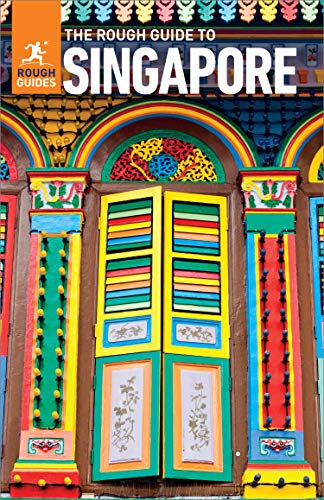
8 Fodor’s In Focus Singapore

This guidebook refreshed its old content on Marina Bay Sands, Sentosa Island, Raffles Singapore, Gardens by the Bay, Orchard Road, Chinatown, Singapore Botanic Gardens, the CBD, Little India, Kampong Glam, Tiong Bahru.
It reveals practical tips and trip planning tools on how to save time and money, beat the crowds, the best time to visit, and how to get around.
This guide will help you find the perfect hotel while also leaving you with the freedom to drink in a neighborhood bar or be served by a great waiter.
Print length : 256 pages.
Published on : November 2020.
Rating : 4.8/5 from 17 ratings.
- Easy to read with plenty of photos and useful information. It also includes maps for every hotel for each district.
- No negative reviews so far.
7 Lonely Planet Singapore 12 (Travel Guide)

The customized itinerary will help you plan your trip to fit in with your interests and schedule. These insider tips will save you time and money while getting around like a local.
With honest reviews for all budget categories, these are the kinds of things that most guidebooks miss. They’ll teach you about hidden gems that will make your trip more rewarding.
Print length : 503 pages.
Published on : February 2018.
Rating : 4.7/5 from 139 ratings.
- This book offers exactly the information needed for travel, it has great itineraries and is easy to read. It covers all the areas of Singapore, including those not always on the tourist radar, and is not short on tips for food, culture, etc.
- On the other hand, some users say this guidebook is full of cliches, and annoying cutesy expressions that some people might find very difficult to read.
Best Travel Guides and Books for Indonesia
6 bali: the solo girl’s travel guide .

It will help you avoid the traps and enjoy the places that are worth your time.
This book has tons of tips on money-saving and time-saving advice for travelers, and it doesn’t feel like it’s written in a textbook.
It starts off with a lot of questions that you probably had right before.
She talks about Bali in an incredibly relaxed and engaging manner. She goes through all of the details of planning a trip to Bali, from when to visit Bali , what to pack to what to do when it comes to eating out.
She also talks about what it is to be a Balinese person and what apps to download before going to Bali. This guide is very useful and straight to the point.
Print length : 304 pages.
Published on : March 2019.
Rating : 4.7/5 from 114 ratings.
- This book is amazing and a must-purchase for your trip. It gives you a lot of information not only about what to avoid, what to pack for Bali , the cultural norms, Bali safety tips , how to budget, and more, but also insider tips and thoughts about each destination and trip.
- On the other side, some readers are complaining the book is not even colored for the price they paid and some pictures are hard to see.
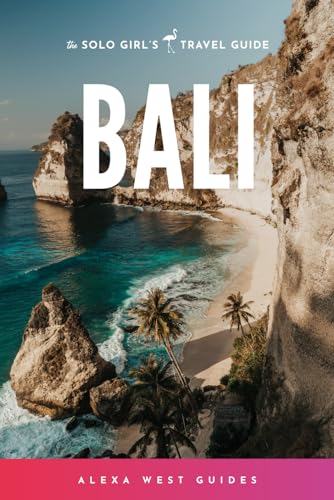
5 Lonely Planet Indonesia (Travel Guide)

There are numerous guides that focus on Lombok or Bali. One of these is Lonely Planet’s Bali & Lombok, which features a variety of photos and descriptions of all the islands that are within the Lombok region.
With Lonely Planet Indonesia, you can find everything you need to know about the country, from its most iconic sights to its lesser-traveled parts.
This guide has everything you need to plan a memorable trip, from eating to sleeping to shopping to hidden areas.
Print length : 823 pages.
Rating : 4.4/5 from 88 ratings.
- It’s a long book with accurate information and really helpful when it comes to budgeting your trip.
- But some other people are complaining there is no information regarding transportation within and between the cities and it lacks its usual quality.
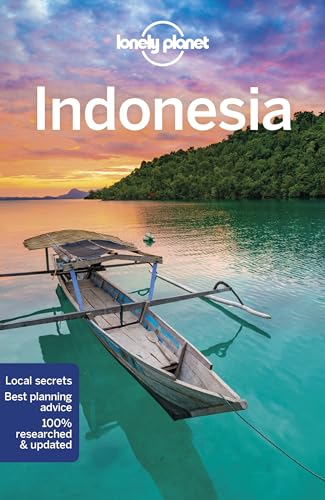
Best Travel Guides and Books for the Philippines
4 philippines travel guide.

Its detailed descriptions of the various attractions and towns, as well as his honest and forthright opinions about certain places, make this a must-read for anyone who is considering visiting.
Philippines Travel Guide is one of the most comprehensive travel guides in the country where you will find places, routes, highlights, hotels, restaurants, etc.
This book also features 243 detailed maps of the Philippines, which will help you plan and carry out your trip to the country.
Print length : 696 pages.
Published on : January 2017.
Rating : 3.9/5 from 47 ratings.
- impressed by the information of the destinations with details about transportation and how much to pay, places to avoid and scams. It also features good places to visit in the Philippines , what to eat, shopping malls and more.
- Other people say it’s heavy and not up-to-date with a long list of facts pulled from the internet, with just a few things about places to visit and avoid, and why! Too much information about history, flora, and fauna, which can easily be found on Wikipedia.
3 The Rough Guide to the Philippines with free eBook

The Philippines’ ultimate guide to finding the best places to stay, when to go , eat, drink, shop, and party for every budget.
It includes a vast amount of information regarding experiences and activities, from diving in Palawan , exploring Chocolate Hills, or climbing volcanic Mount Pinatubo.
The Rough Guide to the Philippines is a must-have book for anyone planning a trip to the Philippines. It features color-coded maps and helpful travel advice.
Print length : 464 pages.
Published on : June 2023.
Rating : 4/5 from 2 ratings.
- they find it useful with many travel tips
- but some of the information is not updated (e.g. author saying there are no atm’s on the island when in fact are many)
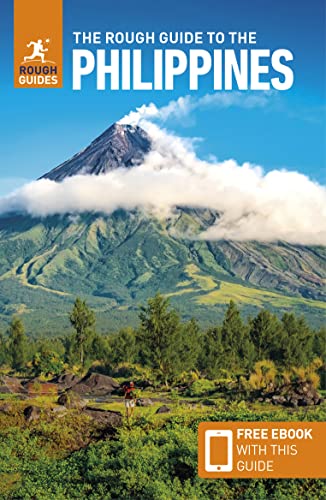
2 Lonely Planet Philippines 14

A lot of people underestimate the value of cultural insights, which can help them plan their trips and improve their lives. This is why Lonely Planet presents honest reviews that detail the places to visit and eat in the Philippines.
There are color maps and images throughout your travel highlights and itineraries that help you customize your trip to fit your interests and budget.
This book is the ultimate guide to the Philippines, packed with helpful information to help you explore the country’s culture and attractions.
Print length : 472 pages.
Published on : February 2022.
Rating : 4.3/5 from 111 ratings.
- great tour book, highly recommended with reliable information and details about how to get around, places to stay and eat, with many secrets and things you will never think to ask are already in the book.
- lacking culture, history, and safety advice (especially in Manila), and this edition has declined in quality and is inaccurate in information regarding transportation.

Best Travel Guides and Books for Malaysia
1 lonely planet malaysia, singapore & brunei 15 (travel guide).

The itineraries help you customize your trip to fit your needs and interests. All establishments in the country were rechecked to ensure they were still open after the COVID-19 outbreak.
With this travel guide, you’ll find the perfect tips to explore these three countries. This guide is the ultimate travel companion for both locals and road travelers.
Print length : 640 pages.
Rating : 4.4/5 from 67 ratings.
Last update on 2024-04-25 / Affiliate links / Images from Amazon Product Advertising API
RELATED ARTICLES MORE FROM AUTHOR

11 Best Camera Backpacks for Travel 2024 And Buying Guide

10 Best Travel Electric Toothbrushes for Your 2023 Holiday

10 Best Luggage for European Travel (2023 Review & Guide)

11 Best Portable Blenders for Travel (2023 Testing Results)

15 Best Travel Blankets (2023 Buying Guide) To Keep You Warm

11 Best Compact Binoculars for Travel (2023 Guide)
Popular articles.

Thai Ladyboy, What is it and How to Spot Ladyboys in...

All about Ping Pong shows in Thailand – Top tips and...

10 Best Vacations for Single Guys to Get Laid in 2023

17 Best Private Resorts in Antipolo With Pool in 2024

Best Resorts in Quezon City, Metro Manila with Private Pool

15 Best Beach Resorts Near Manila, Philippines (2023 Upd.)

17 Best Beach Resorts in Quezon Province to Visit in 2023
Twenty years from now you will be more disappointed by the things you didn't do than by the ones you did do.
Quick Access
- Privacy Policy
LET'S CHAT ON
Last Updated on August 12, 2023 by Sunny
- Work with me
- Privacy policy

- Years in review
- United Kingdom
- Bosnia & Herzegovina
- North Macedonia
- Philippines
- South Korea
- South Africa
- Africa Overlanding
- Central America
- New Zealand
- Solo Travel
- Budget travel
- Travel tips
- Travel itineraries
- Hidden gems
- Bucket list
- Travel resources
- Digital nomadism
- Blogging tips
- Start a travel blog
Indonesia , Malaysia , Singapore , Thailand , The Philippines , Vietnam
101 backpacking asia travel tips | based on 2 years’ experience.
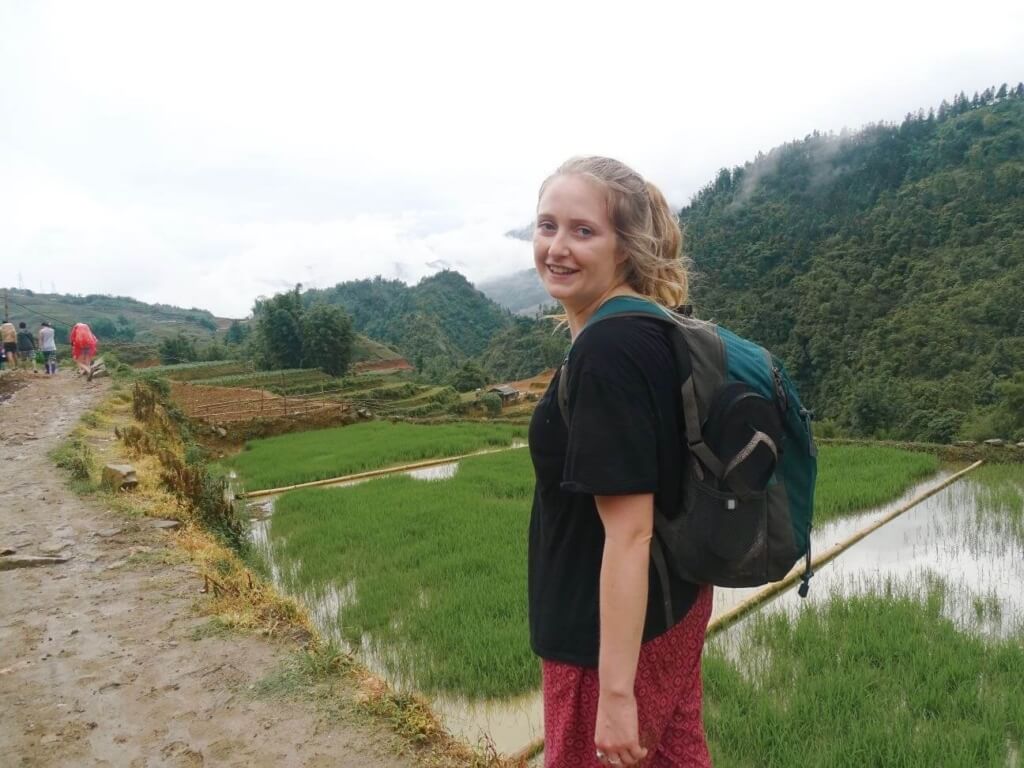
Table of Contents
This post may contain affiliate links to things like tours, hotels, Amazon associates and products. These help me earn a small commission at no additional charge to you.
Southeast Asia is the place that first captured my heart and turned me into a traveller. While I know many of the countries well, there’s always more to do, see and experience in this captivating region. It’s fantastic for all types of travellers, but today I’m going to be sharing my Asia backpacking tips . Southeast Asia is one of the world’s most popular places for backpacking. It’s cheap, safe and beautiful with friendly people and delicious food. From pho to laksa, banh mi, pad Thai, massaman curry and chilli crab, you’ll never have your fill… Of Asia, or the food!
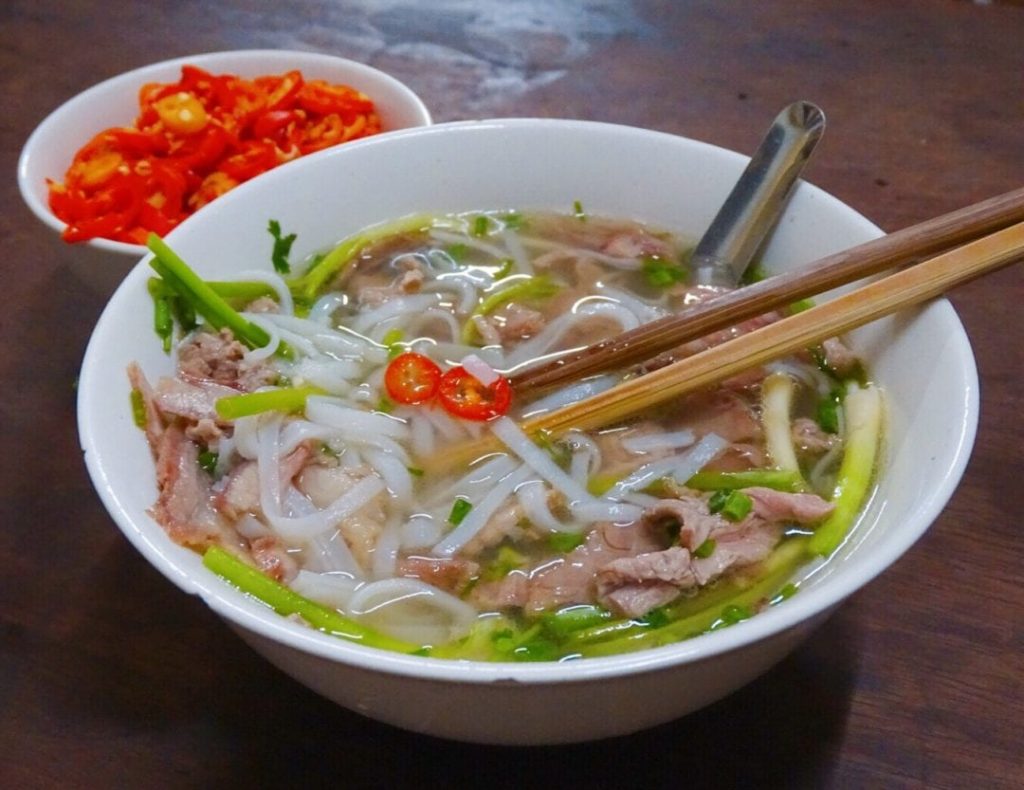
Related read: the ultimate Southeast Asia bucket list
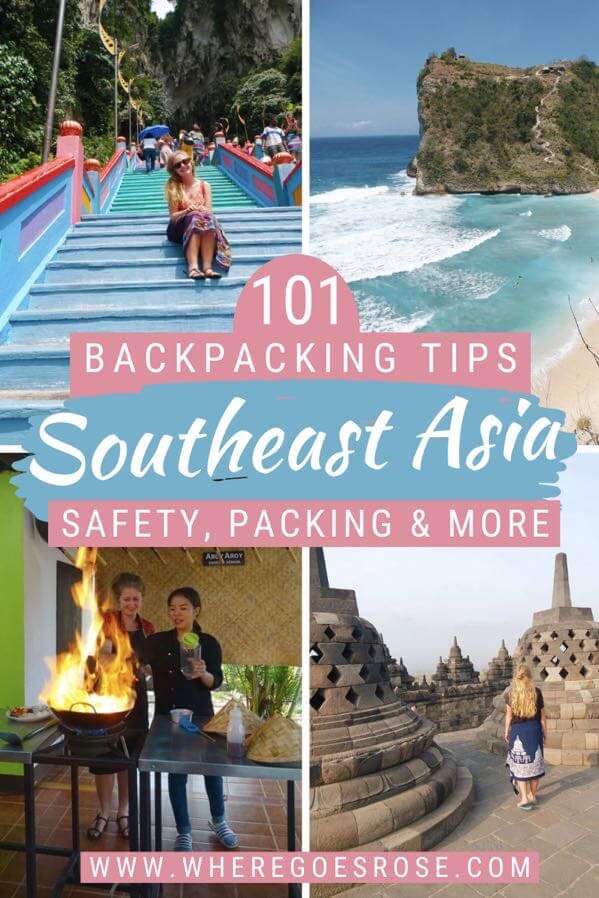
SOUTHEAST ESSENTIALS Accommodation: Hostelworld / Booking.com Lonely Planet Southeast Asia Activities: GetYourGuide / Klook
What to know before backpacking Southeast Asia
Despite being safe and friendly, there’s still plenty to know before you embark on a Southeast Asia backpacking trip. Not only do you want to make the most of your trip and not miss anything, but most of the countries are different to the West in terms of attitudes, values, religion and customs. These Southeast Asia tips will help you make the best of your trip and ensure you don’t get in trouble or cause cultural offence. Then, there’s living out of a backpack for an extended period: a challenge in itself! I’ll share my packing tips for backpacking Southeast Asia including what to bring and what to bin.
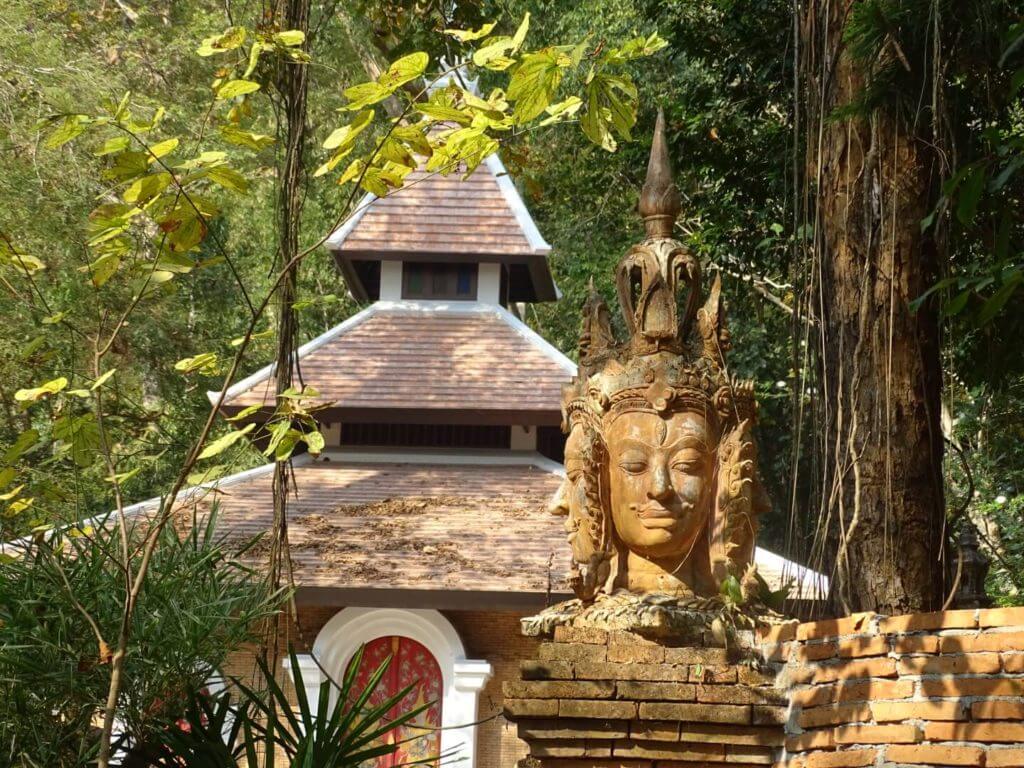
I spent 11 months backpacking Asia between 2015-16, parts solo and parts with friends. It was a fun and carefree trip. The photos suck but the memories triumph. I drank too much, learnt a lot, took terrible photos, and generally dipped my toes into Southeast Asia. Then, when I started working remotely , I spent 14 months in Southeast Asia from 2018-19. I based between Vietnam, Bali, Thailand and Malaysia, getting to know cities like Hanoi , Hoi An , Ubud , Penang and Chiang Mai . Although I had more laptop days than late nights, I slowed down and got to know the locals. Both trips were wonderful in their own ways. After 25 months in Southeast Asia, I feel I’m still scratching the surface. A lifetime would be too short! (Then I buggered off to Mexico and fell in love all over again. So fickle!)
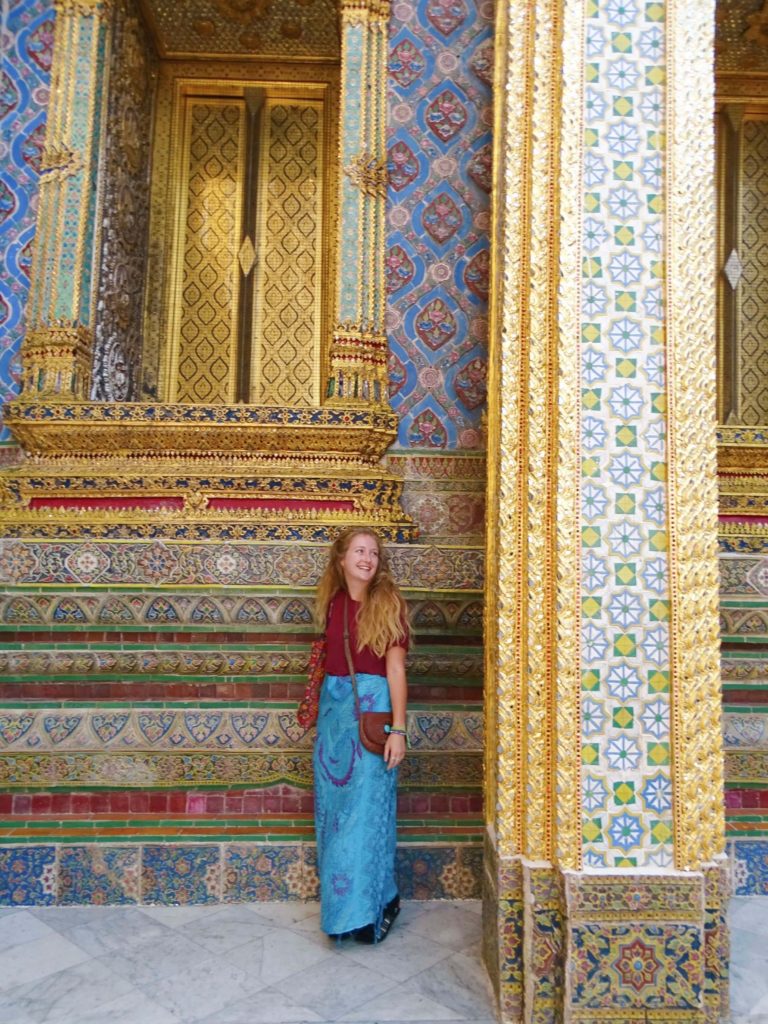
Here are my top travel tips for Asia…
Asia tips for planning and organisation
1. Plan your route right – you don’t want to end up going back on yourself and spending extra money on transport. I did this all wrong, learnt from my errors and put together this backpacking Asia route & itinerar y . 2. Spend enough time per country – this is another lesson I learnt the hard way. I didn’t spend nearly enough time in Cambodia or Laos. Research what you want to do and see in each country before deciding how long to spend. 3. But don’t over plan – this may sound contradictory but I’d advise keeping things loose enough that you can travel with new friends if / when you meet them. I’d suggest not booking your transport too far in advance.
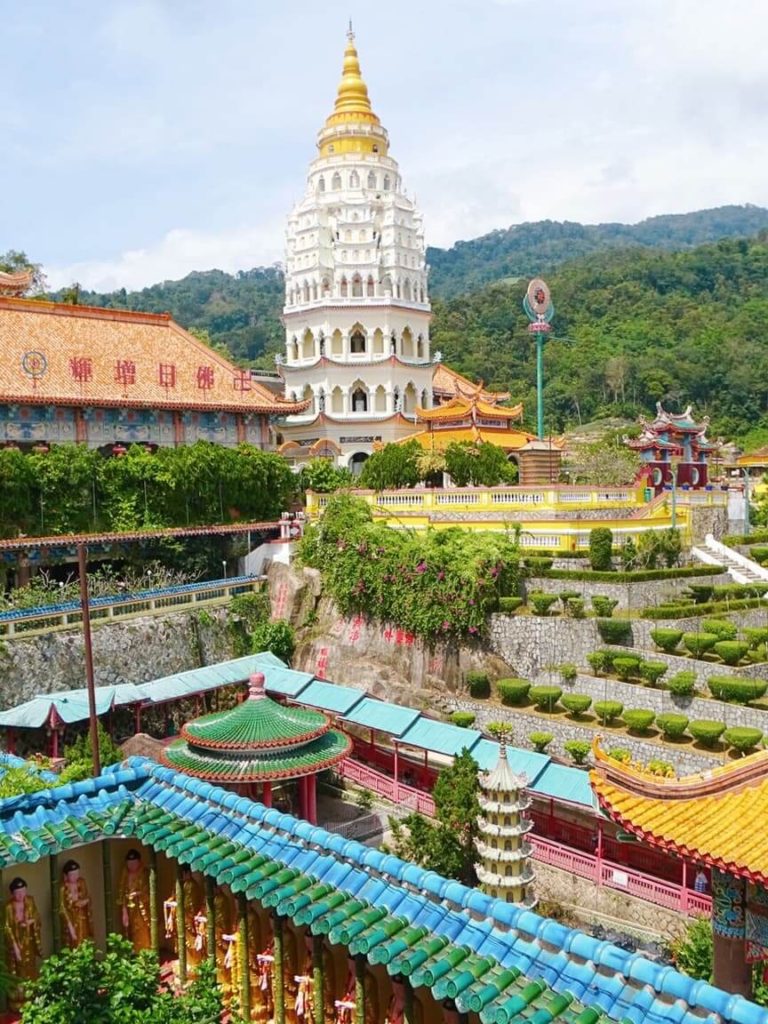
4. Vaccinations – check which are required for the countries you wish to visit. 5. Visas – suss out visa requirements before your trip. You can get in trouble for overstaying even if by accident. Some countries like Vietnam only allow entry for 2 weeks without a visa (for most nationalities). You can apply for a longer one in advance or ensure your travel itinerary fits into their requirements.

6. Get travel insurance! It’s not worth travelling without it. I use True Traveller (for UK & Europe residents) since it’s affordable but covers everything you’d need including various activities, valuables and pre-existing conditions. Unlike some companies, they insure you if you’re already travelling / don’t yet have your flight home booked. Get a quote . For other nationalities, I recommend Hey Mundo and for long-term digital nomad travellers, I suggest Safety Wing . 7. Ensure you have 6 months left on your passport – this is a rule for travel in general not just Southeast Asia.
8. Carry copies of your vital documents – this is an important tip for Asia travel (and travel generally). I keep a scan of my passport and insurance details close in case of emergency.
9. Avoid burning seasons – Northern Thailand turns into a land of polluted fog between February and April. I would time your trip outside this period. 10. Be aware of local holidays – for example, Vietnam shuts down for Tet on 1 February. You won’t be able to catch a bus or visit any attractions. Likewise, Nyepi in Bali (usually in March) is when bad spirits are thought to fly over. Shops are shut and everyone has to stay indoors. 11. Proof of onward travel – occasionally when entering a country, you’ll be asked to provide proof that you’ll exit before the end of your visa. One way to get around this is by booking a refundable journey on Expedia.COM (very important it’s the US site) and cancelling within the set period. 12. Don’t be scared to go solo – I can personally vouch for solo travel in Vietnam , Thailand , Malaysia , Indonesia , Laos, Cambodia and the Philippines . With hostels and public transport, solo travel won’t cost much more, either. Keep reading for my budget tips for backpacking Southeast Asia…
Read next: my solo travel guides
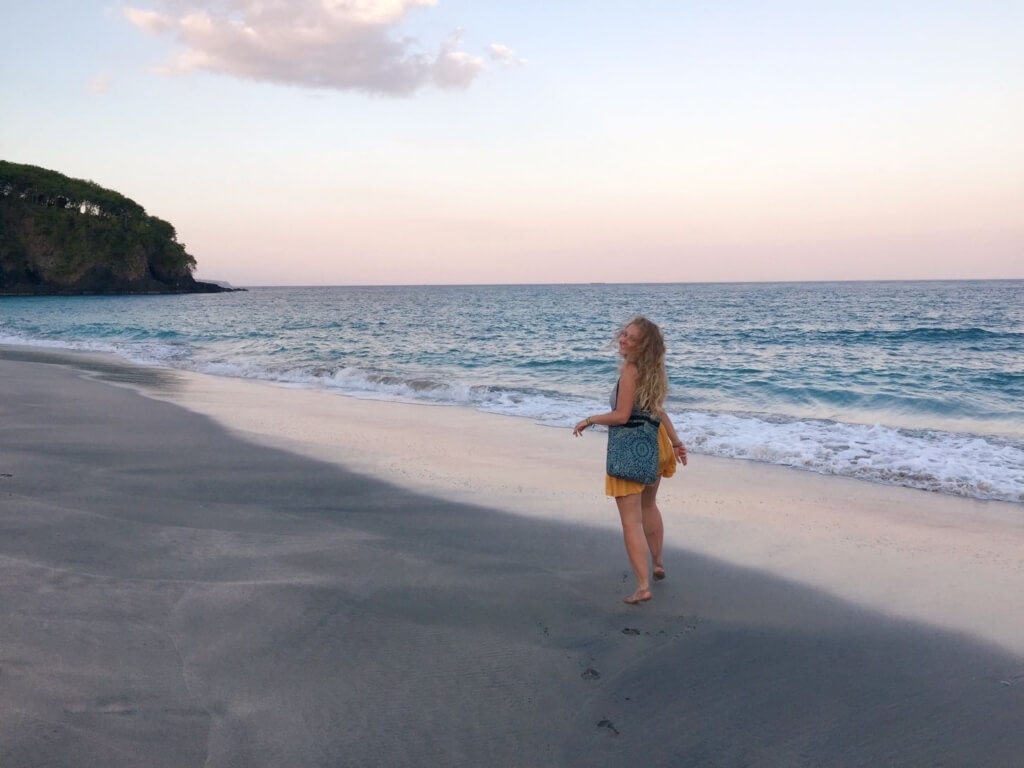
13. Get off the beaten track – as Asia backpacking tips go, this could be the best one yet. Since Southeast Asia is so safe, you don’t have to worry about staying on-grid (like you would in India for example). Make sure you escape the tourist hotspots in search of more peaceful places. 14. Download the right apps – some of the best apps for travelling Asia include XE (currency converter), Uber and Grab, Skyscanner , Google Translate, SplitWise (great for splitting bills with travel buddies) and Maps.me.
Travel tips for Asia
15. Use 12Go – this website and app is ridiculously useful. It shows transport options between any two destinations including bus, train, ferry and boat. Compare durations and price, and pay by card or PayPal.
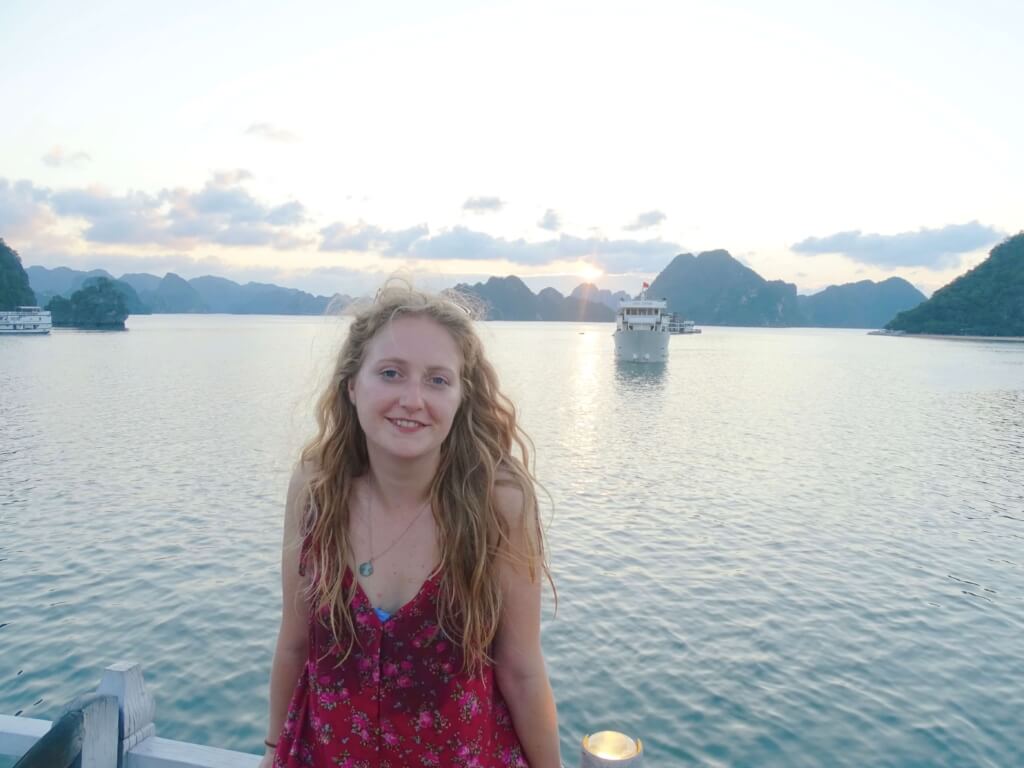
16. Get used to long bus journeys – you’ll be a pro by the end. Always bring a book / Kindle or download something to watch on your phone or tablet (but don’t flash around expensive devices). Keep your valuables close on night buses. 17. Know which border crossings are easy (and when to fly) – it’s usually easy to cross Asian borders but there are a few mammoth journeys where you’ll wish you flew. Here’s a quick summary:
- Thailand to Cambodia – easy. Take a 13-hour bus or 16-hour train from Bangkok to Siem Reap .
- Thailand to Laos – easy (although time-consuming) on the slow boat or bus . For the boat, travel from Huay Xai (easily reachable from Chiang Rai ) to Luang Prabang with an overnight stop in Pakbeng.
- Laos to Vietnam – this is a long bus journey between Luang Prabang and Hanoi lasting up to 28 hours. You may want to fly instead.
- Vietnam to Cambodia – easy. Take a 6-hour bus between Saigon and Phnom Penh (or a river adventure over the course of a few days ).
- Thailand to Malaysia – catch a ferry from Koh Lipe to Langkawi .
18. Agree taxi prices beforehand – or insist on using the meter. Keep an eye out for rigged meters that start shooting up by huge amounts. If this happens, get out. 19. Download the local taxi apps – countries often have their own version of Uber. I used GoJek in Indonesia and Grab in Vietnam and Thailand. As well as cars, you can call scooter taxis – these are a game-changer for travelling on a budget ! Your driver will provide you with a helmet.
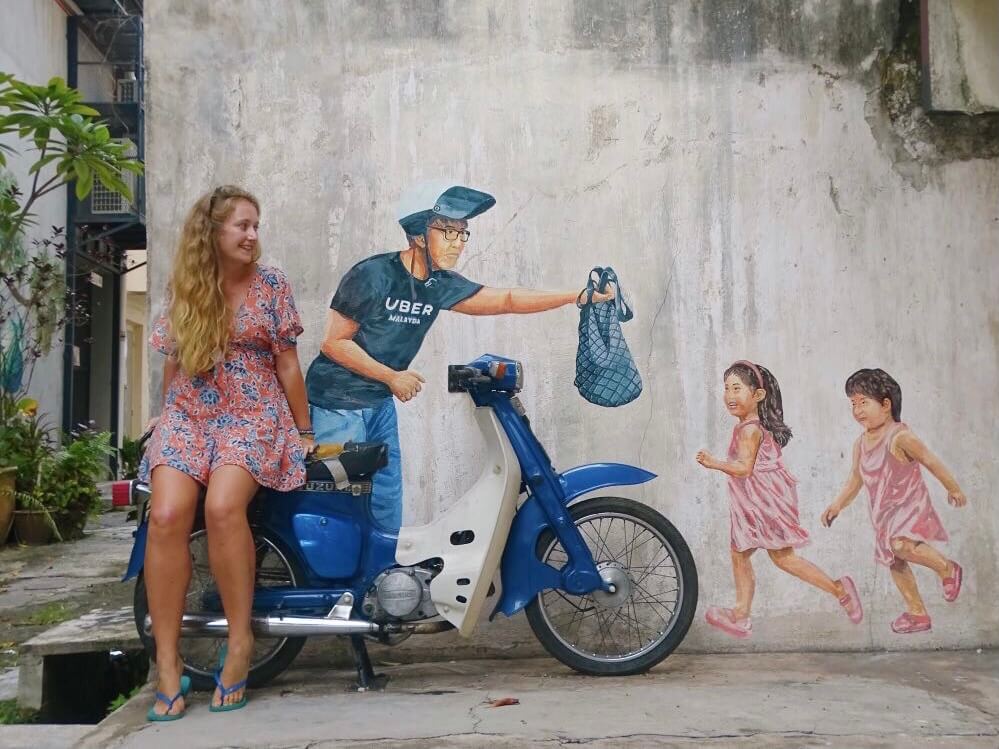
20. Take public transport – don’t be shy. Journeys are often listed on Google Maps so use your phone to check you’re not headed in the wrong direction. Public transport is the cheapest way to get around.
21. Research how to get around in new cities – major cities in Southeast Asia often have efficient transport networks. For example:
- Bangkok – Metro and Sky Train (pay with cash or card)
- Chiang Mai – songthaews (big red share taxis – just hail them and pay in cash)
- Hanoi – bus (pay the fares of 5-10k VND in cash)
- Kuala Lumpur – there are several trains: the Metro, LRT, monorail and KLIA airport express (pay with cash or card).
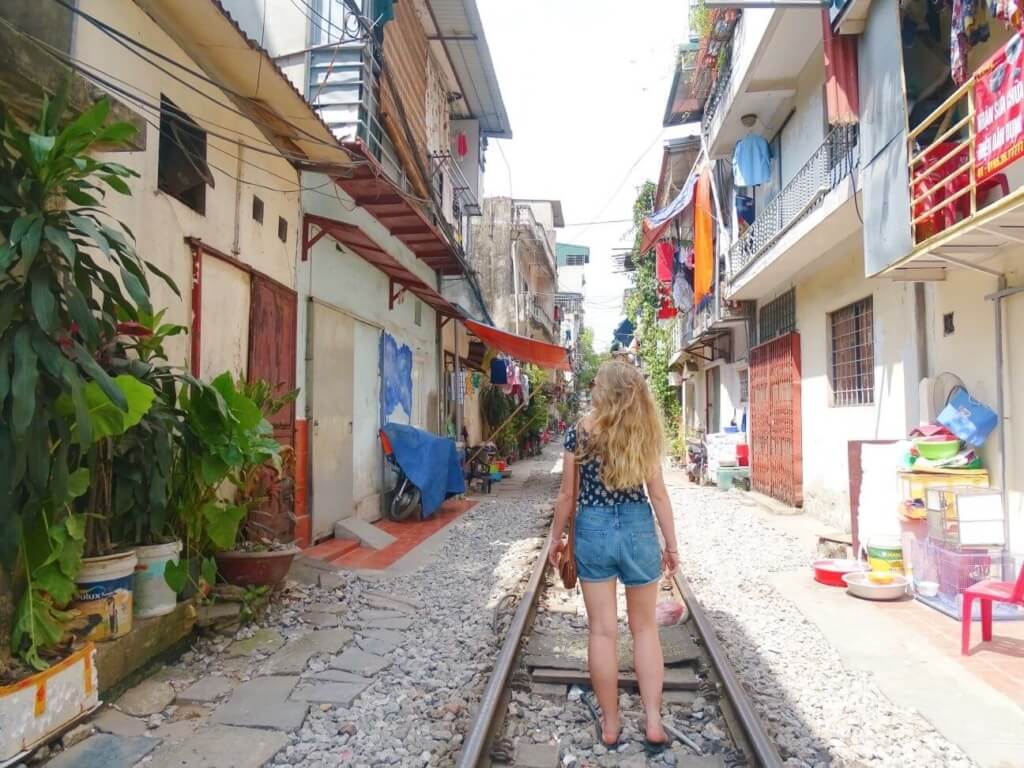
22. Learn to ride a scooter – providing you wear a helmet and your insurance covers it, riding a scooter is a great way to explore Asia on a budget, especially in Bali where there’s no public transport. Hire yours in advance . 23. Photograph them before leaving the rental store – snap any existing scratches or damage when you hire your scooter in case you get charged for it. 24. Download Maps.me – this is your best app for navigation. Download offline maps for whole countries.
Southeast Asia tips for staying connected
25. There’s usually Wi-Fi – I spent a whole year in Asia relying on Wi-Fi rather than buying a SIM card. Most hostels have Wi-Fi as well as many cafes and public places. 26. SIM cards – it’s easy to find affordable SIM cards should you want them. Ask staff at your hostel staff where to get one. Monthly data packages often cost $5-10. Check Klook for pre-ordered SIM cards delivered to your accommodation. Update – there’s a new eSim data package that works around most countries in SE Asia. Just scan the QR code to activate it!
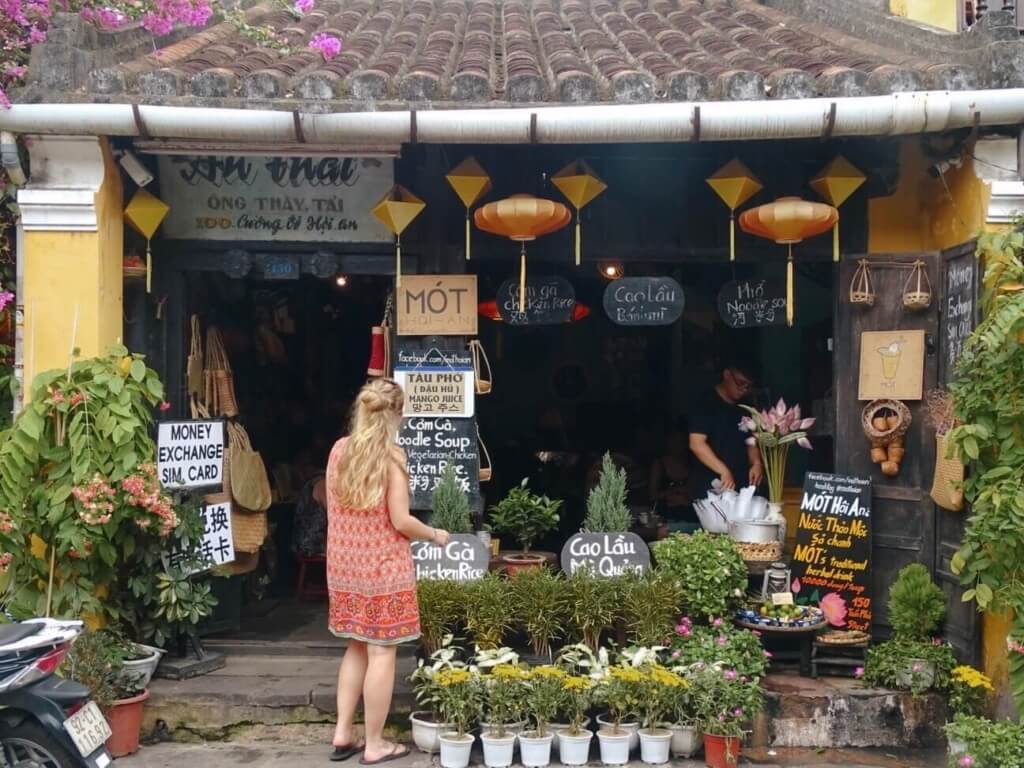
27. Skype credit – I use FaceTime and WhatsApp to call friends and family but Skype is a godsend when I need to make a phone call home (for example to my bank or insurance company). Skype credit is a fraction of the price of making an international call via a SIM card. Use the web version or mobile app. 28. Get a Mobile Wi-Fi hotspot – these let you insert a SIM card and share the data between your devices. This can be handy for watching things in the evenings as often Wi-Fi is available in hostel communal areas but doesn’t stretch to the rooms. 29. Travel with a VPN – to browse the internet securely and ensure your personal details don’t get shared via public Wi-Fi networks, use a VPN. They also bypass countries’ restrictions so you’ll be able to watch shows from your home country.
Tips for Asia backpacking & hostels
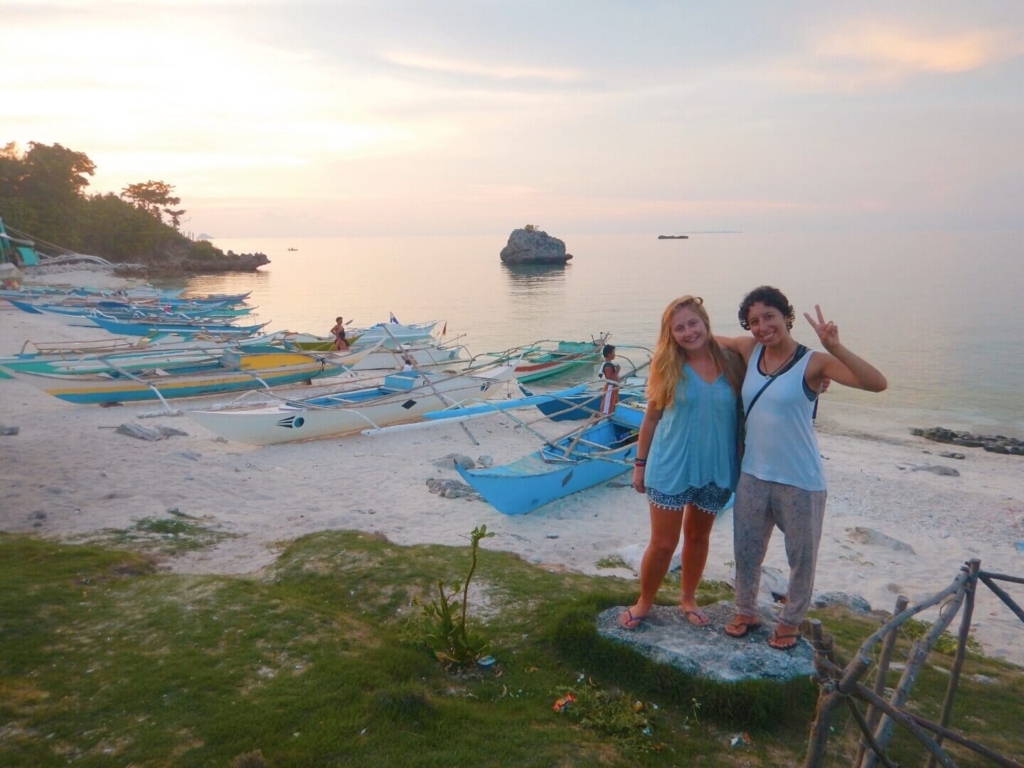
The following backpacking Southeast Asia tips will help set your expectations for hostels & meeting people on the road.
Related read: how to meet people when travelling solo
30. Pick the right hostel for you – I’d describe myself as an extrovert who likes nightlife and even at 21, some of the Asia hostels were too much for me. You’ll meet people in party hostels who don’t seem to even like travel – they just want to drink and hook up! Which is fine, but just be aware what you’re letting yourself in for. 31. There are cosy hostels too – it’s easy to find family-run hostels that attract a friendly backpack crowd. Look at the photos and reviews on Hostelworld to make an educated guess.
Want to save money on accommodation? I use Trusted Housesitters , a website that connects travellers with homeowners who need their homes & pets sat. It means staying longer in a place but can be great if you’re not in a rush! Plus, you get to hang out with cute pets.
32. Be approachable – don’t bring your book to communal areas. 33. Pack earplugs – especially in party hostels! Aside from people coming in drunk, hooking up or snoring, there’s always some noise in dorms whether it’s someone going to the bathroom or leaving for a flight. 34. Don’t be THAT dorm mate – pack the night before . This should really go in the ethical Asia tips below 😉 There’s nothing worse than being woken up at 6am by the sound of a dorm mate packing for their flight. 35. Join Facebook groups – search for backpacking Asia groups on Facebook. You may cross paths with the members or glean useful Southeast Asia travel tips. Those that identify as women can join Girls Love Travel . 36. Make friends with locals – don’t stick to socialising with other backpackers! Befriend tour guides and hostel staff. Get chatting to locals when you’re out and about. You’ll have a blast and learn a lot from them.
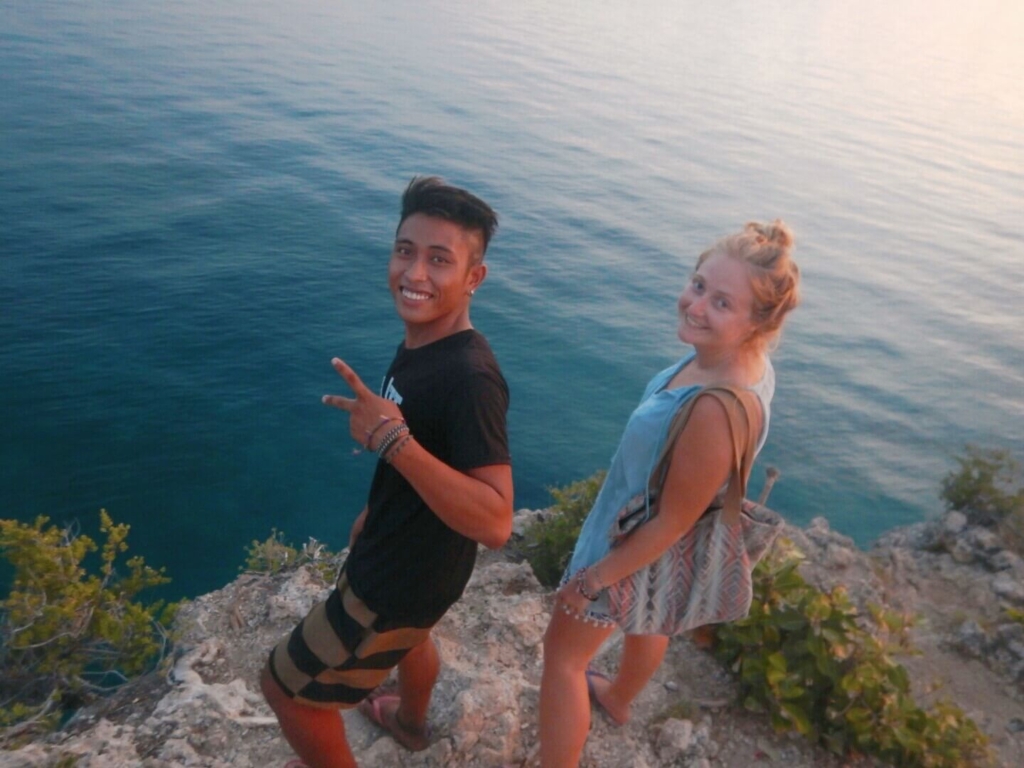
Related read: How to pick a great travel buddy
Cultural immersion tips
37. Get used to the bum gun – two words not usually used in the same sentence. This handy device is used in place of toilet paper in many Asian bathrooms. 38. Prepare for squat toilets – these aren’t everywhere but you’ll encounter them at some point. 39. Prepare for different health and safety standards – things are quite relaxed in comparison to Western countries but do always insist on helmets / life jackets etc. Your insurance may be void otherwise. Suggesting you’ll take your business elsewhere usually results in someone ‘finding’ a spare helmet…
Wellbeing backpacking tips for Asia
40. Know you might get homesick – it’s normal and not a sign of failure. Luckily, technology is good when you want to call people back home. You can usually find Western comforts when you need them, especially in major cities like Bangkok and Kuala Lumpur. Nothing wrong with a mall day! 41. Plan rest days – I massively burnt myself out during my first Asia backpacking trip. I didn’t factor any rest days and almost stopped enjoying myself altogether. It’s worth booking a private room and having a few lazy days to do life admin, laundry etc.
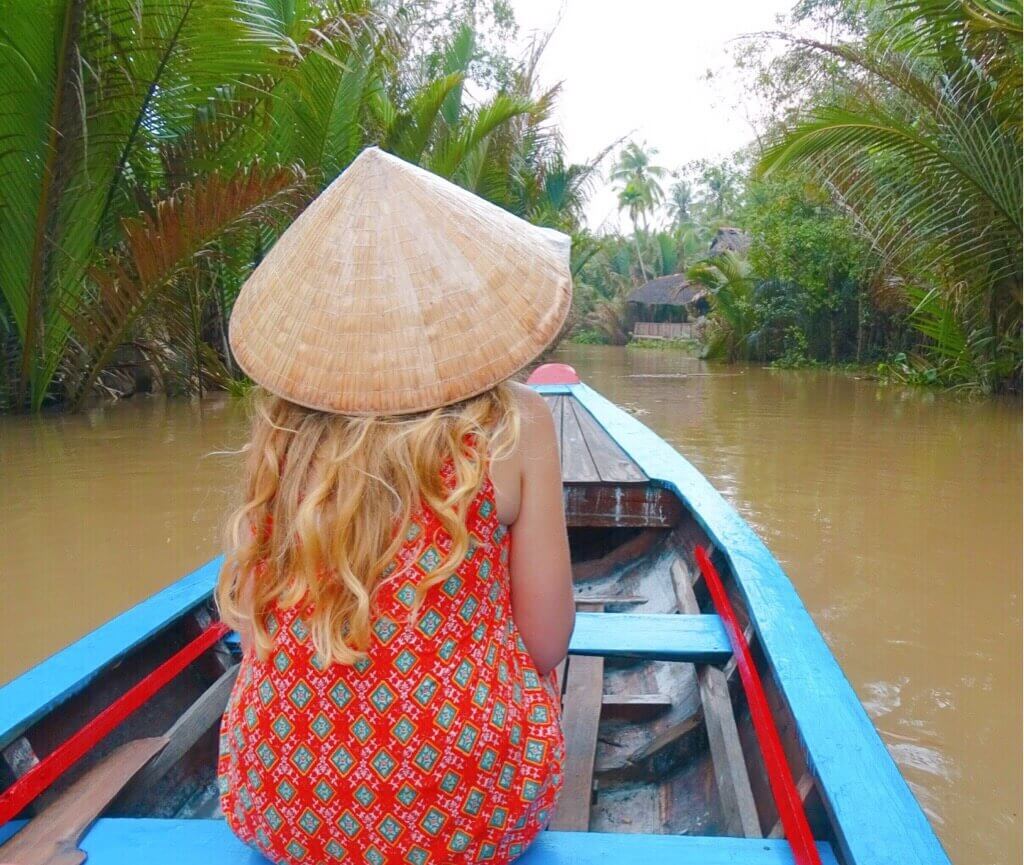
Tips for eating in Southeast Asia
42. Eat street food – the food is about 60% of the reason I always return to Asia. It’s delicious! Check out some of my Asian food guides:
- Hanoi street food
- Hoi An street food
- Saigon street food
- Finding the best bahn mi in Vietanm
- Chiang Mai food guide
- Bangkok Chinatown food guide
- Kuala Lumpur Chinatown food guide
- Penang street food
- Where to eat in Melaka, Malaysia
- Singapore street food
- Best Ubud warungs
- Restaurants in Canggu, Bali
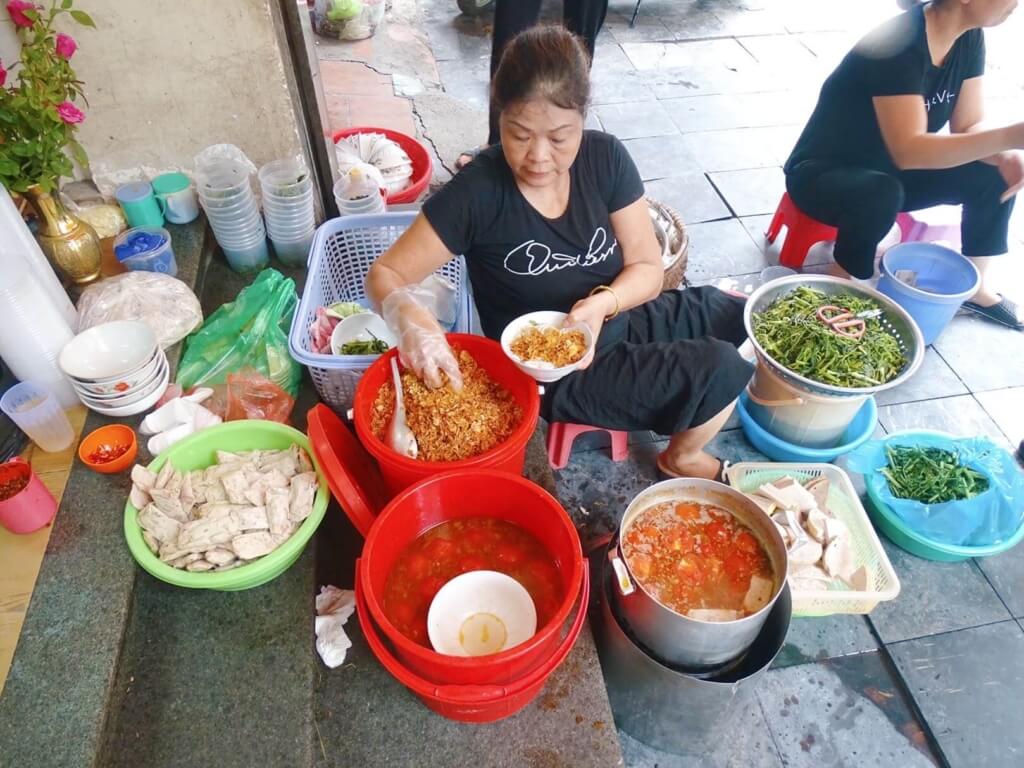
43. Bring reusable items – sadly a lot of plastic in used in Asia. There are a few items I travel with and would recommend taking with you. These are:
- Metal straw kit with straw cleaner and cloth bag (pro tip – learn how to say ‘no straw please’ in local languages)
- Reusable coffee cup (collapsable) for hot takeaway drinks
- Reusable Tupperware box for takeaway and leftover food
- Reusable bamboo cutlery set for eating at markets.
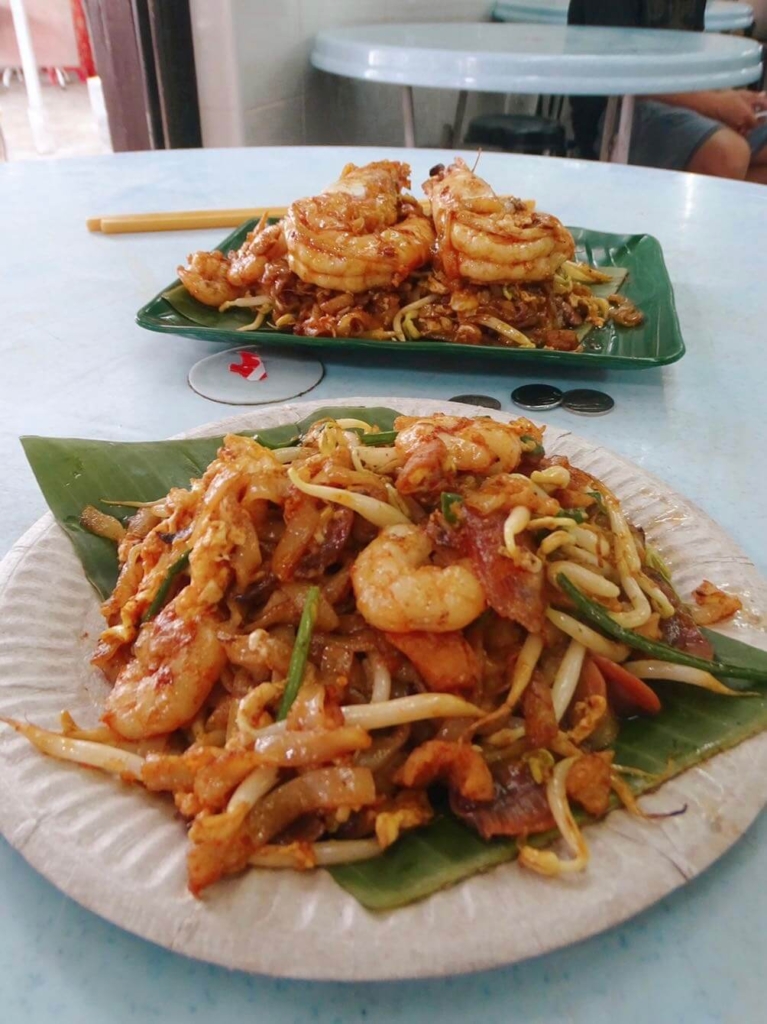
44. Don’t drink tap water in Asia – it’s safe to drink bottled water (just make sure the lid is sealed) although not very sustainable. It’s best to bring a reusable water bottle that you can fill up from large filtered units at your accommodation. Alternatively, pack a filtering water bottle that sterilises water for safe drinking.
45. Eat where it’s busy – in terms of street food safety, this is one of the best Asia tips for staying healthy. Eat where it’s busy because there will be a quick turnaround of food meaning nothing has been sat around long. If locals are eating there, it’s a bonus.
46. Drink local beer – keep it cheap by keeping it local. Drink Chang in Thailand, Bintang in Bali and beer hoi (locally produced fresh beer) in Vietnam.
47. Take cooking classes – these are so much fun. I’ve taken them in most Southeast Asian countries now. Some of my favourites are Aroy Aroy Cooking School in Chiang Mai and Thuan Tinh Island Cooking Tour in Hoi An.
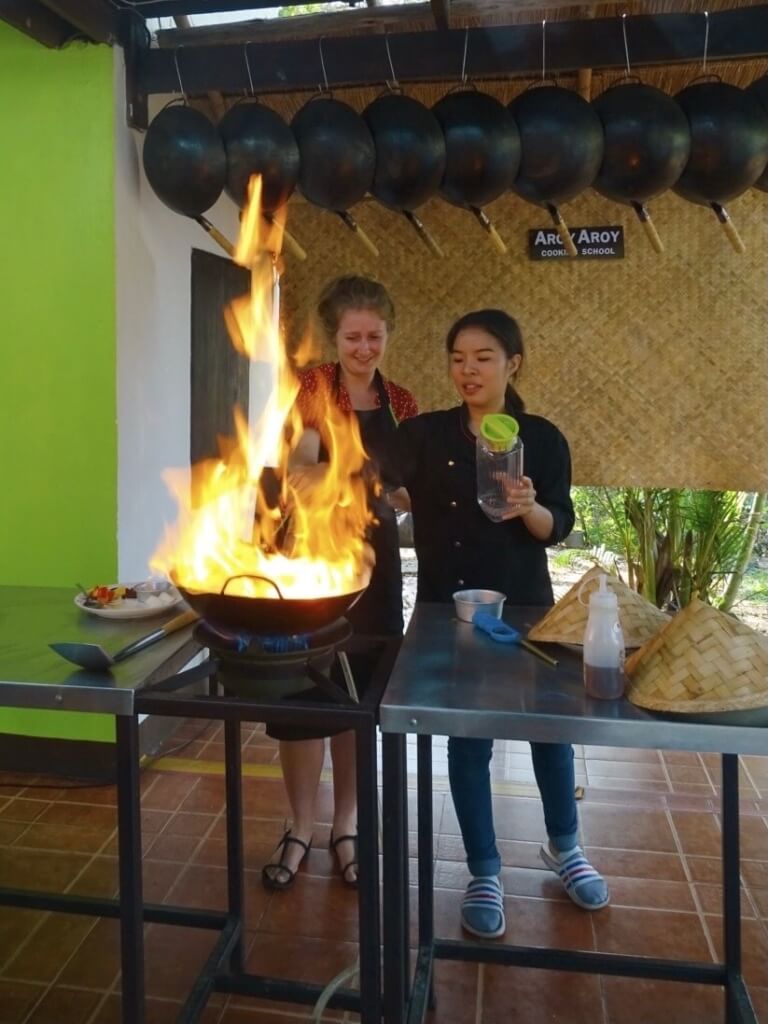
Safety tips for Southeast Asia
The following Southeast Asia backpacking tips will keep you safe. But remember you still need insurance however careful you are! 48. Watch out for pickpockets – Southeast Asia has little violent crime. Having your valuables stolen is as bad as it gets. While not life-threatening, you still want to avoid it. The following Asia tips will help you avoid sticky situations… 49. Split up your bank cards – for the love of god! If you ignore the other 100 Southeast Asia tips in this blog and just remember this, my work is done. Don’t lose them all once like I did. 50. Scooter snatchers – the most common way to get robbed is when you’re on foot and a couple of guys whiz by on a scooter, the one at the back grabbing your phone/bag. It happened to me in Vietnam. To stay safe… 51. Wear a crossbody bag – I usually wear the one below but you can go even safer with one that goes around your chest or waist . I have one I sleep wearing on night buses.
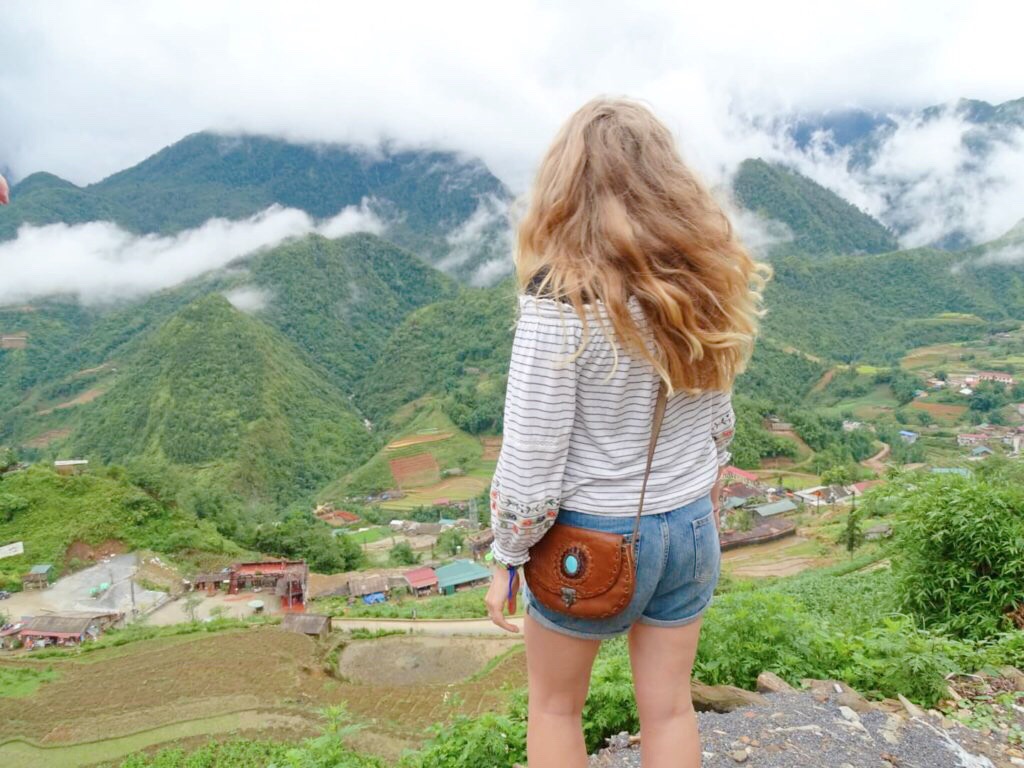
Packing tips for Asia
The following travel tips for Southeast Asia relate to luggage, clothes and useful travel gadgets and accessories … 52. Get a good backpack – you’ll be carrying it every few days so it’s worth getting a decent one. I recommend the Osprey Farpoint ( men’s ) ( women’s ). You won’t need more than 65L. In terms of day bags, I use a:
- Small rucksack for hiking (which I carry on my front during transit days)
- Crossbody bag for days/nights out
- Secure bum bag for night buses.

53. Packing cubes – these are a lifeline for organising your luggage. 54. Pack light – I’d suggest tops and bottoms that you can mix n match, underwear and swimwear, an extra layer for evenings/cooler places, and a raincoat. Laundry facilities are cheap so you don’t need many outfits. Bring 1 pair of comfy walking shoes (hiking boots not necessary unless you’re doing something extreme), 1 pair or sandals and 1 pair of flip flops. 55. Keep it casual for evenings out – you rarely need fancy going out clothes in SE Asia. I pack 1-2 ‘nice’ dresses for days and nights out. 56. Sarong – although you’ll look like a tourist, this is a handy Southeast Asia tip. I have a trusty sarong I use on the beach, to cover my legs at temples, and as a cover on bus journeys. Don’t worry if you leave home without one – you can buy them cheaply at markets in Asia.
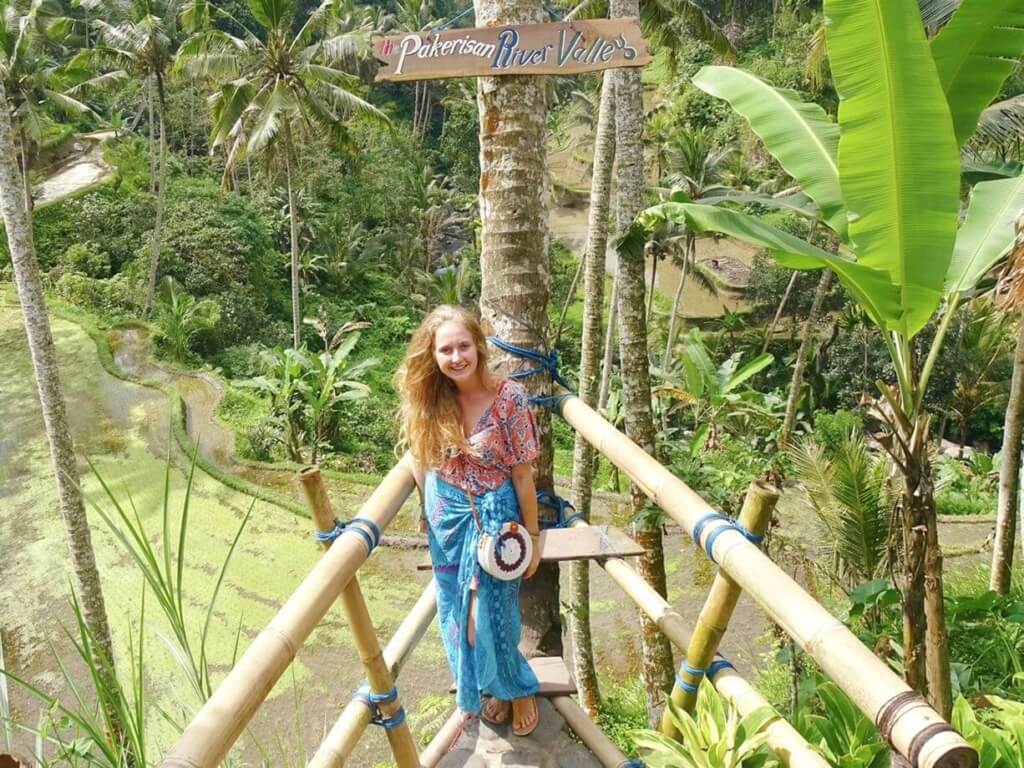
57. Don’t wear white – it’ll never stay clean. I don’t know if dust and mud is particularly stubborn in Southeast Asia or if it’s something about the laundry… Either way, just don’t do it. 58. Wear cool clothes – it’s better to have cool cotton clothes than synthetic materials which make you sweat in the heat. I often prefer to wear long (but thin) sleeves and pants that save you getting burnt. These are also better for visiting religious sites where revealing clothing may cause cultural offence. 59. Bring enough sunscreen – I’ve been burnt (literally) before. When you buy local Asian brands of sunscreen, it rarely works. Make sure to bring enough for your trip or buy it from a reputable store or mall in Asia. It’ll be pricey but worth it.
60. Mosquito spray – the same goes for mosquito spray. Aim to bring enough for your trip as local brands may vary in quality. 61. Don’t bring designer items – no one else will have them and you’ll put yourself at risk of theft. 62. No need to worry about sunglasses – you will find $1 ‘Raybans’ on every street corner in Southeast Asia.
63. Neck pillow – the holy grail of backpacker items! You won’t regret the space a neck pillow takes up.
64. Sanitary products – this is a useful Asia tip for people with periods. You can usually only buy pads not tampons. Either take a bunch with you or – the more sustainable option – pack a moon cup (or similar brand) . 65. Watch out for whitening products – it’s worth noting that body products in Asia commonly contain skin whitener. Scrutinise the packaging; I was usually able to find products without… Aside from deodorant. I spent a year with very pale underarms.
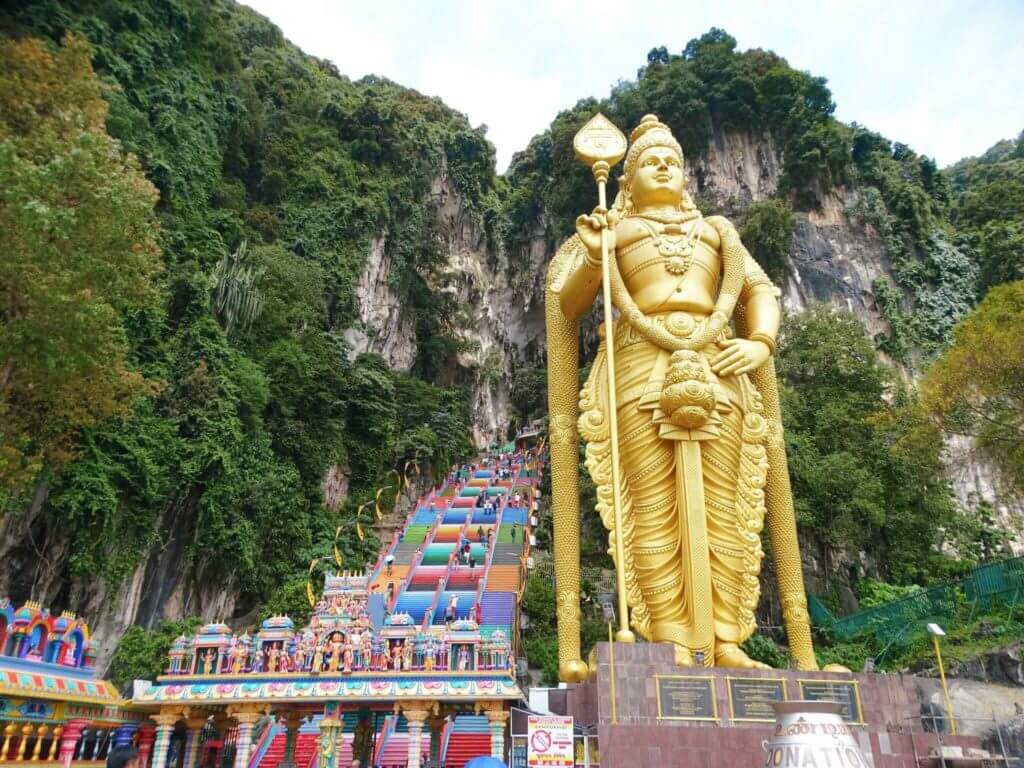
Money tips for backpacking Asia
The following travel tips for Asia will help you budget and – hopefully – travel for longer.. . 66. Know what to budget – generally, $1,000 a month is a good starting point for Southeast Asia backpacking although it’s worth noting that countries vary in price. Vietnam, Laos and Cambodia are the cheapest in my opinion. I’ll put together a big guide to do this topic justice but a few general costs (in USD) are:
- Bed in a hostel dorm – $3-10
- Private hostel room or budget guesthouse – $15-20
- Street food meal – $1-3
- Western-style restaurant meal – $5
- Bottled water – $1
- Intercountry bus journey – $10-20
- Day tours – $10-50
- Diving – $300 for a 3-day course inc accommodation in Koh Tao.
67. Learn to haggle – locals expect it so don’t pay the first price quoted, especially at crafts markets.
68. Volunteer – in the past, I’ve volunteered in exchange for food and board using Workaway and Worldpackers . They have plenty of positions from hostel work to farming, language exchanges and helping with promotion. There are even a few paid positions. Read next: which is better, Workaway or Worldpackers ? 69. Travel through the night – not only do you save the cost of a night’s accommodation, but you free up the next day (although this is hit-and-miss – I often end up napping if I’ve not slept well on the bus). 70. Have USD – since there’s no universal currency in Asia, it’s worth bringing some USD ($100 or so). You’ll thank me for this Asia travel tip when you need to buy a visa on the border but haven’t been able to withdraw local currency yet.
71. Always carry cash – you can rarely pay with card in Southeast Asia. Withdraw cash every few days so you’re not carrying too much. 72. Prepare for various currencies – if you have money leftover when entering a new country, exchange it at a reputable money changer (do a bit of research for example this article on the best places to exchange money in Hanoi ). Airports charge the worst rates and there are often scams at land borders. Use XE currency app to check you’re getting a decent rate. Main currencies in Southeast Asia :
- Vietnam – Dong (VND)
- Indonesia – Rupiah (RP)
- Cambodia – Riel (KHR) and USD
- Laos – Kip (LAK)
- Malaysia – Ringgit (RM)
- Singapore – Singapore dollar (SGD)
- Thailand – Baht (THB)
- Myanmar – Kyat (MMK)
- Philippines – Pesos (PHP).
73. Sign up for mobile banks with reduced fees – my three favourites for UK travellers are Monzo, Revolut and Starling. Wise (for all nationalities) is great for low-cost international money transfers. If you get one of their cash cards, there are no foreign transaction fees and you can withdraw $250 a month without fees.
Ethical tips for Asia
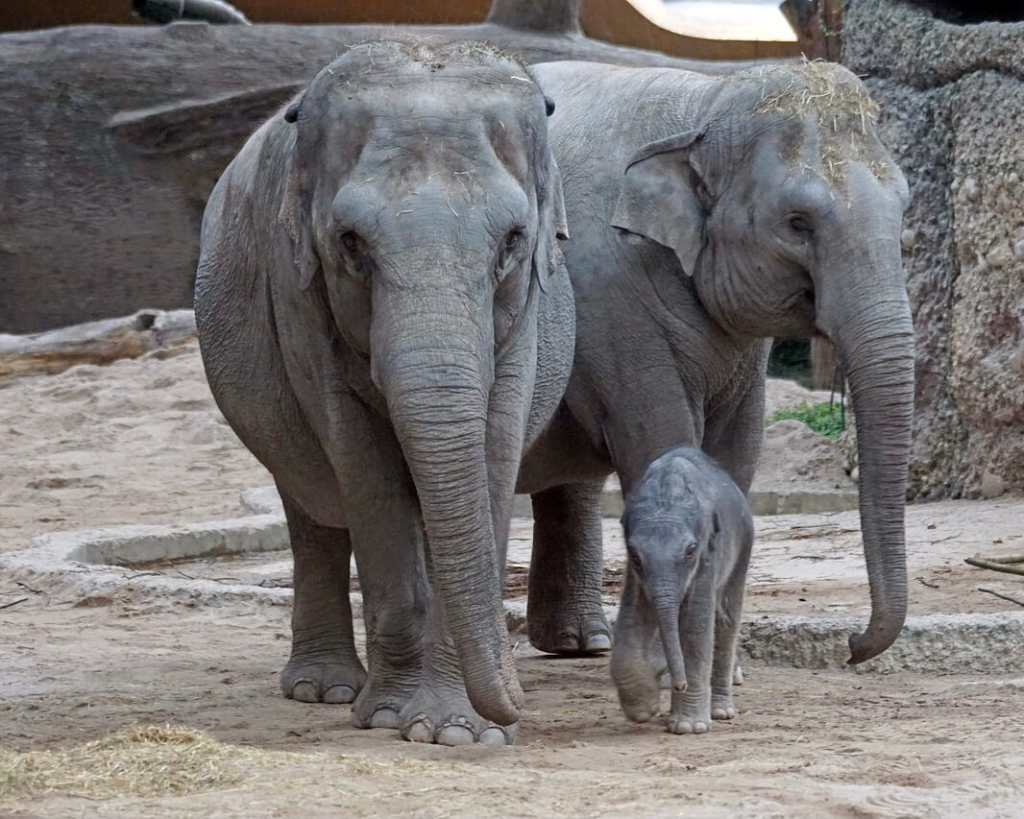
The following tips for travelling Southeast Asia will ensure everyone benefits from your travels! 74. Avoid unethical animal activities – the tiger temple is a truly despicable place in Thailand where tigers are drugged for tourist photos. Never go. Also, don’t listen to anyone who tells you it’s okay to ride elephants. Here’s why not . 75. Avoid human tourism – for example the Karen ‘long neck’ groups in Northern Thailand. Many are actually Burmese and have had their passports confiscated to keep them trapped for tourism purposes. Be wary and read reviews whenever people are involved in tourist activities. 76. Give tips – if you’ve had good service, tip your tour guide/waiter at least 10%. 77. Learn a bit of local lingo – even if it’s just hello, thank you and goodbye, people will appreciate it.
Tours in Asia
78. Know you rarely NEED them – although I often enjoy taking tours to learn from local guides and support their livelihoods, it’s easy to do Southeast Asia independently. The ones I would recommend however are an overnight cruise in Ha Long Bay and a trekking tour in Sapa (both in Vietnam).
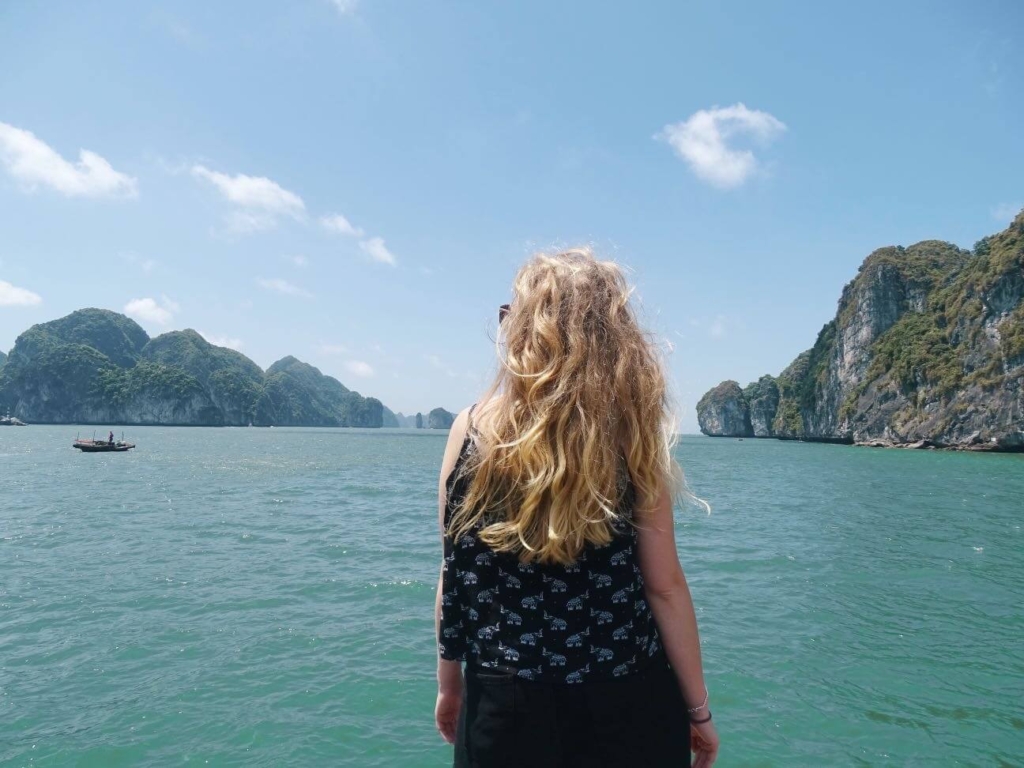
79. Multi day / week tours – again, you don’t need to take these but if you’re lonely or burnt out from organising everything, they can be a worthwhile investment. G Adventures are great for getting off-the-beaten-track while Contiki are more of a young, social company. Consider taking one in the middle of your trip if you need a break.
80. Day tours – if I can’t be bothered with organisation or I’m visiting somewhere tricky to access by public transport, I browse Viator , GetYourGuide and Klook to see who has the best offer on day tours.
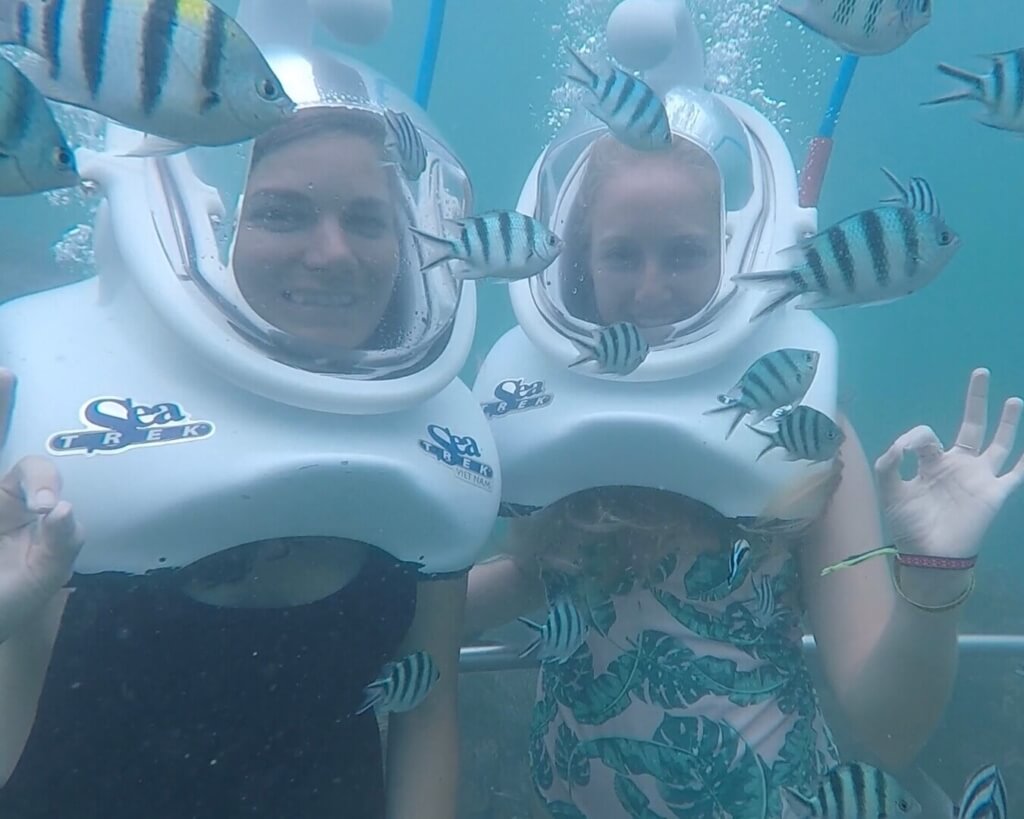
81. Asian food tours are great! Yes, you can go it alone and eat like a king/queen BUT I love taking food tours because you get to try so many things by splitting them with the group, plus the guides always know best. My favourite food tour operator in Asia is A Chef’s Tour . So far I’ve taken their Chiang Mai Northern Food Tour by Truck and their Bangkok Chinatown tour .
What to know before backpacking Asia: country-specific tips
Now I’ve shared my general travel tips for Asia, here are a few country-specific tidbits…
Tips for Vietnam
- 82. Get the sleeper bus all down the coast – since Vietnam is so long and thin, it’s easy to travel without going back on yourself. The journeys are often long but the buses are comfortable with individual beds. Buy a book of tickets in any Hanoi or Saigon travel agents or individually on 12Go .
- 83. Spend enough time in Northern Vietnam – I’d suggest 3 days in Sapa and a 2-night Ha Long Bay trip. Since you’ll need to connect through Hanoi (where I’d also recommend spending 3 days), you’ll want to dedicate at least a week to Northern Vietnam.
Essential reading: 2 week – 1 month Vietnam itinerary | 3 x North Vietnam itineraries | 3 day Hanoi itinerary | Hoi An itinerary | Saigon itinerary
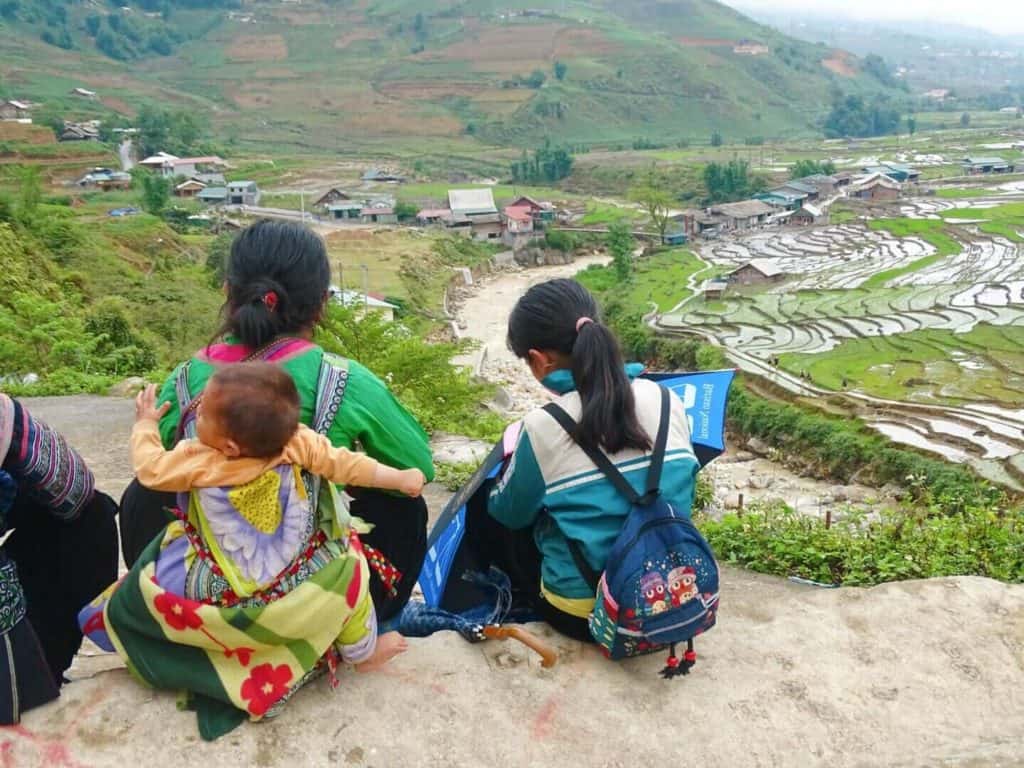
Tips for Thailand
- 84. Time your trip around festivals – Songkran water festival in April is a blast wherever you spend it. Yi Peng and Loy Krathong are lantern festivals held in November in Chiang Mai.
- 85. You can only spend 30 days in Thailand without a visa – consider exploring Bangkok and the north then heading through Laos, Cambodia and Vietnam before returning to Thailand for another 30 days to do the islands justice.
Related reads: Solo travel in Thailand | 2 day Bangkok itinerary | 3 day Chiang Mai itinerary | things to do in Chiang Rai
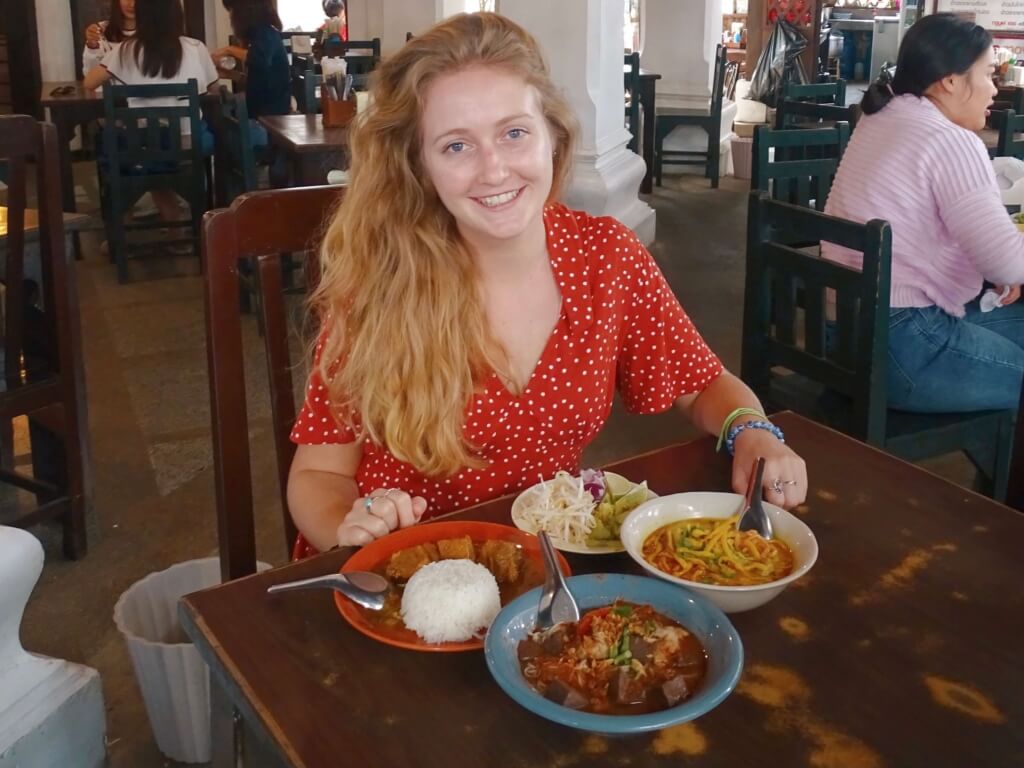
Tips for Cambodia
- 86. Prepare for heartbreak at Phnom Penh’s Tuol Sleng Genocide Museum and the Killing Fields. Although it’s difficult to see and learn about, it’s important to understand Cambodia’s recent history.
- 87. You only use Cambodian Riel for small purchases like local buses. For everything else, use USD. You can withdraw this from Cambodian ATMs.
Tips for Laos
- 88. Don’t stick to the north – Four Thousand Islands in Southern Laos are beautiful and a convenient place to cross into Cambodia.
- 89. The capital isn’t great – there’s not much to do in Vientiane from a tourist perspective although there is good food.
- 90. Visit Vang Vieng for ecotourism – now the dangerous tubing bars have closed, the region is ripe for exploring spectacular nature.
Tips for Myanmar
- 91. Be aware of the political situation – in 2023, it’s not safe to visit Myanmar. I’ll update this section as things develop.
Tips for Indonesia
- 92. Don’t stick to Bali – there are 17,000 islands in Indonesia so it would be a shame to only see one. I spent time on Java Island and want to visit Komodo and Flores.
- 93. Taxi apps are banned in Bali – there’s also no public transport so unless you hire a scooter , you’ll spend a lot of money on (overpriced) government taxis. Full-day private taxi tours with companies like GetYourGuide are often more affordable.
- 94. Get your vegan fix! The cuisine in most Asian countries is heavily meaty; this is your place to indulge in plant-based Balinese food .
Related reads: 2 week Bali itinerary | 3 day Ubud itinerary | Hidden gems in Bali | top places in North Bali
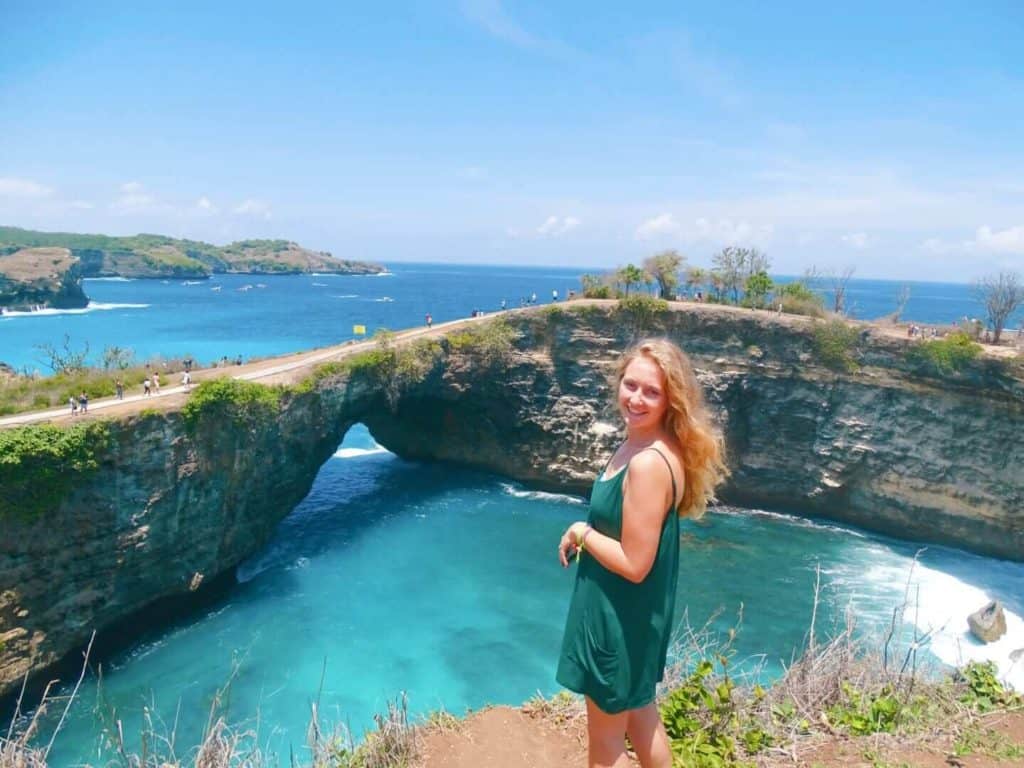
Tips for Malaysia
- 95. Unlike most Asian countries, Malaysia has an efficient train network – or you can take the bus between destinations. When travelling within cities, there are no taxi scooters (only Uber cars) so budget a little extra.
- 96. Penang is food heaven ! Save all your stomach room for a trip to George Town.
- 97. In Kuala Lumpur, stay in Chinatown – there’s great food in KL Chinatown and most of the attractions are nearby.
Related reads: 2 week Malaysia itinerary | How to spend 2 days in Kuala Lumpur | Things to do in Ipoh | Things to do in Melaka | Things to do in Penang
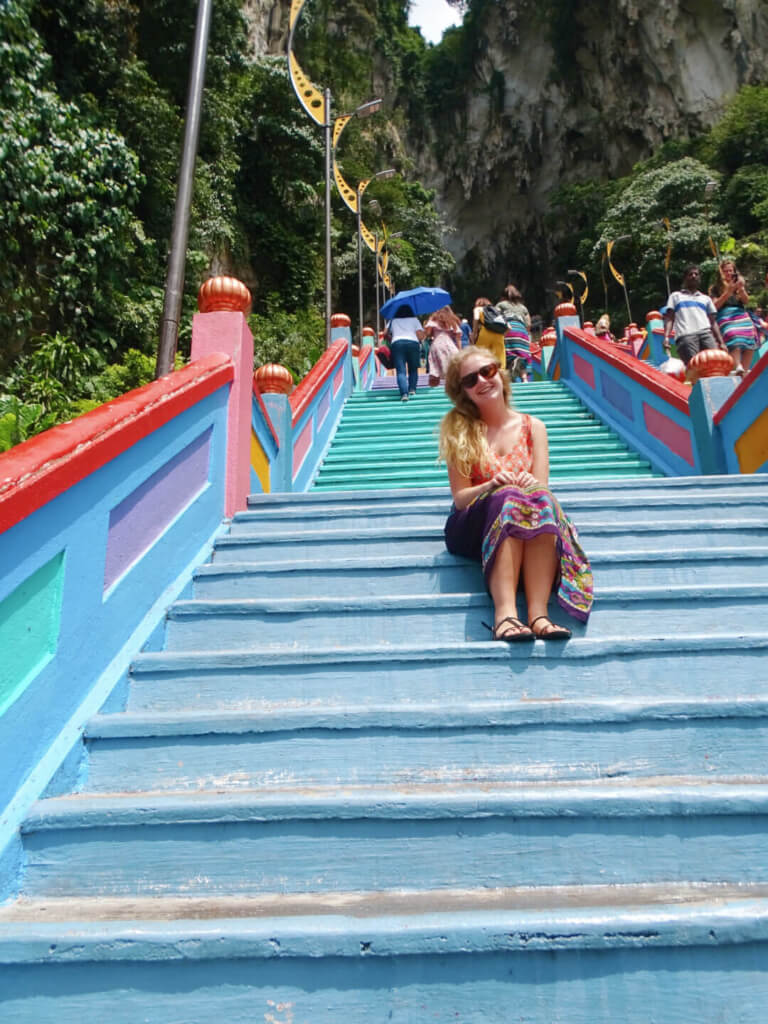
Tips for Singapore
- 98. Singapore CAN be done on a budget – I ate at hawker markets (hardly a problem as the food is delicious!), stayed in hostels and took the Metro. You might want to splash out on the Cloud Forest and a Singapore Sling cocktail, though.
- 99. Check prices before ordering – I got tricked into paying $50 for chilli crab at a street stall because I hadn’t checked the price first. I later learnt this is a common scam: everything else on the menu will be $5 apart from the crab which is ‘priced by weight’. You then get charged a ridiculous figure and can’t argue because you already ate it!
Related reads: 2 day Singapore itinerary | Best Singapore street food guide | Koon Seng Road | Singapore street art
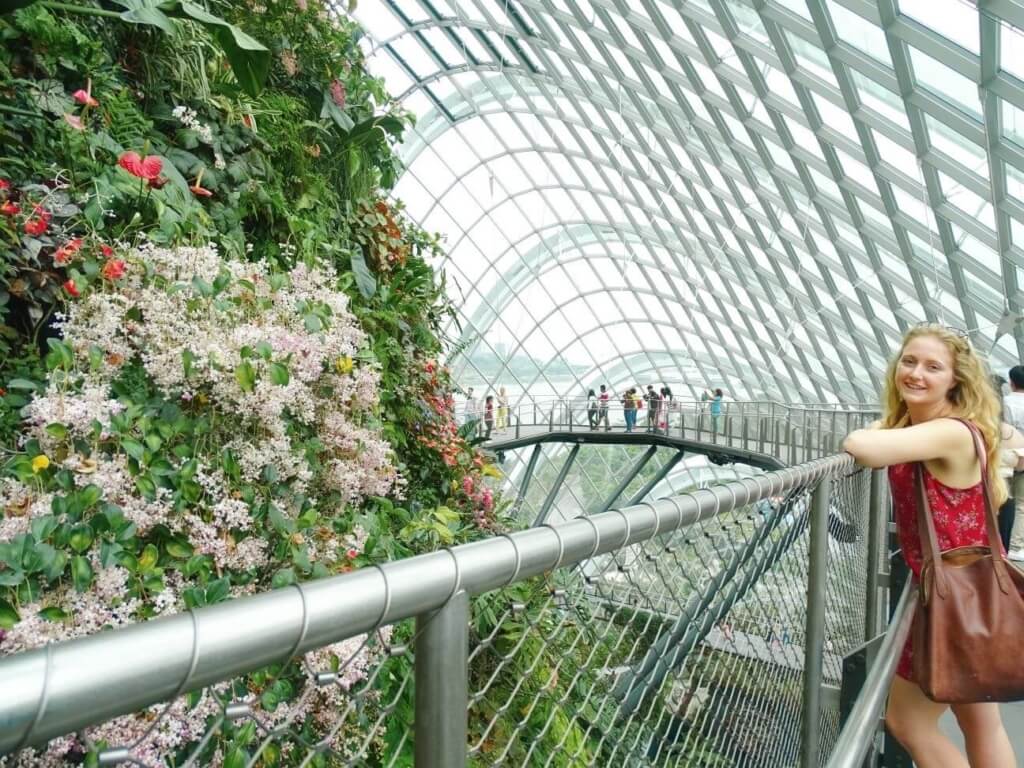
Tips for the Philippines
- 100. Budget time and money for getting between islands – it’s not easy to island-hop by boat. Islands like Palawan and Cebu are a flight apart usually with a stop in Manila.
- 101. Get outta Manila ! This is one of my least favourite cities in Southeast Asia. It’s polluted, not especially safe and the traffic is ridiculous.
Related read: Complete guide to backpacking the Philippines | the best islands to visit in the Philippines
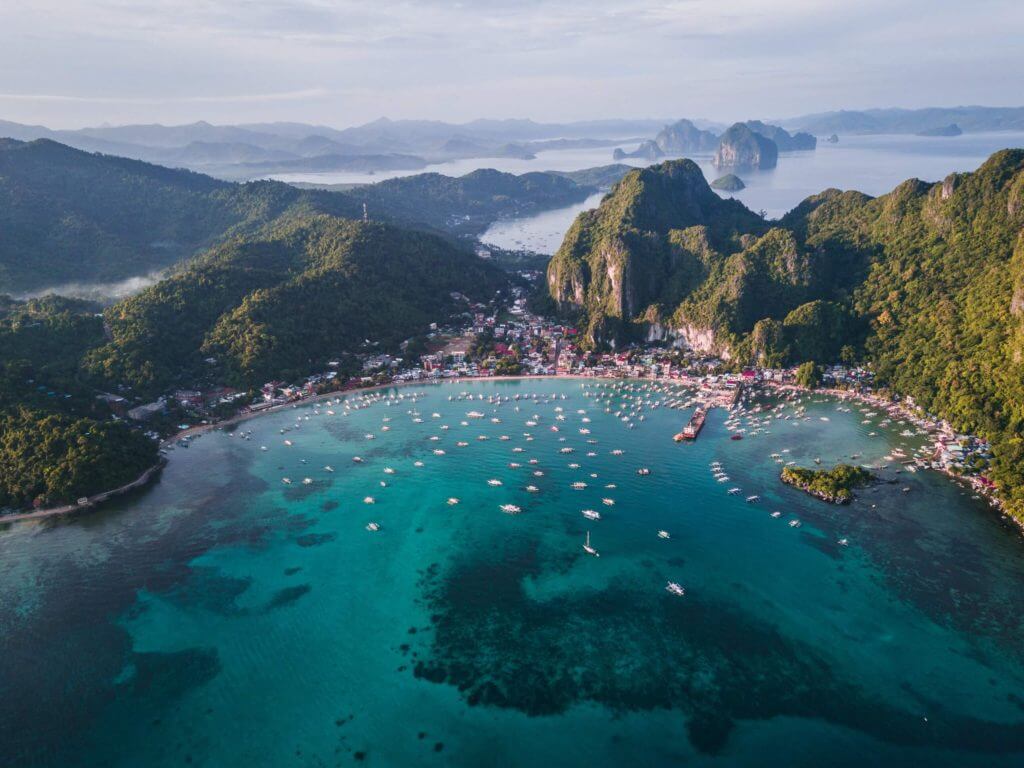
Phew, 101 travel tips for Asia all wrapped up! Did you learn anything new?
Use my Southeast Asia bucket list and my Southeast Asia itinerary & route planner to help plan your adventure.
For more travel content, follow me on Instagram , Facebook , Twitter and YouTube .
Liked these travel tips for Southeast Asia? Pin this for later!
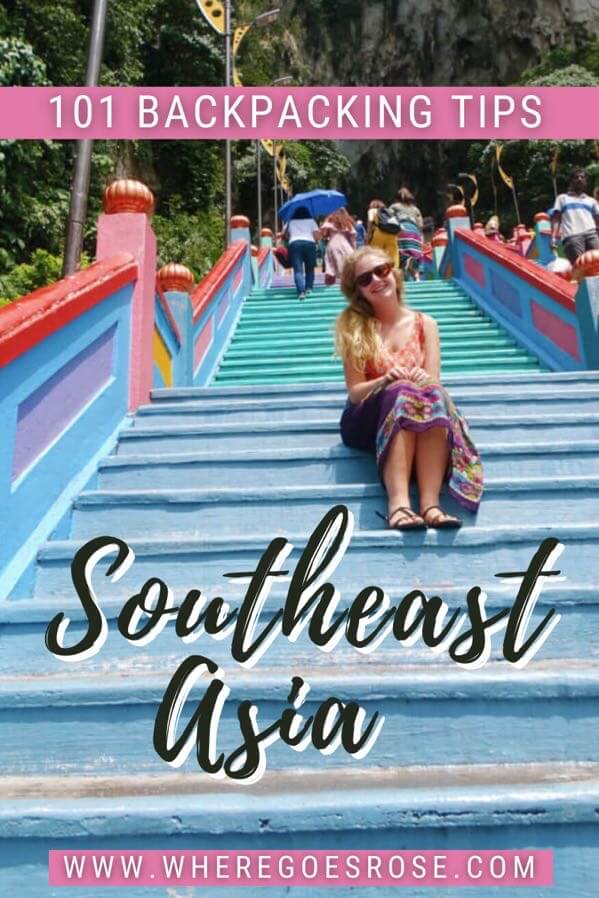
Rose is a solo traveller from the UK who has been on the road since 2015. She wants to show other women that solo travel isn't scary and doesn't have to be expensive! Rose has lived in Mexico, Canada and all over Asia, seeking out food, bubble tea and street art wherever she goes!
Leave a Reply Cancel reply
Your email address will not be published. Required fields are marked *
You can see how this popup was set up in our step-by-step guide: https://wppopupmaker.com/guides/auto-opening-announcement-popups/

How To Solo Travel Southeast Asia
When it comes to solo travel, most people start in Southeast Asia.
Solo travel to Southeast Asia is one of the best ways to break into a solo travel lifestyle because it’s safe, easy to get around, and the people are so friendly.
That being said, it’s true that being a solo female traveler is more challenging than travelling with a group or as a man.
You may face unwanted male attention and are sometimes seen as an easy target for touts in the street.
Some countries in Asia may have different attitudes towards women that you need to be aware of too.
However, the hard experiences will make you stronger as a person and reward you with many unique travel experiences and insights (and lots of funny travel stories too).
If you’re thinking of traveling in Asia as a solo female traveler, below you will find some practical tips on how to travel Southeast Asia solo.
Walk with confidence
Relax when you arrive in a new place, learn the language, let people know where you are at all times, don’t be alone, wear a smile on your face, arrive in new places in the daytime, carry a personal safety alarm, stay in safe accommodation, trust your gut instinct, have an itinerary.
- Join group tours if you're nervous
- Don't drink the tap water
Get a local sim card
Try the street food, check the visa requirements, other safety tips, best places to solo travel in southeast asia, final thoughts on solo travel in southeast asia, pin to save on pinterest:, solo female travel tips for southeast asia.
Despite how safe travel is in South East Asia , it’s always wise to take simple precautions to avoid getting into trouble.
Here are my tips for staying safe on the road as a female solo traveller, picked up from over six-months of full-time solo travel around Asia.
When you are travelling long term, you’ll arrive in new places all of the time.
For the first day or two in a new destination, you are particularly vulnerable to being seen as an easy target.
To avoid this, walk with an air of confidence in new places, even when you just arrive with your backpack on your back.
Stand up straight and if people hassle you pretend that you have somewhere to go. If you are seriously in trouble, walk up to another foreigner and pretend to be friends. 99% of the time they will understand and help you.
When you arrive in a new place, you are vulnerable and most likely stressed due to the swarms of tuk tuk drivers and people trying to escort you to their hotels.
Take a minute to adjust to the new place. Look around and acclimatise, maybe even buy a coffee and have time to adjust.
After a rest, you’ll be more alert and relaxed and be less vulnerable.
Many people have respect for you, when you make an effort to speak their language.
They may also think that you have a local husband so might go out of their way to be friendly and helpful.
Try to learn by downloading podcasts to listen to on long bus rides or by making friends with locals who speak English.
It doesn’t matter how much of the language you know; many people will be so proud and happy to hear you utter ‘Thank you ‘ in their mother tongue.
The more people who recognise you and know where you are going in your hostel, the more likely they are to worry about you if they don’t see you for a while.
I always make friends in the dorm and tell them what I will be doing on that day, hopefully they would spread the alarm if something happens to you and you’re not back at night.
I always try to update my Facebook as much as possible and let people at home know where I am and if I will be in an area with no internet for a while.
This seems like a hard task for a solo traveller, but most incidences of assault happen when the victim is alone. Try to be around other tourists on transport and when sight-seeing in the day.
Try not to walk in a secluded area at night. Women in foreign countries will usually be helpful in times of need if local men are harassing you.
Read : Why you’ll never be lonely when you travel alone
Many people in Asia react very strongly to people who become aggressive.
It’s hard to stay calm, when you have people surrounding you to sell you things.
Have a smile on your face, so people react more kindly to you and just say ‘no’ with a smile on your face and a shake of your head.
Read more : Are you smiling on your travels ?
I always try and avoid arriving in new places at night alone. It makes you more of a target and public transportation options may be limited.
If it’s impossible to arrive in the day, get a reputable taxi to your accommodation or try to travel with other travellers you meet on the way.
You’ll hopefully never need to use it, but carrying a safety alarm, such as a safety whistle, gives you an extra air of confidence and can make you feel safer when travelling solo.
Stay in places that have high ratings on sites, such as Hostelbookers, and those that have a reputation for being safe. If the room does not seem secure, don’t stay there.
Accommodation is plentiful and cheap in South East Asia so you are bound to find somewhere secure easily.
This is the best tip that I could ever give you. Trust your intuition and gut feelings at all times.
If you meet a friendly person on the bus who wants to share a room, but something just doesn’t feel right, don’t share a room.
If you need to get out of a situation just lie and make up an excuse.
The good thing about being a traveller is that you are anonymous, no one knows who you are and you should use that to your full advantage to lie if you need to get out of a bad situation.
When visiting Asian countries, you will find there is so much to see and do, from historic temples to diving trips to beaches and waterfalls.
It’s easy to get caught up and want to do everything.
My top tip for beginners to solo travel is to have a list of the best places to see and prioritize which ones are important to you.
If it’s your first solo trip, then stick to the tourist trail and don’t go off the beaten path.
Join group tours if you’re nervous
Group tours are a great way to ease into solo female travel life.
They allow you to meet people, and who knows, you may even meet some travel friends to travel with after.
They are a great way to get introduced to a country and a way of life.
Don’t drink the tap water
In some places, tap water is safe in SE Asia, but in others it’s really bad.
Wherever you go, play it safe and drink bottled water.
The best way to get connected is to get a local sim card.
You can get many different plans, but sim cards are really cheap and the coverage is good in SE Asia.
You can get a sim card from most 7-Eleven stores, or look for telecom providers in that city and go to a shop.
Don’t get a sim card from the airport, if possible, it’s ridiculously overpriced.
The best option if you have an unlocked phone, is to purchase an eSim . It’s easy, and automatic, and you don’t need to run around the destination trying to find a sim and then understand how it works. Airalo is our preferred esim provider.
Street food in Asia is a way of life. You might think that it’s unclean and you’re going to get sick, but you honestly won’t if you know what to look for.
When trying street food, make sure you follow these tips:
- Make sure the food is piping hot
- Pick a place that has lots of people
- Pick a place where you sit outside on little stools
- Make sure they are cooking on an open fire
- If the chef is an old woman, you know it’s going to be good.
- Look out for flies. If there are a lot of flies over the meat, it’s probably not good.
Check out these places to eat street food in Bangkok
Most countries need a visa for Vietnam and Laos, so make sure you have the documentation and everything you need prepared weeks in advance!
I had to extend my trip in Laos because I had to wait for my Vietnam visa to be approved.
Make sure you have all the documents exactly how they wanted it.
The first time I applied for a Vietnam visa, the photo wasn’t clear enough so they declined it.
The immigration officers are incredibly picky, so save yourself some time and make sure all your application steps are perfect.
Here are some tips that you may have heard many times before. It’s always good to have a recap once in a while though:
- Don’t flash your valuables about
- Try not to walk alone late at night
- Don’t accept drinks from strangers in bars
- Lock your valuables in lockers when you can
- Wear your bag over your body to avoid bag snatchers
- Wear clothes that are appropriate to the country you are visiting
- If you rent a scooter, test the breaks thoroughly. Most bikes in SE Asia are not well maintained.
If you’re not sure where to start your solo travel adventures in Southeast Asia, here are some places I recommend:
- Singapore – it’s expensive, and there’s not much to see and do, but the culture is not too far off what you might find in Europe or the United States, so it’s a great first destination to get used to the climate and fast-paced Asia life without being too culture shocked.
- Siem Reap, Cambodia – this is the gateway to the famous Angkor Wat and is a relaxing, chilled city with friendly locals and a backpacker vibe. Phnom Penh is great for museums and learning about the country’s history, but Siem Reap has a special vibe. Here are things to know before visiting Cambodia .
- Luang Prabang, Laos – this is a small city with a river running through it. Like Siam Reap, it has a small backpacker vibe with a relaxed atmosphere.
- El Nido, Palawan, The Philippine s – you won’t find nature anywhere in the world more stunning. Plus, there are lots of travelers here to meet.
- Kuala Lumpur, Malaysia – it’s a bit like Singapore in the way that it’s quite modernized, so it makes a great first stop for first time solo travelers who might be nervous.
- Bali, Indonesia – you will either love or hate Bali. It’s overrun with tourists nowadays, but it’s still undeniably beautiful. If you want to meet other travelers, you will have to try very hard not to meet people in Bali.
- Taiwan – this is a very safe, very small country that’s really easy to get around. It’s not the cheapest country in SE Asia, but it has a very unique culture and is very easy to feel at home in.
- Chiang Mai, Thailand – this is another popular place in SE Asia to meet people. Northern Thailand has some of the most beautiful nature, and unlike Bangkok, it’s a lot more chill. In fact, Pai is a backpacker’s haven.
- Hoi An, Vietnam – Vietnam can be chaotic, especially in Ho Chi Minh City and Hanoi where scooters drive on any path they find. Hoi An is a lot more chilled and relaxing, but still cheap and pretty. Hue is also a great city for solo female travelers as it has lots to see and do and places to meet people.
- Flores, Indonesia – if you like island life, Flores is for you. It’s laid-back and peaceful, and not quite as overcrowded as Bali. Lombok is also a cool island with volcanoes, hikes and a breathtaking landscape.
There is always a lot of scare mongering whenever people talk about solo traveling, especially as a woman, but don’t let them put you off travelling solo.
It’s one of the greatest things that I have ever done in my life and has changed my personality for the better.
After you have travelled solo you can do anything.
Keep alert and stay safe to ensure that your trip is memorable for the right reasons!
Bio: Pearlsandpassports is a solo female travel blog that will tell you the realities of travelling solo through Asia and Oceania. At 26 Stephanie embarked on the trip of a lifetime after securing a sabbatical from her high stress job. She has one goal: to discover her passion in life. Six months and Eight countries later Stephanie has a wealth of travel stories and advice that will help and inspire new or experienced backpackers. Follow Stephanie on her adventures as she learns about herself and the world around her.
What’s your best tip for solo female travel in South East Asia? Let us know in the comments.
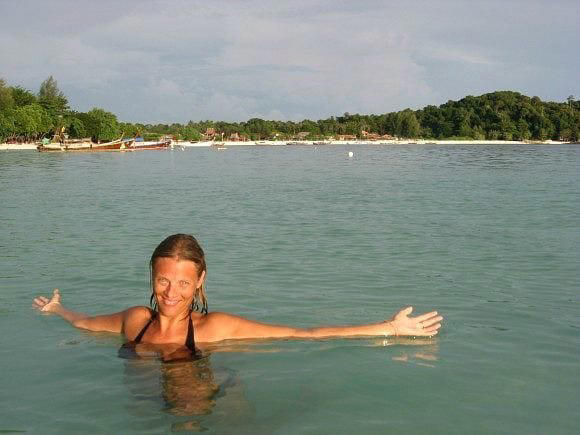

COMMENTS
Southeast Asia is a fascinating part of the world that offers beautiful islands, beaches, lush jungles, unique wildlife, tasty food and intriguing culture. This Southeast Asia travel guide is designed to uncover some of our favorite places and things about this region and help you plan your own trip to this unique part of the world.
Beginner travelers should check out these travel tips and follow this Southeast Asia travel advice when considering a visit to the region for the first time. 1. Pick your countries wisely. While it's tempting to visit many countries and cities on a single trip to Southeast Asia, it's worth taking it slow and digging into the culture of a single ...
Simple guesthouses or bungalows throughout Southeast Asia generally cost $12-20 USD per night for a basic room with a fan (sometimes air conditioning) and hot water. If you want something nicer that includes a more comfortable bed and a TV, expect to pay $25-35 USD per night.
See our detailed information about the Best Time to Visit Southeast Asia and Tips for Traveling in the Monsoon Season. 20. Check Southeast Asia's Travel Visa Requirements. Most Southeast Asian countries allow visa-free entry or a Visa on Arrival for stays ranging from 2 weeks to 3 months for certain nationalities.
Sampling the food and drink in a new country is all part of the travelling experience and one of the best parts of visiting Southeast Asia is to eat the local food. Here's a few tips to keep you safe and avoid the dreaded traveller's belly! 26. Don't drink the tap water.
Most countries in Southeast Asia allow fairly easy visa-free entry, or visa upon arrival, for stays ranging from two weeks to three months. Cambodia, for instance, also allows you to get an e-Visa online that negates the need to visit a Cambodian embassy or consulate. The only fly in the ointment is Vietnam, which requires US passport holders ...
5. Onward Travel 🛬. Check to see if you need proof of onward travel before you arrive at the airport. This is an entry requirement in many countries. 6. Make Sure There's Time (and Space) in Your Passport 🛃. Most countries in Southeast Asia require you to have at least six months validity on your passport.
19. Brush your teeth with clean water. Everyone knows not to drink the water but this Southeast Asia travel tip often gets overlooked because it is second nature to brush your teeth from the sink. Have extra clean water in your bathroom so you are prepped to brush! 20. Check the ice in your drinks.
I was wondering what your thoughts are on whether to travel South East Asia first (3mths) and then Aus/NZ/Fiji (3mths), then South & Central America (4mths), or the other way round i.e. Central America, South America and then Aus/NZ and the South East Asia. Looking at going end of Jan/start of Feb next year for 9-10 months too. Thanks!
Southeast Asia One-Month Itinerary. With one month, you'll be able to take it a little slower, see more places, and get off the beaten path a bit more. You can add another country and leave more flexibility in your itinerary. Days 1-3: Bangkok. Follow the Bangkok itinerary above, and stay for a few more days if you like!
Money Saving Tips for Southeast Asia Travel. Backpacking in Asia can be done on the cheap but you need to know the best Asia travel tips first. 31. Know how to budget - Super boring I know, but I have a detailed Southeast Asia budget guide to help you not go over budget and to know what to expect for each country.
During the peak season, the cost for a private guided tour plus 4-star level hotels and flight connections within Southeast Asia normally ranges from US$200-250 per person per day. Kids under 10 get 30 to 50 percent off. Traveling in a bigger group or during shoulder season usually means less cost.
Private tour from: US$2,959. View More. 15-Day Best of Thailand, Cambodia, and Vietnam Tour. The Best Southeast Asia Tour for First-timers. Private tour from: US$3,439. View More. 19-Day Highlights of Southeast Asia: Thailand, Cambodia, and Vietnam. An In-depth Southeast Asia Tour at An Easy Pace. Private tour from: US$4,679.
What is the best way to travel Southeast Asia? If you ask me, there is no singular 'right way' of doing so. BUT whether you're planning on visiting short or ...
Southeast Asia Packing List: Clothing for WOMEN. 1 pair of black skinny jeans. 1 pair of Columbia zip-off long trekking pants OR Lululemon travel pants. 1 North Face lightweight jacket/fleece. 1 Light Rain jacket. 1 pair of black loose cotton pants. 1 light long-sleeved cotton shirt.
Step 1: Choosing the Best Travel Bag. Step 2: Choosing Your Travel Clothes. Step 3: Packing Other Travel Essentials. Step 4: Choosing What Electronics to Bring. Step 5: Toiletries Packing List. Transport & Accommodation Tips Around Asia. Finding Places to Stay in Southeast Asia. Last Piece of Advice for Southeast Asia:
For many travellers, backpacking Southeast Asia is the ultimate highlight of their backpacking adventures. If you are coming from Western civilisation, exploring these mystical countries is like being catapulted into an alternate reality. Over my travel experiences, I've spent YEARS bouncing around this dazzling area of the world.
By Chris Quan Updated Mar. 5, 2024. With more than a dozen countries in Southeast Asia, 4 weeks/1 month can satisfy your ambitions to travel to many places. Check out recommended plans for your 4 weeks/1 month in Southeast Asia and expert advice. Content Overview. Which Southeast Asia Countries to See in 4 Weeks. Week 1: Myanmar. Week 2: Vietnam.
Among the bad reviews, people say is outdated and it's not giving practical details about the dive sites. Diving in Southeast Asia. A Travel Guide to the Best Sites in Indonesia, Malaysia, the Philippines and Thailand (Periplus Action Guides) $14.25. Buy on Amazon.
7. Ensure you have 6 months left on your passport - this is a rule for travel in general not just Southeast Asia. 8. Carry copies of your vital documents - this is an important tip for Asia travel (and travel generally). I keep a scan of my passport and insurance details close in case of emergency.
If you're looking to go on your first backpacking, or travelling experience this is the place to be, this is your South East Asia guide on the route, budget,...
When it comes to solo travel, most people start in Southeast Asia. Solo travel to Southeast Asia is one of the best ways to break into a solo travel lifestyle because it's safe, easy to get ...
1 likes, 0 comments - southeastasia.ontravelx on August 21, 2023: "Experiencing the rejuvenating mountain breeze at Kalsubai Peak through @1_banjara's perspective ...